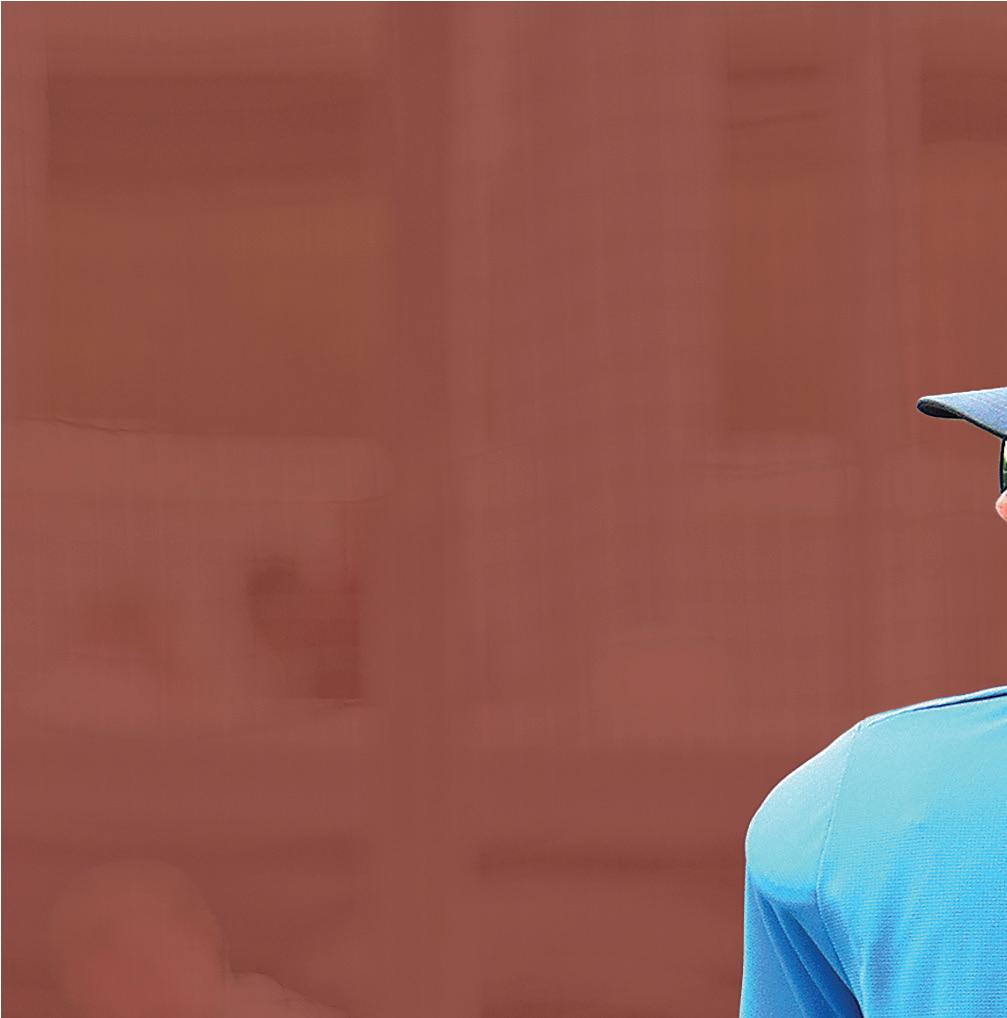



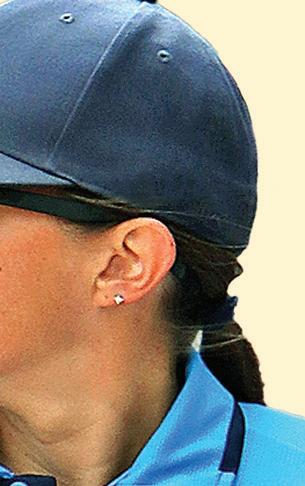


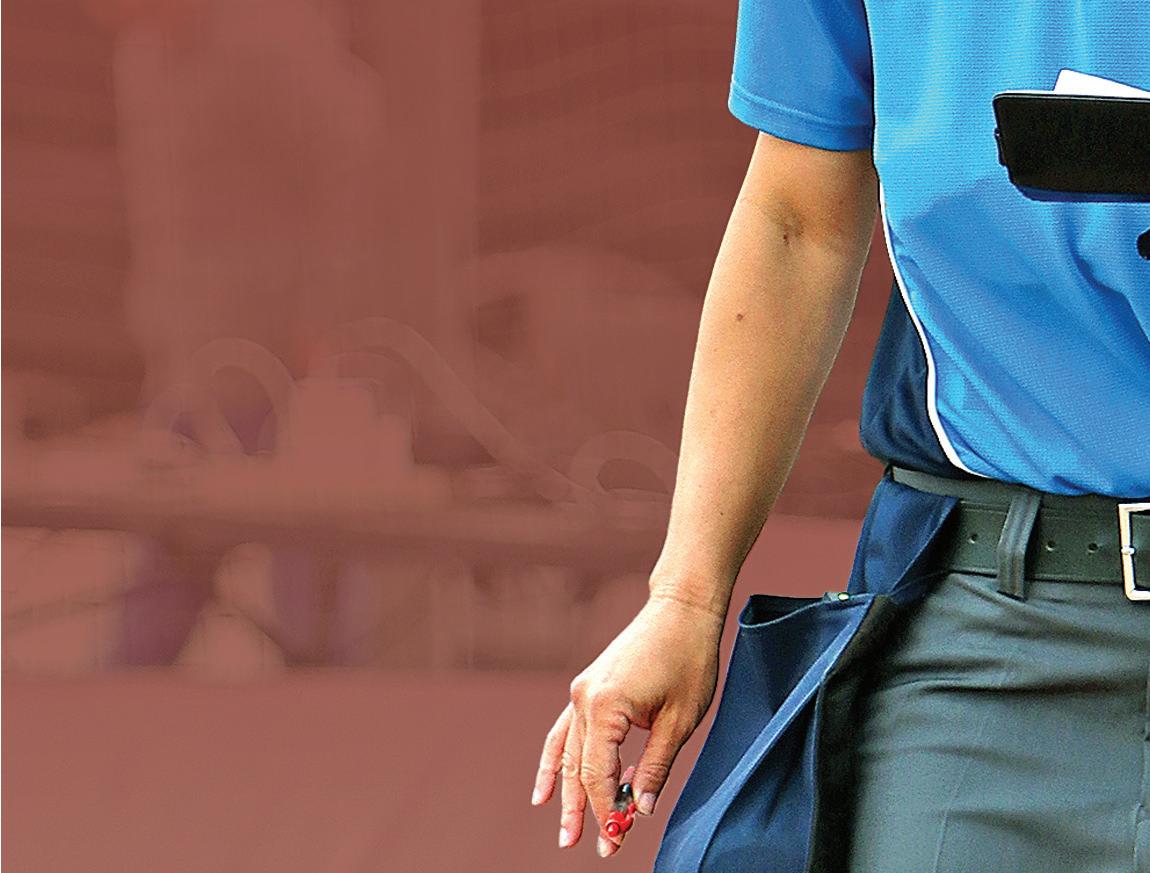





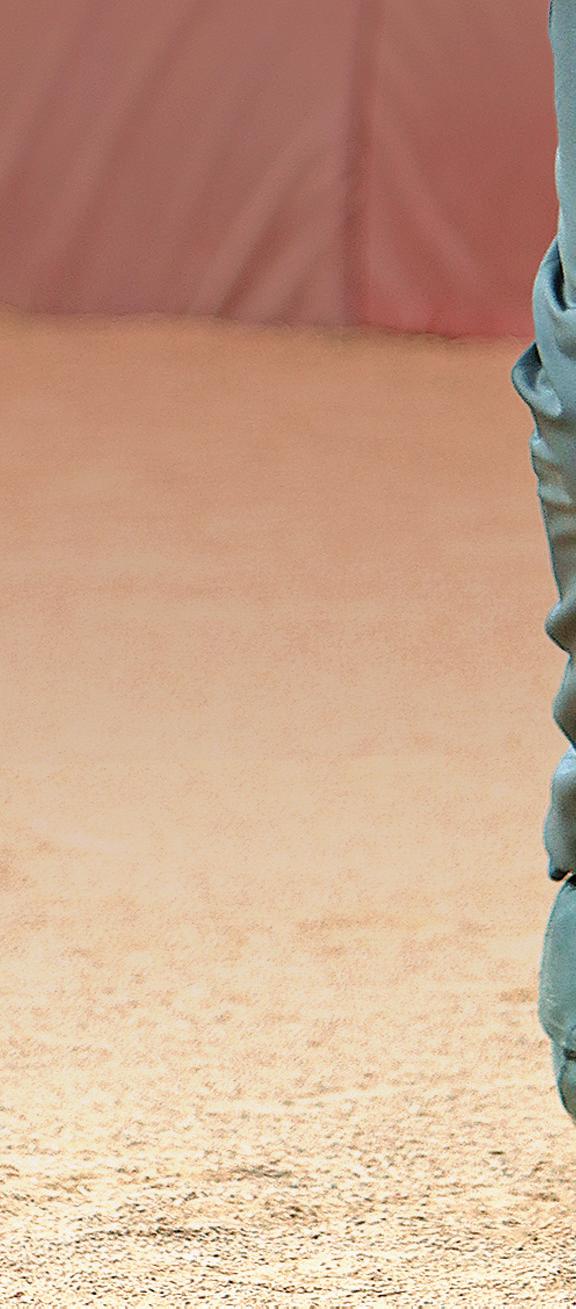



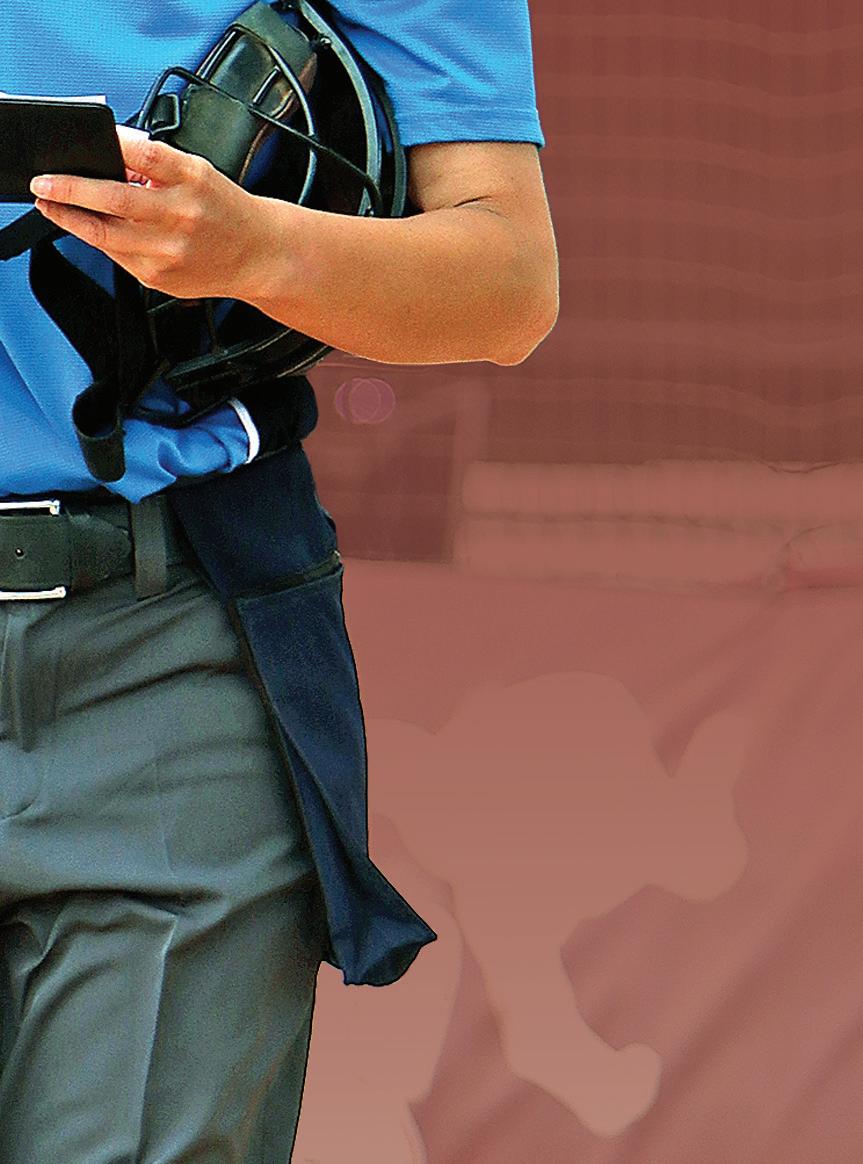






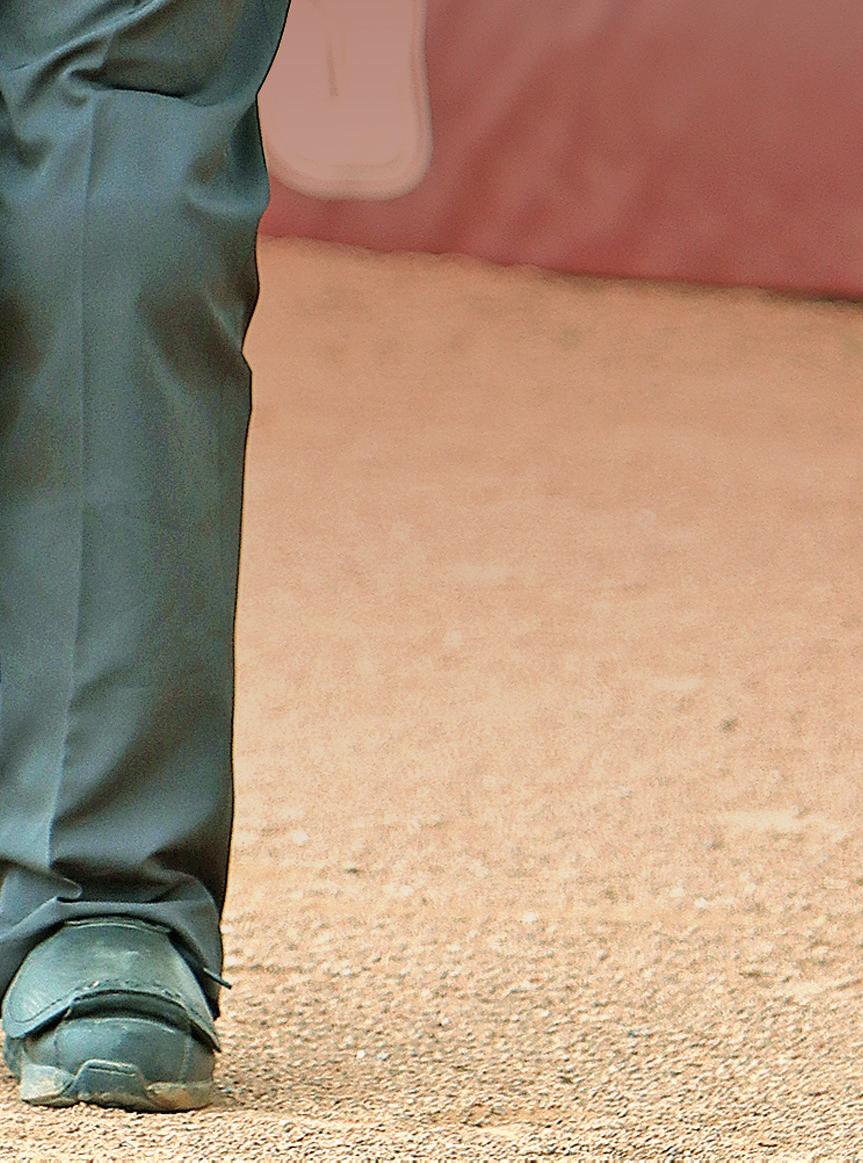


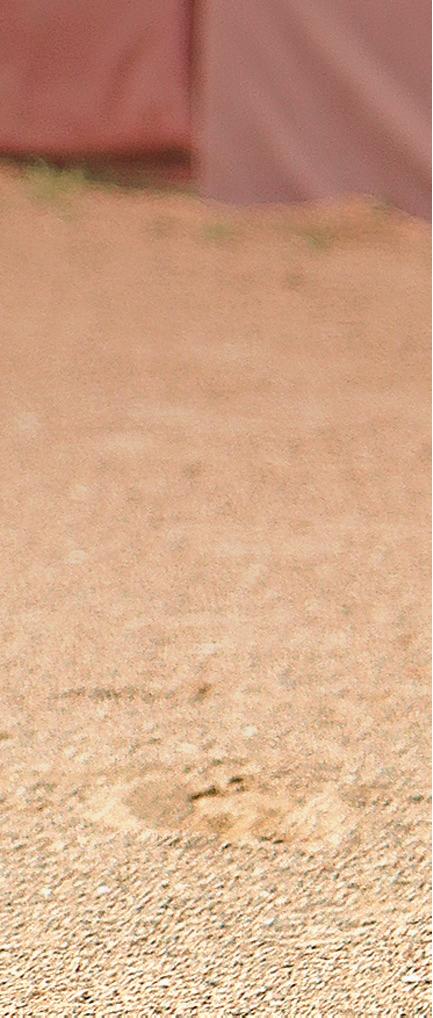
DECISION LOCKER ROOMS FATIGUE WHAT WE NEED your voice since 1976 $6.95 member edition LEGAL SUBS BASKETBALL TIME TO OWN UP ALL SPORTS NFHS NEW RULES SOCCER THE STRIKE ZONE BASEBALL NFHS RULE CHANGES FOOTBALL NFHS POES VOLLEYBALL CREWS THAT CARE IT AIN’T OVER, VANOVER CARD SMARTS SOFTBALL P.38 P.50 P.26 P.78 JUNE 2024 // REFEREE.COM

26 ‘I WAS NOT FINISHED YET’
At 68, Larry Vanover, MLB’s oldest umpire, reflects on a 45-year career in pro baseball.
38 WHEN THE FOG ROLLS IN Officiating long days is inevitable. How can we combat decision fatigue?
50 KEYS TO THE LOCKER ROOM
It’s our No. 2 complaint after pay — but it doesn’t have to be that way.
78 CONNECTING CREWS
Officials come from varying backgrounds but must come together to be a cohesive unit.
ON THE COVER
Arlington, Texas
Age: 34
Occupation: Teacher
Officiating experience:
Softball umpire for 19 years. Works high school, junior college and NCAA D-II and D-III. Umpired the 2022 American Southwest Conference Tournament and 2023 Southern Collegiate Atheletic Conference Tournament.
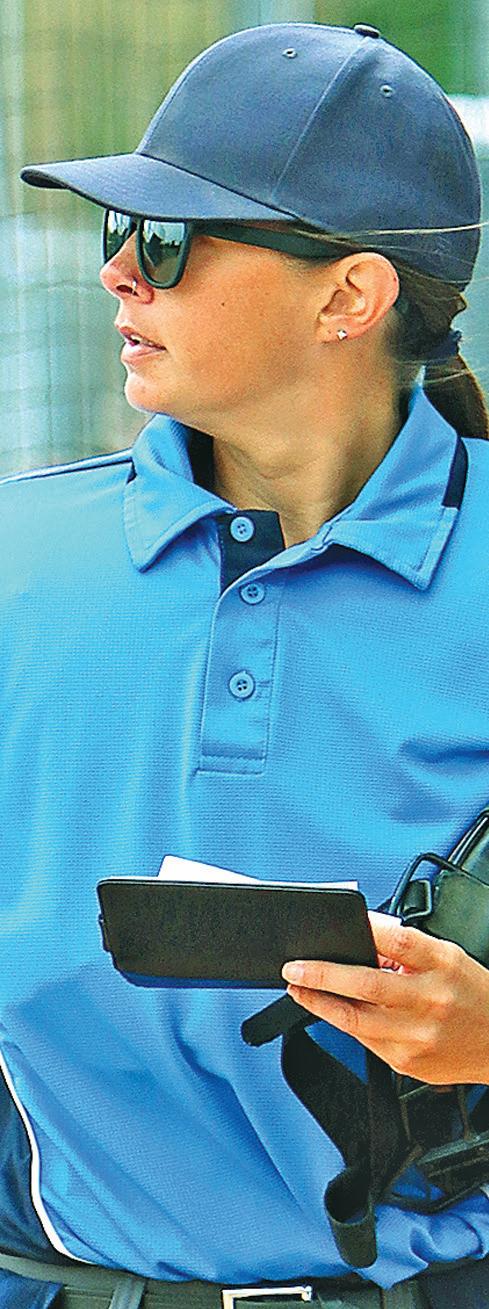
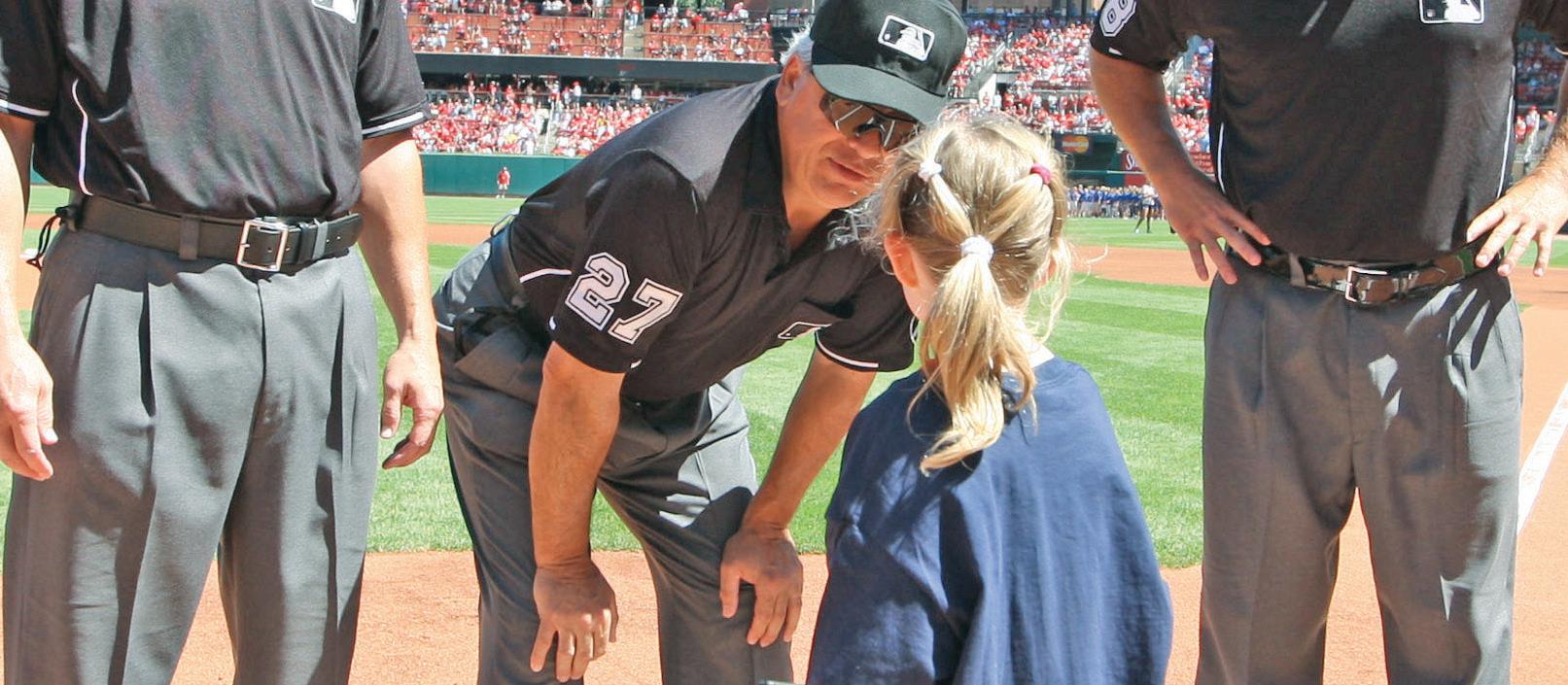
COLUMNS
18 FOOTBALL
Shirt Tales: NFHS Alters Rules Regarding Jersey Colors; Direction Discretion: Who’s Got the Call?; Kick, Muff, Pass: Whose Ball Is It?
32 BASEBALL
Pitch Perfect: Find the Strike Zone That Works Best for You; Equipped to Rule Correctly?; Rule First, Discuss Second
44 BASKETBALL
It’s Your Turn to Play: Don’t Be Subpar With Substitutes; Understand the Job, Do the Job
54 SOFTBALL
Stay on the Right Track: Managing Lineup Cards Effectively; Baserunning Impediments; Leap to It
64 SOCCER
Sock(er) Rule Changes: NFHS Changes Impact Tape on Socks, Rule 12; Deciphering DOGSO; 2024-25 NFHS Points of Emphasis
70 VOLLEYBALL
Double Trouble: NCAA Adopts Major Changes to Ballhandling and Liberos; New Season, New POEs
80 ALL SPORTS
No Take Backs: Admit Mistakes, Prevent Recurrences; Talk With Players Ain’t Always Cheap; Goal to Go: Move Up the Ranks
12 THE GAG RULE
Snap Shot: Heads Up!; Survey Says; They Get It
14 THE NEWS
PSRA Officials Return to Work MLS Games; Thorpe Steps Down; Courts Uphold Hoops Finish in N.J.
62 GETTING IT RIGHT
Elect(ive) to Officiate; Officials vs. Cancer; Hoberg’s Homecoming
76 PROFILES
Ex-College Grid Star Now Officiates Prep Basketball; Teachable Moments; Up and Coming
84 FOR THE RECORD MLB Umpire Roster
86 LAW Bling Ban Breakdown; Jewelry Rules by Sport
87 CLASSIFIEDS Camps/Clinics/Schools; Equipment/Apparel; Leadership Resources; Training Resources
88 LAST CALL
Parental Discretion Advised: “I didn’t talk to that disrespectful fan, and it’s unlikely that he’ll see my advice to relax … but maybe some other parents like him will read this and reconsider their actions at their children’s athletic contests.”
BASEBALL HIGHLIGHT THIS MONTH
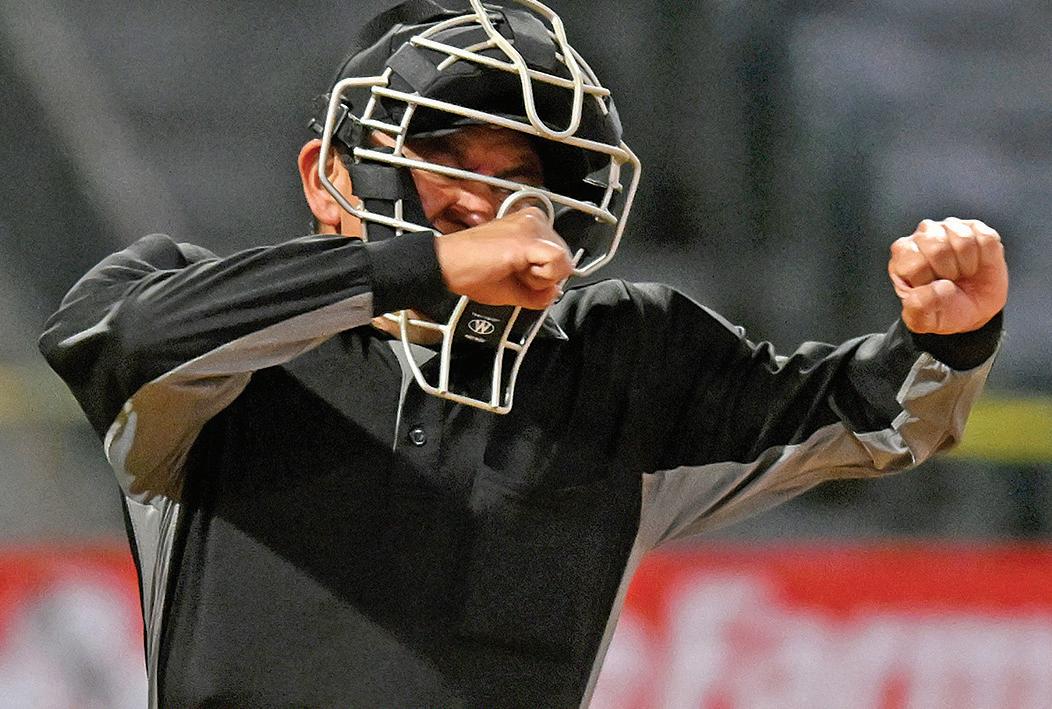
Solid plate umpires such as Martin G. Ramirez,
Calif., know the appropriate strike zone they must call for the level of play they are working and they don’t miss strikes.
FOR MORE, GO TO PAGE 32


Find Referee Magazine on Facebook and follow RefereeMag on X Volume 49, No. 6 Issue 572 JUNE 2024
CONTENTS
FEATURES SPORTS
4 PUBLISHER’S MEMO
Conscience
Your Conflicts, Your
KEITH JOHNSTON (COVER), BILL GREENBLATT/UPI (VANOVER), HESTON QUAN (BASEBALL)
20
Santa Ana,
Amber Miller
PUBLISHER’S MEMO

Your Conflicts, Your Conscience

My daughter has been a practicing attorney in Chicago for 15 years, as has her husband. Having those two in the family might be why I have a copy of Black’s Law Dictionary not far from my keyboard. In the case of this Memo, I consulted it and want to share with you a definition for conflict of interest, the topic of this month’s column.
To quote Black’s, the definition is as follows: A real or seeming incompatibility between one’s private interests and one’s public or fiduciary duties. In the legal world, those few words say it all. For the rest of us, the following helps define the guardrails: (a)A situation in which the concerns or aims of two different parties are incompatible. (b) A situation in which a person is in a position to derive personal benefit from actions or decisions made in their official capacity.
What we as a society expect, or demand, is to have our legal affairs adjudicated impartially. We also expect and demand that same impartiality within the sports world. There has to be “believability in outcome” for fans to remain fans and for competitors and coaches to believe in their undertaking. That believability so very much includes the role we play in organized competitive sports.
We officials must have an innate sense of right and wrong, and of what likely is, or could be construed as, a “conflict of interest.” Your kid goes to a school; you don’t referee that school. You graduated from an institution; you don’t referee that institution. Your significant other is a fundraiser for a school; you don’t referee in games that involve that school. You have been given a recognition by an institution; you don’t referee that institution. You are involved in a business that services an athletic department; you don’t referee for that department’s school.
Today, with the widespread use of online registrations for conferences
and leagues, officials are asked a series of questions that have a bearing on a potential conflict of interest. To wit: List those institutions you or any family member ever attended, graduated from (any degree) or have a continuing relationship with; list those institutions you are an employee for, or have been an employee for; list any relationship, business or social, that could cause a reasonable person to infer a team or school could benefit from your relationship with it.
Yes, the standard is wide and the guardrails for us, narrow. Such requires FULL AND COMPLETE DISCLOSURE when filling out those forms. That is how it must be because when we bust through those guardrails, our industry suffers greatly. I am so thankful that within officiating history there have been so very few such incidents. When they occur, it takes decades for them to recede from the public’s memory. That public likes to think we have favorites!
OK, but what about those times when such in-depth registrations don’t take place? What about those times when many years have passed since you had a relationship with the school down the road? What about the situations when you get pressed into service because an official has to be found? Yes, there are gray areas to be considered, especially at the high school, youth and club levels. Yet the key determinant has to be what your conscience says to you.
If you have angst about whether you should accept an assignment, slow down. Ask yourself this: Would public awareness about my situation, my context, feed a perception that I can’t be fully impartial in that game? If the reasonable answer is yes, the decision is easy. Walk away from it. Err on the side of impartiality. When in doubt, rule it out.



Chief Strategy Officer/Publisher
Barry Mano
Chief Operating Officer/Executive Editor
Bill Topp
Chief Marketing Officer
Jim Arehart
Chief Business Development Officer
Ken Koester
Editor
Brent Killackey
Assistant Managing Editor
Julie Sternberg
Senior Editor
Jeffrey Stern
Associate Editors
Joe Jarosz
Brad Tittrington
Scott Tittrington
Assistant Editor
Brad Star
Copy Editor
Jean Mano
Director of Design, Digital Media and Branding
Ross Bray
Publication Design Manager
Matt Bowen
Graphic Designer
Dustin Brown
Video Coordinator
Mike Dougherty
Comptroller
Marylou Clayton
Data Analyst/Fulfillment Manager
Judy Ball
Director of Administration and Sales Support
Cory Ludwin
Office Administrator
Garrett Randall
Client Services Support Specialists
Lisa Burchell
Trina Cotton
Noelle Vaillancourt
Editorial Contributors
Jon Bible, Mark Bradley, George Demetriou, Alan Goldberger, Judson Howard, Peter Jackel, Dan Ronan, Tim Sloan, Steven L. Tietz, Rick Woelfel
These organizations offer ongoing assistance to Referee: Collegiate Commissioners Association, MLB, MLS, NBA, NCAA, NFHS, NISOA, NFL, NHL, Minor League Baseball Umpire Development and U.S. Soccer. Their input is appreciated.
Contributing Photographers
Ralph Echtinaw, Dale Garvey, Carin Goodall-Gosnell, Bill Greenblatt, Jann Hendry, Keith Johnston, Jack Kapenstein, Ken Kassens, Bob Messina, Bill Nichols, Ted Oppegard, Heston Quan, Dean Reid, VIP
Editorial Board
Mark Baltz, Jeff Cluff, Ben Glass, Mike Graf, Reggie Greenwood, John O’Neill, George Toliver, Ellen Townsend
Advertising 2017 Lathrop Ave., Racine, WI 53405 Phone: 262-632-8855
advertising@referee.com
REFEREE (ISSN 0733+1436) is published monthly, $49.95 per year in U.S., $84.95 in Canada, Mexico and foreign countries, by Referee Enterprises, Inc., 2017 Lathrop Ave., Racine, WI 53405. Periodical postage paid at Racine, WI and at additional mailing offices. Postmaster: Send address changes and undeliverables to REFEREE, PO Box 319 Congers, NY 10920. Direct subscription inquiries, other mail to REFEREE, PO Box 319 Congers, NY 10920. 1-800-733-6100. © 2024 Referee Enterprises, Inc. All rights reserved. (USPS Publication #107790.) Subscribers: Send address changes to REFEREE, PO Box 319 Congers, NY 10920.
referee.com/pubmemo 4 | REFEREE June 2024
Watch the video at




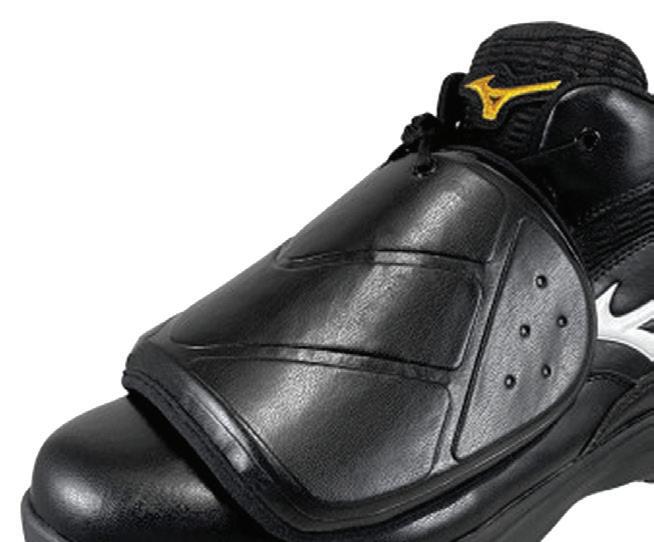





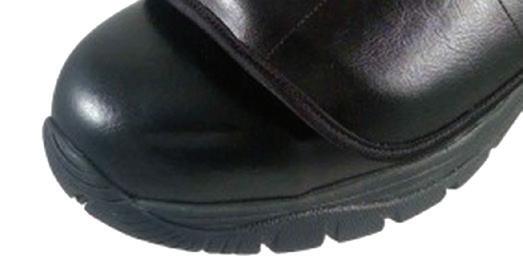


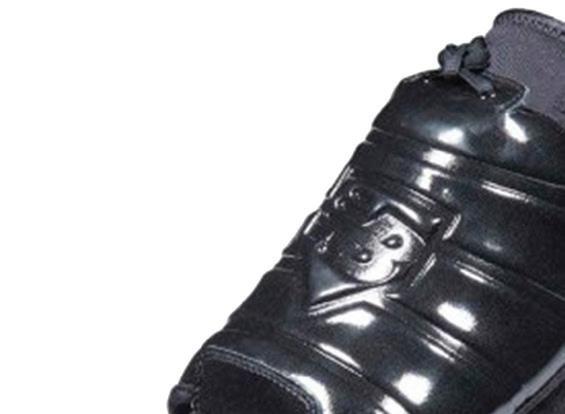






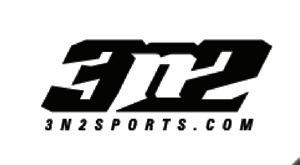
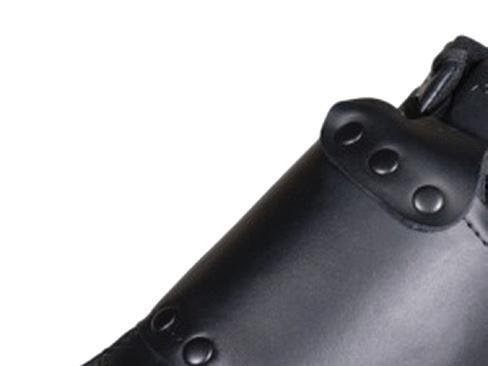





Now with 4 Brands in the Plate Shoe Lineup Find the Largest Selection, Sizes & Stock! Mizuno Pro Wave Mid-Cuts Smitty Mid-Cuts New Balance V3 Mid-Cuts (2 Color Options) 3n2 Reaction Pro Low-Cuts (3 Style Options) Find the Largest Selection, Sizes & Stock Here!

Cheers and Applause
Pioneering Competitive Cheer Official Cox Receives MHSAA Norris Award
Aregistered contest official since the Michigan High School Athletic Association introduced competitive cheer with the 1993-94 school year, Quincy’s Candace Cox has played one of the leading roles in building the sport that’s averaged more than 5,500 participants annually over its 31-year history.
She will be celebrated April 27 as the 2024 Vern L. Norris Leadership in Officiating Award honoree during the MHSAA’s Officials Awards & Alumni Banquet, where she and several of her competitive cheer colleagues who began as registered officials that inaugural season also will be recognized for completing their 30th years of service in 2022-23.
The Norris Award is presented annually to a veteran official who
has been active in a local officials association, has mentored other officials, and has been involved in officials’ education. It is named for Vern L. Norris, who served as executive director of the MHSAA from 1978-86 and was well-respected by officials on the state and national levels. He initiated the officials banquet in 1980, and this year’s will be the first in-person celebration since 2019. Cox will be honored along with high school game officials with 20, 30, 40, 45 and 50 years of service.
Competitive cheer is unique to Michigan. While several states have spirit or cheer as a sport, the MHSAA format – which includes teams showcasing a variety of skills over three rounds and encourages full teams to participate by scoring higher
when more athletes are on the floor –was created in part to provide more opportunities for cheerleaders to compete. Cox brought her knowledge and experience in sideline cheer into the initial development of the competitive format.
She officiated a regional competition during that first season of competitive cheer in 1993-94, and the following season she began in a string of officiating at the last 30 MHSAA Finals, including in Division 1 this past winter. Cox also is in her 11th year as executive director of the Michigan Cheer Judges Association, the statewide leadership and training organization for the sport and in that role she has trained thousands of officials – the MCJA instructs about 175 annually.
6 | REFEREE / MHSAA June 2024
Candy Cox is presented the 2024 Norris Award by Mark Uyl, MHSAA Executive Director and Sam Davis, MHSAA Director of Officials Services.
She will be the first competitive cheer official to be recognized with the Norris Award.
“At the very beginning, we didn’t know what (competitive cheer) was going to involve, and there was a lot of work put in, a lot of committees, sharing a lot of information from sideline because Michigan is so unique to cheer,” Cox said. “At the very beginning, I never believed we would advance as much as we have. But I really feel we’re a leader in the competitive cheer community.
“My favorite thing is helping educate and be involved, and I do it for the kids. I want them to have a positive experience, and I want them to learn, and I also want to educate other officials so they realize what an important sport this is … another sport for girls to compete in.”
Cox cheered while a student at Coldwater High School and became the sideline cheer coach after she returned from college. It was during that time she was approached by Marilyn Bowker, another of the founding trailblazers in the sport, and from then on Cox became a growing presence as competitive cheer continued to develop and thrive.
She has served on the MHSAA’s Competitive Cheer Committee and Judges Selection Committee, and is an MHSAA registered assigner in the sport. Cox was named MCJA Official of the Year in 1999 and Michigan’s top official in cheer by the National Federation of State High School Associations (NFHS) in 2000.
“She’s been a pioneer since Day 1 in competitive cheer and is considered literally one of the fundamental pillars who have grown and promoted the sport over the years,” MHSAA Executive Director Mark Uyl said. “Candy is a very worthy Norris Award winner.”
Cox is the clinic manager at the Branch-Hillsdale-St. Joseph Community Health Agency and provides expertise from her professional field as part of the MHSAA’s Sports Medicine Advisory Committee. A 1973 Coldwater High School graduate, she earned an associate’s degree in medical administration from Barton Bryman School in Phoenix in 1979 and
is certified as an HIV counselor by the State of Michigan, and BLS (basic life support), CPR/AED and first aid instructor by the American Heart Association.
She has served her community of Girard Township in several roles, including currently as township supervisor after previously holding office as trustee and contributing on multiple boards and commissions. She’s also served as Branch County
jury board chairperson and was named Branch County Citizen of the Year in 2011 by the Coldwater Area Chamber of Commerce.
Cox is a member of the Coldwater Early Bird Exchange Club and has served as president of the Bronson Polish Festival. She is active in service projects for St. Charles Borromeo Parish and judged CPR for local, district and regional Future Health Professionals (HOSA) competitions.
Norris Award Award Recipients
In chronological order, here are the previous Norris Award recipients:
1992: Ted Wilson, East Detroit
1993: Fred Briggs, Burton
1994: Joe Brodie, Flat Rock
1995: Jim Massar, Flint
1996: Jim Lamoreaux, St. Ignace
1997: Ken Myllyla, Escanaba
1998: Blake Hagman, Kalamazoo
1999: Richard Kalahar, Jackson
2000: Barb Beckett, Traverse City; Karl Newingham, Bay City
2001: Herb Lipschultz, Kalamazoo
2002: Robert Scholie, Hancock
2003: Ron Nagy, Hazel Par
2004: Carl Van Heck, Grand Rapids
2005: Bruce Moss, Alma
2006: Jeanne Skinner, Grand Rapids
2007: Terry Wakeley, Grayling
2008: Will Lynch, Honor
2009: James Danhoff, Richland
2010: John Juday Sr., Petoskey
2011: Robert Williams, Redford
2012: Lyle Berry, Rockford
2013: Tom Minter, Okemos
2014: Hugh R. Jewell, West Bloomfield
2015: Sam Davis, Lansing
2016: Linda Hoover, Marshall
2017: Michael Gentry, Shelby Township
2018: Jill Baker-Cooley, Big Rapids
2019: David Buck, St. Joseph
2020: Hugh Matson, Saginaw
2021: Lewis Clingman, Grand Rapids
2022: Pat Hayes, Birmingham
2023: Chuck D. Walters, Jackson
REFEREE / MHSAA June 2024 | 7
Are You Good or Great?
Qualities That Separate the OK From the Superior Officials
What attributes separate good officials from average officials? That question has been posed often over the years. While there does not seem to be a definitive answer, here are some of the qualities each of them shares.
Good officials know the rules. Great ones understand the intent of the rules and concentrate on applying them with that in mind. They do not run around like walking rulebooks, looking for hypertechnical infractions to call. Instead, they have a great feel for the game and call what matters. They know it is worse to call a foul that is not there (a “phantom” call) than to miss one that is. When they make a call, they make it big, and before blowing the whistle or making the call, they work through a mental process: “I think it is a foul, I am sure it is a foul, I know it is a foul.”
Good officials hustle. Great officials know they can hustle themselves right out of the play. A back judge does not need to race in and jam his nose in the ball carrier’s face when he is downed 25 yards downfield. Umpires do not have to be so close to a play they could become entangled with a runner or fielder. Basketball officials have
to keep distance in order to judge if the defender is in legal guarding position or the dribbler charged into the opponent. In those cases, officials get tunnel vision and do not see what happens right around them, or they take their eyes off the play too quickly.
Great officials understand the concept of cruise control. They know if they move smoothly and rhythmically, but deliberately, and keep the same tempo throughout the game, they will see and digest more of what happens. Moreover, they send the message it is not their first rodeo and they know what they are doing — demonstrating confidence, not cockiness.
Good officials know the basic mechanics of their position, including which players they are responsible for watching. Though it may not be their responsibility, they monitor the clock (in those sports where one is used) to be sure it stops and starts when it should. They pay attention when penalties are enforced or bases are awarded even if they are not involved, so they can bail out the crew if someone has a vaporlock.
Great officials know that personality, being positive and having a sense of humor can go a

long way with coaches, players and crewmates. You have to be careful with humor; too much, the wrong comment at the wrong time or the wrong delivery can turn a bad situation into a disaster. But there is no reason you cannot be pleasant until circumstances force you to put on a more serious face. Squabbling with your crew in the pregame or during the game will have a negative effect on your in-game performance.
Great officials keep themselves in top physical shape. That is not only because it helps them keep up with the players, be where they need to be and stay focused for however long the game lasts, but also because they realize the importance of presentation. It has often been said perception is as or more important than reality. If an official is in good physical shape and is well groomed, fans, coaches and players will be more inclined to give the benefit of the doubt.
Great officials have terrific communication skills. An underappreciated quality is the ability to not only listen to coaches, but making them think you are doing so. Ultimately, they want to be heard, and one of the best things we can do is keep our mouths shut and let coaches get whatever it is off their chest. When we come back with, “Now what I hear you saying is …” or, “I understand where you are coming from …” and then explain how we ruled, we are more likely to get our point across and be perceived positively than if we are agitated, the first to talk and must have the last word.
Sometimes, of course, coaches can get out of control, and then we have to just walk away. But in general it is best
Personality, being positive and enjoying the moment can go a long way with players and coaches to bring positivity to the game. Lowell Winne Jr., Fennville, enjoys the moment during the 2024 MHSAA girls basketball finals.
8 | REFEREE / MHSAA June 2024
to keep calm, be approachable, listen and establish a dialogue. Along that line, talk to players when their actions border on fouls, because preventive officiating is a good thing.
Great officials understand the importance of a thorough pregame. That is important in terms of crew coordination and preparing everyone to do their jobs well. Do not talk
about once-in-a-lifetime situations, but discuss the teams, their styles of play, new rules or interpretations and other aspects that are more likely to challenge you.
Great officials are great dead-ball officials. Players — even those who are not around the ball — commit fouls. Keep an eye on them even when the play is seemingly over.
Know Before You Go
The person who came up with the saying, “What you do not know cannot hurt you,” clearly did not have officials in mind. It can, and it will. The more you know the better things will go.
In other words, you cannot go wrong by preparing for your game. In fact, there are several things you need to know before you even arrive at the game site.
1. Know how to officiate the level you are working. Yes, you need to know the rules and mechanics before you arrive at the game site. That is courtesy of Captain Obvious. Although a few of you may need to be hit over the head with that reminder sometimes.
Do not rely on your partners to fill in the gaps of your rules knowledge. Challenge yourself to be the go-to person on the court or field in tricky situations.
Trouble can come for officials who are working multiple games and levels at times as well.
You need to keep your mind on high school rules when working a high school game. Your pregame will help you keep the right mind-set, but you should be thinking about the level of action before you arrive.
And if you can, review video of your previous games or attend an association meeting that covers scenarios or situations.
2. Know whether you are going to have a game and when. Have you ever driven a long time through traffic only to arrive at a game and then found out it was cancelled? What did you do? Blame the school? Complain to your assigner? Well, there is plenty of blame to go around and you are not without guilt. It does not take very long to call the school earlier in the
day to confirm the assignment and the game time. Schools make changes to a game time due to special occasions or scheduling mix-ups.
3. Know where you are going. Now you have confirmed the game is still on despite the sketchy weather and you know it starts at 7 p.m. Make sure you know how to get there and how long it will take, so you will arrive well in advance of your game.
4. Know who your partner or partners will be. In some areas and sports, officials work with the same crews or same partners for their games. But that is often not the case. If your partners are different depending on the game, find out through your assignment, assigner or host school with whom you will be officiating. It’s a good idea to contact your partners to verify the assignment, arrival time and responsibilities.
When you know the individual or individuals you will be working with, you should prepare yourself for the best way to officiate the game with the partner(s). For example, if you are working with a rookie official, plan to mentor whenever possible during breaks in action and before and after the game. Knowing in advance some of the things you want to look for or discuss can help you make the game successful for you and your newer partner. If you do not get along with a particular official that you were assigned to work with, coach yourself in advance of arrival how to remain patient and professional throughout. Sometimes you can also learn about individuals you have never worked with by asking other officials.
5. Know you are going to have a pregame and postgame meeting. Know in your mind before you arrive that you are going to have a proper
Great officials have guts. If they know something needs to be called, they call it. They do not worry about how it will look when the game film gets graded. If they are newer officials, they do not abdicate their responsibilities because they are surrounded by veterans or are awed by their new surroundings. They do their job, taking care of business.
pregame. Prepare for it. Identify some of the keys you will discuss.
A lot of officials seem to understand the need for a pregame, but then hurry off quickly after a game. Without a postgame, your assignment is not complete. You are throwing away a perfect time to learn from your mistakes when the game is freshest in your mind. The setting does not matter. If you drove to the game with your partners, the postgame can be in the car on the way home. Or everyone can meet at a restaurant afterward. If you do not have time for a food stop, stay in the locker room for a while and discuss the game. Go through key game-time situations.
6. Know which teams are playing (and what that might mean). The philosophy of starting the game with a clean slate does not mean, “Strive for complete ignorance regarding the two teams.” It is important to know which teams you will be officiating and to prepare ahead of time for that specific match-up.
If you have seen the teams before, you can count on your past experiences. If you do not know anything about a team, ask fellow officials what you can expect.
You are looking for information about styles of play, any different types of plays a team runs, records, whether or not the teams are rivals or have had a recent match-up with some confrontations.
If you are working a game with a coach you ejected a couple weeks ago, you should know that. It will help you remain calm and prepare for any possible actions from the coach.
That is a lot to know before you show up for your next game. If you are not prepared, start now.
REFEREE / MHSAA June 2024 | 9
Experience Matters. MHSAA Officials Recognized for Service
MHSAA game officials with 20, 30, 40, 45 and 50 years of service also were honored at the Officials Awards & Alumni Banquet on April 27. Twenty-four officials with 50 or more years of service were honored, along with 36 officials with 45 years and 51 officials with 40 years of service. A 30-year award was presented to 110 officials, and 176 officials with 20 years of experience will be honored. The MHSAA is incredibly proud and appreciative of these officials for their continued efforts, involvement, experience and participation within MHSAA interscholastic events.
20-YEAR OFFICIALS
Marc Andrzejak, Pickford
Steven Babbitt, Blissfield
Phillip Baker, Portage
Gregg Becker, Perrysburg, Ohio
Ilya Beltser, West Bloomfield
Douglas Bohannon, Grosse Pointe Woods
Tracy Boyers, Jackson
Scott Bradley, Haslett
Kimberly Broski, Harrison Township
Jeffrey Brunner, Traverse City
Jerry Burgess, Constantine
Michael Burgess, Clarksville
Mark Carney, Clinton Township
Brian Case, Bronson
Oscar Castaneda, Lansing
Wanda Clayton, Pontiac
David Clement, Grand Blanc
Kevin Cleveland, Detroit
Thomas Coatoam, Midland
Glenn Craze, Troy
Joseph Crowder, Manistique
Steve Crowley, Lansing
Marc Davis, Grand Rapids
Josh Dean, Grand Blanc
Nathan DeMaso, Schoolcraft
Jayson Dibble, Holland
Ken Dietz, South Haven
Doug Doyle, Northville
Gregory Drewno, Riverview
James Dyer, Marshall
Richard Dylewski Jr.,
Bloomfield Twp.
Cozette Ealy, Detroit
Eric Earl, Marshall
Clyde English, Bannister
Troy Fairbanks, Jackson
Mike Faunce, Temperance
Robert Fay, Chassell
Robert Foss, Commerce Township
Jill Fuller, Harbor Beach
Kevin Gardner, Bronson
Daniel Garrison, Jackson
Jeffrey Garvin, Milford
Timothy Gildner, Grand Rapids
Brian Gorman, Grand Ledge
Cory Gowen, Niles
Patrick Grady, Troy
Steven Gray, Memphis
Cedric Green, Detroit
Cuba Gregory III, Wixom
Howard Hanft, West Branch
Jill Hargrove, Milan
Grant Harris, Cottrellville
Terry Harris, Lansing
Kelli Hart, Williamston
Dan Heasley, Dorr
Brian Hill, Trenton
Andrew Hoard, Holt
April Holman, Ionia
Kevin Holmberg, Fremont
Randy Hood, Gobles
Nick Horn, Freeland
Robert Hornik, Sterling Heights
Alan Huntress, Midland
Michael Jager, Estero
Douglas Jones, Midland
George Jones, Brimley
Gerald Jones, Lathrup Village
Reid Jones, Schoolcraft
Larry Jordan III, Michigan City
Keith Justice Sr., Clinton
Township
Don Kalpin, Macomb
Mark Kellogg, DeWitt
Chad Kelly, St. Clair Shores
Alfred Kennedy, Jenison
Casey Kern, Haslett
Aaron Keup, Reed City
Lloyd Kilgore Sr., Grand Rapids
Glenn Kimmerly, Niles
Jeff Kirkman, Portage
Anthony Klinck, Grand Blanc
Laurel Kobe, Ortonville
Robert Koekkoek, Muskegon
Fred Koning, Hastings
Scott Koski, Baraga
Edward Kotulski, Utica
Joseph Kramer, Wayland
Gary Krause, Bad Axe
Matthew Krause, Frankenmuth
Jill Lansky, Kalamazoo
Mike Lauraine, Portage
Arthur Lilly, Lansing
Delonda Little, Detroit
Rozier Looney, Flint
Shawna Lorch, Ann Arbor
Arthur Lynn, Warren
Linda Mariani, Royal Oak
Malena Marr, Merrill
Paula McAllister, Fenton
Paul McBride, Chesterfield
Michael McCormick, Belleville
Eric McGaugh, East Lansing
Kevin McMillion, Trenton
Jason Meriwether, Traverse City
Adam Miller, Dewitt
Jim Miller, Jackson
Charles Monette Jr., Brownstown Twp.
Richard Moody, Saginaw
Joseph Munn, Allegan
James Murdoch, Allen Park
Bernard Nabozny, Jackson
Larry Nocella Jr., Temperance
Michael Northuis, Portage
Darrin Oliver, Middleville
Matt Olson, Honor
Avoki Omekanda, Rochester
Roberto Ortega-Ramos, Hudsonville
Fritz Owen, Grand Rapids
Andrew Palovich, Swartz Creek
Howard Parmentier, Manistique
Shane Peters, Bridgman
Kelli Polinskey, Grandville
Andrew Preston, Port Austin
Terry Prickett, Walled Lake
Terry Prince, Macomb
William Pugh, Detroit
Scott Racer, Livonia
Patrick Radaj, Sterling Heights
Debra Rambow, Grand Rapids
Keith Rhodabeck, Lansing
Gregg Richards, Houghton
Douglas Richardson, Jackson
Thomas Rivette, Stevensville
Cameron Rodgers, Lansing
Demetrio Rojas-Cruz, Cadillac
Chris Romero, Grand Haven
Shana Ruotsala, Chassell
Jason Ruple, Bay City
Jamie Rykse, Clarkston
Abasi Sanders, Dearborn
Heights
Erik Schneider, Sterling Heights
John Schultz, Marquette
John Schweihofer, Marysville
Ernest Sciullo, Sterling Heights
Marty Shaffer, Big Rapids
Terry Sheen, Sterling Heights
Jeff Siler, Mount Pleasant
Charles Smith, Saginaw
Thomas Spencer, Traverse City
Michael St. John, Milan
Eryn Stamper, Tecumseh
James Stokes, Grand Rapids
Chris Storm, Marlette
Michael Switalski, Gaylord
Michael Szczechowski, Grosse Ile
David Szczypka, Bay City
Andrew Terrien, Kentwood
Brad Thomas, Clinton
Township
Nathan Thompson, Howell
Rus Tien, Kentwood
Michael Timko, Rochester Hills
Maynard Timm, Bloomfield Village
Guy Trier, Ironwood
Elisabeth Tyzo-DePaulis, South Lyon
Michael Underwood, Grand Rapids
Terry Unti, Wallace
Mike Vanderstelt, Twin Lake
Anthony Vella, Howell
Jerry Waddington, Horton
Larry Walters, Milford
Lonzo Warren, Battle Creek
Gregory Waun, White Lake
Douglas Wegscheid, Stevensville
Randy Wilson, Grand Rapids
Ammahad Wnaikau, Mason
Terry Zangkas, Rochester Hills
Jason Zimmerman, Highland
30-YEAR OFFICIALS
Steven Agler, Rossford, Ohio
Robert Allen II, Wayne
David Ashenfelter, Wolverine
10 | REFEREE / MHSAA June 2024
Rick Ballnik, Dearborn Heights
Sean Barel, Utica
Kimberly Belchak, Standish
Bene Benedict, Alto
Gloria Berger, Washington
Andrew Borseth, Ontonagon
Dean Bostwick, Hickory Corners
George Braund, Sterling Heights
Sheila Brownlee, Shelby Township
Jacklyn Burr, Muskegon
Stanley Bush, Montague
Chris Calkins, Muskegon
Daniel Carmichael, Mason
Robert Centala Jr., Alpena
Wesley Collins, Eaton Rapids
James Connors, Manchester
Candace Cox, Quincy
John Crumb, Battle Creek
Dennis Danicek, Muskegon
Kristi Dean, Shelby Township
Jacquie DeJonge, Grand Rapids
Joseph DiBucci, Warren
Renee Dicristofaro, Grosse Pointe Woods
Katherine DiMeglio, Rochester Hills
Robert Dobson Jr., Farmington Hills
Katherine Duso, Midland
James Edgar, Davison
Chris Falak, Baroda
Kathy Felty, Comstock Park
John Forti, Imlay City
Todd Fox, Shelby
Mark Gentle, Essexville
Michael Granger, Waldron
Jeff Green, Grand Rapids
Dee Hammond, Lansing
Allen Hebden, Traverse City
Stephen Hendrickson, Wyoming
Richard Higgins, Flint
Mark Holland, Petoskey
Benny Holzman, Hazel Park
Ryan Huber, Sparta
Anthony Immel, McMillan
Julie Jones, Kalamazoo
Gloria Joseph, Dearborn
Mark Kampen, Kalamazoo
Tony Kartes, North Muskegon
Darcia Kelley, Greenville
Michael Kiselis, South Lyon
Mark Klein, Allen Park
Bernadette Koenig, Jacksonville Beach, Fla.
Karla Koviak, Paw Paw
Gary Kowalewski, St. Clair
Shores
Barbara Laird, Clinton Township
Thomas Le Blanc, Grand Blanc
David Lemmien, Kingsley
Stephen Linton, Bay City
Janette Luttenberger, Rochester
Donald Magee, Walled Lake
Anthony Mancina, Chesterfield
Scott Manteuffel, Center Line
George Markley, Grosse Pointe
Park
John Massey, Holt
Robert Mccullem, Lansing
Mary Milke, Romeo
John Moceri, Sterling Heights
Thomas Montpas, Perry
Neil Motto, Marinette
Ryan Murphy, Grosse Pointe
Terry Myers, St. Joseph
Val Nelson, Charlotte
Thomas Nichols, Saginaw
Scott Packard, Bay City
Carolyn Peters, Monroe
Randall Peters, Muskegon
Jason Petersen, Stanton
Joseph Pietryga, Bay City
Mike Pilon, Rapid River
Michael Rossman, Plymouth
Kent Sanborn, Allen
Douglas Sanders, Ottawa Lake
Richard Schmidt, Plymouth
Terry Schmidt, Freeland
Todd Schultz, Saline
David Shalda, Wyandotte
Marty Shean, Pleasant Lake
Kathy Showers, Mason
Joyce Smith, Detroit
Stacy Smith, Caledonia
Brent Sorg, East Lansing
Leonard Sparks Sr., Grand Blanc
Janis Stahr, Flat Rock
Scott Stewart, Dowagiac
Jeffrey Straley, Flushing
Perry Sutherland, Yale
David Sweeney, Williamston
Steve Timm, Livonia
James Trcka, Bessemer
Cynthia Tyzo, West Bloomfield
Eric VanHevel, Chelsea
John Visser, Mattawan
Dave Waaso, St. Joseph
Scott Walendowski, Clinton Township
Brent Wehner, Bad Axe
Paul White, Fenton
Joseph Williams, Pierson
Gregg Wonderly, Brooklyn
John Yelle, Flint
40-YEAR OFFICIALS
Clinton Abbott, Newaygo
Ronald Bartz, Buchanan
Barbara Beckett, Traverse City
Tony Biskup, Bay City
Michael Bitz, Temperance
Bradley Crampton, Midland
Patrick Crandall, Clinton Township
Dale Cryderman, Sault Ste
Marie
Aimee Davis, Wolverine
David Erler, Reed City
Gerald Garcia, St. Clair Shores
William Gerbe, Macomb Township
Doris Goodlock, Adrian
Karl Grambau, Rogers City
Eric Hebestreit, Garden City
David Hines, Ray
Brent Hoitenga, Holland
Jerry Kelley, Ypsilanti
Daniel Kitchel, Lansing
Jeff Klausing, Fort Gratiot
Carl Knoop, Rockford
Gerald Kuiper, Hudsonville
John Leidlein Jr., Detroit
Nicholas Lesnau, Walled Lake
Gary Libka, Mayville
James Loria, Swartz Creek
Michael Mayers, Saginaw
William Meade, Kentwood
Bruce Molineaux, St. Joseph
Thomas Morrissey, Jackson
Corby O’Leary, Battle Creek
Gary Oyster, Lapeer
Joseph Page, Jackson
Ralph Piepkow Jr., Clark Lake
Paul Price, Republic
Brian Rimpela, Hancock
Wayne Rockensuess, Eastpointe
Dan Rypma, Cedar Springs
Jack Sager, Sand Creek
Rick Sehl, Waters
Richard Shalhoub, Detroit
Lyle Smithson Jr., Crystal Falls
Kirk Snyder, Jonesville
James Sombati, Allen Park
Mario Soresi, Roseville
Scott Strickler, Lapeer
Daniel Ulrich, Charlevoix
Steven Vecchioni, Grosse Ile
James Weidman, Lake Orion
Richard Welzein, Saginaw
Dennis Wildey, Saginaw
45-YEAR OFFICIALS
Scott MacKenzie, Alpena
Charles Tyrrell, Berkley
Peter Moss, Boyne City
Randy Houtz, Bronson
Curt Lowe, Brown City
Larry Monsma, Buchanan
Thomas Rau Sr., Burton
Peter Stempky, Cheboygan
Gary Meerman, Conklin
Bruce Heeder, East Lansing
Joseph Johnson Sr., Flint
David Cowden, Flushing
Dean Schrauben, Fowler
Peter Olson, Frankfort
Todd VandenAkker, Grand Rapids
Heidi Doherty, Haslett
Craig Kuipers, Holland
Roy Britz, Houghton
Robert Barkle, Iron Mountain
James Kerbel, Jenison
James Novar, Lake Isabella
John Cross, Linden
Joseph Marcinkowski, Madison Heights
Johnny Robinson, Muskegon Heights
Donald Maskill Jr., Oxford
Charles Hempel, Plymouth
Richard Bird, Portage
Robert Burch, Portage
Donna Couture, Posen
Charles Wren, Prescott
Robert Iwasko Sr., Roseville
Michael Gentry, Shelby Township
Dale Matteson, South Bend, Ind.
Dan Riggs, South Lyon
Clayton Conner, Taylor
Vern Rottmann, Warren
50-YEAR Officials
Gene Aho, Marquette
Bruce Arter, Stevensville
Raymond Barnes, DeWitt
Donald Bourdon, Palmetto, Fla.
Steven Boyak, Livonia
Roger Chappel, Ludington
John Dunn, Livonia
David Fisher, Fruitport
Richard Gibson, South Lyon
John Gravier, Ontonagon
Jeffrey Greene, Rodney
Michael Grulke, Rogers City
Richard Havercroft, Saginaw
Chuck Hulce, Whitehall
Hewitt Judson, Fenton
Daniel Korbutt, Caseville
Gary Laskowsky, Adrian
Robert Linderman, South Haven
Anthony Magni, West Bloomfield
David Mattingly, Canton
Michael Parsons, Ann Arbor
Tom Post, Traverse City
Jerry Sauder Sr., Marlette
David Turley, Kalamazoo
REFEREE / MHSAA June 2024 | 11
THE GAG RULE
HEADS UP!
Sometimes our survival instincts must take over. Such is the case here for NCAAW basketball official Katlyn Hansen, Puyallup, Wash., as she is staring down the road at five players speeding toward her.

SURVEY SAYS
How do you use your officiating money?
Percentage based on individuals who had the option below as part of their use of officiating income.
THEY GET IT
“Officiating is the heartbeat of college sports! Challenges exist — aging officials & waning interest. But change is here! Explore initiatives like RefReps, Player to Ref, and more. Let’s shape the future of sports officiating together!”
–Post on X, formerly known as Twitter, by NCAA President Charlie Baker during Officials Appreciation Week 2024
THEY GET IT
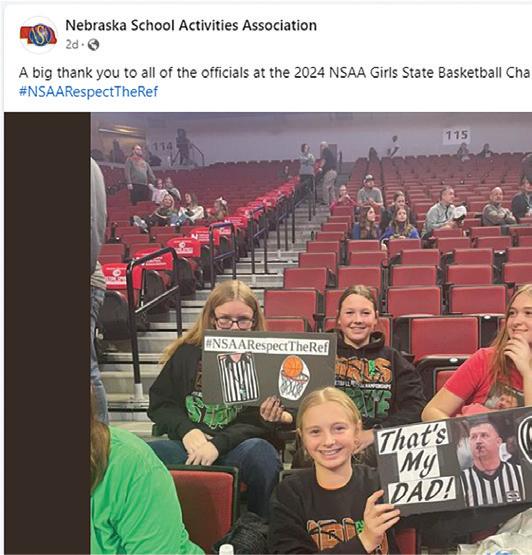

“A big thank you to all of the offi cials at the 2024 NSAA Girls State Basketball Championships! #NSAARespectTheRef”
–Facebook post by the Nebraska School Activities Association
SAY WHAT?
“Where the refs at now? Cheating ass. Where James at? The referee. I want to kick him in the mouth.”
— Los Angeles Clippers coach Tyronn Lue, after being ejected from a Feb. 14 game against the Golden State Warriors, threatening violence against referee James Williams
SNAP
SHOT
DALE GARVEY, COURTESY OF NSAA
POWERED BY NATIONAL OFFICIATING SOURCE: 35,813 INDIVIDUALS WHO RESPONDED TO THE NATIONAL OFFICIATING SURVEY POWERED BY REFEREE.COM EXPLORE RESULTS & DATA AT NASO.ORG/SURVEY
82% Entertainment/Splurging 70% Vacations 65% Household Bills 41% Emergency Funds 25% Other
WHAT
12 | REFEREE June 2024 Tell Us
Send email to letters@referee.com Send letters to: Editor, Referee, 2017 Lathrop Ave. Racine, Wis. 53405 Opinions expressed in “The Gag Rule” are not necessarily those of Referee. Unless otherwise stated, letters sent to Referee are intended for publication and become the property of Referee
PEOPLE ARE SAYING
What You Think

THE NEWS
PSRA Officials Approve CBA, Return to Work MLS Games

NEW YORK — On March 25, the Professional Soccer Referees Association (PSRA) ratified a sevenyear collective bargaining agreement (CBA) with the Professional Referee Organization (PRO). The CBA runs through the 2030 MLS season and includes significant increases in pay for referees, assistant referees and video assistant referees.
After the agreement was reached, MLS ended a five-week lockout and PSRA officials returned to the field March 30.
“We thank the hundreds of officials in the U.S. and Canada who stood in solidarity with us showing their strength and professionalism,” Peter Manikowski, PSRA president and lead negotiator, said in a statement. “Standing strong with each other, we have been buoyed by the support of players, fans, supporters clubs and other unionized workgroups during our employerimposed lockout. Together, we have won much-needed improvements while demonstrating the value of having the best referees in Major League Soccer on the pitch.”
The seven-year CBA is the longest for match officials in MLS history.
THE WIRE
Parent Punches Referee at High School Game
A man was charged with simple assault March 4 for punching a referee during a high school basketball game in Hoboken, N.J. George Cook, 50, of Bayonne, turned himself in several days after punching a referee Feb. 29 during a game at the Hoboken Multi-Service Center, police said. The Hoboken Volunteer Ambulance Corps treated the
In the first year, MLS officials will receive an overall 28% increase in pay compared to 2023. More modest increases occur in subsequent years of the contract. The contract also provides officials with some security in case of injury. In the past, injured officials were only paid for the games they worked, but now all officials are guaranteed a minimum of 15 match fees a year.
Improvements in travel and accommodations were also part of the CBA. Officials now will fly first class for MLS’s “Decision Day” as well as the MLS playoffs and added some concessions for scheduling flights for regular-season matches.
“Major League Soccer has some of the best match officials in the world, and PRO’s new CBA with PSRA recognizes that by committing substantial resources to the referee program — an investment that ranks among the highest for any global soccer league,” MLS Executive Vice President of Sporting Product & Competition Nelson Rodríguez said in a statement. “We’re pleased this agreement provides PRO with a strong, long-term partnership to continue to develop and train the referees to make our officiating even better.”
In mid-February, PSRA had overwhelmingly voted to reject a See “CBA” p.17
victim on the scene. After his arrest, Cook was processed and released on a summons, according to police.
Pawol Placed on MLB Call-Up List
Jen Pawol is one step closer to becoming MLB’s first female umpire. Pawol has been named a Triple-A crew chief for the 2024 season and is on MLB’s call-up list. Triple-A umpires who are
Thorpe Leaves Volleyball Role
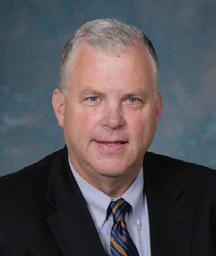
INDIANAPOLIS
— After serving seven years as the NCAA national coordinator of women’s volleyball officials, Steve Thorpe announced he will step down from that position effective Aug. 31. Thorpe was appointed to the position in March 2017, replacing Anne Pufahl.
“My tenure as national coordinator has been during an exciting time of growth in our sport,” Thorpe said in a statement. “It has been an honor to serve the game and officiating cadre during the past seven years, and I look forward to watching women’s college volleyball build on this amazing growth.”
Thorpe took over the national coordinator position after a 32-year NCAA officiating career, which included working in six NCAA Division I Women’s National Championships. He served as the USA Volleyball rules interpreter from 200013 and was inducted into the Professional Association of Volleyball Officials Hall of Fame in 2013.
The NCAA has begun a national search for a replacement.
on the call-up list are called up throughout the season when full-time MLB umpires are injured or on vacation. In February, Pawol worked as a spring training invitee umpire, becoming the first woman to work MLB Spring Training games since Ria Cortesio in 2007.
GAC Names Coordinator of Officials
The Great American Conference (GAC) has hired Bryan Greenwood as its coordinator of football officials. Greenwood currently serves as a replay communicator for the SEC and is a regional coordinator of football officials for the Louisiana High School Athletic Association. He had an onfield officiating career in the Sun Belt and Gulf South conferences and the GAC. Greenwood founded the Louisiana High School Officials Association and received an NASO Great Call Award in 2014.
14 | REFEREE June 2024









































































































SPEAKERS


TOPICS
Lisa Jones
NCAAW Basketball Referee karissa niehoff
NFHS Executive
RETENTION: Demands being made on officials have never been greater. How do we meet the demands with meaningful support?
PROGRESSION: What are the significant needs of individuals at each stage of an officiating career? One size does not fit all. Adjust the approach. Craft the message. Position your officials to thrive at each stage of the officiating life cycle.





Recruiting new officials is one thing; keeping them is something else altogether. For anyone who cares about the future of sports officiating, this event is for you – a deep dive into the critical issues involved in retaining, developing and advancing sports officials everywhere.
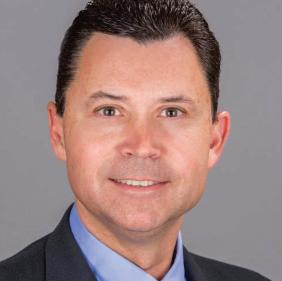

BRAD ALLEN
NFL Referee

adam james
marcus woods
College Football Referee

Motivational speaker and national mental health wellbeing expert roger ayers
NCAAM Basketball Referee
FAST TRACKING: Officials are advancing faster than ever before. Some acceleration is out of necessity, some out of industry tech advancement. How do we prepare them for that roller coaster ride?
RESILIENCY: Sports officiating is not for everyone, but the pressure of the job can be trained. How do we foster mental toughness and perseverance in new officials?
WOMEN IN OFFICIATING: How are the needs of female officials different than their male counterparts? How do we best sustain this important and growing segment of the officiating industry?
WORKSHOPPING: Prepare to roll up your sleeves for group breakouts on new, mid-career & veteran/retiring officials, assigners, sportsmanship, compensation, mentoring, evaluation, outreach, and respect.
07/28-07/30
sports officiating summit .com
REGISTER TODAY!
2024 ATLANTA GEORGIA
N.J. Courts Uphold High School Hoops Finish
TRENTON, N.J. — The issue of whether or not courts should be deciding what happens in sports gained national attention once again in early March following an apparent officiating error in the Group 2 state boys’ basketball tournament in New Jersey.

A week of appeals to various legal entities was set off immediately following Camden High’s controversial 46-45 victory over Manasquan on March 2 in the tournament semifinals. The game ended with a ruling by the three oncourt officials that a last-second shot attempt by Manasquan — originally ruled good on the floor and which would have given the team a 47-46 victory — actually came after the final buzzer. Videos of the play went viral, showing the shot was released before time expired.
Manasquan immediately protested the outcome to the New Jersey State Interscholastic Athletic Association (NJSIAA), which denied the appeal on March 5, stating its bylaws do not allow the use of video to review a call by an official and the decision made by the officials while still within the confines of the playing court was final.
At that point, the school opted to pursue the matter in the courts. The first step was filing a lawsuit in New Jersey Superior Court in Ocean County, where the game was played, in an effort to establish jurisdiction and have the judge grant an injunction to delay the state title game. That effort was turned away by Judge Mark A. Troncone. Manasquan next appealed to the state’s commissioner of education and the Appellate Division of the Superior Court.
The Department of Education first denied the appeal on March 8, and the Appellate Court followed suit that evening, showing sympathy for Manasquan but exercising caution when it comes to wading into the waters of litigating the results of athletic contests.
“While the consequences of a particular call may be unfortunate for a team, the NJSIAA’s regulations recognize the reality that game officials’ calls are frequently disputed, and that permitting such calls to be challenged on the basis of error would result in ongoing litigation, appeals and scheduling issues, since no game could be considered final if its outcome is disputed in court as a result of an alleged error by officials,” wrote the court in its decision.
“For these reasons, although we recognize the disappointment of the See “Courts” p.17
Wis. Courts Reinstate Wrestler’s Win
A Wisconsin Court of Appeals on Feb. 28 reinstated a high school wrestler’s state title from five years ago. Hayden Halter, then a sophomore at Waterford High School, was initially granted a temporary injunction that allowed him to compete in the postseason despite a disqualifying ejection at the last varsity tournament of the season.
In the original court hearing in 2019, a judge granted the injunction after using video to effectively reofficiate the tournament officials’ calls. The head official was called to testify. The original judge retired before the full trial and the new judge overturned Halter’s eligibility and stripped his title. The recent appeals court ruling dealt solely with whether Halter’s attempt to serve a one-game suspension by quickly signing up for a lower-level tournament before the state tournament — something Wisconsin Interscholastic Athletic Association (WIAA) officials said they long prohibited — was allowed. On March 22, the WIAA asked the Wisconsin Supreme Court to review the Appeals Court ruling.
NHL Referee Suffers Career-Ending Injury
NHL referee Kevin Pollock is hanging up his skates sooner than he anticipated. During a February game between the Anaheim Ducks and Buffalo Sabres, Pollock suffered a career-ending knee injury. He was hurt when Sabres forward Jordan Greenway inadvertently slid into him in the corner and knocked him to the ice. Pollock, 54, had been a
referee in the NHL since the 19992000 season and was planning to retire at the end of the 2023-24 season.
Referee Dies During Basketball Game
A referee collapsed March 1 during a girls’ high school basketball game in Watertown, Mass., and later died on the way to the hospital. Don McGillicuddy, 56, collapsed on the court in the
final seconds of a game between Watertown and Old Rochester Regional. McGillicuddy had been an official for 24 years.
China Punishes Officials Who Took Bribes
Chinese courts handed down sentences of between eight years and life in prison to officials in its government-controlled sports programs, accusing them of taking bribes and committing
other financial crimes. Most notably, former Chinese Football Association president Chen Xuyuan received a life sentence for helping fix matches and using his positions to commit financial crimes, state media reported. Among others sentenced was former high-ranking soccer official Chen Yongliang, who received 14 years.
SOURCES: ASSOCIATED PRESS, CNN, FOOTBALL ITALIA, NBC10 BOSTON, NEWSDAY, PATCH.COM, TSN
THE NEWS THE WIRE 16 | REFEREE June 2024
NCAAW Official Removed at Halftime
RALEIGH, N.C. — The NCAA changed an official at halftime of a women’s NCAA Tournament game March 23 due to a background conflict.
Referee Tommi Paris was removed from the first-round game between Chattanooga and N.C. State in Raleigh, N.C., and replaced by Angelica Suffren, who had worked the first matchup at the site between Tennessee and Green Bay earlier in the day.
“There was a switch of game officials at halftime of the Chattanooga-N.C. State first-round game because it was learned after the game had started that Umpire 2 Tommi Paris had a background conflict that, if known, would prevent her from working that assigned game,” the NCAA said in a statement.
Paris received a master’s degree in public administration from Chattanooga, according to her LinkedIn profile. The NCAA asks all officials who are being considered for the NCAA tournament to disclose school affiliations to avoid potential conflicts of interest. In this case, the NCAA was unaware of the conflict at tipoff.
“When I was hired into the Southern Conference 10-plus years ago, I explicitly asked if grad school was a conflict,” Paris said in a
statement to Referee. “The supervisor at the time indicated that grad school was not a conflict unless you were currently enrolled. With this understanding, I’ve since only listed my undergraduate education as a conflict, and over the years, there has never been an impetus to reevaluate my understanding of conflicts. I made a mistake in applying this understanding to the NCAA tournament.

“After the incident, I shared documentation providing context and explanation of the honest mistake,” Paris said “Since then, I have felt very supported by those in officiating leadership. It was an honest mistake that became a public story maligning my character. As officials, our character is all we have, and I’m grateful to my friends, family, and fellow officials who have shown incredible support. I’m also grateful for NASO’s resources to help members navigate difficult situations as sports officials.”
North Carolina State coach Wes Moore, who knew Paris because he recruited her when she was a
basketball player (Paris played for Furman University from 2002-06), said he “would never question Tommi Paris’ integrity.”
”On the sideline sometime, I did say something about how in the world are you doing this game?” Moore said a day after the game. “I hope that had nothing to do with it because, again, I was just bantering back and forth.
“I would never doubt (Paris’) integrity and those sort of things, but I guess, when they found out she had a degree from Chattanooga, I guess that maybe made it a little bit stickier,” Moore said.
Suffren replaced Paris, despite Danielle Jackson having been listed as the game’s standby official.
The NCAA said it decided to send Suffren back onto the court “because it provided the most oncourt experience and allowed the game to maintain a full officiating crew, plus standby.”
N.C. State won, 64-45.
This wasn’t the first Chattanooga assignment Paris received this season. On Dec. 3, Paris worked a regularseason Mississippi State-Chattanooga matchup. Chattanooga won, 59-53.
Paris has been an NCAA Division I women’s basketball official for a decade and worked the NCAA Tournament in 2023.
SOURCES: USA TODAY, THE FAYETTEVILLE OBSERVER
tentative agreement prior to the start of the MLS season, which led to the lockout and MLS using replacement officials for the first weeks of the season. PSRA and PRO negotiated the current agreement with the assistance of federal mediators.
“We look forward to welcoming our senior match officials back this upcoming match round. It has been a difficult time for everyone as we worked to reach an agreement,” said Mark Geiger, PRO’s general manager, in a statement. “This seven-year term provides enhanced pay and benefits
for all officials and the stability that will support the growth of the professional game in the United States and Canada.
“On behalf of PRO, I would like to thank the PSRA negotiating team and the federal mediator for their commitment to finding a mutually agreeable conclusion to these negotiations and their hard work in finalizing the terms.
“We now move forward together with renewed positivity as PRO continues to lead the way in developing world-class match officials.”
SOURCE: THE ATHLETIC
Courts continued from p.16
petitioner, we are constrained to deny Manasquan’s application to file an emergent appeal, including its request to enjoin the state championship game.”
Manasquan chose not to take the case to the New Jersey Supreme Court. Camden would go on to defeat Newark Arts, 69-50, on March 9 to win the Group 2 state title. The Manasquan boys’ team — in attendance to support the school’s girls’ team playing for a Group 2 state title that same day — stood and applauded the victory.
SOURCE: NJ.COM
REFEREE June 2024 | 17
CBA continued from p.14

SHIRT TALES NFHS Alters Rules Regarding Jersey Colors
By George Demetriou
Jerseys were the target of the only rule change approved by the NFHS Football Rules Committee at its annual meeting Jan. 14-16 in Indianapolis. The change was subsequently approved by the NFHS Board of Directors. Editorial changes, points of emphasis and a tweak to one penalty signal were also announced. The caseplays and rulings were written by Referee. Consult NFHS publications for official rulings and interpretations.
Home Team Jerseys 1-5-1
This season, all home team jerseys must be the same dark color(s) that clearly contrasts with white.
Previously, the rule only stated jerseys of the home team had to be a dark color that clearly contrasts to white. Even though most everyone assumed home team players had to have jerseys of the same color, the rule adjustment averts what could have become a major issue in the future.
Additionally, the rule requiring the entire body of the number to be a single solid color that clearly
contrasts with the body color of the jersey, passed in 2019, becomes effective this year.
Editorial Changes
Penalty Enforcement 10-4
The basic spot was changed from the succeeding spot to the end of the related run for the following: a foul by team B when the related run ends beyond the neutral zone; a foul that occurs beyond the end of the related run following a change of possession; and a foul by team A that occurs beyond the neutral zone during a
FOOTBALL RULES, MECHANICS, PHILOSOPHY EDITOR: JEFFREY STERN jstern@referee.com 18 | REFEREE June 2024
HESTON QUAN

if accepted, the 15-yard penalty is added to the end of the run, resulting in first and 10 for team A from the 50 yardline.
Play 2: Third and 10 from team A’s 10 yardline, A1 throws a forward pass. B2 intercepts at team A’s 45 yardline and begins a return. During B2’s run (a) A3, or (b) B4 grasps an opponent’s facemask at team A’s 35 yardline. B2 advances to team A’s 39 yardline, where he is downed. Ruling 2: The foul occurred during a running play after a change of possession. The spot of enforcement is not affected by which team fouls. Because the foul occurred beyond the end of the related run, the basic spot is the end of the related run, team A’s 39 yardline. The penalty is enforced from there. Team B will have first and 10 at (a) team A’s 24 yardline, or (b) team B’s 46 yardline.
Play 3: First and 10 at team A’s 36 yardline. A1 advances and is downed at team A’s 41 yardline. During A1’s run, A2 holds at team A’s 43 yardline. Ruling 3: The spot of the foul is beyond the end of the run, which means the basic spot is the end of the related run. As a result, the penalty is enforced from the end of the related run. If accepted, the 10-yard penalty would result in first and 15 at team A’s 31 yardline.
Loose-ball Plays 2-33-1, 10-3-1
running play when the related run ends beyond the line and the foul occurs in advance of the end of the related run.
Play 1: First and 10 at team A’s 30 yardline. A1 advances to team A’s 35 yardline. During the play, B2 grasps A3’s facemask. The foul occurs at team A’s (a) 25 yardline, or (b) 40 yardline. Ruling 1: Because team B fouled when the related run ended beyond the neutral zone, the basic spot is the end of the related run, team A’s 35 yardline. The spot of the foul is not a factor. In either case,
The definition of a loose-ball play has been revised to include only legal forward passes and kicks. With the revision to 10-4-2, the enforcement spot for fouls during a backward pass (including the snap), illegal kick or fumble made by team A from in or behind the neutral zone and prior to a change of team possession will be the previous spot. As a result there is no longer a reason to categorize those as loose-ball plays. They are simply running plays.
Play 4: First and 10 at team A’s 10 yardline. A1 drops back into his end zone to pass and his facemask is pulled by B2. A1 (a) is downed in the end zone, or (b) fumbles and the ball goes out of bounds in the end zone. Ruling 4: In either case it is a running play. The 15-yard penalty is enforced from the previous spot because the
DID YOU KNOW?
Notre Dame coaching legend Knute Rockne’s shift came under much scrutiny when he rolled it out in the early 20th century. The NCAA rules committee believed the Irish backfield did not come to a complete stop after the shift and before the snap. In order to ensure Rockne’s shift was legal, referees were ordered to time the pause using a stopwatch. With the maneuver under such tight inspection, Rockne believed it lost its effectiveness and ditched it.
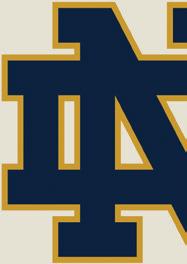

4
Number of NFL teams (Jets, Bills, Packers, Panthers) that committed nine unnecessary roughness fouls during the 2023 season, most in the league.
5
Number of teams (Raiders, Vikings, Saints, Dolphins, Chiefs) that committed two unnecessary roughness fouls during the 2023 season, fewest in the league.
164
Total unnecessary roughness fouls during the 2023 season.
SOURCE:
SURVEY SAYS …
How many flags do you carry on the field?
1
37
2 3+

REFEREE June 2024 | 19
PROFOOTBALLDATABASE.COM
BY THE NUMBERS
Starting in 2024, Bob Hernandez, San Clemente, Calif., and his crew will have to be sure all home team jerseys are the same dark color(s) that clearly contrasts with white.
SOURCE: SURVEY OF 172 REFEREE READERS
%
%
%
56
7
TEST YOURSELF
In each of the following you are given a situation and at least two possible answers. You are to decide which answer or answers are correct for NFHS and NCAA rules, which might vary. Note: In kicking situations, K is the kicking team, R the receiving team. Solutions: p. 81.
1. What is the maximum number of captains in full-game uniform that may represent each team at the coin toss?
a. Three.
b. Four.
c. Five.
2. A1’s pass is intercepted by B2 at his own three yardline. B2 voluntarily runs into his own end zone. He simulates going to one knee, then puts on a burst of speed. He advances to team B’s 37 yardline.
a. Legal play; it’s team B’s ball at its own 37 yardline.
b. The ball is dead when B2 simulates taking a knee.
c. The momentum rule applies; it will be team B’s ball at its own three yardline.
d. It’s a safety; team A scores two points.
3. As a player attempts to catch the ball, an opponent waves his hand in front of the potential receiver’s face.
a. No problem regardless if the player is attempting to catch a kick or a legal forward pass.
b. Foul whether the player is attempting to catch a kick or a legal forward pass.
c. Foul only if the covering official judges a team K player obstructed a team R player’s attempt to catch a kick.
d. Foul only if the covering official judges a team B player obstructed a team A player’s attempt to catch a pass.
4. Fourth and 10 for team A from its own 20 yardline. R1 is in position to catch K2’s high punt. R3 is in front of R1 and attempts to legally block K4, but K4 shoves R3 above the waist from the front. The contact causes the ball to bounce off R3 and fall to the ground. The ball is recovered by prone K5 at team R’s 45 yardline.
a. R3 is considered to have touched the ball.
b. R3’s touching of the ball is ignored because K4 caused the contact.
c. It will be team R’s ball.
d. It will be team K’s ball.
spot of the foul and the end of the run were behind the neutral zone. That yields first and 10 at team A’s 25 yardline.
Goalline Enforcement 10-4-8
The special enforcement from the goalline for fouls by the defense on running plays that result in a safety has been deleted as it is covered by 10-4-2d, which mandates enforcement from the previous spot. Also, under rule 10-4-8, the goalline is the spot of enforcement for fouls by the opponent of the team in possession that occur during running plays after a change of possession when the team in possession is responsible for forcing the ball across its own goalline and the related run ends in the end zone. Fouls before a change of possession are enforced from the previous spot per 10-4-2d. Rule 10-5-2, which conflicted with the preceding, has been deleted.
Play 5: Second and 15 at team A’s five yardline. A1 drops back to pass but is downed in his own end zone by B2, who is flagged for grasping A1’s facemask. Ruling 5: The 15-yard penalty is enforced from the previous spot. It will be second and five from team A’s 20 yardline.
Play 6: Punt receiver R1 catches the ball at his nine yardline, circles back into his own end zone and is tackled there. During R1’s run, K2 is flagged for a personal foul, either in the field of play or in the end zone. Ruling 6: Since the run ended behind the goalline resulting in a safety, team K is penalized 15 yards from the goalline. Team R will snap the ball, first and 10 from its own 15 yardline.
Tooth and Mouth Protectors 1-5-1d
It has been clarified players may have only one mouthpiece. Players have increasingly been wearing a mouthpiece attached to their facemask while simultaneously having one in their mouth unseen by officials. If an official stops the game to send the apparently offending player off and is then shown the mouthpiece inside the mouth, the game is disrupted at a minimum and in the worst case, may result in a time advantage. Officials should check for
extra dangling mouthpieces before the game and have them removed. If the extra equipment is observed during the game, the player should be sent off and rule 3-4-6 applied as necessary, with the referee either stopping or starting the clock.
Play 7: Late in the fourth quarter with the score tied, team A is driving for a score. With the game clock running, the referee notices reserve back A2 has entered the game and has a mouthpiece dangling from his facemask. The official stops the clock and informs A2 he must leave the game for one play, advising him to wear his mouthpiece properly. A2 then pulls a second mouthpiece from his mouth and shows it to the referee. Ruling 7: Because A2 had two mouthpieces, he is required to leave the game for one play.
Defenseless Players 2-32-16b
The definition of a defenseless player was amended by specifying a player is no longer defenseless once his physical position and focus of concentration no longer makes the player especially vulnerable to injury. Additionally, a receiver attempting to catch a pass, a kickoff or punt returner attempting to catch or recover a kick, or one who has completed a catch or recovery and has not had time to protect himself, will remain defenseless until he becomes a runner. Removal of the phrase “has not clearly become a runner” makes it clear-cut officials must make a yes/no decision on whether a player has become a runner. A runner is explicitly defined and officials should not get wrapped up in the thought the rules offer a “maybe” option.
Nonplayers Outside Team Box 9-8-3
In a clarification, the head coach is charged with the foul if anyone commits a foul by being in the restricted area while the ball is live. The rule is now in line with caseplay 9.8.3 A. Under the previous rule wording, it was not clearly stated the head coach was charged with those fouls.
20 | REFEREE June 2024
FOOTBALL
Unsportsmanlike Conduct
9-5-1g, 9-8-1j
The prohibition on the usage of alcohol and tobacco during a game was expanded. It is unsportsmanlike conduct for anyone to be under the influence of any controlled or illicit substance to include alcohol and tobacco once officials assume authority for the game.
Points of Emphasis
The committee identified sportsmanship, proper wearing of uniforms and formations as points of emphasis.
School administrators and coaches should ensure additional personnel on the sideline, outside the team box, adhere to set standards of sportsmanship. Officials must fairly and consistently enforce NFHS rules in all aspects related to unsporting behavior by coaches and participants. Players and parents must model respect for coaches and officials’ decisions, opponents and adhere to and promote the set expectations regarding sportsmanship.
The use of knee pads is an area targeted for emphasis. Due to potential injury, it is essential that players only be allowed to participate if their pants completely cover the knees and knee pads are worn over the knee. In pregame duties, officials
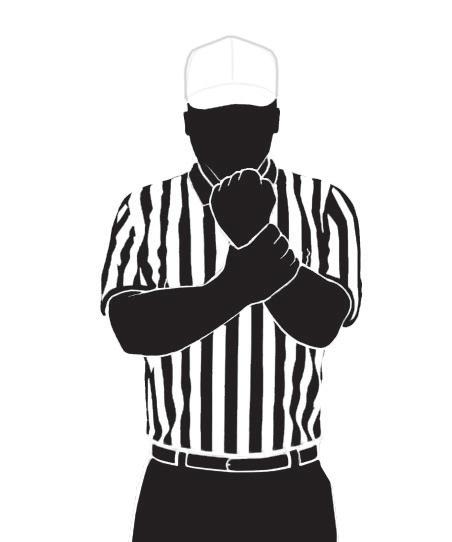
should be watchful and proactive in addressing potential equipment, and more specifically, knee pad issues. Officials should communicate with coaches and/or players and ensure only legally and properly equipped players are allowed to participate — noncompliance results in nonparticipation.
The NFHS believes officials have become lax in enforcement of illegal formations, especially involving offensive linemen. Linemen are legally on the line of scrimmage when they face their opponent’s goalline and have head or foot breaking the imaginary plane through the waist of the snapper. It has become fairly common to see guards or tackles line up a yard or two off the ball to aid in pass blocking or pulling. Doing so provides a significant advantage for the offense and should be addressed at the first opportunity by coaches and officials.
Signal Change
To indicate illegal use of hands, referees are to use the same signal as the one used for an illegal block in the back. Formerly the holding signal was used to indicate illegal use of hands.
George Demetriou has been a football official since 1968. He lives in Colorado Springs, Colo.

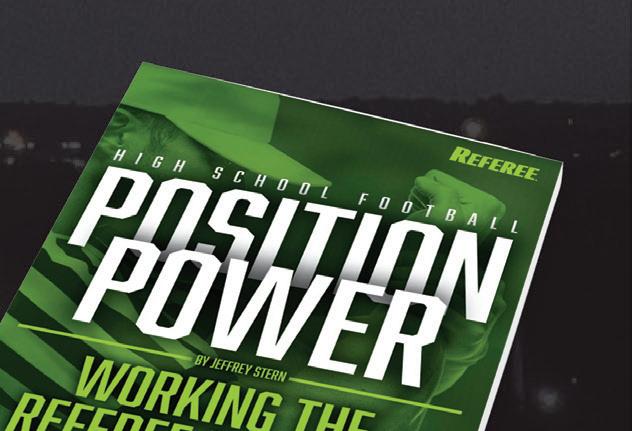




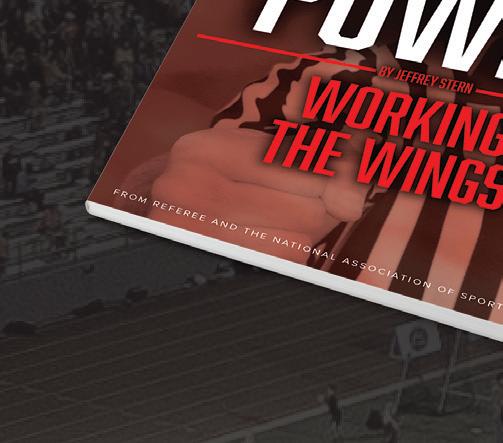



Signal 43 will be used to indicate illegal use of hands as well as illegal block. Signal 42, formerly used for illegal use of hands, will indicate holding only. 42 43
Everything you need to know to handle your position’s unique challenges with success. learn more at store. /football GET ALL 4 FOR $4995 $1595 EACH
Enhance Your Position
Direction Discretion: Who’s Got the Call?
By Rick Boedy
Football is a dynamic game. On each play the ball and 22 moving parts must be monitored. Given the sophistication of the passing game at all levels of high school competition, core responsibilities for pass direction are a foundational mechanic allowing for in-play adjustments. Here is a review of primaryresponsibility for ruling forward and backward pass direction in four and five-official NFHS crews. Determining whether the passer is beyond the line of scrimmage when the pass is released will also be addressed, although that situation is rare.
Crew of four. Four-official crews are faced with in-play adjustments in all phases of the game. Pass direction determination underscores needed flexibility.
The referee has primary responsibility for pass direction. With a passer under duress, the referee will need to maintain focus on the passer. If the pass has a flat trajectory with the direction and intended receiver out of the referee’s visual field, assistance may be needed.
Backward and quick flat-trajectory passes are the responsibility of the
wing official toward whom the pass is thrown. In that situation, if the wing has begun moving slowly downfield before the pass, the wing must be prepared to quickly move upfield once the pass is released to assist in determining the pass direction. If the pass is backward, the wing should give a punch back signal. No punch signal should be given if the pass is forward.
When the ball is snapped on or inside team B’s five yardline, the referee has primary responsibility for pass direction as the wing officials should be moving immediately to the goalline. Assistance may be available from a wing official as in non-goalline plays. However, since the wings are releasing quickly to the goalline at the snap, the referee must be prepared to rule on the direction of the pass on a slowdeveloping play.
The passer being past the line of scrimmage will almost always occur on a scramble or a roll out. The umpire is in the best position to make the call and can drop a beanbag at the spot the pass is released. The referee can then confirm the location and drop a flag if the pass is made beyond the neutral zone.
Crew of five. In the majority of nongoalline situations, pass direction can be

determined by the referee. As in crew of four, with a passer under duress and the flat-trajectory pass out of the referee’s visual field, assistance may be needed. Backward passes and quick flattrajectory passes are the responsibility of the wing official toward whom the pass is thrown. If the wing has begun moving slowly downfield prior to the pass, the wing must be prepared to move quickly upfield to assist in determining direction of the pass.
If the pass is backward, the wing should give a punch back signal. The wings need not drift more than five to seven yards, since the back judge provides deep coverage. The wings should be in good position to rule on the direction of the pass, even if there is a delay in the pass being thrown.
In goalline situations, the referee has responsibility for pass direction. Assistance from the wings may be available if the pass is thrown immediately after the snap. But since the wings are releasing quickly to the goalline at the snap, the referee must be prepared to rule on the direction of the pass if the pass is not made immediately after the snap.
For non-goalline plays, responsibility for ruling on the passer past the line of scrimmage requires the focus of the umpire and referee. When the passer scrambles or rolls out, both officials must be in position to see the yardline from which the pass is released. In goalline mechanics the duty falls primarily on the umpire, who can drop a beanbag at the spot of the pass. The referee should confirm the location from which the pass was made and drop a flag if the passer was beyond the neutral zone.
In non-goalline plays, responsibility for judging the passer past the line of scrimmage requires the focus of the referee and umpire. Both officials must be in position to see the yardline from which the pass was released on scrambling and rollout passes. In goalline mechanics the task falls exclusively on the umpire. Rick Boedy is a football official and neonatologist from Big Canoe, Ga.
FOOTBALL 22 | REFEREE June 2024



ARE YOU READY FOR SOME
FOOTBALL
The high school season is just around the corner. Make sure you’re up to date on the latest rule changes, trends and best practices before you hit the field.
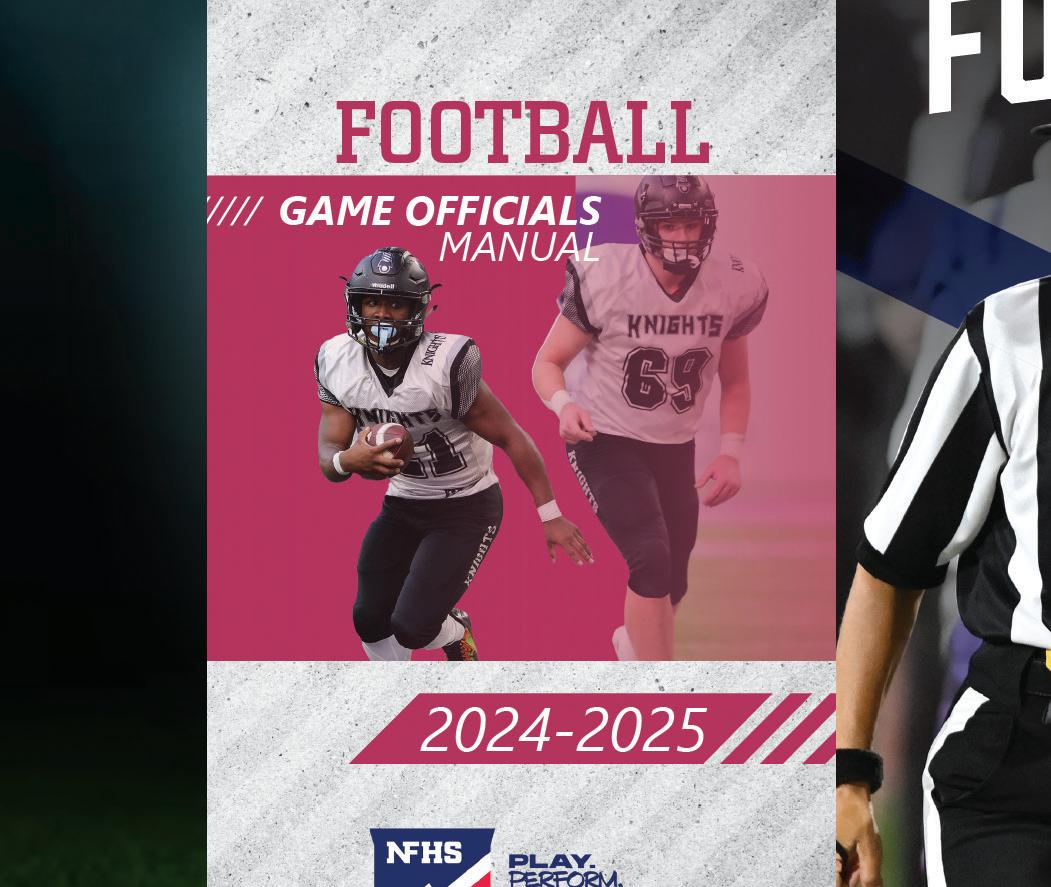



all this and more - available in june STORE. /footBALL

CASEPLAYS
Sticky-Fingered Snapper
Play: A1 snaps the ball to A2. The ball touches A2’s hands, but A1 holds the ball as A2 fakes having it. A3 cuts in, grabs the ball from A1 and advances. Ruling: That is an illegal snap. A legal snap leaves the snapper’s hand. The officials should blow the play dead when it is obvious A1 still has the ball. The penalty is five yards (NFHS 2-40-2, 7-1-4; NCAA 2-23-1a, 2-23-1b).
Two Fouls?
Play: First and 10 on team A’s 30 yardline. A1 advances to team A’s 35 yardline when he throws a forward pass. Eligible A2 is at team A’s 43 yardline when B3 cuts off A2, preventing him from attempting to catch the pass. Ruling: Pass interference is only possible on a legal forward pass. Thus the only foul on the play is A1’s illegal pass. The penalty is five yards from the spot of the pass and a loss of down (NFHS 7-5-2b, 7-5-7; NCAA 7-3-2a, 7-3-9d).
Foul on Punt Play
Play: Third and 22 for team K on its own 12 yardline. K1’s quick kick is blocked and does not cross the line. The ball rolls to team K’s three yardline, where K2 recovers and starts to run. During the run, K3 holds at his own nine yardline. K2 is downed at team K’s 16 yardline. Ruling: The advance is legal since the blocked kick did not cross the neutral zone before K2 recovered. The spot of the foul is behind the neutral zone and is enforced from the previous spot. If team R accepts the penalty, it would be enforced half the distance from the previous spot, resulting in third and 28 from team K’s six yardline. Declining the penalty would result in fourth and 18 from team K’s 16 yardline (NFHS 10-4-5g; NCAA 10-2-2d-4a).
Legal Formation
Play: A pre-snap count reveals team A has only 10 players on the field — six linemen and four backs. There are five linemen numbered 50-79. Ruling: The formation is legal as long as the linemen are legally numbered and there are no more than four backs (NFHS 7-2-5a; NCAA 7-1-4a-4).
Kick, Muff, Pass: Whose Ball Is It?
It’s relatively rare for a team to punt the ball and wind up getting the ball back. It takes a muff or a fumble by the opponent.
In the MechaniGram, team K punts on fourth down from its own 45 yardline. The shanked kick is muffed by the receiver at his own 42 yardline and the ball rolls back behind the neutral zone. K2 recovers at his 40 yardline and throws an incomplete pass intended for an eligible teammate.
Under NFHS rules, team K will start a new series from the previous spot. The muff does not constitute a change of possession, therefore the pass by K2 is legal. Team K is awarded a new series as the ball
was touched by team R beyond the expanded neutral zone and team K is in possession at the end of the down. It will be K’s ball, first and 10 at K’s 45 yardline due to the incomplete pass (7-5-2, 2-34-3, 5-1-3f, 7-5-5).
All of that assumes that no team K ineligibles have gone downfield before the pass is thrown. In that case, team R would likely accept the fiveyard penalty and replay the down.
In NCAA, once a kick crosses the neutral zone, it is dead if team K recovers, so there would be no pass. Due to team R’s touch beyond the neutral zone, team K will be awarded a new series. It will be team K’s ball, first and 10 at its own 40 yardline, the spot of recovery (5-1-1e-2).
FOOTBALL 24 | REFEREE June 2024
PRESS BOX MUFF PASS PUNT K1 R2 K2 SPOT OF SNAP

•All
•Dozens
•Interactive
•Archived
DIGITAL OFFICIATING CLINIC 2024 HIGH SCHOOL FOOTBALL
digital access – View from the comfort of your own home
clinicians and speakers
•Easy
•Top-level
the latest rule changes, trends and philosophies
of video play breakdowns
participation modules
for multiple viewing experiences 2024 AUGUST 4 $ 29 95 ONLY RESERVE YOUR SPOT TODAY! MIBTONLINE.COM/MEMBERSHIP PRESENTED BY







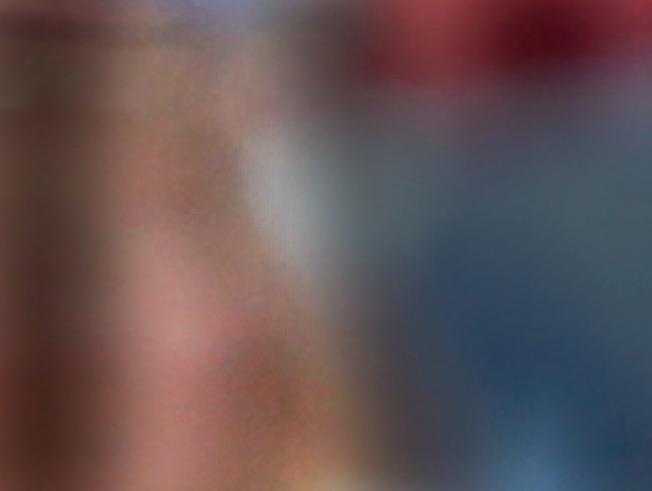
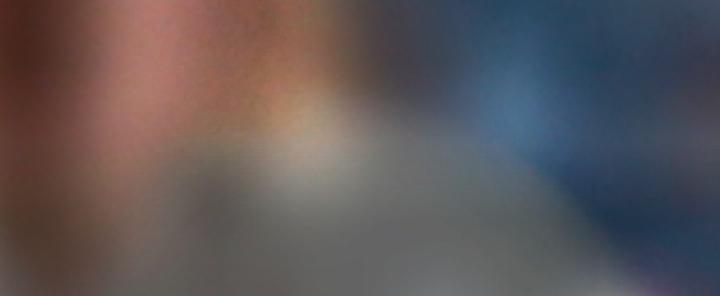
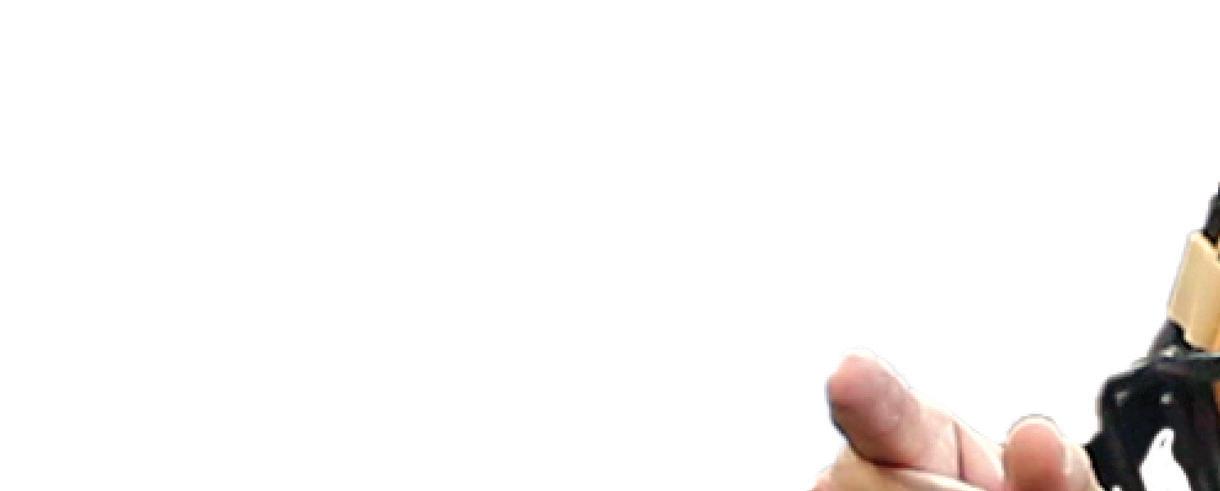










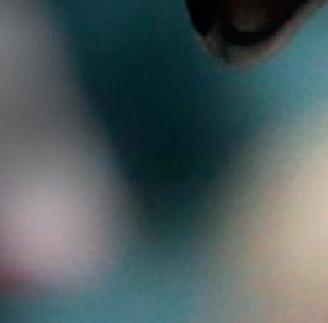
I WAS NOT FINISHED YET YET

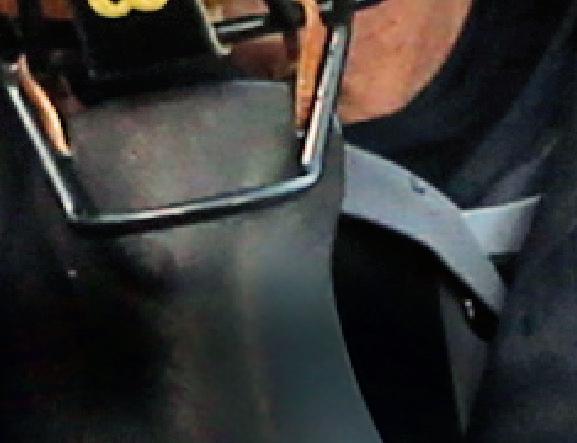




 BY DAN RONAN
BY DAN RONAN



AT 68, MLB’S OLDEST UMPIRE REFLECTS ON A 45-YEAR CAREER IN PRO BASEBALL.

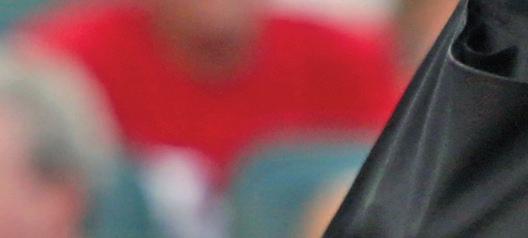
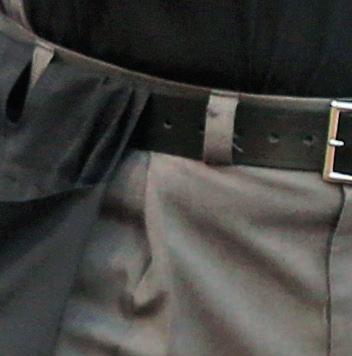


26 | REFEREE June 2024



Veteran Major League Baseball umpire and crew chief Larry Vanover would have retired last year, except for what happened in Cleveland just a few days after Opening Day.
“The season was going very well. I had a great World Baseball Classic in Taiwan, and the crew was coming together,” Vanover said.
On the very same field where he experienced his greatest moment — working the plate in Game 1 of the 2016 World Series — Vanover experienced a terrifying low point.
On April 12, while working second base, Vanover was hit in the side of the head by an errant, roughly 90-mph relay throw from Guardians infielder Andres Gimenez. Vanover was knocked off his feet, and he suffered a fractured skull, broken ribs and had a slight brain bleed. However, he popped back to his feet and told the team doctor he wanted to finish the game. It was the first severe injury of his career.
“I had an ice pack on my head and the doctor said I needed to go to the hospital. But I felt OK. Turns out I got smoked,” he said.
While waiting for an ambulance, Vanover said Gimenez apologized for hitting him, thinking the umpire was an infield cutoff man.
It took months for Vanover’s injuries to heal. He then began an extensive rehabilitation program, including countless gym visits and working 11 Triple-A games, before returning to his MLB umpiring duties Aug. 8 in Baltimore. He was determined not to let that episode be his last chapter in an incredible career, so he decided to return for one final — and full — season in 2024.
“I was not finished yet,” Vanover said. “What happened in Cleveland was a freak incident. The rehab was hard, but I received good care and returned to the field. I did not want my career to end this way.”
Thus, on an MLB field late this summer, Vanover will work the final game of his 32-year MLB career. He has been in professional baseball since 1980 — 44 seasons — and has umpired 1,700 minor league games in addition to the 3,359 major league
regular season games logged at the outset of the 2024 season.
Vanover is leaving baseball on his terms and with few regrets.
“I have many things I still want to do with my life — spending time with my wife, Dianne, our son Austin, starting a foundation to honor our son Tyler who died, and of course, being an outdoorsman and riding my horses,” he said. “I’m going to stay very busy.”
Longtime big leaguers say Vanover’s game management and leadership skills are his strongest traits, which they say are needed now more than ever in an era when every close call goes to video replay and umpiring is increasingly being turned into a science rather than the craft Vanover was taught and honed during his illustrious career.
“In the 30-plus years I have known Larry, he has been a gentleman,” said Jim Riggleman, who managed five teams over 13 years. “He is a pro. I have always liked him. All the umpires are good, and Larry is excellent. He is just so easy to deal with and to get there and stay there at the major league level as long as he has is amazing. The respect level is off the charts.”
For instance, Vanover was warmly greeted when he returned to work in August at Baltimore’s Oriole Park at Camden Yards.
“Hi, Larry. We are glad you’re back!” said umpires room manager Jim Tyler. “Larry is always great to be around. He is very easygoing.”
Vanover turns 69 in August. No umpire, not even the Hall of Fame arbiter Hank O’Day, who worked his last game at age 68, has umpired this close to age 70.
“I work hard to stay in shape,” Vanover said. “I swim five or six times a week. I am in the gym regularly. I am careful with my diet. Our travel schedules are difficult, and ballplayers are in such great shape, so I work hard to stay in top condition.”
Vanover weighs 210 pounds, the same weight he was in 1991, when he worked his first NL game.
A generally private man, Vanover has never discussed the numerous challenges that nearly derailed his career several times, and once almost
REFEREE June 2024 | 27
COURTESY OF LARRY VANOVER; BILL GREENBLATT/UPI

killed him. But those who know him say he is a rarity in the high-profile, media-saturated world of professional sports.
He is an umpire who has stayed below the radar most of his career, calmly doing his job day in and day out without drama and earning the respect of those around him.
“I am there to do the job to the best of my ability,” said Vanover, who usually arrives at the park 90 minutes to two hours before a game and will be there long after it ends.
“I’ve loved baseball since I played on my hometown high school team in Owensboro, Ky.,” he said. “After obtaining an associate degree in engineering and studying architecture at the University of Kentucky, I started umpiring. I attended a game in St. Louis. NL umpire John Kibler encouraged me to go to umpire school. Harry Wendelstedt, Augie Donatelli, Bruce Froemming, Doug Harvey and Al Barlick, these legendary umpires all influenced my career and helped me along the way.”
Retired MLB umpire and crew chief John Hirschbeck was one of Vanover’s instructors at

the Wendelstedt Umpire School in 1980, and 36 years later, they worked the 2016 World Series together.
“Larry always has a great attitude and is so determined,” Hirschbeck said. “He came to school in great shape and worked extremely hard, as he has his entire career. He is a great guy off the field. Harry Wendelstedt brought him in as an instructor, and he did an excellent job as a teacher.”
Vanover has always been a workhorse. Before 2014 and the advent of having umpires in New York’s replay center as many as 21 days a year, he would average more than 135 games per season.
In many respects, Vanover is a bridge to another era in umpiring when umpires with larger-than-life personalities, like those who mentored him, ran their games and commanded respect on the field.
Six innings into his return game in Baltimore last year, Vanover’s leadership skills showed. After a close play at first, rookie umpire Edwin Moscoso ejected Baltimore manager Brandon Hyde. Vanover took control. He got Hyde away from Moscoso and explained the Orioles were out of replay challenges because of an unsuccessful replay request innings earlier.
Career Almost Cut Short
The Cleveland injury is not the first time his career almost ended due to unforeseen circumstances. It also happened two other times. In May 1992, he was in Triple-A and received a call from NL supervisor Ed Vargo, telling him to be at Chicago’s Wrigley Field the next day to join Froemming’s crew, likely for the rest of the summer.
Hours later, a pickup truck T-boned Vanover’s car. Dianne Vanover rushed to Denver. Doctors feared he might not survive. He had numerous orthopedic injuries, including a broken pelvis, cracked ribs, internal injuries and a punctured lung.
“I was lying on a gurney, fighting to breathe, and I have never been in so much pain when a doctor put a tube through my ribs into my lung without anesthetic to reinflate my lung,” he said, recalling he spent several days in the ICU. “Seconds later the tube filled with blood, and I started breathing.”
At home, Vanover underwent months of treatment, and began his comeback in the Arizona Fall League (AFL).
“Larry came down here and worked hard,” said Mike Port, then the president of the AFL. “He was the most experienced umpire in the league and fit right in. He was ready to go. He just wanted to get back on the field.”
Port was later Vanover’s boss when he was MLB’s vice president for umpiring from 2005-11.
“I have never received a call from anyone complaining about Larry’s umpiring or how he managed his business,” Port said.
28 | REFEREE June 2024 ‘I WAS NOT FINISHED YET’
COURTESY OF LARRY VANOVER
Vanover worked in the NL from 1991 to 1999, wearing No. 28 on his sleeve. He changed to No. 27 after his return to the MLB umpiring staff in 2002.
Before the accident, Vanover thought he had a good chance of getting one of six full-time MLB openings that winter. Veteran umpires Dutch Rennert and Doug Harvey retired, and MLB was expanding into Denver and South Florida.
But because of his injuries, he believes many in baseball were skeptical he would be ready for “Camp Vargo,” when more than 20 Triple-A umpires went to spring training in 1993. Promotions were not guaranteed and Vanover said had he not gotten a job then, his baseball career was over.
“I went there with the mindset that this was it, and I couldn’t let the car accident set me back,” he recalled. “I had been in the minor leagues 12 years and six in Triple-A. There were no openings, and I was in the minor leagues when there was little movement.”
Days before the start of the season, all the prospective MLB umpires gathered in a Palm Beach, Fla., hotel, where they learned if they would be promoted, sent back to Triple-A or released.
“There were a lot of good umpires, and Vargo told us what was taking place one by one. I got a job. Others got bad news and were rightfully upset. None of us was celebrating,” Vanover recalled. “I had several friends get released.”
While he had worked eight games in 1991 as an MLB fillin and had only one regular season MLB plate job to his credit, Vanover worked his first game as a member of the fulltime MLB staff April 13, 1993, in Montreal with Randy Marsh, Wally Bell and crew chief Wendelstedt.
“Harry did a lot to help my career,” he said. “It wasn’t just outs and safes; we learned many lessons about life from the Chief.”
Vanover’s career was rising until July 1999. He worked the All-Star Game that year in

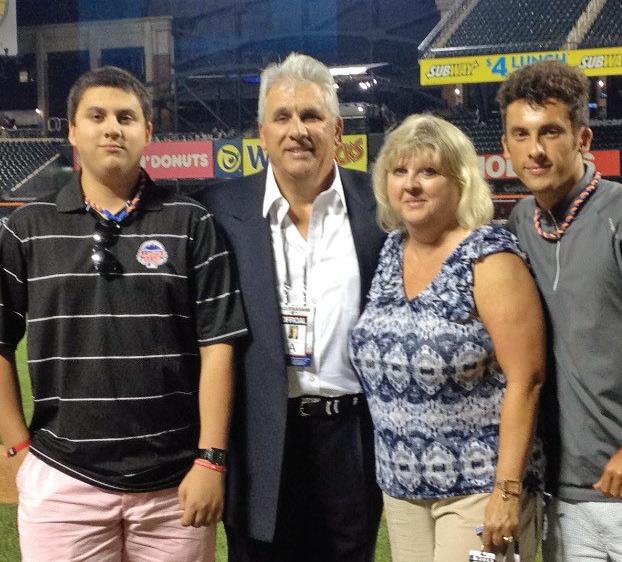
Boston. MLB and the Red Sox honored Ted Williams, who made his last public appearance at Fenway Park in a spectacular pregame ceremony.
Early in Vanover’s career, when he was assigned to spring training at the then-Red Sox camp in Winter Haven, Fla., Williams regularly visited the umpires and talked baseball before and after games. They would listen attentively as the Hall of Famer held court in the umpires room.
“Ted would sit there eating a sandwich and discuss the strike zone and what type of pitch he looked to hit. He knew a lot about umpiring and our job,” Vanover said. “At the All-Star Game, the six umpires came onto the field and he acknowledged us, and we tipped our caps to him.”
Days later, Vanover and 21 other MLB umpires were dismissed in the umpire union’s 1999 labor dispute. It would take two years of legal battles to get his job back, which finally happened when federal arbitrator Alan Symonette ordered Vanover and eight others reinstated for the 2002 season with back pay and benefits.
“I had to put food on the table for my family. I
Off the field, Vanover enjoys caring for and riding his two horses and raising and training labrador retrievers. At right, he posed for an onfield picture with family before working the 2013 MLB All-Star Game at Citi Field in New York: from left, his son Austin; Vanover; his wife, Dianne; and his late son, Tyler.
worked in construction. I did landscaping. I drove a limo at night,” he said, not wanting to reopen the scars of the bitter labor dispute. “I did what was necessary and fought hard to get my job back.”
“Larry went through that tough situation, and he came back under a lot of scrutiny, and I commend him for going through what he did because those guys showed how much they love the game,” retired MLB crew chief and former umpire supervisor Rich Garcia said. “I have a great deal of respect for him.”
Memorable Moments
During a long season, cities and games often become a blur, but a few stand out. One of those took place July 19, 2006, at Wrigley Field when two 300-game winners, Greg Maddux and Roger Clemens, dueled as the Cubs hosted the Houston Astros. The Astros won, 4-2.
“I had two of the greatest pitchers ever throwing that day and 40,000 fans watching,” Vanover said. “Maddux and Clemens had different styles, but they were always around the plate, and it was a fun game to work. I called strikes and the hitters were swinging the bats.“
He was also the secondbase umpire when Clemens won his 300th game and had his 4,000th strikeout June 12, 2003, in Yankee Stadium.
REFEREE June 2024 | 29
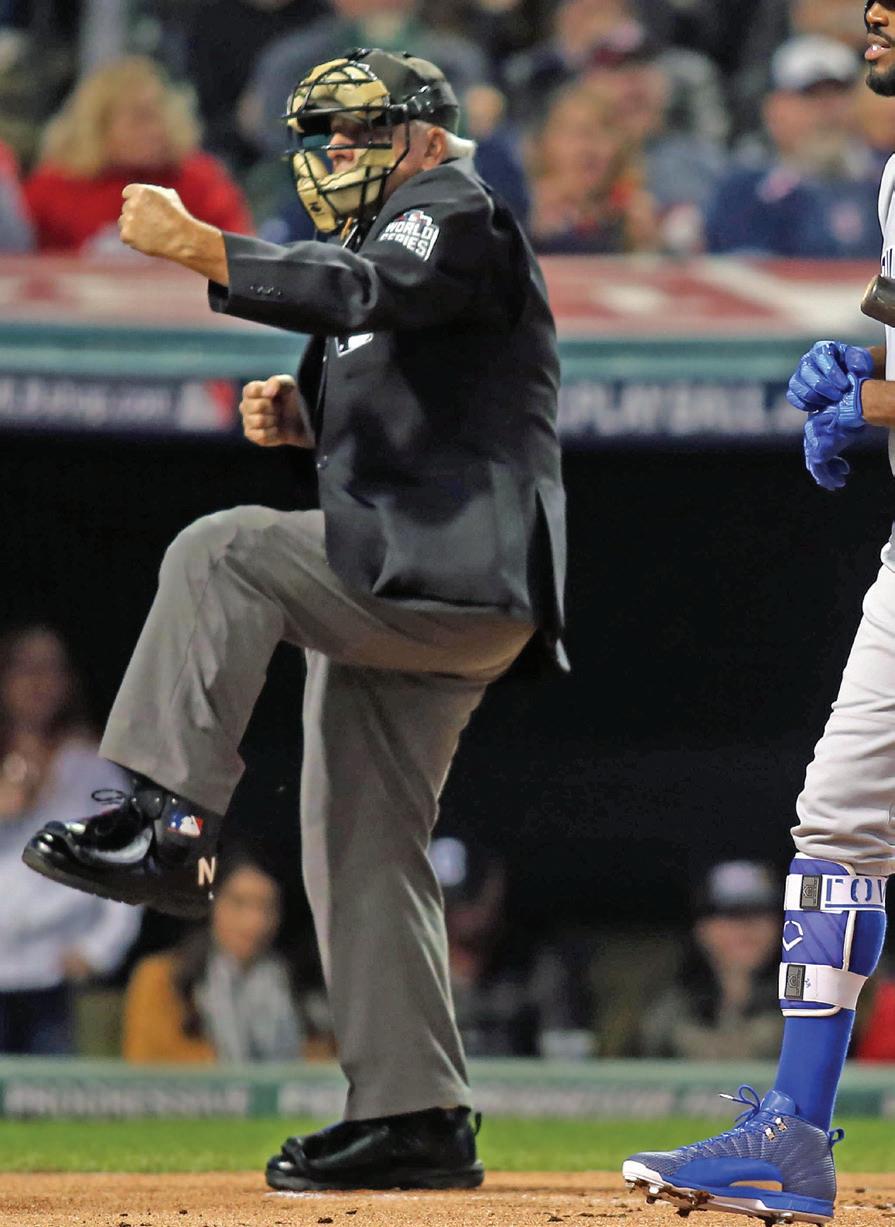
In a lengthy career that has included a World Series, three World Baseball Classics, numerous League Championship and Division Series and two All-Star Games, being named a crew chief is Vanover’s highest honor. Before the 2014 season, Vanover got a phone call from Joe Torre promoting him to lead his own crew, when Tim McClelland retired.
“We had several good talks that winter,” Vanover said, recalling the conversations with baseball’s senior vice president for umpiring. “I had been acting crew chief while Tim was out for an injury, and Joe said I had done an excellent job and earned it. To be named a crew chief, like some of the greatest umpires ever, the people who mentored me, is an incredible honor.”
Now, several umpires who were on Vanover’s crew at one time or another — Alfonso Márquez, Marvin Hudson, Dan Bellino, Chris Guccione, Alan Porter and Dan Iassogna — have been promoted to crew chief.
“Larry is a leader. He goes about it quietly and his crew never has any drama. We all got along in the umpires room,” Márquez said. “I learned so much about people skills around him, and I’ve tried to use them in my crew. That will be one of his legacies to the game. He’s just a good person.”
Veteran MLB managers say Vanover’s sense of responsibility to the game is what stands out.
“Larry always gives it his best. He hustles. I loved having him work our games. He can defuse a situation so well with just his personality. You can always talk with Larry,” retired New York Mets manager Terry Collins said.
On May 24, 2019, Vanover worked first base during his 3,000th MLB game, and the hometown Minnesota Twins stopped the game to honor his accomplishment.
“I heard the public address announcer mention my name and that it was my 3,000th game. I thought, ‘What is going on here?’ I had no idea the Twins would do something so nice,” he said. “Then I looked up at the scoreboard and my picture was on the screen, and David Rackley and Jim Reynolds were coming over to congratulate me, and then it hit me.”
Vanover also participated in numerous key moments in MLB history. He is the first umpire to “stand” a call with replay under the expanded challenge system on Opening Day 2014.
“After we made the call, some officials from the Hall of Fame took our headsets and other equipment and sent it to Cooperstown, and a photographer took a picture of me and the technician, Timothy Akins, so we made it to the Hall,” Vanover said with pride.
To bookend that season, Vanover was behind the plate Sept. 28 for Derek Jeter’s final at-bat in Boston, and watched him get an infield hit and a standing ovation.
“The rotation just worked out that I was behind the plate. It was the last game of the season,” he recalled. “Jeter hit a high chopper to third and a pinch-runner came out. We stopped the game and Fenway Park went crazy.”
Two years later, Vanover’s crew was in Los Angeles for legendary Hall of Fame broadcaster Vin Scully’s last home series at Dodger Stadium. Umpires respected Scully and his knowledge of the game.
“Vin was such an incredibly classy person, and we loved him,” Vanover said. “He always treated umpires with respect and kindness.”
Long before the game, the crew was escorted to the press box, where they spent 15 minutes with Scully.
“It’s so good to see you, and thanks for coming up here to say goodbye,” Scully said to them as dozens of pictures were taken. Then, as they did every game after going on the field, the umpires turned to the press box and collectively tipped their caps to the most beloved announcer in baseball. Scully returned the gesture with a wave to the crew.
A few days later, Vanover got another call from Torre telling him he was going to work his first World Series and would open it behind the plate in Cleveland.
“I was fortunate. I had two outstanding pitchers, Corey Kluber and Jon Lester, and Kluber had his best stuff,” Vanover said. “As we were going through ground rules, I thought to myself, it’s taken 35 years to get here, but here I am. I was complimented on my plate job by my crew and some MLB executives and club personnel.”
“Larry deserved to be there; he had worked very hard,” said Hirschbeck, the 2016 World Series crew chief.
30 | REFEREE June 2024 ‘I WAS NOT FINISHED YET’
UPI / ALAMY STOCK PHOTO/ AARON JOSEFCZYK
Vanover rings up Chicago Cubs leadoff hitter Dexter Fowler during the first inning of Game 1 of the 2016 World Series in Cleveland.
“He is a longtime friend, and I was very proud of him.”
History Lessons
In his career, Vanover has gotten to know hundreds of people and spend time with them. Retired San Diego Padres pitching star Randy Jones is a favorite who often visits Vanover before games, and the two MLB veterans talk about how the game has changed during their time on the field.
“Randy came up to the big leagues before I did. We usually start with baseball, then go back to pheasant hunting, then it’s back to baseball and our love of the outdoors. But a lot of the conversations are about our families and our love for dogs and bird hunting,” Vanover said. “It’s always wonderful to see him. He’s one of my favorite people.”
While Vanover is a student of the game, he is also a student of American history and a joyful tourist off the field. A voracious reader, he has read hundreds of books about the American Revolution, the Civil War and American presidents.
“Union Gen. Ulysses S. Grant was a superb battlefield general and an underrated president,” Vanover said, offering his opinion of America’s 18th president. “Gen. George Patton was also an excellent general.”
During the season, you may see Vanover visiting historic sites in whichever city he works. He has traveled to the Civil War battlefield in Gettysburg, Pa., Maryland’s Antietam, and to George Washington’s home at Mount Vernon, Va. And because of friends he’s made on the road, he’s receieved behind-the-scenes tours of Air Force One and the Speaker’s Balcony on Capitol Hill, and he’s sat and talked with Army soldiers at Arlington National Cemetery as they prepare for their shift guarding the Tomb
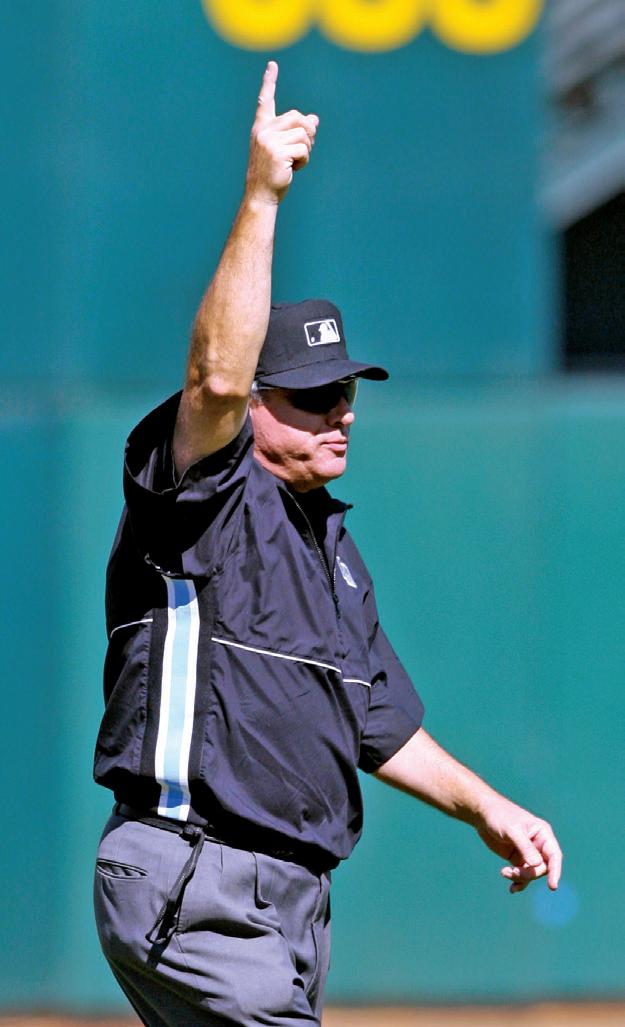
of the Unknown Soldier. He has been to Grant’s Tomb and spent hours at Theodore Roosevelt’s Sagamore Hill, N.Y., home.
“From late February to October, I’m on the road,” he said. “This is the most beautiful country in the world, and during the summer our great country is my backyard. And I’ve been fortunate to umpire in Japan, Taiwan and Panama for MLB.”
And he’s met hundreds of interesting people along the way.
“We’ve had President Bush, Sen. John McCain and entertainers come down to the umpires room before games to say hello. Every day is an adventure,” he said.
Vanover and his wife, Dianne, have big plans for their next stage of life. An outdoorsman, Vanover owns two horses, and he loves to ride.
“When I am home during the offseason, or on an off day during the season, I take my dog and go up to the stable and spend time with the horses,” he said.
After the unexpected death in October 2018 of one of their twin sons, Tyler, Vanover and Dianne began formulating plans to establish a foundation to
Vanover signals an infield fly during a regular season game in 2006. The 2024 season will be Vanover’s last, bringing to a close a long career in pro baseball.
protect animals and preserve Tyler’s memory.
“Since birth, Tyler had many health problems, and then we lost him, and we miss him today so much,” Vanover said, his voice cracking with emotion. “There’s not a day Dianne and I don’t think about Tyler.”
Vanover’s surviving son, Austin, travels regularly with his father while working on finishing his college degree, after earning a college football scholarship.
Vanover is also the main sponsor of the Owensboro Bombers American Legion baseball team. Since taking an active role in the club’s operations, they’ve won three consecutive Kentucky state championships.
AT A GLANCE
Age: 68 |Residence: Owensboro, Ky.
Current role: MLB crew chief
Family: Married to Dianne; two children: Tyler, who died in 2018, and Austin
Vanover started working NL games in 1991 and joined the full-time staff in 1993. He worked the 1999 and 2013 All-Star Games, the 2013 ALDS, 2016 NLDS, 2003 and 2007 NL Championship Series, the 2011 AL Championship Series and the 2016 World Series. Named an interim crew chief in 2014; became a permanent crew chief in 2015.
Umpired his 3,000th MLB game on May 24, 2019. He also worked the World Baseball Classic in 2009, 2017 and 2023.
“I’m proud that a team I played on 50 years ago is back, and we’re creating something for the American Legion program so these young players can grow their love of the game,” he said. “It also gives them a place to go and belong in today’s challenging world.”
Now in the middle of his final season, Vanover is looking back on his nearly 45 years in professional baseball with a sense of accomplishment and immense gratitude.
“I am the son of a truck driver and homemaker/ bookkeeper from Owensboro, Ky.,” he said. “I think my parents would be proud of me. I am grateful to MLB, and I have had so many people help me along the way, and I’ll never forget that.
“I am excited about what the next chapter of life will bring, because this one has been pretty good.”
Dan Ronan is a Washington, D.C.-based journalist, retired college baseball umpire, and high school and small college basketball referee.
REFEREE June 2024 | 31
BILL GREENBLATT/UPI
BASEBALL
PITCH PERFECT
Find the Strike Zone That Works Best for You
 By Jon Bible
By Jon Bible
Top-notch umpires are superb plate umpires. They’re the ones most likely to be chosen for plum games and to move up the ladder. They’ve mastered the appropriate strike zone for the level of ball they work and they’re consistent, regardless of the conditions. They also call strikes.
I’ll expand on both concepts.
At every level of ball, the participants expect certain things. There are written and unwritten rules, and to succeed an umpire must know both sets and which ones to implement when. This is true of the strike zone. Having umpired at every level from tee ball to minor league Double-A, I know of none at which the zone is enforced precisely as defined in the book.
For example, a higher strike must be called in Little League than in college because otherwise games will last forever. In college, the emphasis on expanding the top in recent years has resulted in higher strikes being called than in yesteryear, but we still don’t see strikes called as high as the book says.
So ascertain the “real” zone in your level of ball. Work scrimmages; sometimes you can sound out the coaches. Talk to the top umpires in your area. Zero in if you’re on the bases with a solid umpire behind the plate.
I believe many umpires are too tight on low and corner pitches. I’m not talking about ringing up pitches at shin level or three inches off the plate; I mean going to the outermost limits of the zone. The black border around the plate is part of it, and if I thought that one thread of the ball passed over one grain of that border, my right hand went out. Similarly, a thread of the ball catching the bottom of the batter’s knees when the pitch passed over the plate made it a strike. Pitchers are taught to keep the ball
32 | REFEREE June 2024 EDITOR:
stittrington@referee.com
SCOTT TITTRINGTON
MECHANICS, PHILOSOPHY
RULES,
HESTON QUAN
Solid plate umpires, such as Martin G. Ramirez, Santa Ana, Calif., know the appropriate strike zone they must call for the level of play they are working. By doing that, they don’t miss strikes.
down and work the corners, and we need to umpire accordingly.
When I was a college coordinator and ran clinics, I regularly made a statement that many umpires said helped them: From the time it leaves the pitcher’s hand, assume the pitch is a strike unless it convinces you otherwise. Too many umpires I’ve seen over the years seem to have the opposite philosophy.
I once worked a college game with an umpire with the proverbial postage-stamp zone. It lasted 3 hours, 31 minutes and featured as much head-shaking and griping by people as they figured they could get away with. Afterward, my frustration boiled over when he said he thought he only missed two pitches. I replied, “Yeah, per batter is about right.”
I never gave catchers a break so I could stay on good terms with them, as I’ve heard some folks do. I was equally liberal on the inside and outside parts of the plate. Finally, I didn’t change my zone in lopsided games. I once worked an NCAA tournament game where a team down, 15-0, in the seventh inning came back to win, 18-15. If I had stretched the zone when the game seemed out of hand, it would have been hard to make it legitimate again when things tightened up.
As for consistency, I think that takes 3-5 years at any level of ball. So don’t be too hard on yourself if you’re new to some level and aren’t yet consistent day in and day out. If and when you move to a higher level, the clock will start running again.
Some umpires start a game with a large zone to get the batters swinging and rein it in after 2-3 innings. I disagree with this philosophy. From the first pitch, everyone will pay attention to your zone — especially if they don’t know you — to see if you’re “liberal” or “tight.” If, midgame, you change — and there’s no way for you to announce what you’re doing — they’ll chalk it up to bad umpiring. Same thing with being liberal on the first two strikes of a pitch sequence to a batter but making the third strike really “be there,” which some umpires have told me is how they operate.
When I observed umpires, I looked for the one with the same zone in the 13th inning as the first, from batter A to B, and in the pitch sequence to each batter. Someone who wouldn’t get rattled by fans hooting, by weather conditions or the length of the game, or if he thought he may have missed a pitch. It takes years to get there. Apart from the fact newbies cannot yet have mastered the strike zone, they may get killed because they don’t know how to handle weird situations and troublesome players and managers.
One thing that helped me was to visualize myself calling pitches. In my mind’s eye, I would see all kinds being thrown to different spots and evaluate whether they were strikes. When I got in games with live pitching, I had in effect already seen it.
I checked with my partner after the first couple of innings to see if I was “on” that day. We may think we’re doing fine when our zone is actually larger or smaller than it should be. And I re-assessed if catchers or pitchers grumbled, especially ones I knew — most players are pretty honest — unless I knew them to be chronic whiners.
As for how catchers catch pitches, some umpires call strikes only if they’re received “properly,” meaning the catcher doesn’t reach for it or flip his mitt on a low strike. I call this the pro influence — we see it in professional games and hear it advocated in clinics and camps.
The pro and amateur games are different. Amateur umpires can’t expect catchers to be as adept as the pros, and this is truer in youth leagues. We can’t afford the luxury of judging pitches based on how they’re caught. I don’t mean ring up strikes if catchers are doing cartwheels; instead, I’m saying don’t penalize them for subtle movements such as going outside the frame of the body for a pitch. Doing this isn’t fair to the players and will make games drag on endlessly.
Jon Bible, Austin, Texas, worked seven NCAA Division I College World Series. In 2019, he was inducted into the National College Baseball Hall of Fame in Lubbock, Texas.
BY THE NUMBERS
In a social media poll conducted on Referee.com, baseball umpires were asked:
“What is the toughest call for you?”
Of the 144 respondents, nearly half — 43% — answered hit-bypitch/foul ball decisions. Another 30% opted for rulings involving whether a batted ball has struck a hitter. The final 27% selected polebender decisions on fly balls hit near a foul pole.
QUICKTIP
Umpires have an assortment of balms, ointments and sprays at their disposal during a season, both for the purposes of taking care of aches and pains, and for keeping their gear clean. It’s a good idea to keep these items in sealed plastic bags inside your gear bag, no matter their packaging. The last thing you want is a leaking tube or bottle making a mess of your hats or uniforms.
SIDELINE
MLB Announces Umpire Camps
MLB has unveiled the schedule for its five one-day MLB Umpire Camps for 2024.
The first camp took place April 20 at the Jackie Robinson Training Complex in Vero Beach, Fla. Remaining camps will be held May 18 at Las Vegas Ballpark in Las Vegas; June 29 at the Kansas City Urban Youth Academy in Kansas City, Mo.; July 27 at Truist Park in Atlanta; and Aug. 24 at CHS Field in St. Paul, Minn.

The camps, which are free to attend, are an opportunity for aspiring professional umpires to be observed and taught by MLB’s Umpire Supervisory Staff. At the conclusion of each camp, finalists will undergo a vetting process and may be invited to the four-week MLB Umpire Prospect Development Camp in January 2025 at the Jackie Robinson Training Complex. Following the development camp, jobs are offered into Minor League Baseball for the 2025 season.
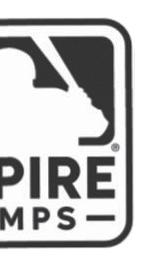
REFEREE June 2024 | 33
TEST YOURSELF
In each question, decide which answer is correct for NFHS, NCAA or pro rules. Solutions: p.81.
1. Between innings, the current pitcher returns to the mound and begins throwing warmup pitches. The head coach then tells the plate umpire he is bringing in a relief pitcher to face the leadoff hitter. The current pitcher is not injured or ill.
a. If the current pitcher goes to the mound but has not started his warmup throws and is not ill or injured, he may be replaced.
b. The current pitcher must pitch to the first batter of the inning unless a pinch hitter is substituted or the current pitcher becomes ill or injured.
c. This is legal
d. If the current pitcher leaves the dugout but has not crossed the foul line, he still must retire the first batter of the inning before he can be replaced.
2. A conference is held on the pitching mound with the head coach and all infielders that results in the pitcher being replaced. The conference is concluded when:
a. One of the players initially starts to return to his position.
b. The head coach leaves the dirt circle of the pitching mound.
c. The new pitcher begins his eight warmup pitches.
d. The head coach crosses the foul line on the way back to the dugout.
e. B or C.
3. An obstructed runner who is being played on and is returning to a base is awarded:
a. The base to which he was returning.
b. A mandatory two bases.
c. A minimum of one base beyond the base he had last legally touched before the obstruction.
d. There is no minimum award for an obstructed runner returning to a base.
4. Each team receives one extra defensive and offensive charged conference for each extra inning played.
a. True.
b.False.
Equipped to Rule Correctly?
By George Demetriou
Baseball players do not have nearly as much equipment as football players, but there is enough equipment in and about the dugout where play can be altered by items placed where they are not supposed to be. Unless otherwise noted, the material applies equally to NFHS, NCAA and pro rules.
Detached Equipment
Probably the most obvious use of equipment in a manner not intended is when a fielder throws his glove at the ball, or uses his cap or mask to intentionally catch, stop or deflect the ball. In those cases, the ball remains live (delayed dead ball) and runners may advance beyond the awarded base at their risk. The penalty varies based on the status of the ball and the award is from the last base touched at the time the ball is illegally contacted. There is no penalty if the above acts are attempted and the ball is not
Ahand by the force of a thrown or batted ball, or if the glove comes off in a legitimate effort to make a catch (NFHS 8.3.3F; NCAA 8-3g; pro 5.06b4B-E Cmt. 1 & 2).
The penalty for using detached equipment on a pitched ball is a onebase award in NCAA and pro, and a two-base award in NFHS (NFHS 8-33c1; NCAA 8-3g3; pro 5.06b3E).
Play 1: With R1 on first, a wild pitch deflects off the catcher’s shin guard. As the ball is about to roll into the dugout, F2 throws his glove at the ball and stops it. When the ball hits the glove, R1 had already rounded second. Ruling 1: In NFHS, R1 is awarded home — two bases from the time of the touch — while in NCAA and pro, he is awarded third base — one base from the time of the touch.
The penalty for using detached equipment on a thrown ball is a twobase award (NFHS 8-3-3c1; NCAA 8-3g2; pro 5.06b4E).



Play 2: With a runner on first, B2 hits a line-drive base hit into left field. R1 is approaching second as F7’s high throw is knocked to the ground by Ruling 2: play stops, the umpires shall ensure all runners get at least two bases from the time the ball was touched by the


touched. Also, there is no penalty if the glove is carried off the fielder’s F4’s thrown glove. Once all thrown glove.
Using detached equipment on a fair batted ball or a foul ball that has a chance of becoming fair is a threebase award (NFHS 8-3-3b; NCAA 8-3g1; pro 5.06b4B). If the thrown

If a fielder throws his glove at and hits a fair batted ball, or a ball that, in the umpires’ view, has a chance of becoming fair, each runner, including the batter-runner, is awarded three bases in all three rule codes. However, it’s important for the umpiring crew to remember this is a delayed dead ball situation and the batter-runner is liable to be put out if he tries to score on the play.
34 | REFEREE June 2024 BASEBALL
glove prevents a fair batted ball from going over a fence in flight, it is a four-base award (NFHS 8-3-3a; NCAA 8-3h; pro 5.06b4A).
Play 3: B1’s high fly is along the right-field foul line. The right fielder cannot make the catch and while standing on the foul line, F9 throws his glove at the ball, causing it to go over the fence in foul territory. Ruling 3: The umpire must judge whether the ball was fair or could have gone fair. If so, B1 is awarded four bases. If the ball was clearly foul, there is no penalty and it is simply a foul ball.
Helmet Thrown
A batter or runner is also out for interference and the ball is immediately dead if he intentionally interferes with a thrown or batted ball by dropping the helmet or throwing it at the ball; any runners return. No interference is called and play continues if a batting helmet is accidentally hit by a ball, even if it is intentionally detached (NFHS 2007 Interp No. 2; NCAA 6-2h; pro 5.09a8 Cmt.).
Play 4: B1 tops a ball that rolls along the first-base line. While the ball is in foul territory, he throws his helmet at the ball and deflects it farther foul to prevent it from rolling
fair. Ruling 4: The ball is dead and B1 is out. He cannot intentionally deflect either a fair ball or a foul ball that has a chance of becoming fair.
Wayward Bats
The advent of metallic or composite bats has almost completely brought an end to the launching of a bat fragment, but there is still some amateur baseball played with wood bats. Such missiles are part of the game and the play stands. However, if a whole bat is released and interferes with a defensive player attempting to make a play, interference shall be called, whether intentional or not (NFHS 7-3-6; NCAA 7-11n; pro 5.09a8 Cmt.).
A batter-runner has some responsibility on where he throws his bat so that it does not interfere with a defensive player making the initial play on the ball. However, any touching of a static bat in fair territory is ignored. In foul territory, the bat is a foreign object and any touching kills the ball and makes it foul (NFHS 2.16.1D & Cmt.; NCAA 7-11n Note; pro 5.09a8 Cmt.).
Additionally, NFHS addresses carelessly thrown bats (3-3-1c). The penalty is a team warning with ejection of any subsequent offenders.
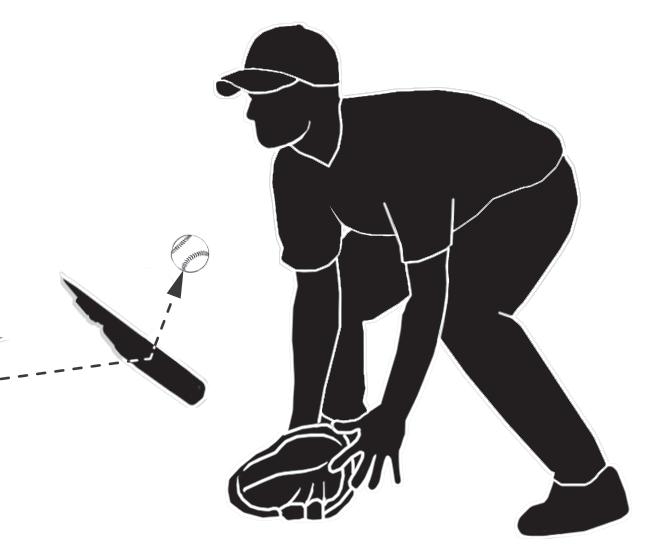
The bat does not have to touch anyone for the warning to be given. By interpretation in NCAA and pro, umpires should warn such offenders and eject anyone who persists.
Loose Equipment
There are various provisions regarding interference involving the on-deck circle and the dugout area, but they are in regard to the on-deck batter or other offensive players failing to vacate space needed by a fielder to field a batted or thrown ball; in such circumstances the batter would be out (NFHS 2-21-1a, 3-23, 7-4-1f; NCAA 5-3, 8-5q; pro 3.10, 5.10k).
Play 5: B1 hits a high foul ball that initially appears it will go over the backstop. Instead, the ball stays in play and drifts toward the firstbase dugout. The on-deck batter, in an effort to avoid the ball, moves out of the circle, but not quickly enough. F2 runs into the on-deck batter and the ball falls uncaught. Ruling 5: B1 is out due to his teammate’s interference. Intent is not a factor. In the case of loose equipment in NFHS — such as gloves, bats, helmets or catcher’s gear lying on the field — the umpire may call an out(s), award bases or return runners, based on

REFEREE June 2024 | 35 If
and
a
is
and
occurred and should be ruled.
C
a bat breaks and comes in contact with a batted ball (PlayPic B), there is no interference
the ball remains live. If
whole bat
thrown
interferes with a defensive player attempting to make a play (PlayPic C), interference has
B
CASEPLAYS
Too Late
Play: Green bats out of order and doubles. His coach immediately sends Goliath up to pinch hit. The defensive coach responds by telling the umpire to put Goliath on. The defensive team then realizes Green batted out of order and appeals. Ruling: Green became the proper batter and the results of his time at bat were legal when the intentional base on balls to Goliath was granted (NFHS 7-1-1 Pen. 3; NCAA 7-11a3; pro 6.03b3).
No Snitch Needed
Play: After a visiting team player bats out of order, the official scorekeeper informs the plate umpire of the infraction. Ruling: The umpire shall ignore the information until if and when the defense legally appeals. The umpire should also advise the scorekeeper that any subsequent indiscretions on the scorekeeper’s part shall result in removal from the game (NFHS 7-1-1; NCAA 7-11a Note; pro 6.03b7 Cmt.).
Extra Base After All
Play: B1 singles to right and goes a third of the way to second. F9 catches F3 by surprise by throwing behind the runner, but F3 obstructs B1, who is trying to return to first. Ruling: B1 is awarded second. An obstructed runner who is being played on and is returning to a base is awarded a minimum of one base beyond his position on base when the obstruction occurred (NFHS 8-3-2; NCAA 8-3e; pro 6.01h1).
No Return
Play: With R1 on first, B2 singles. R1 fails to touch second base and is standing on third when the throw from F9 goes into the dugout. Ruling: R1 cannot legally return to his missed base and is subject to being declared out upon proper and successful appeal (NFHS 8-2-5; NCAA 8-6a Note 2; pro 5.09c2 AR B).
Not So Fast
Play: B1 swings at and misses the third strike. The ball lodges behind the catcher’s chest protector. While everyone is looking for the ball, B1 touches first base and advances to second base before the ball is discovered. Ruling: B1 is awarded only first base (NFHS 5-1-1f5, 8-3-3d, 5.2.1B; NCAA 8-3k; pro 5.06c7).
his judgment and the circumstances concerning the play if play is altered. In NCAA and pro, there is no penalty associated with loose equipment. A ball that strikes such equipment remains live, except in pro if the equipment prevents a ball from going into the dugout, the ball is dead. Equipment in the on-deck circle is considered authorized to be on the
field and any play stands (NFHS 1-37; NCAA 1-16d; pro 3.10, interp.).
Play 6: Same as play 5, except F2 trips over a bat in the on-deck circle and the ball falls uncaught. Ruling 6: Foul ball. Since the equipment is legally on the field, interference cannot be called.
George Demetriou, Colorado Springs, Colo., is the state’s rules interpreter.
Rule First, Discuss Second
By Scott Tittrington
Noumpire
wants to “guess” on the baseball field. We are paid to officiate what we see, not what we “think” we see.
That said, there are times when umpires have to make educated guesses on certain plays, and they have to be willing to do so rather than simply putting their hands in their pockets and choosing not to make a call.
Such an example was brought to my attention recently during a pregame discussion with my partner prior to an NCAA Division III baseball game. During a phone conversation earlier in the day, my partner had mentioned our game
together would be just his third college game ever and he was open to any and all instruction and advice I was willing to offer as the more seasoned member of our crew. This was good information for me to have, as I knew the pregame in the locker room would take on added importance and would need to be more in-depth than if I was working with someone with whom I had taken the field regularly.
As we chatted while getting dressed, I went through a detailed two-person umpiring crew pregame and then asked my partner if there were any questions or any particular types of plays he wanted talk about before we headed out to the field.
“How are we supposed to
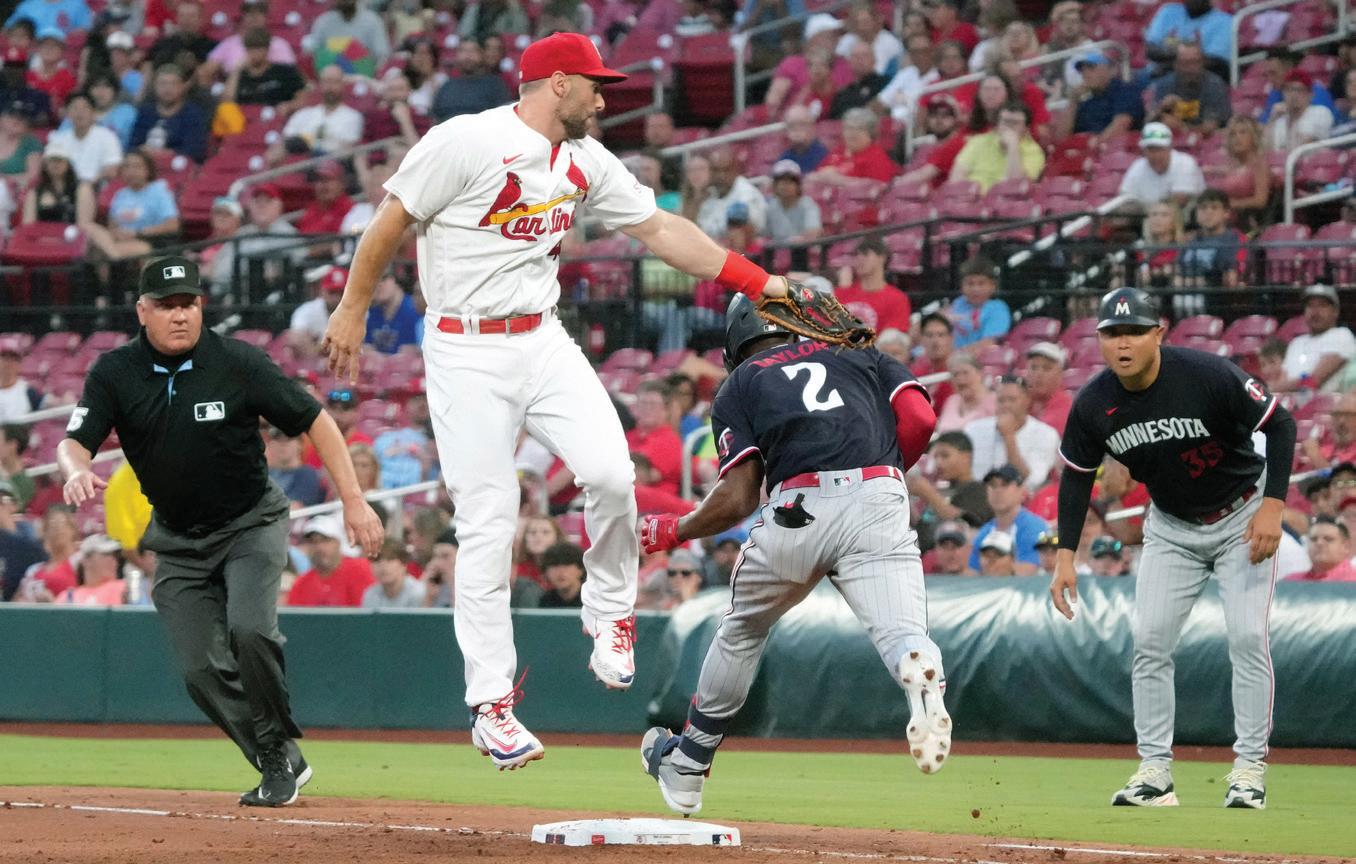
BASEBALL
BILL GREENBLATT/UPI
36 | REFEREE June 2024
While he may not have the best look at this play, Jeff Nelson, St. Paul, Minn., is responsible for making the initial ruling. He may then confer with other members of the crew to see if anyone has different information.
handle this situation?” came the reply, followed by this paraphrased description: During his game earlier in the week while working on the bases, my partner found himself straightlined on a swipe tag at first base. He did not have definite information whether a tag had been applied. And so he did the worst thing we can do as an umpire: He mentally froze. Rather than making an educated guess based on the information he had at his disposal, he pointed to the plate umpire and asked, “What have you got?”
Fortunately, in this example, the plate umpire was doing exactly what he was supposed to do, trailing the batter-runner up the first-base line while keeping an eye out for a possible pulled foot at the bag and, yes, a possible swipe tag. As such, he did have a good look at the play and was able to respond to his partner’s query with a ruling.
But what would have happened if the plate umpire did not have a
good look at the play? What if, while moving up the first-base line, PU tripped and fell? What if the angle of the play left PU straightlined and unable to see whether there was a tag? Or what if it was PU who had the brain cramp and failed to follow proper mechanics, standing at the point of the plate while all of this developed?
All of these are reasons why it is important the correct umpire, according to the umpiring system being utilized, makes the initial ruling on a play. In two-umpire mechanics, every play at first base belongs to U1, unless U1 has gone out on a trouble ball from the A position.
So how to handle my partner’s situation? It’s his responsibility to make an initial ruling. Once that happens, if a coach comes out for a discussion about the play and asks U1 to get help from the plate umpire, U1 may certainly do so — and if U1 is not 100% certain of the initial ruling, should do so.
At this point, a discussion takes place between the two umpires after the coach has returned to his dugout, and if the plate umpire has concrete information about the play to share with U1, does so. Again, this is not an opportunity for PU to guess, speculate or offer up what may have happened. Armed with whatever information PU has shared, U1 should then either confirm the initial ruling or overturn it.
Yes, at the end of the day, what we are seeking more than anything is to get the call right. But it’s just as important to remember, by mechanic, there is also a right way to get the call, and we must follow it or risk having our credibility damaged for the remainder of the game.
Scott Tittrington is an associate editor at Referee . He umpires college and high school baseball, and officiates college and high school basketball and high school football.








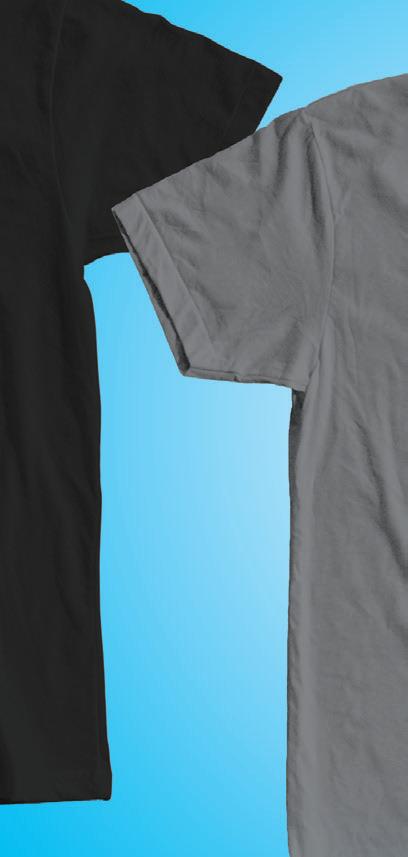



WEAR YOUR PRIDE WITH SHIRTS



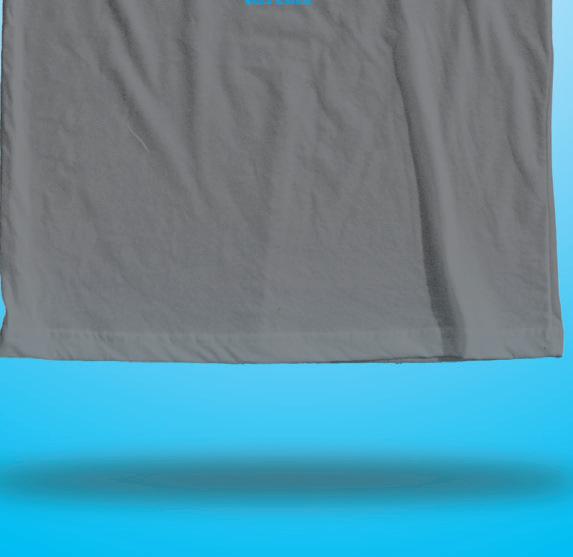

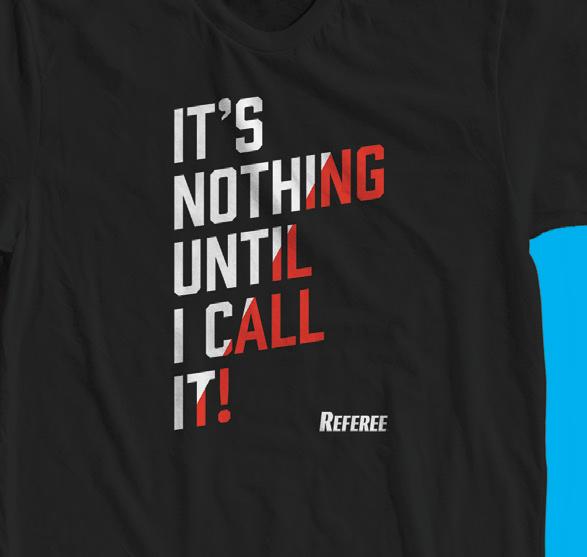










ONLY$19 EACH ORDER YOU SHIRT TODAY! STORE. /CLOTHING SUPPLIES LIMITED





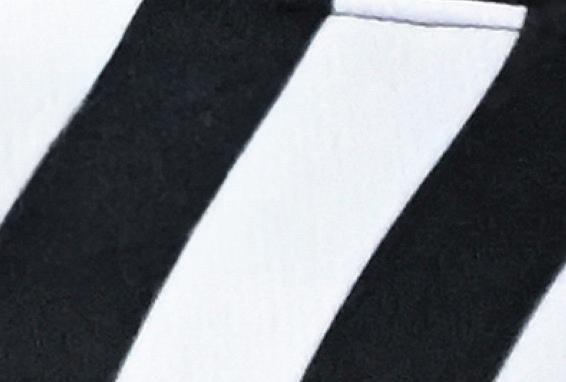





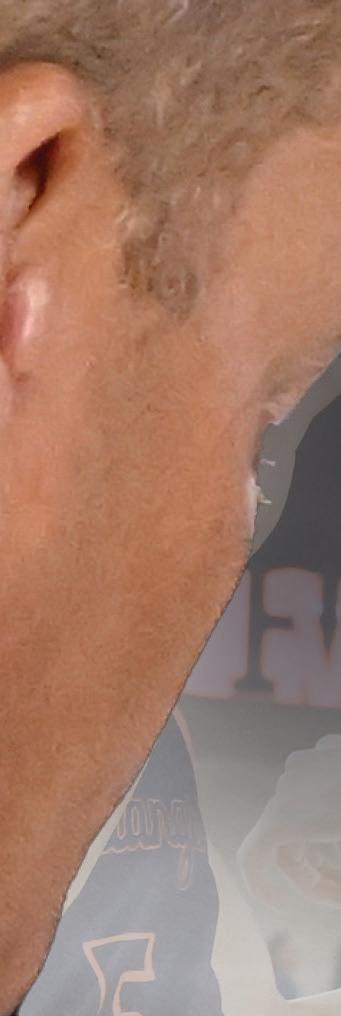



 By Suzanne Dodd
By Suzanne Dodd





WHEN FOG












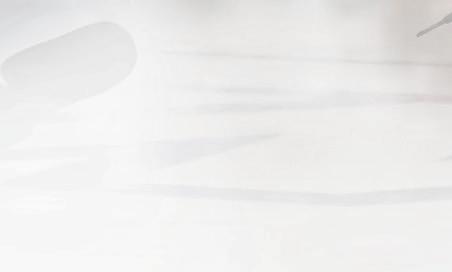



38 | REFEREE June 2024












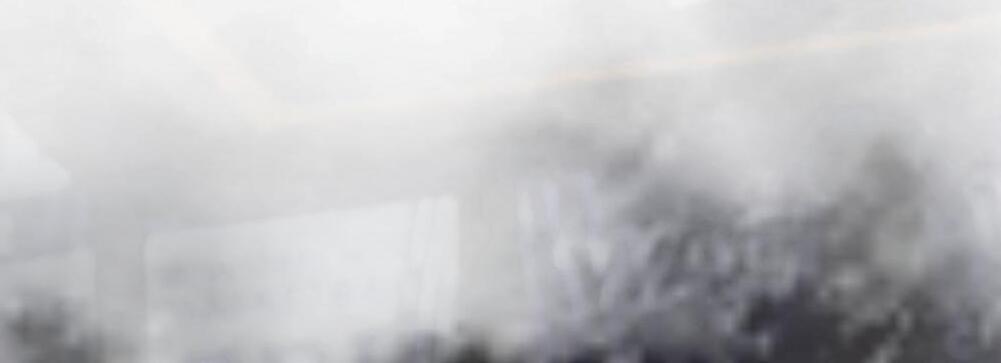







WHEN THE ROLLS IN

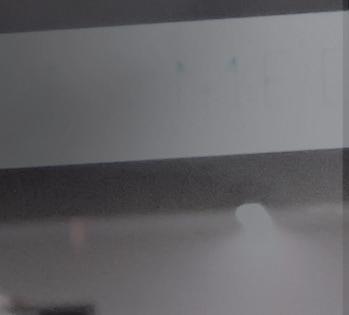





OFFICIATING LONG DAYS IS INEVITABLE. HOW CAN WE COMBAT DECISION FATIGUE?



Yare regularly working eight or more matches a day, sometimes for two, three or more days in a row. The physical demands of standing upright — sometimes on concrete — for hours at a time take a toll on officials’ bodies.
but cognitive resources are limited and get depleted. When depleted, people tend to make poorer decisions by losing self-control, by procrastinating decisionmaking or by avoiding making decisions altogether. All of these psychological outcomes can lead to officiating problems.
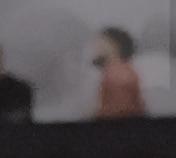

In baseball or softball, it can be challenging to stay alert and strong in doubleheaders outside in all kinds of weather, carrying the weight of protective equipment and constantly squatting behind home plate. Soccer and football referees experience the added physical demands of running and sprinting with little rest in between games.



ou’ve been accepted to officiate another tournament. Maybe you’re working a doubleheader or even a tripleheader. Maybe you’ve signed up for two games, but due to a change in schedules, you’re now working four games. Officiating multiple games is hard work! Those assignments are physically exhausting — long days of walking, running, sprinting, squatting, standing, etc. The physical demands take their toll, but the mental demands can be equally exhausting. Take the world of juniors’ volleyball where tournament days are long and tiring. Matches begin at 8 a.m. and 12 hours later, hopefully the last match of the day is beginning. Volleyball officials
The psychological demands of officiating, including the long hours of decision-making, also fatigue an official. Making decisions takes cognitive effort,
Consider this hypothetical situation that illustrates how quickly the number of decisions adds up in a volleyball match. Let’s say a match ends with the score 25-20, 25-20. That’s 90 plays in one match. What if there were only two decisions to make per play: when to authorize the serve and when to end the play? That would be 180 decisions in that match. Now multiply that by eight matches. That’s 1,440 decisions. And the majority of those would be easy decisions. But we know that’s not realistic for volleyball. A more realistic match involves multiple decisions made in between plays. Consider these.






REFEREE June 2024 | 39
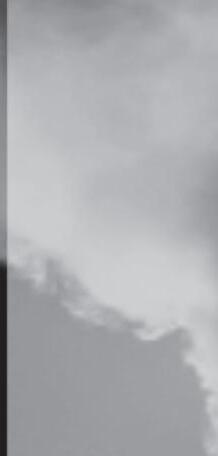












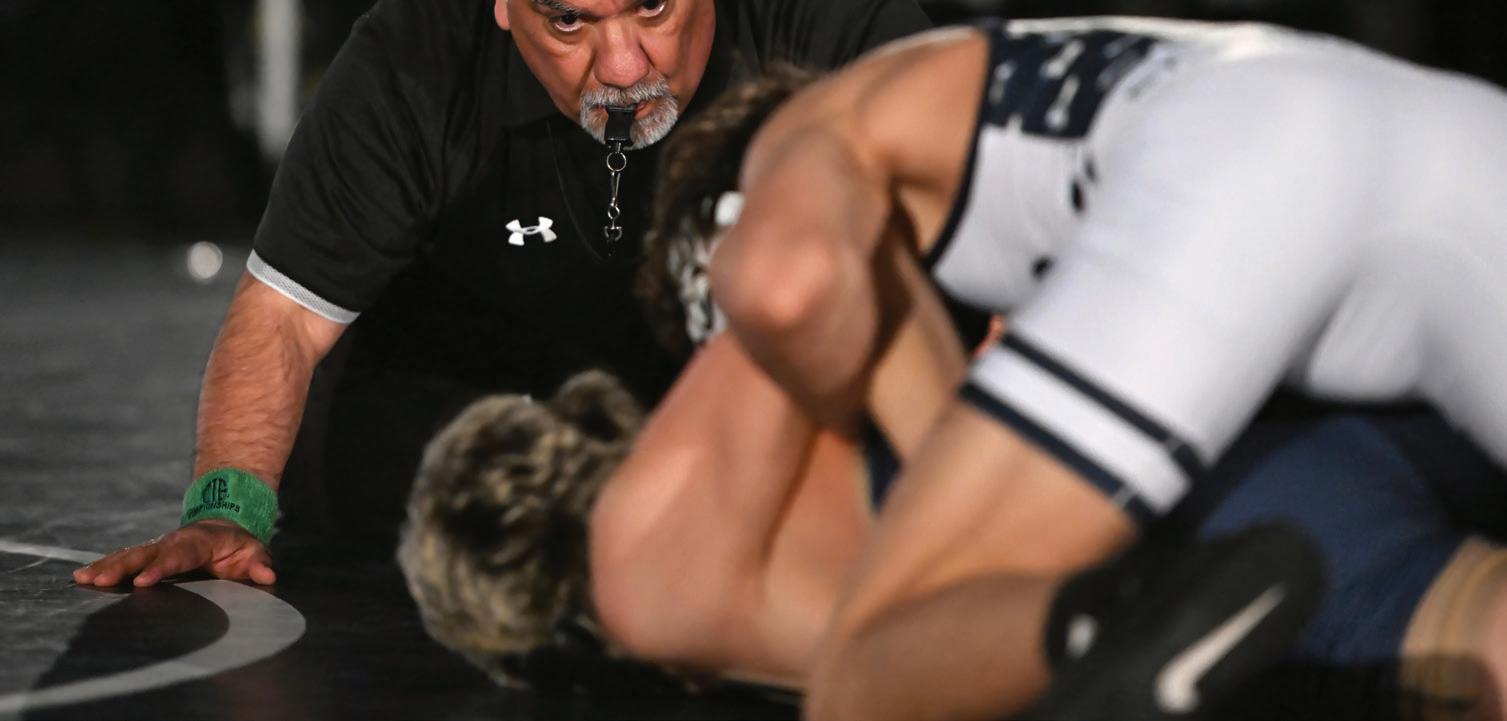

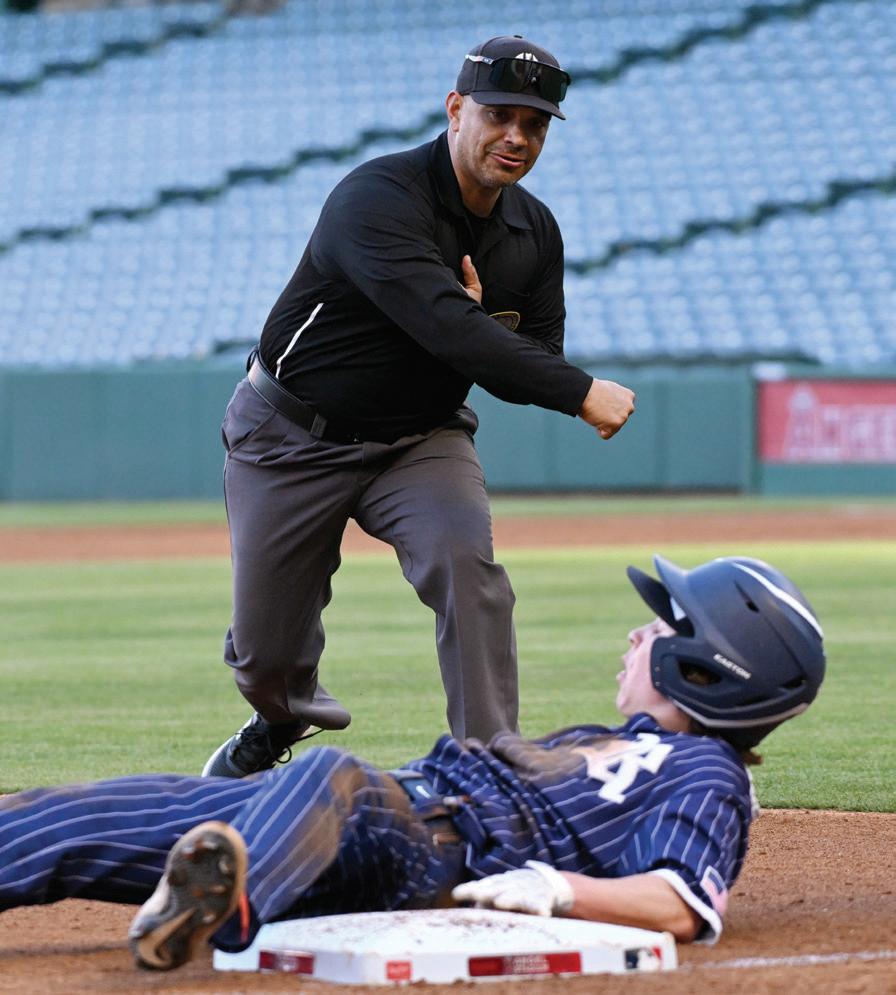
During each scan, the referee looks to see if team A is ready and in the correct position, if the second referee is ready, if team B is ready and is in the correct position, and if the server has the ball and is ready to serve. That’s a minimum of six decisions, but likely more, and that’s before the play has even started. Let’s use that figure in the abovementioned hypothetical 90-play
match. That’s an additional 540 decisions. Over the course of eight matches, that’s 4,320 more decisions made.
But that’s not realistic either. We haven’t even considered decisions made each play.








decisions are made before getting matches started, such as when to begin warmups, how to train a work crew, dealing with spectator and coach behavior, appropriately timing a restroom break, finding the most direct route to the court, reconnecting to Wi-Fi for score entry, etc.

During play, the first referee judges the legality of every ball contact, legality of the server’s position, whether or not the ball touched a blocker, the take-off point for the back-row attacker, the height and position of the ball in relation to the net, the position of opponents near a player across the center line, whether a blocker touched the net in the act of playing the ball, if the ball crossed the net outside of the antenna, if a stray ball from another court interfered with play, the termination of the play, location of the ball when it lands (in/out), reliability of the line judge’s decision and many, many more possibilities. Over the course of one match, this results in thousands of decisions. Over the course of a “normal” eight-match day, this results in tens of thousands of decisions.
There’s more though. Let’s not forget all the “outside the game” decisions made to ensure smooth match flow. Many

Baseball and softball umpires share similar experiences. All umpires contribute to the game, but the plate umpire’s role is much more impactful. The plate umpire makes decisions on every pitch: legal pitch, in the strike zone, too high, too far outside, foul tip? If the ball is hit down the foul line, the umpire determines if it’s fair, if the fielder obstructs the runner, if the runner stays in the base path. All of these decisions must be made in a split-second. And the decision-making accumulates over the course of a game and a tournament day with multiple games.
Basketball referees must make an abundance of decisions constantly throughout a game. Along with judging the legality of every dribble, every screen, every jump stop, every rebound, referees make decisions regarding player position near the three-point line, defensive positioning during a drive to the basket and whether body contact is a foul or a flop. Decisions are made on shooting fouls, on flagrancy of fouls and on possession. Basketball referees are also constantly making decisions on positional adjustments to be in the best position to see the play. These decisions add up.

The result of all this decision-making is a phenomenon called decision fatigue. Repeated decisionmaking depletes cognitive resources and has been shown

40 | REFEREE June 2024
HESTON QUAN
Both wrestling officials and baseball umpires are used to working long days. Top: Anthony Ovalle, Pico Rivera, Calif.; bottom: Steve Mondragon, Perris, Calif.


to impair executive functioning, thereby leading to poorer decisions. The accumulation of decisions leads to the brain eventually looking for shortcuts — called cognitive heuristics — in decision-making that result in fewer deliberate decisions and decisions that yield undesirable outcomes.

Let’s look at how decision fatigue can impact an official. When championships are played at the end of a long day or a multi-day tournament and referees need to be at their best, they might actually be at their worst since the cognitive fatigue accumulates over the course of the tournament. The referee’s limited reserve of mental stamina becomes drained.
Toward the end of a tiring volleyball tournament day, instead of acting on the coach standing too close to the line judge, the referee may just ignore the coach’s location. Then, when the referee needs the line judge’s call, the line judge indicates he or she is obstructed from seeing the ball land due to the coach’s interference. Procrastinating addressing the coach’s position seems like a poor decision because now the referee is in a situation of uncertainty about the call. Research has shown the process of making choices is associated with procrastination tendencies.
A second shortcut is to allow another person to make a decision for us — called decision avoidance — which is the ultimate short-term response to mental exhaustion. This could occur in multiple ways. A volleyball first referee may blindly accept all line judge calls, even when they’re questionable, or leave it to the second referee to resolve a scoring issue, even when that individual is uncertain about how to fix it. A mentally fatigued volleyball referee may call a ballhandling fault, or a


basketball referee may whistle a foul, due to the reaction of the crowd rather than his or her own usually reliable judgment. A football referee may gather the crew together to discuss a play and lead with, “I’ll go with whatever you tell me you saw.” All of these examples of decision avoidance are possible because the referee has exhausted the resources necessary to dedicate more energy to make yet another decision.

A third attribute of decision fatigue is individuals show less persistence. Rather than remain consistently tight on judgment calls, the referee may grow increasingly more lenient since that means fewer decisions to make regarding the legality of play. When faced with an upset coach, rather than “stick to their guns,” the referee may appease the coach because that’s the path of least resistance. Conversely, an emotionally exhausted referee may be taken past his or her tipping point easier and tolerate fewer coaching antics. This may have the immediate

An umpire working the plate for multiple games in a single day will likely see several hundred pitches. Brian Peterson, Morehead City, N.C.
consequence of the coach being thrown out of the game or lead to long-term effects of burnout and ultimately withdrawal from officiating.
The cognitive shortcuts of passivity and avoidance may later lead to decision regret which is associated with feelings of sadness, guilt, shame or disappointment. Referees often leave the court wondering if a situation could have been handled differently. Regretting a decision is a negative cognitive and emotional phenomenon that may impact overall satisfaction and lead to burnout.


The cognitive shortcuts of passivity and avoidance may later lead to decision regret which is associated with feelings of sadness, guilt, shame or disappointment.
A behavioral outcome of decision fatigue is that emotions are felt more intensely. Frustrations may seem more irritating than usual because of the depletion of cognitive resources to deal with the situation. If officiating in extreme hot or cold temperatures, this inconvenience may be experienced at such a deep level that anger ensues and enjoyment plummets. A rowdy crowd or a difficult coach may be more than just an

REFEREE June 2024 | 41
CARIN GOODALL-GOSNELL








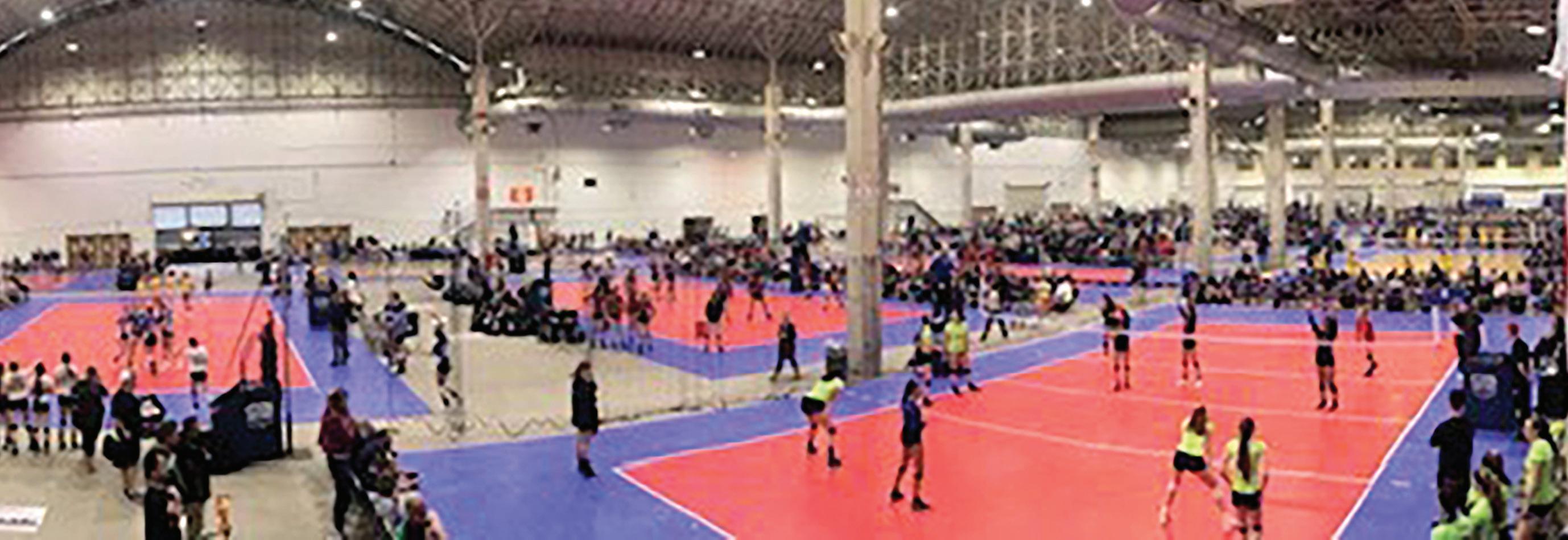


annoyance when the referee is mentally fatigued.
Psychological myopia is the tendency to focus on immediate information while ignoring other, less prominent pieces of information. Mental fatigue lessens the ability to consider alternative solutions and potential alternatives, which means the referee may take the first available option or solution that meets the condition. The physically and mentally tired soccer referee may fail to see the wide view — the defensive player on the far side of the field who keeps the attacking player onside. This results in

Top: Volleyball referees sometimes work 12 hours or more during tournaments.
Bottom: Soccer officials run miles during their games. Brian Navarette, Corona, Calif.

an erroneously called offside infraction. The juniors’ volleyball official, faced with reviewing a messy scoresheet, may find it difficult to find the error or determine if the scoresheet is accurate. In the pressure of the situation, rather than exploring further, the referee may defer to what the scorekeeper recorded rather than spending time finding the solution. Thinking outside the box is sometimes necessary in officiating.
Decision fatigue may also limit a referee’s creativity in favor of maintaining status quo. Consider a newer official who is still trying to adjust to the feel of

a tournament and who may be particularly susceptible to feeling overwhelmed and mentally exhausted at the end of the day. If a more experienced referee offers advice on how to improve an aspect of prematch management, for example, the newer official may instead decide to stick with the status quo. Resisting change allows for the newer official to reduce the mental energy necessary to learn a new routine.
Tips to Avoid Decision Fatigue
Making a correct decision is a critical component of officiating; therefore, we need to be aware of how to increase our decision-making prowess. Here are a few steps to avoid the fatigue that sets in from the mental overload caused by decision-making. Reduce necessary choices. Adopt a routine that minimizes decisions before the tournament even starts. Lay out uniforms the night before. Have a plan about what to eat and drink throughout the day. Know which route to take to the tournament site. Be familiar with the court or field layout and the most efficient path to the break room, to each court/field, to the restrooms, etc. Know the age groups and divisions being officiated and if

42 | REFEREE June 2024
BOB MESSINA, HESTON QUAN



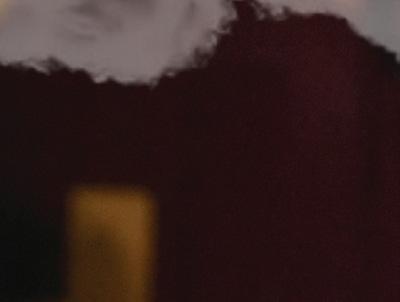

any special rules apply. Reducing the number of small decisions to make in day-to-day activities prolongs mental energy to make the difficult decisions later in the day.
Manage blood glucose levels. Studies show making decisions lowers our blood glucose levels. An additional research finding is that when glucose levels dip, decisionmaking suffers. Since the brain gets its energy from glucose, healthy snacking (e.g., nuts, dark chocolate, berries, tuna) throughout the day provides the brain with the energy it needs to avoid decision-making shortcuts, impulse decisions, passivity, decisional conflicts or regrets, and psychological myopia. Get rest. Research indicates certain situational factors can affect decision fatigue. Time spent on the task seems to be strongly related to decision fatigue. During a tournament, whenever possible, take breaks that involve not just physical relaxation, but also give the mind a rest. Short breaks could potentially alleviate decision fatigue. Additionally and not surprisingly, sleep deprivation and physiological

fatigue both play a role. And whenever sleep deprivation and high-pressure environments converge, people are particularly susceptible to decision fatigue. Get good sleep the night before a tournament and make sure fitness levels are sufficient to take on the physical demands of the event.
Assign varying levels of play. Assigners play an important role in reducing decision fatigue, too. Rather than assigning the top-tier officials to only the highest levels of play — where the complexity of the decisions may be high — mix in opportunities to officiate at lower levels of competition where the stakes are not as great and the decisions are not as difficult. Research indicates that as the complexity or difficulty of decisions rises, the more decision fatigue an individual will experience.




matches. Some calls or no-calls are automatic, but that’s learned through practice and repetition. The more we officiate, the easier it becomes to read the game, to anticipate calls, to make quick decisions and to prepare for the unexpected.
Get lots of repetitions. Just like strength training workouts build muscle and make lifting weights easier, repetition of calling plays can make for confident decisions and make decision-making easier. Nothing replaces the skills learned through officiating actual

No matter how hard we try, even the most rational individuals pay a price for making multiple decisions — and the harder the decisions are, the earlier decision fatigue sets in. Once fatigued, the cumulative mental cost of the taxing overload of decision-making can lead to taking shortcuts with less than desirable outcomes. Making good decisions is one of the most important aspects of being a competent official. Recognize there are active steps to take to improve the mental aspect of officiating so overall officiating performance, enjoyment and competence are high.
Suzanne Dodd, Greenville, S.C., is an adjunct faculty member in the College of Health Professions at Anderson University. She is a PAVO and USAV National referee and a PAVO National line judge.
REFEREE June 2024 | 43
HESTON QUAN
Eddie Gaxiola, Santa Fe Springs, Calif., stays focused and watches the play unfold in front of him.
BASKETBALL

IT’S YOUR TURN TO PLAY
Don’t Be Subpar With
By Tim Sloan
Analogy time.
A person walks up to a busy intersection — wishing to cross the street — and waits for the light to turn green, checks both ways and crosses.
Substitutes
A basketball player waits at the table to check into the game. The referee gestures and says, “Come in.” The kid says, “OK,” and the game continues. What could be simpler, right?
Let’s suppose our pedestrian is flattened by a cement truck, halfway
across. Aside from the loss of life, who is to blame? Similarly, what if our substitute or the player being replaced decides to walk up to and sock an opponent? Who is penalized, how many free throws are taken and why? In both cases, much of the law is written to resolve the problems
RULES, MECHANICS, PHILOSOPHY 44 | REFEREE June 2024
stittrington@referee.com
EDITOR: SCOTT TITTRINGTON
HESTON QUAN

Until an official beckons a substitute onto the playing court, as Jeffrey Dransfeldt, Camarillo, Calif., is doing here, that potential player remains bench personnel and is governed by rulebook provisions related to such.
caused when a simple procedure is not followed. Let’s see how this works with substitutes. We’ll focus on some of the nuances of the NFHS rules to alert you to the pratfalls of not managing this mundane task carefully. NFHS rule 4-34 tells us
bench personnel include “… substitutes, coaches, manager(s) and statistician(s).” Therefore, almost anything a substitute does until becoming a player is the responsibility of the head coach, who draws an indirect technical foul if the sub is issued a technical.
Play 1: A1 is seated on the bench when a fight breaks out. A1 enters the court and punches B2. Ruling 1: Even though A1 is in uniform, A1 is bench personnel because A1 is not in the game as a player. Players are the five team members legally on the court. A1 will be assessed a flagrant technical foul and is ejected. A1’s coach will receive an indirect technical foul because bench personnel entered the fight. Had A1 been a player, no indirect technical would have been assessed.
Play 2: A1 reports to the table and is waiting to enter the game when a fight breaks out and responds as in Play 1. Ruling 2: The same ruling applies. Even though A1 is not on the bench, A1 is not yet a player and is therefore still bench personnel as defined in 4-34.
To become a player, the substitute, A1, must properly report to the scorer and be beckoned onto the court by the official. If either or both requirements aren’t met and A1 enters the court anyway, A1 also becomes a player when the ball becomes live. If caught in the act of entering the game improperly, A1 is subject to a substitute technical (10-3). This special case absolves the coach of an indirect technical even though A1 still qualifies as bench personnel at that instant.
Play 3: During a stoppage in play, A1 is told by the coach to enter the game. A1 (a) bypasses the table completely and enters the court; (b) reports to the scorer but doesn’t state A1’s number; (c) reports A1’s number, which isn’t listed in the scorebook; or (d) reports properly but enters the game before being beckoned. Ruling 3: In (a), by rule a substitute technical foul should be assessed to A1 (10-31), but some wide latitude might be prudent based on the level of play and the intent of the substitute. The better course of action will likely be directing
BY THE NUMBERS
The number of Final Four appearances for the 11 officials selected to work this year’s NCAA Men’s Final Four in Phoenix and NCAA Women’s Final Four in Cleveland:
NCAAM
•Jeffrey Anderson (7)
•Pat Adams (6)
•Roger Ayers (6)
•Ron Groover (6)
•Keith Kimble (6)
•Terry Oglesby (5)
•Kipp Kissinger (3)
•Michael Reed (2)
•Paul Szelc (2)
•Courtney Green (1)
•Marques Pettigrew (1)
NCAAW
•Melissa Barlow (12)
•Joe Vaszily (10)
•Brenda Pantoja (8)
•Gina Denise Cross (5)
•Tiffany Bird Nelson (3)
•Angelica Janell Suffren (3)
•Eric Brewton (2)
•Katie Lukanich (2)
•Roy Gulbeyan (1)
•Brian Hall (1)
•In’Fini Robinson (1)
“Just a Big 12 foul in March.”
— NCAAM referee Roger Ayers, communicating to the scorer’s table a foul ruling during a March 5 contest between Kansas State and Kansas would not be upgraded to anything more than a common foul
QUICKTIP
Want to improve your rulebook mastery? Try writing out sections of the rule code in longhand. Studies have shown taking copious notes, whatever the field of study, helps improve retention of the material. By digging into your rulebook and copying the rules on another sheet of paper, you are both studying the rules and adding extra benefits.
REFEREE June 2024 | 45
THEY SAID IT
TEST YOURSELF
In each of the following, decide which answer or answers are correct for NFHS, NCAA men’s and NCAA women’s rules, which might vary. Solutions: p. 81.
1. Which of the following is true regarding a leg sleeve?
a. A leg brace is considered a leg sleeve.
b. It must cover the knee.
c. It can only be worn for medical reasons.
d. It must be a single solid color that meets color restrictions.
2. All of the following result in a violation, except which?
a. Causing the ball to enter and pass through the basket from below.
b. Excessively swinging the elbows without making contact.
c. Purposely obstructing an opponent’s vision by waving or placing hand(s) near the eyes.
d. Causing the ball to enter the basket on a throw-in.
3. If A1, who is in a marked lane space, fakes and causes B2 to violate, what is the result?
a. Technical foul on A1.
b. Violation on A1 only.
c. Violation on B2 only.
d. Simultaneous violations on A1 and B2.
4. A technical foul is charged to the head coach in which of the following situations?
a. Permitting a team member to participate while wearing an illegal uniform.
b. Failing to replace a disqualified player within 15 seconds when a substitute is available.
c. Permitting a team member to participate after previously being disqualified.
d. All of the above.
e. None of the above.
5. A1 commits a traveling violation. A6 substitutes into the game for A1. During team B’s subsequent throw-in, thrower-in B2 commits a throw-in violation. A1 and A7 report to the table to substitute into the game. Which of the following is true?
a. A1 only may re-enter the game.
b. A7 only may enter the game.
c. Both A1 and A7 may enter the game.
d. A6 may not be replaced with a substitute.
the substitute to report to the table and properly complete the substitution process. In (b), A1 has reported to the scorer, but incorrectly (3-3-1). A1 has fulfilled the conditions of 10-3-1 and 10-3-2, so it isn’t automatically a technical foul. Have the player return to the table and report A1’s number; consider an unsporting technical foul if this issue persists. In (c), an administrative technical foul has occurred. Treat case (d) the same as case (a). In all four cases, no indirect foul is assessed to the coach.
The microsecond A1 is properly beckoned by an official, A1 becomes a player and the teammate being replaced becomes bench personnel. This creates an interesting bind in the rules if one of the five players already on the floor then receives a technical foul. The officials must determine whether the offending rulebreaker is the player being replaced or a teammate. The former would now be bench personnel and expose the head coach to an indirect technical, while the latter is still a player and the coach is off the hook. It’s often obvious who the replaced player is, but if it isn’t … wait. You’re not going to restart the game with six, are you?
Once becoming a player, A1 remains a player until substituted for, disqualified or the game ends. The rules, however, provide another way for A1 to enter the game besides the procedure described above: a team representative may advise the scorer of the substitution between halves (3-3-1b). That’s another way of saying the same players who finish the first half, who are not necessarily the starters, are expected to start the second half unless the scorer is advised otherwise. This creates an interesting situation.
Play 4: A1-A5 start the game, but A6-A10 are playing at the end of the half. No one informs the scorer the original starters will start the second half, but A1-A5 enter the floor anyway and play resumes. At the first stoppage, the scorer informs the referee the wrong players are in the game. Ruling 4: Play continues. Once the ball became live, A1-A5 became legal (10-3-2).
During timeouts and intermissions, substitutes must report to the scorer prior to the 15-second warning to prevent any deceptive use of substitutions. If they fail to do so, they must wait until the next dead-ball opportunity. During free throws, they may only enter before an attempt where the ball can become live on a miss or after a make on the final throw. That means prior to the last bonus free-throw attempt, but after the last attempt following intentional, flagrant or technical fouls.
How about this one?
Play 5: B1 commits a technical foul. A2, the best free thrower, is on the bench at the time but substitutes into the game, replacing A3, to take the free throws. A2 makes both and the coach then replaces A2 with (a) A3, or (b)A4 before play resumes. Ruling 5: The points scored via the free throws are legitimate, but the substitution is illegal in (a) and legal in (b). Before the clock has run, a substitute may enter the game and then withdraw, but a player may not leave the game and return as a substitute (3-3-4). The exception is a player who has been directed by an official to leave the game may return if a timeout is first requested by that player’s team. A bleeding or improperly dressed player, for example, can return through a timeout, but A3 cannot in this play because A3 hasn’t been directed to leave.
Other stipulations are placed on proper substitution procedure in rule 3-3. Familiarize yourself with these requirements but be assured you can prevent most problems they would cause; you do that by establishing early in the game proper protocols will be followed. Work closely with, and support, the scorer to make sure substitutes are properly documented and beckoned onto the court.
Keep in mind the bad things that can happen during substitutions and manage them by heading them off before they occur. Look both ways before you cross the street. Tim Sloan, Davenport, Iowa, is a high school football, basketball and volleyball official, and former college football and soccer official.
BASKETBALL 46 | REFEREE June 2024
Understand the Job, Do the Job
By Scott Tittrington
One of the many benefits to having both the NCAA men’s and women’s basketball tournaments broadcast basically in their entireties across a wide spectrum of national and cable networks is basketball officials working at all levels can tune in and see how many of the better practitioners of the craft operate on the biggest stage.
Conversely, one of the downsides is then having to hear the talking heads working the games — and then, by extension, the entire social media army — try to argue why the officials are doing a poor job and inserting themselves into these important contests in situations that are unwarranted.
Two perfect examples occurred during this year’s edition of March Madness — one each in the NCAA men’s and women’s version — that illustrate this point.
Let’s start with the women, since that situation happened first. During a Sweet 16 matchup between No. 2 seed Notre Dame and No. 3 seed Oregon State, a standout freshman guard for the Fighting Irish, Hannah Hidalgo, missed several minutes of action at the start of the second quarter when the officiating crew directed her to leave the game to remove a nose piercing. Notre Dame would go on to lose the game, 70-65, and of course, the topic du jour in the postgame centered on the officials’ decision mandating Hidalgo remove the piercing if she were going to continue to participate.
The language in the NCAAW rulebook is crystal clear. Rule 1-25.7 states “head decorations, head wear, helmets and jewelry are illegal.” And the points of emphasis included in the opening pages of the rulebook state officials need to enforce the rules as written. “The rules committee wants to ensure that officials, coaches, players, administrators, coordinators and conferences focus on the playing rules as found in the rules book and to support officials in their

enforcement of all playing rules.”
Yet, here were some of the comments that appeared in an Associated Press recap of the game: Notre Dame coach Niele Ivey: “I guess it was a point of emphasis in the Sweet 16 with jewelry. Just wish we would have known beforehand.”
Hidalgo: “It’s tough because you know I was on a roll and having to sit out for five minutes because of a nose ring is BS.”
No, what’s BS is trying to pin the blame on officials for having the temerity to enforce a rule that has been included in the NCAAW rulebook since XXXX. Also BS is Hidalgo’s attempt at deflection by claiming she played with the diamond stud in the left side of her nose the entire season, when photos of her in action from various points in Notre Dame’s 34 previous games appear to show otherwise.
REFEREE June 2024 | 47 © MATT CASHORE / USA TODAY NETWORK
When Notre Dame’s Hannah Hidalgo was told she could not continue to play in a Sweet 16 game against Oregon State unless she removed a nose piercing, it set off plenty of commentary about how the officials had become unnecessarily involved in the game.
CASEPLAYS
Frontcourt Status
Play: After team B’s successful goal, team A inbounds the ball, and the shot clock operator correctly starts the shot clock when team A’s throw-in was touched inbounds.
A1 is dribbling the ball in team A’s backcourt, and the shot clock displays 26 seconds (NFHS) or 21 seconds (NCAAM/W). A1 proceeds to (a) make a pass to A2, who is in team A’s frontcourt, or (b) dribble toward team A’s frontcourt. The shot clock reaches 25 seconds (NFHS) or 20 seconds (NCAAM/W) when (a) the ball is still in the air, or (b) A1 has the ball and one foot in team A’s frontcourt, but one foot in team A’s backcourt. Has a 10-second backcourt violation occurred in either scenario? Ruling: The officials shall use the shot clock to administer the 10-second backcourt count. A 10-second violation has occurred as team A still has team control of the ball in its backcourt after 10 seconds expired from the shot clock in both cases. In (a), the ball does not gain frontcourt status on a pass until it touches a player, an official or the playing court in the frontcourt. In (b), frontcourt status has not been achieved until all three points (both feet and the ball) have reached the frontcourt during a dribble (NFHS 4-4-3, 4-4-6, 9-8, 9.8A; NCAAM 9-10, 9-12.3, AR 232; NCAAW 2-7.9, 9-10, 9-12.3, AR 270).
Ten-Second Count
Play: A1 has the ball for a throw-in in team A’s backcourt. A1 throws the ball into team A’s frontcourt, where A2 touches the ball and fumbles it back into team A’s backcourt. The ball bounces on the floor in the backcourt, is touched by B3, and then is controlled by A4. When does the 10-second backcourt count start?
Ruling: During a throw-in in NFHS, the 10-second count shall begin when a player gains control of the ball in that team’s backcourt.
During a throw-in in NCAAM/W, the 10-second count shall begin when a player legally touches the ball in that team’s backcourt. Therefore, in all codes, the count does not start when the ball first touched the floor in the backcourt, nor when B3 was the first to touch the ball in team A’s backcourt. The 10-second count shall start when A4 touches (NCAAM/W) or controls (NFHS) the ball (NFHS 9-8; NCAAM/W 9-10).
If she did wear the jewelry in some games and if the officials in those games did not take corrective action, they share in some of the blame in having the white-hot spotlight put on the officials who stepped up and did the right thing, unfortunately giving the viewing public a new reason to direct their ire to the people wearing the stripes and charged with enforcing the rules as written.
Let’s now move to another officiating decision that arguably required a bit more nuance and not just a black-and-white application of a clearly written rule. Two days after the Notre Dame-Oregon State game, the N.C. State men’s basketball team found itself less than 10 minutes away from successfully completing its run through the South Regional and reaching the Final Four as a No. 11 seed. That’s when coach Kevin Keatts decided to plead his case following an out-of-bounds ruling that favored No. 4 seed Duke by leaving the coaching box, to the extent that he was standing at midcourt, gesticulating that the officials had made an incorrect ruling.
For those watching the broadcast on CBS, the first indication that something was amiss was, while the cameras were focused elsewhere, a whistle sounded, followed by the broadcast crew’s color man, Bill Raftery, exclaiming, “Oh no!” It was then revealed the officiating crew had issued a technical foul to Keatts, a potential momentum-changing call given just 8:03 remained and the Wolfpack held an eight-point lead.
The immediate aftermath had the broadcast crew offering their six cents (two cents apiece for broadcasters Ian Eagle, Grant Hill and Raftery) about why Keatts should have only received a warning for his behavior. They then threw the mic to CBS rules analyst and former official Gene Steratore, who did not exactly offer a ringing endorsement of the decision. And social media exploded over the ruling, pointing to other instances of coaches being outside the coaching box during games this season with no punitive action forthcoming, and going so far as to say the decision to issue the technical foul should
cost the ruling official any shot at advancing to the Final Four.
Again, let’s break this down. We know as officials, we can be coached up on the rules to the nth degree and be rulebook experts, but at the end of the day, this is a judgment business. By rule, Keatts’ actions were clearly subject to being slapped with either a Class A technical foul for disrespectfully addressing an official or a Class B technical foul for being out of the coaching box (but only is a previous warning had been issued). The officials opted for the former. So, for starters, the straight coaching box comparison isn’t germane to the discussion. Second, as we already examined in the previous scenario involving Hidalgo, no matter the amount of wrongs that may have occurred throughout the 2023-24 season, that doesn’t make it right for Keatts to employ behavior that is against the rules and to then shackle the officials and tell them they cannot enforce the rules because of the stakes of this particular game.
We get it. No one likes a “Rulebook Charlie” who blindly follows the letter of the law in every instance and has no place for nuance and the art of officiating. However, by the same token, there also should be little tolerance for any belief that officials should be expected to set aside particular rules just because certain someones may not like them or want to have them enforced. Because where is the line then drawn? How far down the slippery slope are we willing to go?
The officials selected to work these games are there for a reason: because their national coordinators believe they are the best people for the job and have the right blend of rules knowledge, playcalling ability and in-the-moment gravitas to handle contests of this magnitude. We, as fellow officials, should recognize this and support their work, and not become part of the crowd that will always exist in an effort to tear their hard work down.
Scott Tittrington is an associate editor at Referee. He officiates college and high school basketball, college and high school baseball, and high school football.
BASKETBALL 48 | REFEREE June 2024



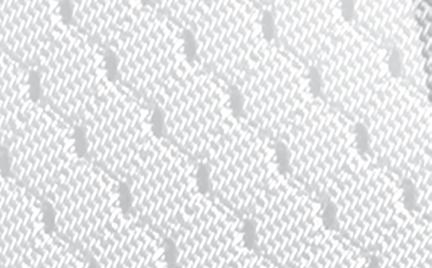



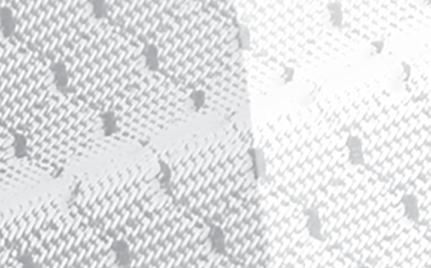

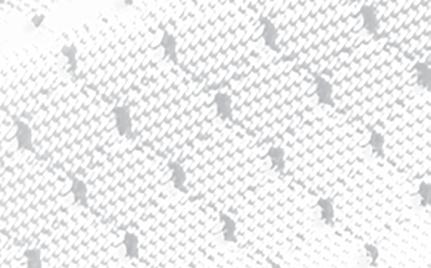


VISIONINACTION

Save $$$ with Group Membership


We hear stories all the time about our NASO members talking about the benefits of NASO membership to their fellow officials. Our members are really our best salespeople, and wordof-mouth goes a long way toward bringing new officials into the NASO fold.
We’re always looking for ways to make it even easier to make the decision to join NASO. That’s why we made the decision many years ago to provide discounts for groups of officials who all want to join together with a single official coordinating the effort.
It first launched as the NASO Group Membership Program and has since evolved into the Association Advantage Titanium level in which sports officials from the same local association, board or chapter all join NASO together at one time.
It’s one of our most successful programs and NASO’s membership now consists of more than 50 percent group memberships.
In addition to saving up to $35 off NASO dues, group membership provides a variety of other benefits, including:
Free Association Leadership Resources. Through NASO’s Association Advantage program, you get access to leadership




and training tools, newsletters, Websites and other tools to better run your association.
Easy Enrollment – Enrollment is easy and quick. A list of your members and a short one-page enrollment form are all that is required.
Consistent activation and renewal. All members share the same anniversary date and re-enroll on the same date. The win: That means no individual renewal notices sent to your members six months ahead of time.
Installment payment options. If it makes sense for your sports officiating organization, we'll work with you to come with a payment schedule that fits into your dues structure, timing, etc.
Every individual member of your group has the exact same NASO membership benefits and coverage as any other NASO member, but by joining together, everyone saves.
Hundreds of officiating groups have already taken advantage of this program, and not just local officials associations. Groups like the NFL officiating staff and the SEC Football Officials Association are part of the program.
Get more information or sign up today by calling 800-733-6100 or e-mail kkoester@naso.org

WE’RE ALL IN THIS TOGETHER!



ATTENTION REFEREE MAGAZINE SUBSCRIBERS
It’s time to join the rest of us in the National Association of Sports O cials. Not only will you continue to receive the world’s #1 o ciating publication, you’ll enjoy all of the additional benefits NASO members enjoy.
Go to naso.org/upgrade2024 to join NASO for the special introductory price of $114 and receive these two FREE books!


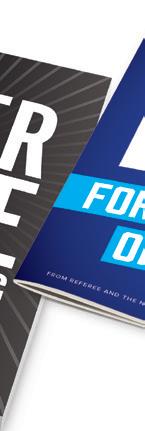
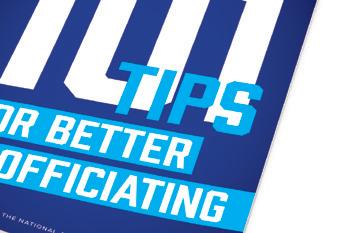


NATIONAL ASSOCIATION OF SPORTS OFFICIALS
FOR NASO MEMBERSHIP INFORMATION OR TO SIGN UP, GO TO NASO.ORG, CALL 262-632-5448 OR EMAIL CSERVICE@NASO.ORG
$ 114 JOIN TODAY N ATIONAL A S S OCIATION O F SPORTS O F FICIALS GROUP MEMBERSHIP N ATIONAL AS S OCIATION O F SPORTS O FFICIALS GROUP MEMBERSHIP



IT’S
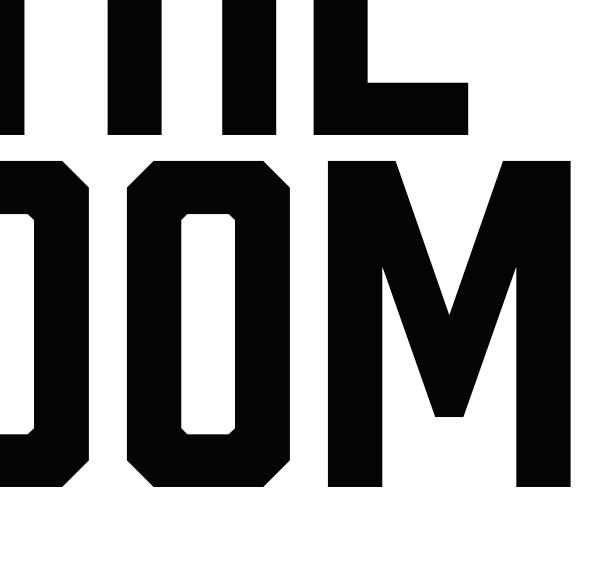
OUR NO. 2 COMPLAINT AFTER PAY — BUT IT DOESN’T HAVE TO BE THAT WAY
When school districts prepare for new building projects, a designated space for sports officials is often a mere afterthought in the planning process.
Adequately accommodating officials and being equitable to multiple genders is often a task that goes unfulfilled by school districts across the country.
It is not uncommon for an officiating crew to be put in a makeshift broom closet or an untidy coaches office in preparation for its upcoming game.
But an architectural firm in the northern part of the United States is trying its best to change that scenario, advocating for better officials locker rooms and making sure gender equity is part of the equation with its new and renovated school building projects.
“In terms of the function side of things with the occupants and the users, I’d say officials
By Wade Turner
spaces seem to get short shrift about the equivalent of landscaping budgets and space for mechanical and electrical equipment,” said Randy Lieberg, an architect and project manager with JLG Architects, whose sports studio office is based in Minneapolis. “People just don’t think (officials) need much space.”
Over the past several years, Lieberg said, there have been more and more provisions to accommodate multiple genders at the high school level. As a result, the firm’s current design plans reflect that change.
The best and most efficient design concept Lieberg has been using for officials lockers rooms is a three-step approach. It begins with an initial “sitting room” or lounge area where all officials can meet, stretch and prepare for their upcoming contest.
This room, with appropriate chairs and/or benches, is normally about 10 feet by 14 feet, or 140 square feet, Lieberg said. This room is designed for all genders after they’ve finished dressing for the game.
“During pregame, this area gives the officials a little more room to stretch and communicate with one another and still be out and away from the eyesight and earshot of everybody else in the facility,” said Kyle Kosior, sports business consultant for JLG.
At many schools, female officials are sequestered in a totally separate room before the game. This plan alleviates that problem.
From the sitting room, there would be two adjacent doors leading into a separate men’s and women’s changing area, and then a subsequent bathroom with a sink, toilet and shower. This latter room
50 | REFEREE June 2024
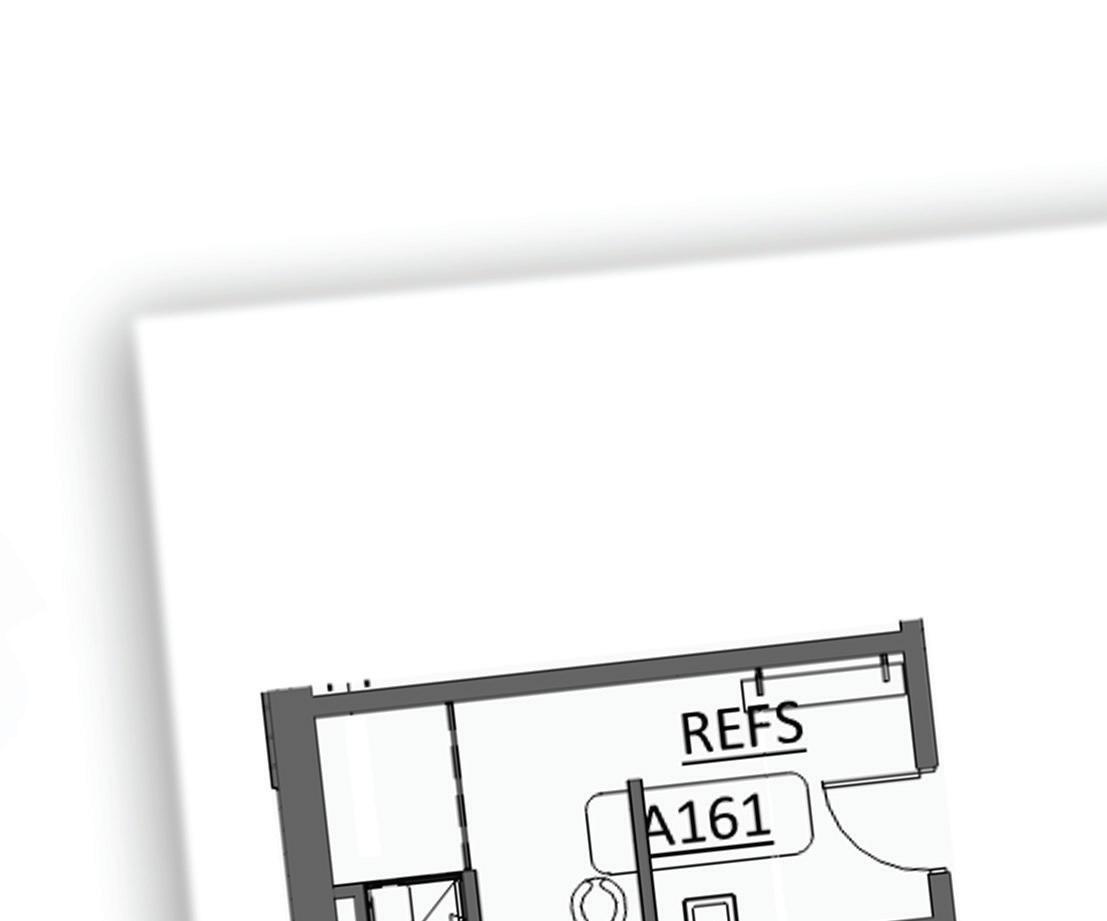
AN ARCHITECT’S IDEAL PLANS FOR AN OFFICIALS LOCKER ROOM
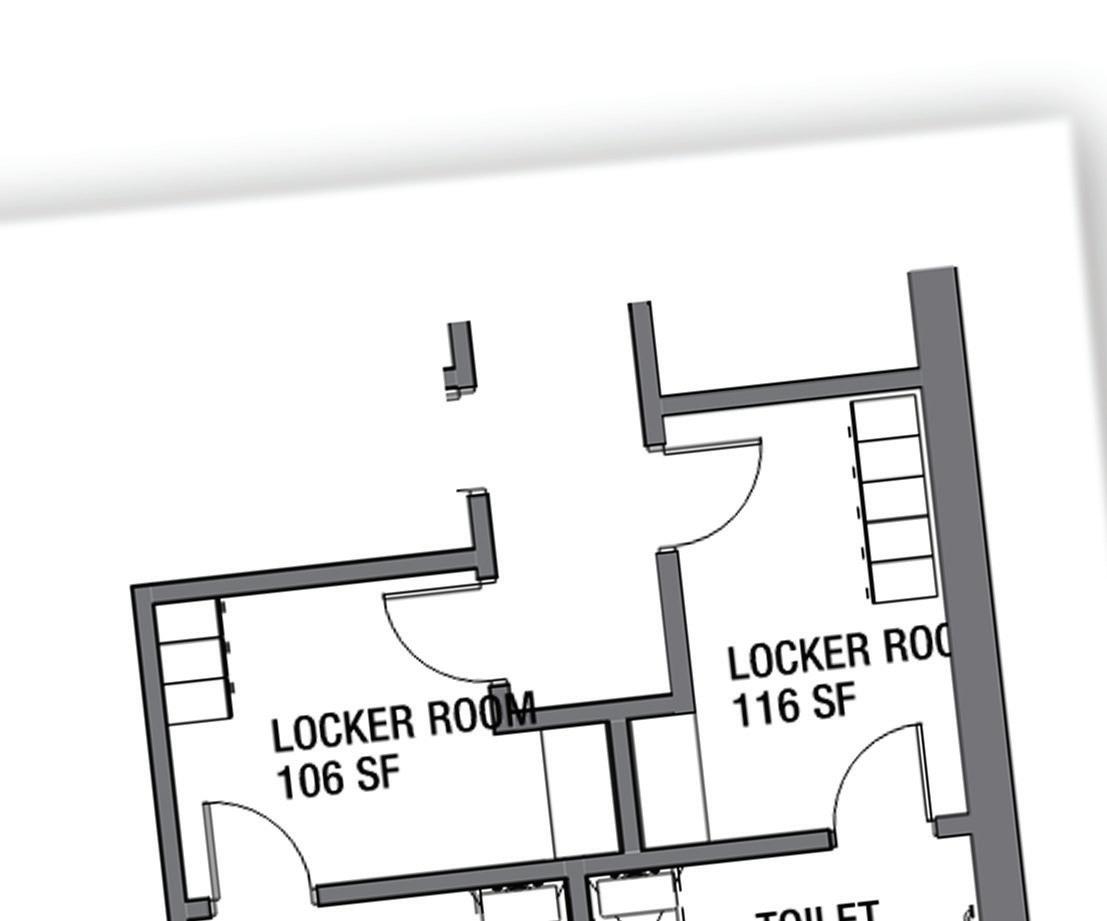





is called the “wet area,” Lieberg said.
In the planning stages, Lieberg said school officials need to determine the minimum amount of locker spaces they would most likely need to accommodate their largest officiating crew. For most schools, that would



be a five-official football crew. If that was the case, the changing area for men could have a bank of five lockers. The same decision for locker spaces would then be needed on the women’s side.
“If the numbers are known ahead of time, we
would suggest making the men’s side larger to accommodate, and if possible, the women’s side able to expand into adjacent space as, or if, the numbers grow in the future,” Lieberg said.
In the changing area, each official would have
REFEREE June 2024 | 51




KEYS TO THE LOCKER ROOM


the equivalent of about 16 square feet for the locker and changing space in front of it, Lieberg said. So if there are five lockers, that equates to about 80 square feet for each of the changing areas, or 160 total square feet. And, of course, with appropriate available seating.
“The schools need to look at an (officials) association and what they are seeing and balance that out with gender participation,” Lieberg said. “Maybe the women’s area is smaller with the possibility of expansion.”
For each of the bathrooms, which include a sink, toilet and one private shower stall, Lieberg estimates this area to be no more than 100 square feet, or 200 total square feet.
“It would sure be nice to have more than one shower,” Lieberg said. “But when it actually comes down to it and getting the spaces in place, it inevitably comes back to one shower.”
In total, this includes about 360 square feet in both changing rooms and “wet areas,” with an additional common space of about 140 square feet for the “sitting
A typical officials locker room is barely big enough to accommodate a five-person football crew. From left are Washington state officials Vincent Corrigan, Edmonds; James Canady, Bellevue; Larry Lisk, Marysville; and Romain Harris, Mill Creek.
room.” That equates to about 500 square feet to accommodate officials.
“In general, I would say simply that these rooms tend to be a pretty utilitarian space,” Lieberg said, stressing function over style.
“And this is certainly not the Cadillac version of locker rooms for officials,” Kosior added, “but an area that adequately accommodates both men and women in an equitable manner.”
The locker room design also appears to help establish a better climate among officiating crews before they begin their contest.
“Providing separate spaces for men and women referees to change clothes, but common spaces for everyone to gather creates a better environment for learning and teamwork,” said Sara Lum, a former Division I walk-on player for the University of Nebraska basketball team who began officiating just four years ago.
Lum is not shy about the growing pains of a sports official, as she recently gave a TED Talk on her experience as a beginning official.
Although inadequate locker

room facilities and gender equity for officials were not part of her monologue, she reflects on some pregame frustrations with officiating at area high schools where she lives in Sioux Falls, S.D.
“The worst experience I had was being placed in a coaches office where the toilet didn’t work, there was no visual privacy from the coaches and players, and it was used as a storage space for dirty clothes and equipment,” Lum said.
“And I feel I am not always an active participant in the pregame meetings because the facilities do not easily accommodate men and women together,” Lum said. “Building relationships is part of why I referee and the facilities can sometimes get in the way of the learning, development and camaraderie that is part of officiating.”
In addition, she joins a minority group where slightly less than 10% of its members are female, according to the 2023 NASO National Officiating Survey powered by Referee.com. Despite the low numbers, schools still must adequately accommodate all of their independent contractors — regardless of gender.

“Being a female is just another layer of added complexity,” Lum said. “Many times it’s just an afterthought for schools on what room I’m in. Despite all of the schools being different, the majority of them locate referees in the coaches offices or unused locker rooms. Even if there is a dedicated space for referees, female referees are often located in a different space.”
But a Wisconsin suburban high school is helping to dispel some of Lum’s equity concerns, nearly mirroring the three-step approach — common area, changing room and bathroom area — of officials locker rooms that were outlined earlier by Lieberg, although designed by
DALE GARVEY
a different architectural firm.
Germantown High School, located just north of Milwaukee, includes officials locker rooms that were a small part of the district’s approved $84 million building project referendum that was completed about five years ago.
“Officials appreciate having a dedicated space just for them to gather, change, use the restroom and shower,” said Sara Unertl, director of student activities at the high school. “If we have males and females on the same crew, we are able to offer changing rooms for each. However, they can still gather in the same common area, as it is set apart from the changing rooms and bathroom areas.”
As an added feature, Unertl said, the district also included game clocks in both of the dedicated officials locker rooms.
“These clocks are in sync with our game scoreboard in the fieldhouse, so officials know exactly how much time there is remaining before the start of the second half of a basketball game, if that is what they are there for,” Unertl said.
To date, Unertl said, officials for football, volleyball, basketball and track and field have used these rooms.
“I think what makes our two locker rooms better is that they both offer a truly dedicated space for officials,” Unertl said. “Also, the location of these rooms provides convenience, as they are close to our fieldhouse and football stadium but yet set apart from the traffic of the spectators.”
Lieberg’s plans also reflect a similar philosophy to that of Germantown’s location of its officials locker rooms.
“They should be located in the school buildings where officials can come and go and are not going to cross paths with coaches, players and fans as much as possible,” Lieberg said. “They should also be able to get to the field in an easy manner

Washington
state basketball officials (from left) Jim Stegman, Shoreline; Tom Knorr, Seattle; and Lincoln Missner, Bothell, use a coaches office for their pregame.
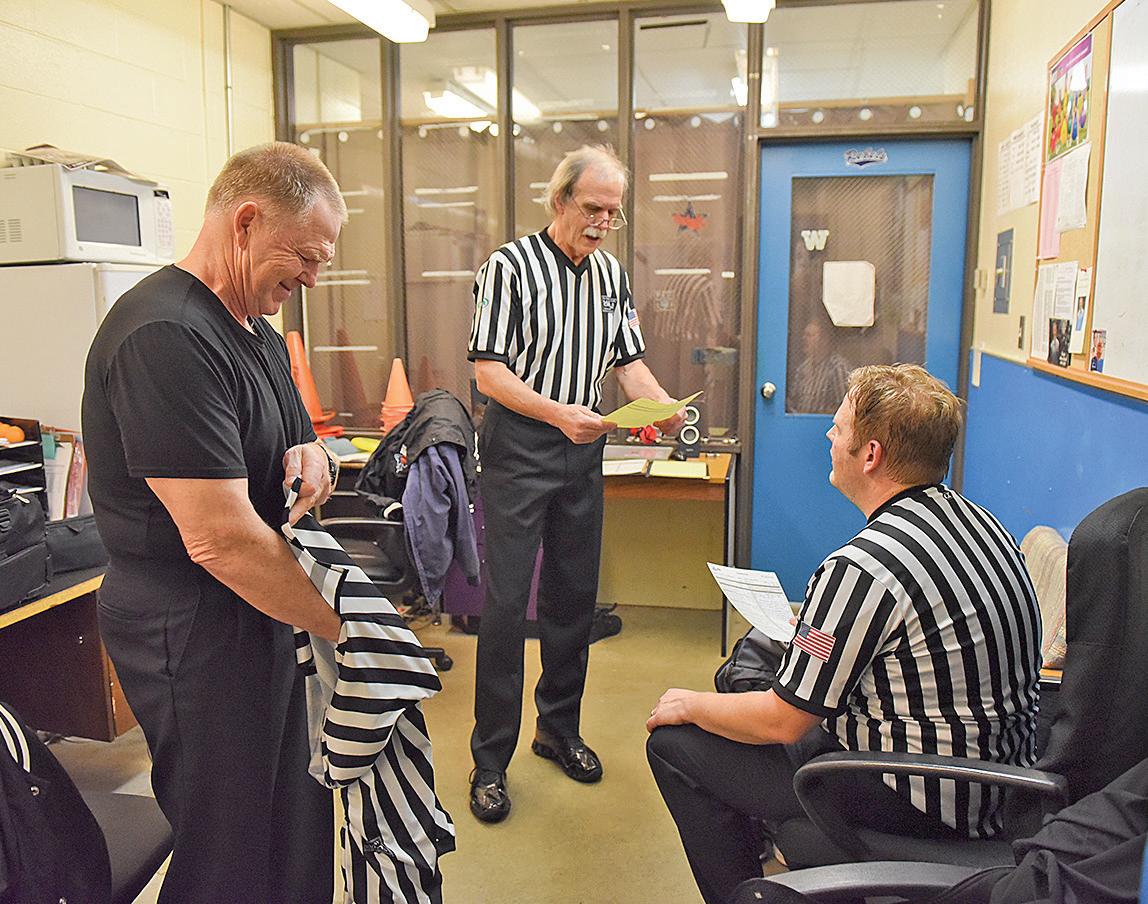
and then easily walk to the parking lot after the game.”
Lieberg said part of his role is to also educate his clients, many of whom are school personnel who don’t have a working knowledge of the needs of officials.
“We’ve found that we’ve had to educate clients on what is needed,” Lieberg said. “The decision-makers haven’t had to think about those things before. In their heads, a room someplace is good enough for officials.”
Lieberg said his firm goes through a detailed process before its building projects to try and ultimately ensure success.
“What we do at the beginning is to go through a planning process, and we ask our clients to determine what their needs are that require spatial requirements,” Lieberg said. “Officials spaces are part of that conversation. If they don’t bring it up, we will recommend something.”
In other words, Lieberg said, coming up with the best solution by thinking and discussing with all of the key stakeholders.
“The best locker rooms I’ve seen are the schools using the right amount of space in the
right location,” Lieberg said. “When it’s in a bad location, it’s really noticeable, and when it’s in a good location, it is very much appreciated. It’s a lot cheaper to get the job done right the first time.”
Kosior said you can easily tell when an officials locker room is an afterthought, reflecting on an ill-planned location at a sports complex.
“I don’t know what they were thinking when they planned this locker room, but the officials had to exit under the biggest throng of people where there was an overhang,” Kosior said. “Most times it’s fine, but if something is heated, it couldn’t have been put in a worse spot. And the facility is stuck with it moving forward.”
When schools are talking about different or additional player spaces for locker rooms, Kosior said, that’s also a good time for them to talk about officials spaces, too.
“When moving forward, it’s important for schools to make their spaces more efficient and right any past wrongs,” Kosior said. “Officials just want the necessities and to not be forgotten in the planning process.”
Wade Turner, New London, Wis., is a high school football official.
REFEREE June 2024 | 53
DALE GARVEY
STAY ON THE RIGHT TRACK
Managing Lineup Cards Effectively
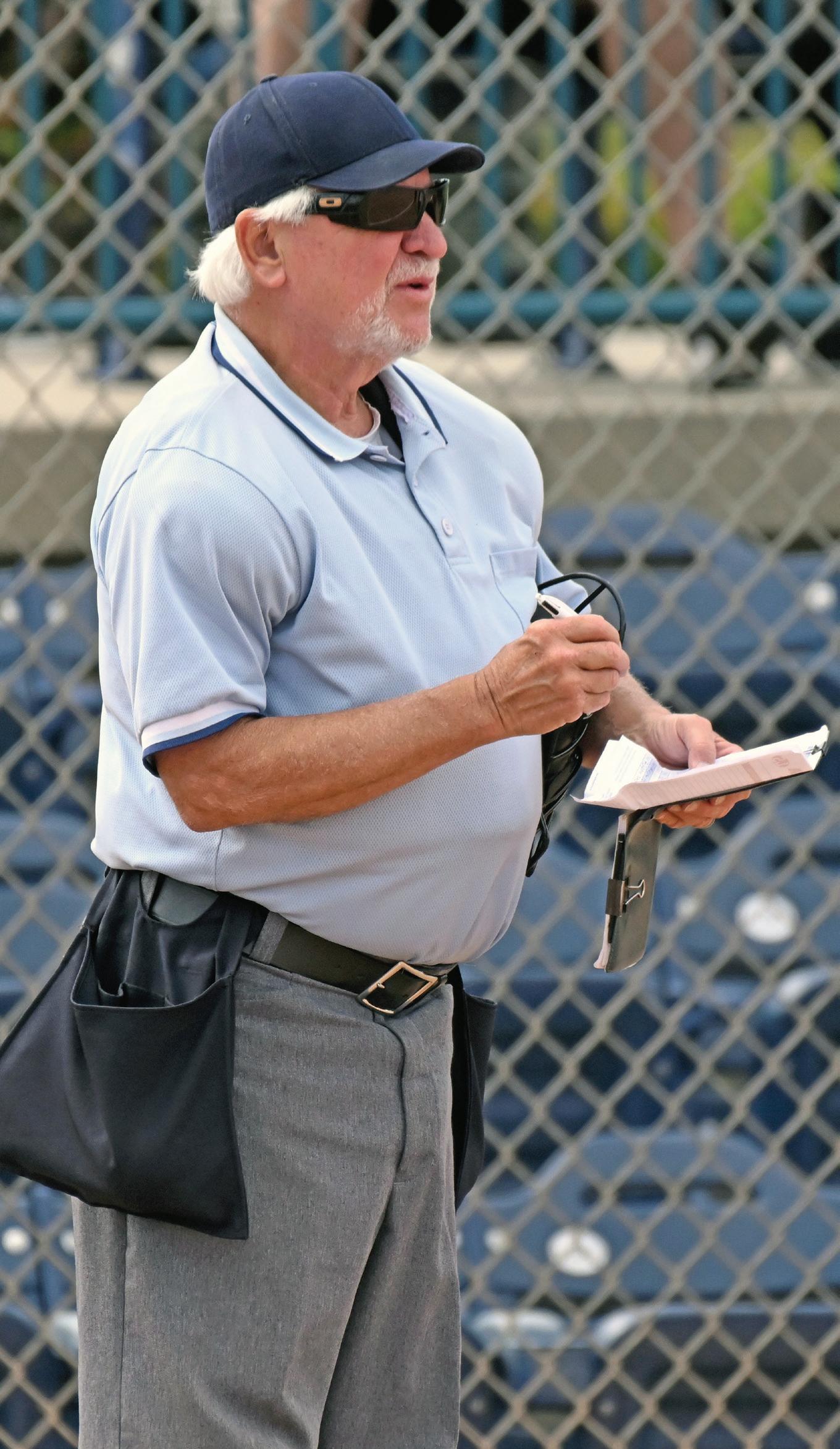 By Brad Tittrington
By Brad Tittrington
Plate umpires bear the brunt of a lot of responsibility each time they put on the gear. One of the most important jobs is managing the lineup card. Failure to properly track changes and conferences can lead to chaos.
The ability to accurately and efficiently manage lineup cards is what separates great umpires from good ones. It is something all umpires should take pride in and a skill that can be developed over time.
Here are some tips and techniques to help elevate your game when it comes to managing lineup cards and tracking changes and conferences throughout the game.
Lineup Card Holder
Umpires normally spend a good deal of money on uniforms and tools of the trade. However, one of the things often overlooked is a proper lineup card holder. Not using a lineup card holder — or using an inadequate one — can make umpires look sloppy and unqualified. Spend a little extra money and get a solid lineup card holder that is big enough to hold both teams’ lineup cards. You can get ones with magnets to hold the lineup cards or you can simply use small paper clips to keep the lineup cards in place inside of the holder. Either way, if your current holder is ripped, frayed, dirty, too small, or worse, if you don’t even currently
One of the most important jobs for plate umpires is to accurately keep track of the lineup card. This includes tracking conferences, substitutions, courtesy runners (if allowed) and taking notes to help fill out reports or to revisit during the postgame. Don Applerose, Fullerton, Calif.
SOFTBALL RULES, MECHANICS, PHILOSOPHY 54 | REFEREE June 2024 EDITOR:
BRAD TITTRINGTON btittrington@referee.com
HESTON QUAN
have one, get one. Believe it or not, your lineup card holder gives an impression to coaches and they will notice it at the lineup exchange. Don’t give them a reason to not trust you before a pitch is even thrown.
Multiple Writing Utensils
Just as the holder is important, so is the writing utensil. It is important to carry multiple writing utensils — a main one and a backup one. It is important to use pens other than black and blue. The majority of coaches use these two colors to fill out their lineup cards. If you use black or blue, chances are you are going to get confused at some point as your markings and the coaches initial markings will be in the same color. Try to use red or green and make sure to always have a backup in case your first pen either runs out of ink or breaks during the game. Some umpires use multi-colored pens as this allows them to find a color different than what the coaches are using and it also allows them to use different colors for each change as to not get confused in games when coaches are making a lot of substitutions or defensive changes throughout the game.
Track Conferences
Besides tracking lineup changes, it is equally important to document conferences. Failure to track conferences can lead to a team getting an unfair advantage. It is also essential to know the rules regarding conferences, especially if you work multiple levels, as the rules in college are vastly different from those in NFHS, USA Softball and USSSA.
And this responsibility does not fall solely on the plate umpire’s shoulders. Base umpires in the collegiate game track conferences as well. And while it is not required in the other codes for base umpires to track conferences, it is an additional fail-safe to make sure teams are adhering to the rules.
When teams request a conference, take the extra time to write down the information (offensive or defensive, inning, what
batter is up to bat, outs, runners on base and if working NCAA, if it is a player-to-player or representativeto-player conference.
Write Notes
One thing umpires do relatively poorly is remembering information after the game ends. There are times when umpires get to the locker room and try to remember what happened on a certain play or all the facts surrounding a situation that requires a postgame report. This is where the lineup card holder comes in handy. You can either take a blank piece of paper and keep it in your lineup card holder or you can simply use the back of one of the lineups to take notes. When an unusual play happens and you want to talk about it after the game, jot down some notes between innings. Or if you have a situation where you are required to fill out a postgame report, take the time to write down all the pertinent information in the moment. Take the extra minute or so to jot down all the information as opposed to rushing through it and then trying to recall facts after the game is over.
Write Legibly
When it comes to tracking changes and conferences, it is of the utmost importance to be neat and legible. There are several reasons for doing so. The first is it will help you track changes as the game moves along and accurately relay that information to the opposing coach and to the official scorer. Another reason, which often doesn’t cross the minds of most umpires, is that your lineup card may be used by another umpire if there is a halted game situation or if you get injured and another umpire has to take over behind the plate. Another umpire should be able to quickly look at the lineup card and know exactly what has transpired throughout the game up to that point. If the lineup card recording is sloppy, it can lead to issues such as an inaccurate lineup card, an unreported sub, batting out of order or an illegal player. Trying to sort all that out after the fact can
QUICKTIP
Always keep water and snacks in your gear bag or car. Never anticipate schools will have water or food for you. If you are working multiple games, it is important to stay hydrated and properly fueled in order to umpire at your best. If you are dehydrated or hungry, it will affect your performance on the field. Keep protein bars, a piece of fruit or nuts available so you can quickly grab the nutrients you need to work. Even at the highest levels where schools are expected to provide food and drinks, it doesn’t always happen. At the lower levels, umpires are often an afterthought. Take care of yourself.
SURVEY SAYS …
What is your toughest call?







Obstruction






SOURCE: 119 FACEBOOK RESPONDENTS.

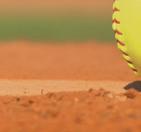
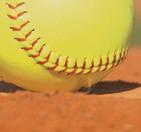
TOOLS
NFHS Substitute and Lineup Card
PowerPoint
Are you a high school umpire struggling to master the rules around substitution and how to properly record changes on your lineup card? The NFHS website has a PowerPoint presentation to walk you through the substitution process and how to properly track the changes. The PowerPoint walks umpires through the DP/Flex positions, the differences between eligible, unreported and illegal substitutes, and scenarios to help umpires navigate these rules. Umpires can go to nfhs.org/activities-sports/ softball and find the presentation under the General tab.
REFEREE June 2024 | 55
47 % interference 32 % hit
pitch/ foul ball 21 %
by
SOFTBALL
TEST YOURSELF
Each of the following includes a situation and possible answer(s). Decide which are correct for USA, NFHS, NCAA or USSSA rules and which might vary. Solutions: p. 81
1. B1 hits a deep fly ball to left field. The ball hits the top of the fence, then hits off F7’s glove and goes over the fence. B1 had touched first base when the ball went out of play.
a. B1 is awarded second base.
b. B1 is awarded third base.
c. B1 is awarded home.
2. B2 hits a line drive that strikes third base. The ball caroms into foul territory and hits R3 who was off the base and heading for home on contact. F5 was playing in and had no play on the ball.
a. R3 is out.
b. R3 is not out.
c. The ball is live.
d. The ball is dead.
e. The ball is fair.
f. The ball is foul.
3. R1 attempts to steal second base. F2 catches the pitch and attempts to throw the ball to second base. F2’s throwing arm contacts the plate umpire’s mask and the throw ends up sailing into right field as R1 slides safely into second base.
a. The ball remains live and R1 may attempt to advance at her own risk.
b. The ball is dead and R1 remains at second base.
c. The ball is dead and R1 is returned to first base.
d. The ball is dead and R1 is ruled out.
4. R2 attempts to steal third base on the pitch. F2 attempts to throw the ball to third base. The ball hits B2 in the helmet and ends up going out of play. B2 remained motionless in the batter’s box and never attempted to move out of the way after the pitch.
a. Interference on B2. B2 is ruled out and R2 is returned to second base.
b. Interference on B2. R2 is ruled out.
c. Legal play. The ball is dead when it goes out of play and R2 is awarded home.
d. Legal play. The ball is dead when it goes out of play and R2 remains at third base.
Another umpire should be able to quickly look at the lineup card and know exactly what has transpired throughout the game up to that point.
be a headache and lead to multiple penalties that could easily be prevented by simply taking the time to carefully record all changes.
Confirm With Coaches
The lineup card is not secretive. When writing down the changes, allow the coach to see the changes on the lineup card. This allows the coach the opportunity to double check to make sure you heard what they said and they can make sure the change is made properly. Stand next to the coach and allow them to see you make the change on the card so you can prevent potential errors. When you report the changes to the opposing coach, allow that coach to see it as well. Sometimes in loud stadiums, it can be hard to hear and allowing the coaches to see the card ensures the information is relayed properly. Also, when a coach gives you a change, repeat the change back to the coach verbally to first make sure you heard the coach correctly before you ever start writing the change on the lineup. This will prevent having to scratch something out on the lineup card, which could be confusing later on when it comes to whether or not a player has been in the game and in the right position.
Be Proactive,Not Reactive
The best umpires are able to feel when a change may be coming or when a team may look to take a conference. The more experience you have, the more this skill will be developed. However, every umpire can do a couple of simple things during each game to help with this process. The first is after each batter, take a peek at the third-base coach and the defensive dugout to see if
a coach is starting to either move toward the plate or come out to the pitcher’s circle. Failure to look at the coaches after each batter will eventually cause you to get back behind the plate and force a coach to walk all the way down to you to get your attention. This just simply looks bad. Granted, some coaches may wait until the last second to ask for time to request a conference or make a change. However, most coaches will immediately try to get your attention after the previous play to make a change. By peeking at them and noticing them early, it shows you are aware of the situation and helps keep a flow to the game.
Carry Rules
Rulebooks are intensive and some rules can be confusing. Very few umpires, if any, have the entire rulebook memorized. At the collegiate level, the video review rules are printed on the back of the conference card tracker to help umpires remember what can be challenged. If there is a particular rule you are struggling with (batting out of order, rules regarding unreported subs, illegal players, inaccurate lineup card, etc.), create a small card, laminate it and keep it in your lineup card holder for easy access in case a confusing situation arises. This doesn’t mean print out the entire rulebook and take it onto the field with you. It simply means create a quick access guide you can look at that can be kept discreetly and accessed when necessary. Brad Tittrington is an associate editor for Referee . He umpires D-I softball and officiates women’s college and high school basketball, college and high school volleyball and high school football.
56 | REFEREE June 2024
Baserunning Impediments
By Carlos A. Santana
Obstruction continues to provide spirited debate among new umpires as well as veteran officials. At its core, a runner and/or batterrunner is entitled to run the bases without any hindrance or impediment from a defender who does not have possession of the ball. There are different types of obstruction. There have also been some changes to the language in the NCAA obstruction rule. This article will explain the NCAA-specific rule related to obstruction while rounding, returning to or leading off a base.
Although the actual language in the various rulebooks may be different, all codes agree that obstruction is the act of a defender who hinders or impedes a runner or batter-runner who is legally running the bases unless the fielder is in possession of the ball or in the act of fielding a batted ball.
However, the NCAA adds two additional aspects that are not included in other codes. The NCAA rulebook states a fielder shall not at any time obstruct a runner rounding a base (9.5.4.7), returning to or leading off a base (9.5.4.8). In these situations, a warning is issued to the defender
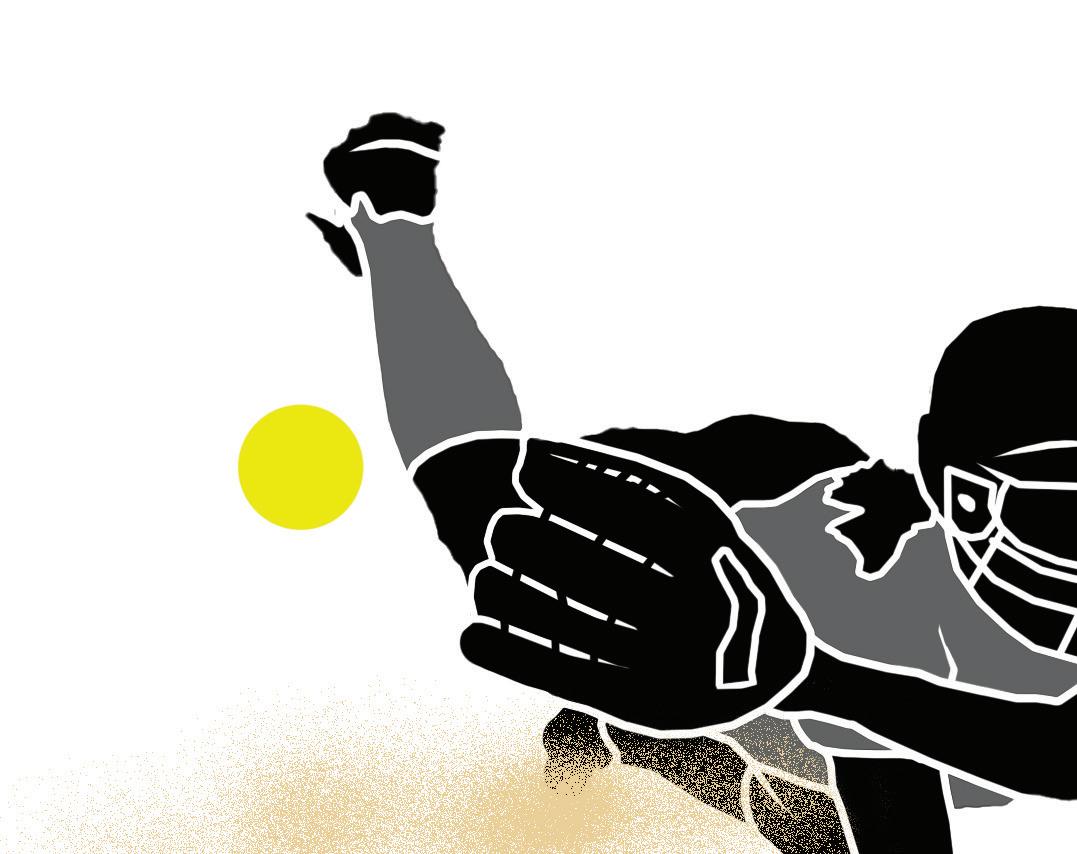
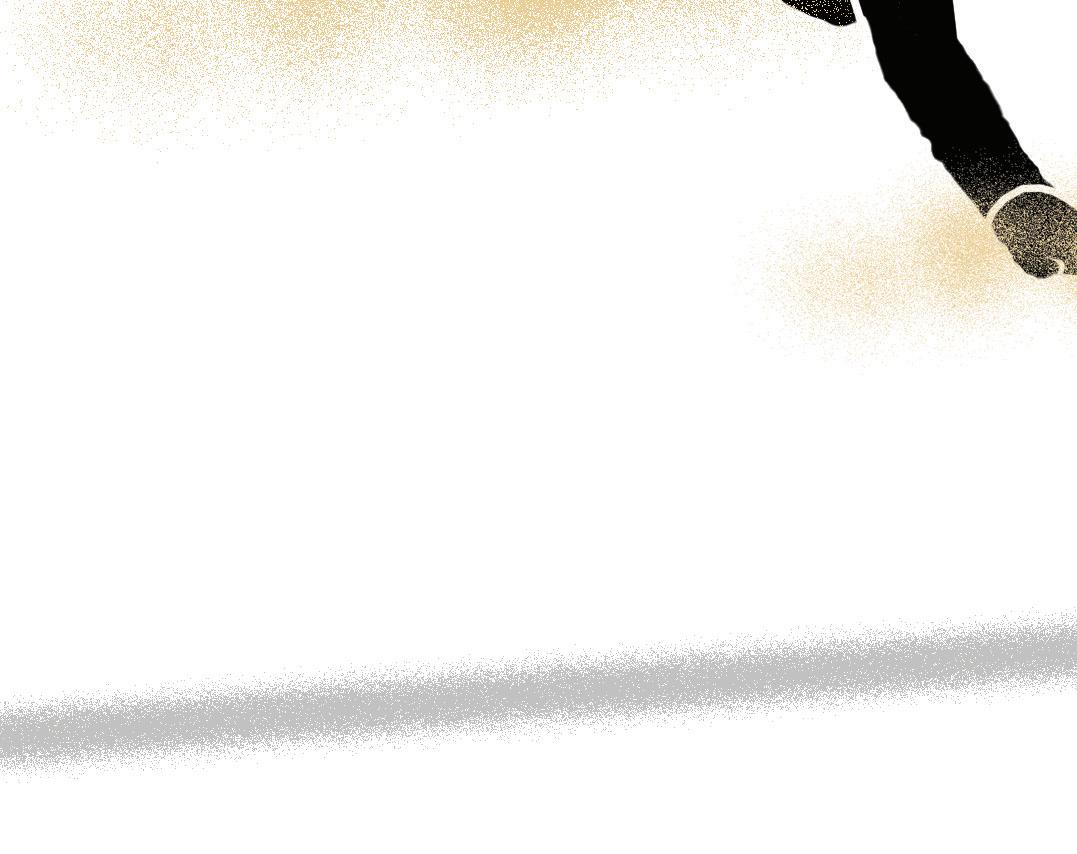
and the head coach is notified of the warning. The plate umpire should record the player number, the specific type of obstruction (rounding or returning/leading off) and the inning of the warning. If the same defender commits the same type of obstruction which warranted the warning, the obstructed runner is awarded one base beyond the base where the obstruction occurred. In situations where the obstructed runner safely advanced farther on their own, no award would be given.
It is important to remember the warning is issued to the individual player. So even if that player changes defensive position, the warning follows that player.
It’s also important to know that the rounding rule (9.5.4.7) and the returning/leading off rule (9.5.4.8) are two different rules. The warning is specific to the violated rule. Therefore, a warning for rounding would not result in a base award if the warned player subsequently commits a returning or leading off obstruction and vice versa. In that case, another warning would be issued for the violated rule. The leading off and returning violations are part of the same rule. Therefore, if a defender is

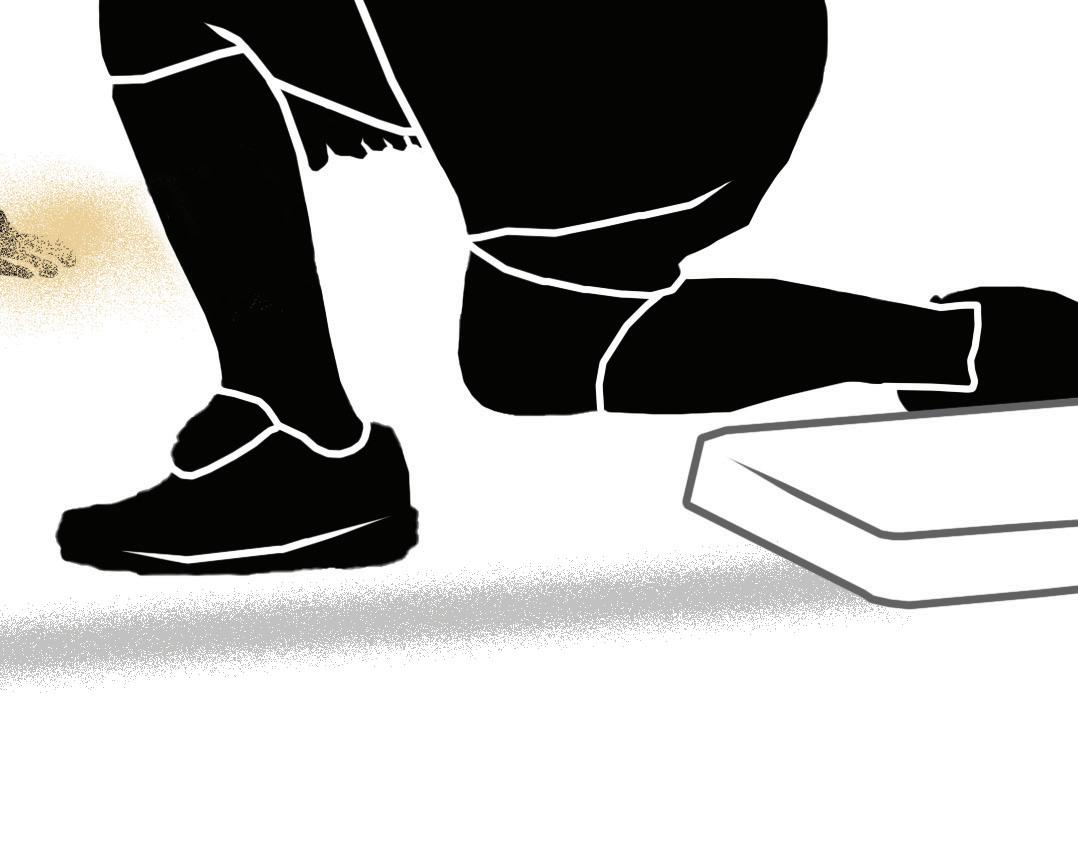

SOFTBALL
CASEPLAYS
Headwear
Play: The visiting team is wearing dark blue uniforms. All players on the team are wearing dark blue visors and caps, except the pitcher, who is wearing a white cap. The plate umpire notifies the visiting team coach the pitcher must remove the white hat. Ruling: Correct procedure in NCAA and USSSA as headwear may be mixed, but they must be like colored (NCAA 3.10.1; USSSA 2-8A). In NFHS and USA Softball, this is incorrect. In those two codes, headwear does not need to be the same color as long as it doesn’t violate other color restrictions. White is a legal color in both of those codes and the pitcher should be allowed to wear the white cap while teammates wear blue (NFHS 3-2-5a; USA Softball 3-6A-2).
Coach Assistance?
Play: B1 hits an over-the-fence home run and circles the bases. As B1 rounds third base, the third-base coach gives B1 a high five and pats B1 on the back. The plate umpire declares the thirdbase coach assisted B1 and rules B1 out. Ruling: Incorrect ruling in all codes. None of the four codes consider this action assisting the runner. A high five and a pat on the back do not violate the assisting the runner rule in any code and should be allowed (NFHS 8-6-5; NCAA 12.17.3.4.1; USA Softball 8-7E; USSSA 8-18Y).
Abandonment
Play: With R1 on first, B2 hits a sharp grounder to second. F4 fields the ball and tosses it to F6 ahead of the sliding R1, who is ruled out. F4 then throws the ball to first, but F3 is off the bag when she catches the ball and B2 is ruled safe at first base. B2 overruns first base and then, believing she was out, starts walking back to her dugout, which is on the third-base side of the field. B2 gets to the pitcher’s circle before realizing she wasn’t out and runs back to first. Ruling: In NFHS and USA Softball, B2 is not out as the runner must reach dead-ball territory in order to be ruled out for abandonment (NFHS 8-6-19; USA Softball 8-7U). In NCAA and USSSA, B2 is guilty of abandonment and is ruled out (NCAA 12.11.4; USSSA 8-18Q).
warned for a returning violation and subsequently commits a leading off violation, the base award is applied. The returning/leading off rule (9.5.4.8) also provides no warning is issued if a play is being made on the runner but the obstruction would still be enforced.
Play 1: R1 takes her lead on the pitch. F2 throws to F3 in a pickoff attempt. Before F3 possesses the ball, she hinders R1, who is returning to first base (as shown in the PlayPic on the previous page). R1 is then tagged before returning to the base for an apparent out. Ruling 1: The umpire should signal a delayed dead ball when the obstruction occurs followed by a dead ball when R1 is apparently put out. The obstruction would be enforced and R1 should be awarded first base. However, since there was a play being made on R1, no warning is issued.
Ifthat same play were to occur without the pickoff attempt — no play is being made on R1 — a warning would be issued to F3 and any subsequent violation of the returning/ leading off rule by that same player would result in a one-base award.
While physical contact between the defender and runner is a good indication obstruction has occurred, it is not required. Obstruction can occur without physical contact.
For a better understanding, it is helpful to visualize the following plays as you study the rule.
Play 2: B4 hits a single to left field. As she is rounding first base and the ball is being thrown to second base, she is hindered by the first baseman (jersey number 10). Ruling 2: At the time of the obstruction, the umpire signals a delayed dead ball. When the play is over, the umpire will declare a dead ball and issue a rounding warning to number 10 and inform the player’s coach of the warning (9.5.4.7).
Play 3: Later in the same game, a subsequent batter for the same team, B8, hits a single to left field As she is rounding first base and the ball is being thrown to second base, she is hindered by the first baseman (jersey number 10). Ruling 3: At the time of the obstruction, the umpire signals a delayed dead ball. When the play is
over, the umpire will declare a dead ball and award B8 second base for the second violation of the same rule (9.5.4.7).
Play 4: Later in the same game, R1 is on first base. She takes her lead on the pitch and is obstructed by number 10 as she is returning to the base while no play is being made on her. Ruling 4: At the time of the obstruction, the umpire signals a delayed dead ball. When the play is over, the umpire will declare a dead ball and issue a returning warning to number 10 and inform the player’s coach of the warning (9.5.4.8).
At this point in the game, number 10 has two instances of violating the rounding rule (9.5.4.7) and one instance of violating the returning/ leading off rule (9.5.4.8). Any subsequent violations of either rule by number 10 will result in the runner being awarded one base beyond the base where the obstruction occurred. All umpires should have a small notebook handy to record these actions. Relying on your memory will create problems.
Asnoted earlier, a runner and/ or batter-runner is entitled to run the bases without any hindrance or impediment from a defender who does not have possession of the ball. When the runner or batter-runner is hindered, obstruction has possibly occurred and the umpire must be ready to make a judgment and apply the proper effect if there has been a violation.
To be ready to make this call, you need to do some pre-pitch preparation and recognize there is the possibility of an interaction between an offensive player and a defensive player. If you have thought about it before the pitch, you are in a better mental state to make the judgment if the play does occur. Don’t anticipate the call, but anticipate the play. It’s one of the toughest plays to properly adjudicate. Whether or not you call obstruction, be prepared to use rulebook verbiage to explain your call to a coach.
Carlos A. Santana lives in Honolulu. He is an NFHS, NCAA and USA Softball umpire as well as an NFHS basketball official.

58 | REFEREE June 2024











The official NFHS softball umpires manual produced by the editors of Referee! Loaded with dozens of mechanics scenarios and featuring Referee’s exclusive PlayPic® and MechaniGram® graphics, this new resource is a must have for high school softball umpires. Mechanics are broken down into one, two, and three-umpire systems as well as providing detailed coverage for all situations.
YOU’VE NEVER SEEN AN UMPIRES MANUAL LIKE THIS ONE!
THE NEW SOFTBALL
MANUAL MORE PAGES MORE MECHANICS MORE INSTRUCTION • • •
UMPIRES
Print - $21.95 // Digital - $20.95 // Combo - $25.95 GET YOURS TODAY! STORE. /SOFTBALL 208 pages 5” x 8.25”
Leapto It
Imagine for a moment you are umpire Miguel Burgos, Kissimmee, Fla., and you have to make this call at home plate. Assume the catcher did not obstruct on this play and the only thing you have to decide is: Is this hurdle by the baserunner legal?
The answer to that question depends on what code you are working. In NCAA (this photo was taken in an NCAA game), this is 100% legal as runners, in an effort to avoid a collision, may slide, jump over the top of the defender holding the ball, go around the defender or return to the previous base (12.13.4). This play is also legal in USA Softball


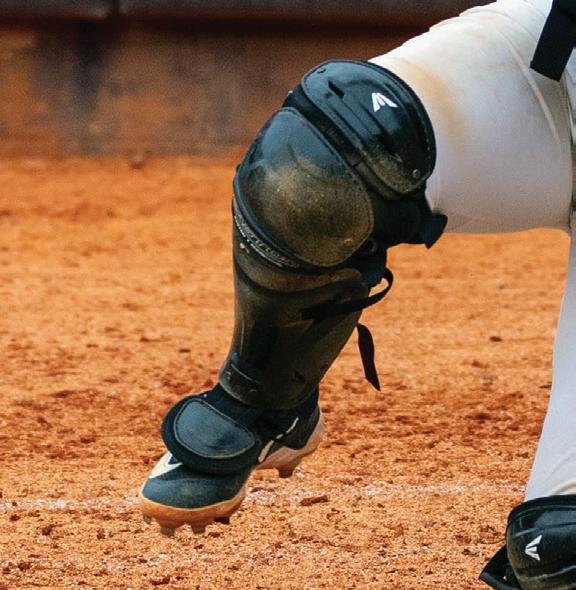
as a runner may jump over the defender to avoid a defensive player holding the ball (R/S 13).
However in NFHS and USSSA, the runner would be out in this situation. In both of those codes, a runner may only jump over a fielder
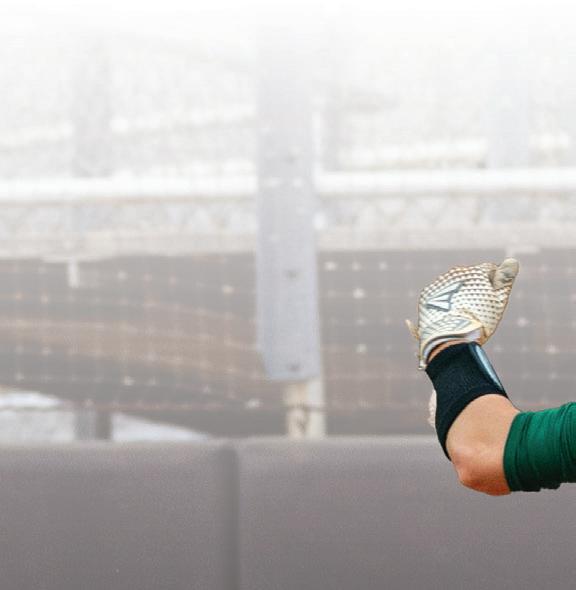


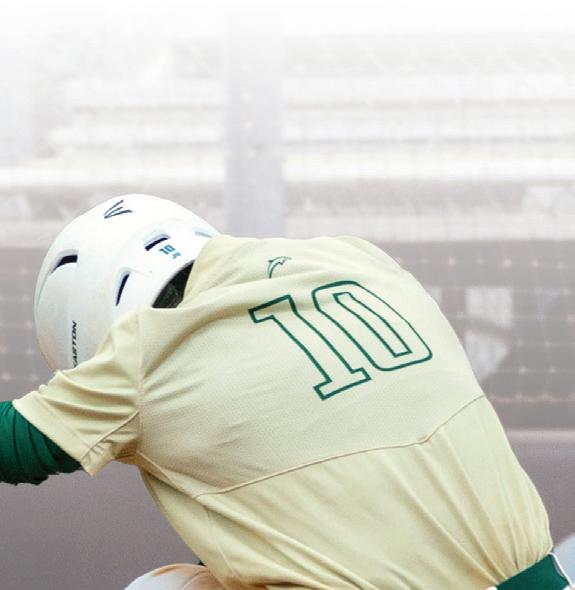
if the fielder is lying on the ground (NFHS 8-6-10 Note; USSSA 8-18C Note). Because the catcher is not lying flat on the ground, this act by the runner would result in an out, whether or not she is tagged.


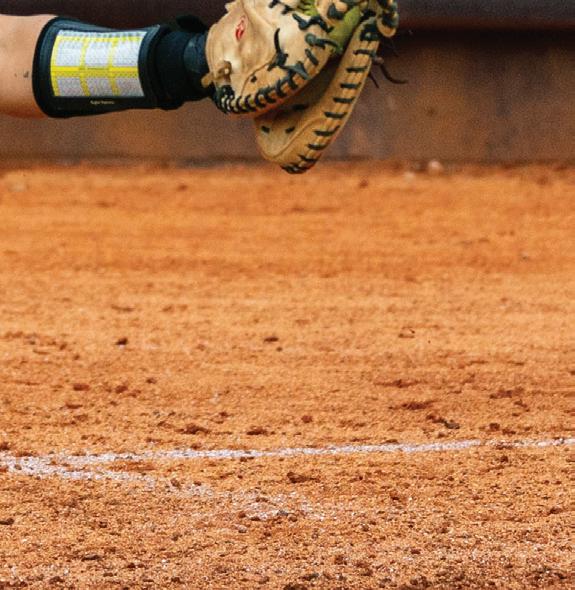

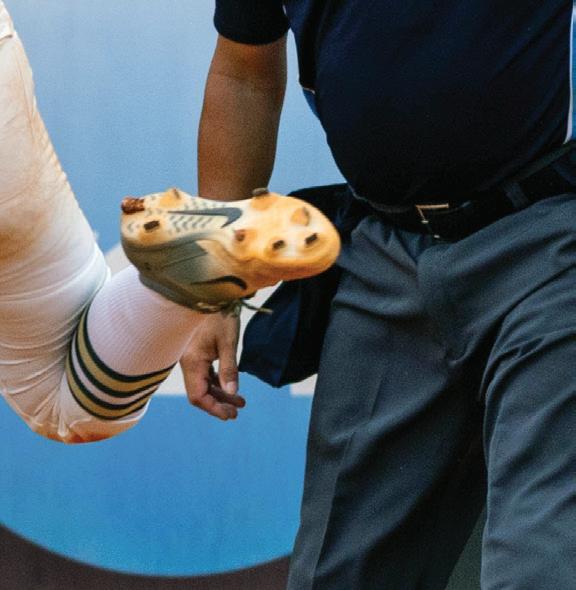


SOFTBALL 60 | REFEREE June 2024 COURTESY OF JACKSONVILLE UNIVERSITY ATHLETICS/@CAMPUSCONNECTION838

GETTING IT RIGHT
Elect(ive) to Officiate
By Brad Star
Officiating classes are starting to pop up at more schools around the country but remain rare. One high school in Massachusetts is going beyond the classroom to provide a unique experience for its students who are serious about officiating.
Taunton High School, located about 35 miles south of Boston, introduced its officiating class for the 2023-24 school year. The course is a product of collaboration between Taunton High School and officiating education platform RefReps, which helped create a curriculum for the class based on NFHS rules.

“We did a couple of after-school courses previously, but this is the first year we have a full-year, physical education elective class where the kids meet every day for officiating,” Taunton Athletic Director Mark Ottavianelli said. “We have a set curriculum, we have a phys-ed teacher who’s also an official teaching the class. (The students) are in the classroom for five days and then they go on the court or field for five days.”
Ottavianelli — a former NCAA Division III college baseball umpire who worked the D-III Baseball
Championship in 2014, and has also officiated basketball and field hockey — credits the idea for the class to Chris Green, a community liaison for Taunton Public Schools and an assistant basketball coach at the high school. Green, a high school basketball official, and Ottavianelli understand the need to address the officiating shortage and feed more young officials into the pipeline. Both cited the 2023 NASO National Officiating Survey data which showed the average age of sports officials rose from 53.29 in 2017 to 56.68 in 2023.
“Every sport is growing in America,” Green said. “It’s not stopping. So we (have) to be prepared for that. We need to start training younger officials to do it. And that’s kind of how we came up with (this class).”
The class has covered soccer, basketball and volleyball, with more sports to come. The 20 students learn mechanics and rules in the classroom and are tested on the material, and then get to apply what they learned while officiating games for Tauntonarea youth leagues.
“It’s worked out really well,” Ottavianelli said. “They’ve worked with youth soccer and basketball leagues, and gotten paid for officiating those games. They’re also doing some of our freshman, JV and middle school games at our middle schools and high schools.”
Last fall, a freshman soccer game in the area was nearly called off because the previously scheduled referees canceled. Two student officials from Taunton’s class were called to fill in. That was when Ottavianelli, already an NASO member himself, decided to get an NASO membership for his students, particularly so they could benefit from the liability coverage.
“Our school system has been extremely supportive of this initiative,” Ottavianelli said. “When it came to the insurance piece, our superintendent said, ‘That’s great. Let’s take care of the kids.’ Administration has been fantastic.” Brad Star is an assistant editor for Referee.
Offi cials vs. Cancer
IAABO Board 114 — Central Hudson Valley hosted its 10th annual “Officials vs. Cancer” basketball tournament Feb. 3, this year held at Dutchess Community College in Poughkeepsie, N.Y. All proceeds from the tournament go to the American Cancer Society. This year, the event raised more than $10,000. IAABO Board 114 has now donated more than $106,000 to the American Cancer Society since it started the tournament a decade ago, according to IAABO. “Please join us as we celebrate high school athletic competition at one of New York’s college venues and help us to ‘Blow the Whistle Against Cancer,’” IAABO Board 114 president Mark Hurley said in a tweet prior to the event. Officials vs. Cancer is a nationwide effort in which IAABO invites its member associations to partake. The program started in 2008 and has raised more than $2.5 million for the American Cancer Society.
SOURCE: @IAABO114 ON X


Hoberg’s Homecoming
MLB umpire Pat Hoberg, an Urbandale, Iowa, native, helped out at an umpire clinic close to home in March. Hoberg was an instructor during the first weekend of a six-week UMPS CARE Charities clinic at Hoover High School in Des Moines. The free clinic, which trained kids 13-18 years of age from Feb. 18-April 13, focused on umpiring mechanics as well as leadership skills.
Hoberg worked his first MLB game in 2014 and became a fulltime staff member in 2017. His postseason assignments include the 2018 AL Wild Card game; 2019 NLDS; 2020 NL Wild Card Series and NLCS; 2021 NLDS and replay duties for the 2021 World Series; and the 2022 ALDS and World Series, including a plate assignment in Game 2. He also worked the World Baseball Classic in 2023.
SOURCE: KCCI
Have you heard an inspirational or motivational officiating story? Send your ideas to
PHOTO COURTESY OF MARK OTTAVIANELLI
Taunton (Mass.) Public Schools community liaison Chris Green (left) observes while Taunton High School athletic director Mark Ottavianelli (center) directs a student in an officiating class.
MOTIVATION, ELEVATION 62 | REFEREE June 2024
INSPIRATION,
GettingItRight@referee.com




WE’RE ALL IN THIS together N ATIONAL A S S OCIATION O F SPORTS O F FICIALS GROUP MEMBERSHIP N ATIONAL A S S OCIATION O F SPORTS O F FICIALS GROUP MEMBERSHIP Join the community of sports officials nationwide and benefit from NASO’s premier resources when you sign up together to be a part of the only national non-profit officiating organization dedicated to the protection and betterment of sports officials everywhere. *On individual membership when your association joins together! Groups may join with as few as 25 members. SAVE $ 35toup -per memberNASO.ORG /PROMO/MYGROUP FOR MORE INFORMATION OR CALL (800) 733-6100
SOCK(ER) RULE CHANGES NFHS Changes Impact Tape on Socks, Rule 12
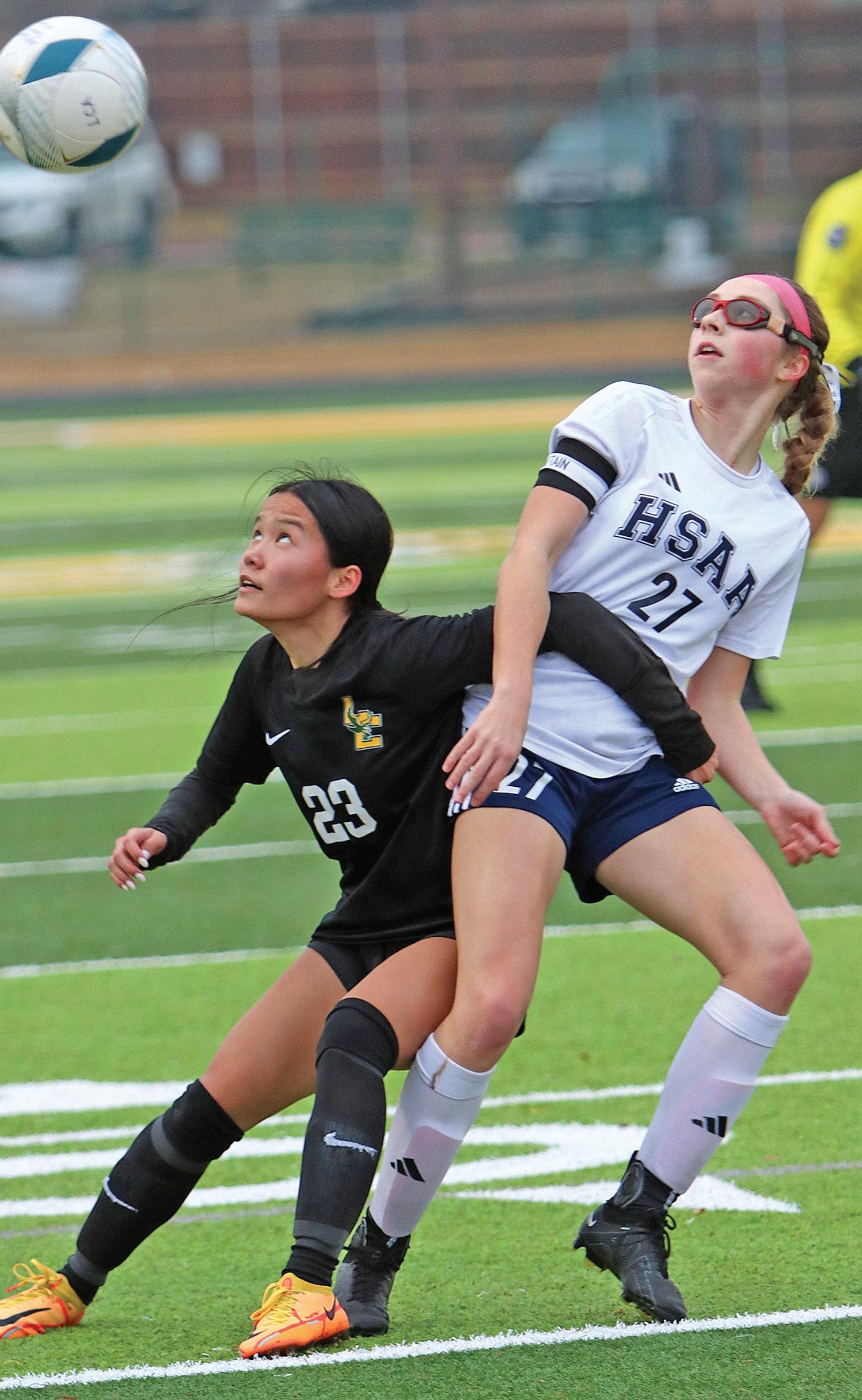 By John Van de Vaarst
By John Van de Vaarst
The NFHS Soccer Rules Committee made two rules changes for the 2024-25 season. The first involves the color of tape on socks at or below the ankle and the second reorganizes rule 12, Fouls and Misconduct, to remove duplicate language and improve usability.
The changes were approved by the committee at its annual meeting, Feb. 4-6 in Indianapolis, and subsequently approved by the NFHS Board of Directors.
Referee thanks Julie Cochran, NFHS director of sports and liaison to the soccer rules committee, for reviewing this article.
The changes are covered in the order they appear in the NFHS soccer rulebook.
Required Uniform 4-1-4d (REVISED)
This change clarifies there is no limitation on the color of tape or the sock worn at or below the ankle. Above the ankle, tape or similar material (stays/straps) applied externally to the socks shall be a similar color as that part of the sock to which it is applied.
Players have the flexibility to modify socks within the existing regulations. Some players remove the foot of the sock to layer another sock underneath, enhancing comfort or grip inside their shoes. They will typically fasten the top sock around the ankle with tape. Any tape or similar material used above the ankle must match the sock’s color, while at or below the ankle, any color is allowed. Referees are no longer required to oversee socks below the ankle.
Play 1: Team A enters the field with green socks. A1 has black tape on the sock at the calf and just below the knee to hold the sock up. Ruling 1: Illegal. Since the tape is applied above the ankle, it must be a similar
64 | REFEREE June 2024 COORDINATOR:
DE VAARST jvandevaarst@referee.com SOCCER RULES, MECHANICS, PHILOSOPHY
JOHN VAN
KEITH
JOHNSTON
Rule 12 was reorganized to provide officials a mental checklist to easily work through what type of foul occurred and quickly arrive at and apply the appropriate ruling.
color to the part of the sock where it is applied. The player must remove and/or replace the tape with green.
Play 2: Team A enters the field with green socks. A2 has modified the socks at the ankle and white socks are visible at or below the ankle. Ruling 2: Legal. At or below the ankle, there is no requirement the socks or tape applied to socks be a similar color to the part of the sock to which it is applied.

Fouls and Misconduct 12 (REVISED)
Rule 12 received a significant revision for clarity and consistency. Sections have been rearranged to enhance ease of reference, and a new section addressing Stopping a Promising Attack (SPA) has been included.
As part of the overall revision, general language was modified to align with other rules codes. Two terms were changed: impeding replaced obstruction and ejection replaced disqualification.
Rule 12-6, Ejections (previously Disqualification), now provides an ordered list of offenses by severity to allow state associations more flexibility for determining postgame sanctions for misconduct.
Rule 12-7 defines a promising attack, how to determine a promising attack and any punishments a player may receive. The new language states a promising attack is an attack
moving quickly with the promise or potential to become a clear goalscoring opportunity for the attacking team. A promising attack can occur anywhere on the field.
When determining if an attack is promising, the following considerations would include but are not limited to: distance between the offense and the goal, general direction of play, likelihood of keeping or gaining control of the ball, if the attacking team is moving forward with speed, open space in front of the player with the ball or the presence of other attackers who could receive the ball, the player having an option to take on the defender or pass to a teammate and if the attacker has assistance from teammates.
Multiple changes were made to rule 12-8, Denying an Obvious Goal-Scoring Opportunity (DOGSO). A new article was added to clarify that all necessary conditions must be met for DOGSO to be applicable. Rule 12-8-4 now states, “If any element in article one is missing, the player cannot be ejected for DOGSO. However, this may indicate an attack is promising and additional factors should be considered.”
Play 3: A1 is on the attack and there is only the goalkeeper between A1 and an obvious goal-scoring opportunity. B2 comes from behind and trips A1 just outside the penalty area. A1 loses control of the ball. Ruling 3: This is a clear example of DOGSO and should result in an ejection.
Play 4: A1 is on the attack. B2 comes from behind and grabs A1’s shirt, causing A1 to lose control of the ball. In addition to the goalkeeper there is another defender in the penalty area who could have defended A1. Ruling 4: This is SPA and a caution.
Editorial Change: Procedure for Substitution 3-4-3, Time-out and In 7-4-3
Rule 3-4-3 was deleted and 7-4-3 was updated to better reflect a 202324 rule change involving when the clock stops.
Rule 7-4-3 states, “The clock shall
According to the NFHS, boys’ and girls’ soccer participation continues to grow at the high school level since the end of the pandemic. BY THE NUMBERS
2022-23
2021-22
QUICKTIP
Referees are critical to maintaining game flow. Part of that means rendering decisions quickly, but in the moment remembering to take your time. Be sure to see and process the entire play before reacting and making judgments. Work through the play sequence, apply the correct ruling and communicate confidently and clearly. It’s more important to render a correct decision than trying to undo an incorrect one.
SIDELINE
BBOWS Supports Special Needs Program
High school soccer referees from the Baltimore Board of Women’s Sports Officials (BBOWS) officiated the Baltimore County School System Allied bocce ball program. The program supports high school athletes with special needs and provides them an opportunity to compete with other schools in the district. For the 2023-24 season, 12 referees were assigned to a total of 90 matches. In addition to bocce ball, BBOWS soccer officials also support the Baltimore County allied soccer program Pumpkin Bowl which is played on smaller fields with smaller goals for special needs individuals.


REFEREE June 2024 | 65
450,455
377,838
12,454 12,100
Number of Players Number of Schools
(Boys)
(Girls)
436,465 (Boys) 374,773 (Girls) 12,539 12,071
TEST YOURSELF
In each of the following, decide which answer or answers are correct for NFHS, NCAA or IFAB rules/Laws. Solutions: p. 81.
1. Team A is awarded a throwin near the end of the game. A1 quickly picks up the ball and takes the throw. The ball never enters the field of play.
a. Rethrow.
b. Caution A1 for delay of game.
c. Throw-in for team B.
2. Team A has a full complement of players but elects to play with only seven players. A1 is injured and cannot continue.
a. Game is stopped because there are fewer than seven players.
b. A substitute or multiple substitutes may enter to bring the team to 11.
c. Coach is cautioned for only playing seven players.
3. A1 has a ponytail. As A1 is moving forward, B2 pulls the ponytail enough to stop A1 from advancing.
a. Direct free kick for team A.
b. Eject B2 and restart with a direct free kick for team A.
c. Caution B2 and restart with a direct free kick for team A.
4. The ball goes into touch. A1 runs up quickly and takes the throw-in before team B can get established. A2 receives the throw-in, moves forward and scores.
a. Goal.
b. No goal and rethrow since team B positioning was not established.
c. Rethrow and caution A1 for unsporting behavior.
5. Goalkeeper B1 saves the ball and quickly runs toward the edge of the penalty area. Prior to releasing the ball, B1 clearly steps over the penalty area line.
a. Allow play to continue since this was inadvertent.
b. Stop play and award an indirect free kick for team A.
c. Stop play and award a direct free kick for team A.
be stopped when a substitute by the team in the lead is beckoned onto the field in the final five minutes of the regulation or overtime.”
Editorial Change: Timer 6-2-3
An editorial change removes a duplicate description of when the clock is to start/stop and consolidates all articles about when the clock stops in rule 7-6.
Editorial Change: Misconduct 12-91g, Pregame Responsibilities 5-1-2
Language regarding the use of alcohol, tobacco, or controlled or illicit substance(s) for non-medicinal purposes was updated to clarify these restrictions apply beginning with the arrival at the competition site until departure following completion of the contest.
John Van de Vaarst is Referee’s soccer coordinator.
Deciphering DOGSO
By Dr. Paul Rojas
Agood
number of years ago all soccer officials at clinics were introduced to many terms. But one, the acronym DOGSO, became a standard for everyone to use. DOGSO stands for Denying an Obvious GoalScoring Opportunity. Recognizing that infraction, located in Law/rule 12, can make a referee look good, but if missed or applied incorrectly, can cause serious problems that will not only impact that game but possibly future assignments.
DOGSO, followed by a free kick restart, can be called at any time during the match. Also, the location of the foul can vary drastically depending on if the attacking team is on a breakaway. DOGSO will normally result in an ejection (red card) unless it occurs in the penalty area and a penalty kick is awarded. If this is the situation, a caution (yellow card) is issued.
In most cases, DOGSO occurs inside or close to the penalty area, by an opposing player stopping an obvious goal-scoring opportunity. If the referee is not close to this play at the time of occurrence, selling the call will be difficult. Referees must do their best to keep up with play and get the best angle to observe what the defenders can try to get away with to deny the obvious goal-scoring opportunity. Esse Baharmast, FIFA and World Cup referee, advised all the high-ranking officials at a clinic in Skokie, Ill., to be observant and
look for the trip, the push or the foul especially when a team has a chance to score.
“You don’t know what, when or where it is going to happen,” Baharmast said. “You’ll never know when you will see a pull on a jersey.”
When there is an attack, the referee has to be especially vigilant and ready to deal with any foul or misconduct that might occur.
In order to determine if the foul results in a DOGSO decision, the referee must consider several factors. The primary considerations are: What is the distance to the goal? Is the play going toward the goal? Does the referee believe the attacking player has control of the ball or will get to the ball? How many defenders are around and what are their locations in relation to the attacker and the goal?
Examples are clearly defined in rule 12-8-1 in the NFHS rulebook. If one or more of the above-described elements is missing, the player cannot be ejected for DOGSO. However, the referee may consider if this foul stopped a promising attack and sanction the player accordingly. Similar to a penalty kick decision, the referee must sound the whistle firmly and loudly, be in relatively close proximity of the foul and move quickly to the player to issue the ejection. This approach will greatly assist in marketing the decision. Play: A1 is moving forward approximately 35 yards from the goal. The defenders attempt an offside trap.
66 | REFEREE June 2024 SOCCER
A1 passes the ball to A2. At the time of the pass, A2 was even with the last defender, who is not moving in the wrong direction. A2 moves toward the goal with only the goalkeeper left to defend. B3 turns and chases A2 in order to prevent a goal. B3 grabs A2’s arm and causes A2 to lose possession of the ball. Ruling: This is clearly a DOGSO offense and B3 is to be ejected (red card). The fact the play was approximately 35 yards from the goal has no bearing on the incident. A2 was on a breakaway.
If DOGSO occurs in the penalty area, and there was an attempt by the defenders to play or challenge for the ball, a penalty kick is awarded and a caution (yellow card) is issued. The key element is the defender was clearly attempting to challenge for the ball and not merely fouling the attacker. However, if there is no attempt to play the ball (for example holding, pulling, tripping or pushing), the offending player must be shown the red card and ejected.
If the play is outside the penalty area, the player who committed the foul is ejected and the team plays short for the remainder of the game. If a substitute enters the field of play and denies the opposing team a goal or an obvious goal-scoring opportunity, the offending player is ejected. The offending team does not play short one player.
If players other than goalkeepers in their own penalty area are guilty of DOGSO by handling the ball on the field, the player is ejected.
Every player knows what is going
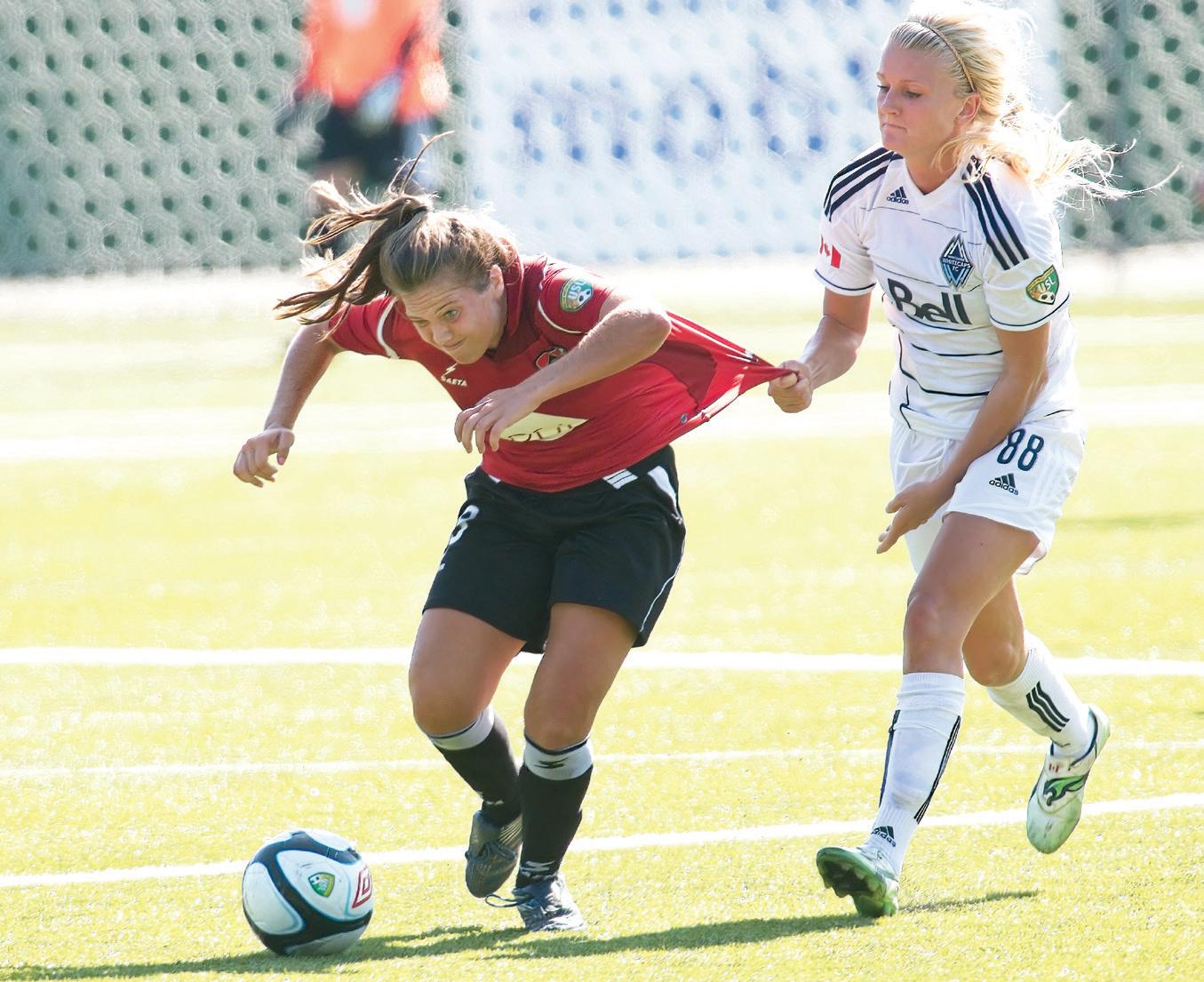
If a player
to happen based on their actions. The referee should not look for reasons to not have to eject the offending player. The referee must follow the letter of the law in these instances and make the proper decision. Referees should never state they felt there was another defender close enough so the criteria for DOGSO was not satisfied. If the foul warrants an ejection, the player must be ejected. Failure to do so will only cause the game to deteriorate and if a similar incident occurs
involving the other team, the referee will be forced to make the same mistake twice.
A referee may go through almost a whole season of officiating without coming close to seeing a DOGSO infraction. But when it does happen, positioning, the ability to observe the play and do what is appropriate will be judged by all.
Paul Rojas, Ed.D, Morton Grove, Ill., has been a referee for more than 30 years, and is a high level Assessor and Instructor.
2024-25 NFHS Points of Emphasis
Each year the NFHS Soccer Rules Committee discusses items it feels are extremely important for officials. These items include problems from the previous season and ideas from committee members based on feedback from the previous seasons. This year the committee has determined three items that need to be incorporated into the rulebook as Points of Emphasis.
Official’s Toolbox for Game Management
A referee’s “toolbox” for game management consists of various skills, techniques and strategies they employ to effectively officiate a match and maintain control over the players, coaches and the game environment. Here’s are a few items in a referee’s toolbox:
•Communication. Clear and
effective communication with players, coaches and the officiating team is key. Referees use verbal and non-verbal cues to convey decisions, instructions and warnings, working with game site administration to facilitate a positive game environment.
• Game control. Referees use their authority to manage the tempo and flow of the game. They may intervene to calm tensions, prevent conflicts or
DALE GARVEY REFEREE June 2024 | 67
who gets by the last defender and has control of the ball gets tugged from behind while taking a direct path toward the goal, that is a clear case of DOGSO.
CASEPLAYS
Persistent Infringement
Play: Team A has committed several offenses against the opponents in a short period of time. After that, A1 fouls B2 (not in a reckless manner or using excessive force). Ruling: Where there is a pattern of offenses by one team — especially if directed against a particular opponent(s) — the referee should consider this persistent infringement. For IFAB matches, if A1 has not committed any previous offenses (and thus is not technically guilty of persistently infringing the Laws of the Game), the caution could be for “unsporting behavior — showing a lack of respect for the game.” Law 12 does not specify the number or pattern of offenses that constitutes “persistent offenses.” This term relates to offenses (usually fouls) on the field of play which, in themselves, do not individually merit a caution (e.g., careless challenges) but can accumulate to become “persistent” (NFHS 12-8-1b; NCAA 12.4.3.2; IFAB 12.3).
Serious Injuries
Play: A1 and B2 jump for a header in the middle of the field and collide in the air while competing legally for the ball (neither of them touches it).
After that, both players fall to the ground and appear to be seriously injured. Ruling: The referee should stop the game immediately and have the training staff or coaches assess the players. For NFHS games, the player must be evaluated and medically cleared by an appropriate health care professional as soon as possible. For games played under the NCAA rules, the player is to be removed and evaluated for a concussion by an appropriate health care professional. The player is not to return to the game without permission from the primary health care personnel (NFHS Suggested Guidelines for Management of Concussion in Sports; NCAA Appendix C; IFAB 5.3).
address unsporting behavior. This can include issuing verbal warnings, cautions, ejections or temporarily suspending the game to deal with spectators or outside interference.
•Development. With the explanation of misconduct, both coaches and officials should approach interactions positively with respect and maintain professionalism. Officials should clearly and concisely state the specific nature of the misconduct fostering a positive learning environment in the face of difficult situations.
•Adaptability. Every game is different, and referees must adapt to changing circumstances. They may need to adjust their officiating style based on the level of play, the behavior of the players or unexpected developments during the match. By utilizing these tools effectively while managing emotions and remaining calm and composed, referees can promote fair play, ensure player safety and contribute to a positive and enjoyable experience for everyone involved in the game.
Stopping a Promising Attack
The inclusion of the considerations for a promising attack serves as a crucial clarification in the rules, specifically addressing what was previously referred to as tactical fouls. While the considerations are clear for obvious goal-scoring opportunities, promising attacks may be more difficult to recognize. The strategy of tactically fouling with the aim to interrupt the attacking team’s progress without necessarily denying an obvious goal-scoring opportunity is a form of misconduct. Sections 7 and 8 in rule 12 highlight the importance of
discerning the nature of these types of tactical offenses for consistent and fair officiating.
Like DOGSO situations, fouls that stop a promising attack (SPA) might not be severe in nature, but the defense’s impact on the attacking team’s potential needs to be recognized and dealt with accordingly. Officials need to understand the nuanced dynamics of play and maintain a tactical awareness of the pace of play to recognize SPA incidents. Referees are tasked with evaluating multiple factors to determine the promise of an attack, encompassing elements like player positioning, ball control, defensive presence and the team’s pace. Importantly, any foul disrupting a promising attack is considered misconduct, warranting a caution and a yellow card for the offending player. If SPA occurs within the offender’s penalty area and the foul is an attempt to play the ball, the player is not cautioned if the referee awards a penalty kick. In other SPA circumstances inside the penalty area (e.g. holding, pulling, pushing, no possibility to play the ball, etc.) such as seen in the PlayPic below, the offending player must be cautioned.
After a Goal
After a goal is scored, officials must stay alert as there are several important considerations and tasks to manage. In addition to lower priority administrative tasks, officials must be vigilant after a goal for any signs of escalating tension or potential misconduct and address any issues promptly to prevent any situations from escalating. Key aspects of concern include:
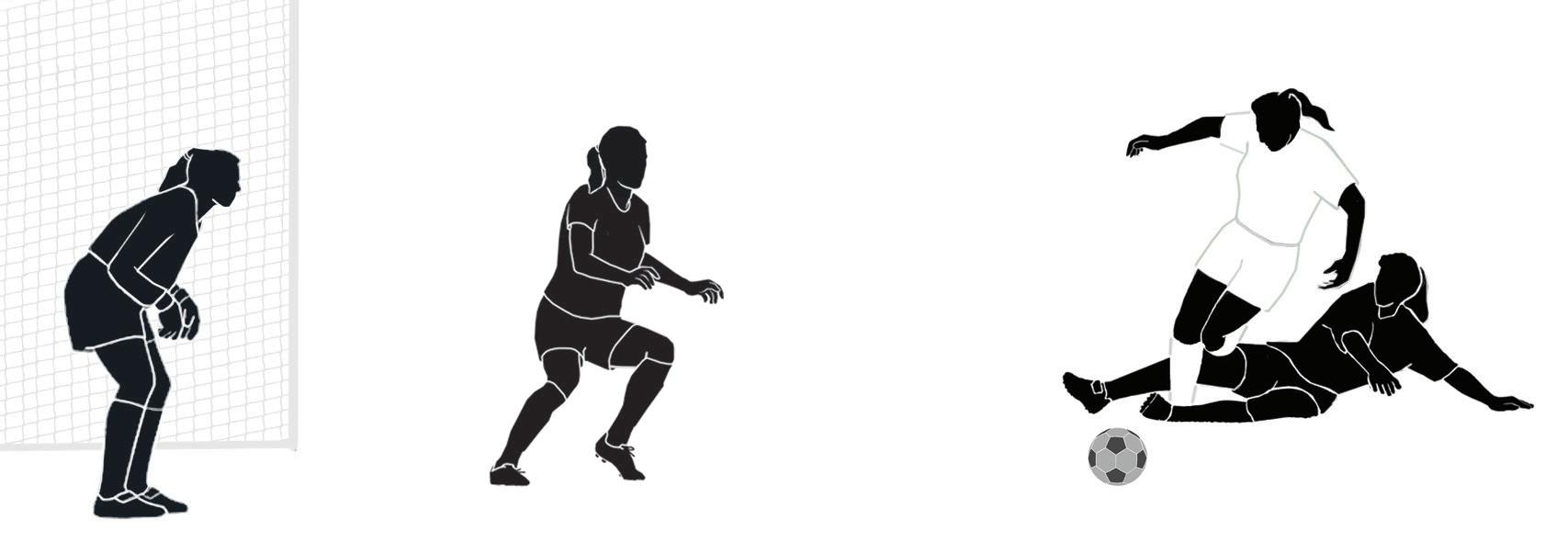

68 | REFEREE May 2024 SOCCER
A
• Working as a team with other officials (i.e., lead assistant referee). Work together to determine if the ball was, in fact, scored properly by wholly crossing the goalline, under the crossbar and between the goalposts. The crew must ensure the goal was legally scored and there were no infringements or violations during the buildup to the goal. This includes checking for any potential offside offenses by the attacking team that would disallow the goal.
•Observing players’ reactions and behaviors after the goal to identify and address any unsporting conduct or misconduct. This includes potential confrontations, dissent or provocative actions. If the team that scored is behind, it may try to quickly retrieve the ball from the goal or grab it out of an opponent’s hands. The defense that was setting an offside trap may swarm around the assistant referee to argue about a non-call. These can be volatile situations and

proactive officials will intervene quickly to make their presence known and encourage attackers to return to their side of the field promptly before their actions rise to misconduct.
•Monitoring player celebrations to prevent excessive or inappropriate behavior. As seen in the PlayPic, celebrating after a goal is allowable.
Celebrations might include leaving the field, but players cannot prohibit a timely restart with excessive or prolonged acts. This includes unsporting gestures, removal of shirts, taunting or any actions that could incite the opposing team or spectators.
• Record keeping and beckoning in substitutes. The crew should include in its pregame discussion how to maintain the game record while also managing players after a goal is scored. Either team may substitute an unlimited number of players from the bench provided they check in. Officials need to work together as a crew to recognize substitutes wanting to enter the game and be mindful of substitutes who may trickle in.
After a goal is scored, players’ reactions and emotions are high on both sides. The scoring team is celebrating and the scored upon team is frustrated. The officiating team should stay alert and be prepared for any unusual occurrences.
WHAT EVERY OFFICIAL NEEDS TO KNOW




















101 Tips for Better everything from the basics to navigating networking and politics, to advice on how to manage difficult games, to practical information that blows up generally accepted officiating myths, this book for better officiating
Officiating has it all! 5.5” x 8.5” 48 Pages $595 THIS low cost OFFICIATING GUIDES PACKAGE ALSO AVAILABLE SHOP ALL THE GUIDES AT STORE.REFEREE.COM/SMALL-PRICE $2495 FOR ALL SIX GUIDES B

if the contact by number
DOUBLE TROUBLE NCAA Adopts Major Changes to Ballhandling and Liberos
By Brad Tittrington
The NCAA Women’s Volleyball Rules Committee met in January and recommended eight rule changes that were later approved in February by the NCAA Playing Rules Oversight Panel for the 2024 and 2025 seasons. The biggest rule change tweaks the ballhandling rule when it comes to a team’s second contact.
Other rule changes include the allowance of two liberos as well as changes to uniform, jewelry, headgear, protest and reviewable decision rules. Below is a breakdown of each of the rule changes in perceived order of importance. Referee would like to thank
Julie Voeck, NCAA women’s volleyball secretary-rules editor, for checking the accuracy of this article. The committee was still finalizing language as of press time and any additional changes will be noted in the July issue.
Successive Contacts 14.2.3
In an effort to make the game more entertaining for the players and fans, and reduce debate between coaches and officials on judgment decisions, the committee voted to allow double contact on a team’s second contact, provided it is still one single attempt to play the ball and the ball is next contacted by a teammate. The rule change is designed to provide more
consistency to the game and allow for continuation of play Data collected from an experimental rule in spring 2022 showed the rule change would only impact a small number of calls.
There has been a lot of debate in the recent past to change the rule with the reasoning being a ball double contacted hurts the offensive team if it remains on the offensive team’s side of the net. A misplayed ball throws off timing and makes it more difficult for the next player to get a quality contact on the ball. It does not harm the defensive team unless it crosses the net.
The rule does stipulate the ball must next be contacted by a teammate.
VOLLEYBALL RULES, MECHANICS, PHILOSOPHY EDITOR: BRAD TITTRINGTON btittrington@referee.com 70 | REFEREE June 2024
DALE GARVEY
One of the major rule changes adopted by the 2024 NCAA Volleyball Rules Committee allows a player to contact the ball more than once with any part of the body in a single attempt to play the ball on a team’s second contact, as long as the ball stays on that team’s side of the net. (R1) Allan Chinn, Seattle, and (R2) Ron De Jesus, Vancouver, British Columbia, must first determine
10 is legal and then must wait and see if the ball clears the net before determining if the contact is a fault.
It only becomes a fault when it crosses the net without first being contacted by a teammate. As in the past, it is also a fault if the ball is caught or thrown, or there is prolonged contact by a player.
Play 1: On a difficult serve receive, A1 dives and plays the ball, but the ball is shanked toward A2, a middle blocker. A2 attempts an overhand pass in an effort to save the ball, but double contacts the ball on a single attempt to play the ball. The ball (a) goes toward A3, an outside hitter, who attacks the ball over the net and down to the floor on team B’s side of the net, or (b)goes toward A3, an outside hitter, but completely crosses the net and is next played by B4, a front-row player, who attacks the ball. Ruling 1: In (a), the ball remains live since it remains on team A’s side of the net and is next played by a team A player. In (b), when the ball is double contacted by A2, it remains live. However, once it crosses the net, it becomes a dead ball and a fault on team A. The first referee should blow the whistle and signal a fault, as shown in PlayPic A.


Play 2: A1 receives a hard-driven serve and passes the ball into the net. A2, the setter, tries to set the ball out of the net and has both hands underneath the ball. The first referee deems the set by A2 to be prolonged contact, but allows play to continue. A3 then bumps the ball over the net. Ruling 2: Incorrect ruling by the first referee. The rule regarding prolonged contact has not changed. In this scenario, the contact by A2 should be whistled and a caught ball violation (as shown in PlayPic B) should be signaled.
Libero Designation 12.1.1
To allow more players the opportunity to play and compete, the committee voted to allow teams to designate two liberos per set. In the past, only one libero was allowed to be designated per set. The rule change allows coaches the opportunity to designate one or two liberos per set, or they may choose not to use a libero. While two liberos are allowed to be designated per set, only one libero may be on the court at a given time. This change allows teams to have one libero who may be stronger in the offensive game and one who is stronger in the defensive game. It also allows teams to interchange liberos if one is struggling during a set. And while two liberos may be used per set, those liberos are only allowed to serve in one spot in the rotation. Libero trackers will use an “L” only to indicate when a libero replaces a regular player. Both liberos must be designated on the lineup prior to the set in order for the team to use both liberos in the set, designated as L1 and L2.
Play 3: In the first set, in the second serving position, the first libero (L1) replaces A2 and serves. Later in the set, when the second serving position is due to serve again, the second libero (L2) legally replaces A2 and serves. Ruling 3: Legal. Both liberos share a spot in the service order and may only serve in that spot. Since L1 and L2 both legally replaced A2 and served in the same spot, there is no penalty. If the liberos later in the set serve in a spot other than the second position, it would be a service fault.
SURVEY SAYS ...
Do you feel you could do all of your training online and be a good official?

QUICKTIP
Be cordial to members of the media who are there to cover the match. They are critical to promoting the sport of volleyball. If you see credentialed photographers before the match, introduce yourself, explain the areas where they can work and answer any questions they may have. Sometimes they will come to the scorer’s table to get a picture of the team rosters for their record or even ask for your name. Accommodate them when you can.
“I love being part of a game that I’ve always loved, and I love being a part of the highest level this game is played. Whether it’s the AVP, Big Ten or FIVB, I am so lucky I get to do what I do and see these amazing matches, seeing players creating new techniques that are new to watch; you’re getting to witness the change in the game firsthand. And I love challenging myself to constantly get better.”
— Suzanne Lowry, FIVB, AVP and PAVO referee, on her favorite part of being a referee.
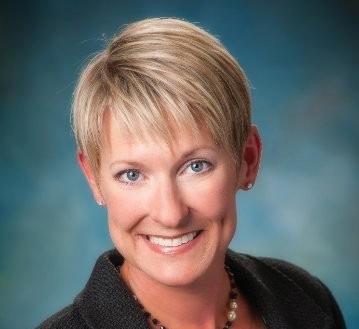
REFEREE June 2024 | 71
SURVEY OF 5,733 RESPONDENTS ON THE 2023 NASO NATIONAL OFFICIATING SURVEY POWERED BY REFEREE.COM
SOURCE: SARAHSPONCIL.COM/BLOG THEY SAID IT 17.18% YES 74.95% NO 7.87% NOT SURE A B
VOLLEYBALL
TEST YOURSELF
In each of the following you are given a situation and possible answer(s). You are to decide which answer(s) are correct for NFHS, NCAA or USAV rules, which might vary. Solutions: p. 81.
1. A1, a back-row player, attacks a ball completely above the top of the net. When A1 jumps, her foot is touching the attack line. When do the referees whistle and signal an illegal back-row attack?
a. Immediately upon contact.
b. After the ball has passed completely beyond the net.
c. After the opponent has legally touched the ball.
d. Both b and c.
2. An unnecessary delay (NFHS)/ delay sanction (NCAA/USAV) is assessed to the team when:
a. Cleaning up liquids by a team after a timeout causes a delay.
b. A team does not return to play when directed to do so by the referees.
c. A substitution request is withdrawn after the request has been recognized (whistled) by the referees.
d. A team requests a timeout, which is recognized (whistled) by the referees, after the team has used both timeouts for the set.
e. All of the above would result in an unnecessary delay/delay warning for the first occurrence in the set (match in USAV).
3. As the second referee checks team lineups prior to the start of the first set, she notices team A has not listed a libero on the set one lineup sheet, but a libero is in the libero replacement zone waiting to be authorized to enter the court.
a. The second referee should immediately go to team A’s coach and allow the coach to correct the lineup by listing a libero in the appropriate space. The libero is then authorized to enter the court.
b. Team A will not be permitted to use a libero for the first set.
c. Team A will not be permitted to use a libero in the match.
4. Which of the following is a responsibility of both referees and may be whistled by either?
a. Ballhandling faults.
b. Illegal (back-row) attacks and blocks.
c. The number of hits by a player or team.
d. Screening.
Jewelry 7.2.2
During the last rule change cycle, the rules committee allowed players to have stud and post-like piercings above the chin. The committee has gone a step further and changed the jewelry rule to now allow small, snugfitting nose rings as well as ear cuffs (as shown in PlayPic C) in addition to studs and posts. The rationale is these new allowances will not increase risk to players, teammates or opponents. This further aligns NCAA with USAV rules, which helps eliminate confusion for officials, coaches and players. Jewelry below the chin is still prohibited.

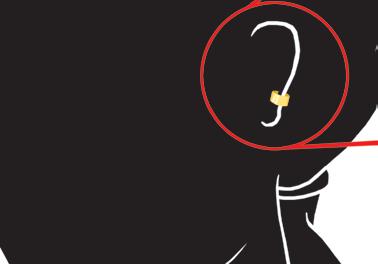




Administrative Sanctions and Crowd Control 6.5.2 (NEW), 19.2.5.4
Because of increasing concerns about spectators approaching the court, the committee voted to allow referees to issue an administrative warning (yellow card) and sanctions (red card) to the home team if host management does not address spectators who enter the designated playing area. This new system allows referees to inform host management to control/address spectator/fan conduct in the playing area. If it is not addressed, an administrative warning (yellow card) is issued and then an administrative red card (point) would be issued per incident.
Play 4: In the first set with the score tied at 23, a fan for the home team is upset with a non-call by the first referee, which leads to the visiting
team winning the point and making the score 23-24. The fan approaches the referee stand to voice displeasure with the non-call. The first referee requests host management remove the fan. Host management refuses to remove the fan. Ruling 4: The first referee has the authority to issue an administrative red card and award a point to the visitors, giving the visitors a 25-23 set win.
Reviewable Decisions
18.1.4.2.5
The committee has expanded the use of the challenge review system to allow coaches the ability to challenge interference above the net (when a player interferes with the opponent by making contact with the opponent), if the decision is dependent on whether the player contacted the opponent. Under the previous rule, coaches could only challenge if the ball was touched but could not challenge interference.
Play 5: A1, a setter, jumps near the net to set a ball on team A’s second contact. B2, a middle blocker, reaches into the plane of the net and tries to block the ball. A1 sets the ball to A3, an outside hitter, and the referees judge B2 made no contact with the ball. A3 hits the ball into the antenna and the first referee awards the point to team B.Team A’s coach wants to challenge B2 reached over and contacted A1’s hand during A1’s set. Ruling 5: The referees must first agree that if a touch is seen, they would whistle a fault for interference. If the second referee does go to the monitor to see if a touch occurred, the only thing that can be reviewed is if there was a touch and not anything else, such as the location of the ball in relationship to the plane of the net.
Headgear 7.2.3.2
The committee voted to require that any item that goes entirely around the head, such as a headband, head sweatband or bandana worn as a sweatband, or hair control device, shall be a single color. The reasoning is it provides for more consistency and uniformity among teammates. Requiring headgear to be a single color better aligns volleyball with headgear requirements in other sports. The previous rule did not have a color requirement for these devices.
72 | REFEREE June 2024
C
Logos - Uniform Bottoms
7.1.3.5 (NEW)
The committee voted to allow uniform bottoms to contain a single conference logo. The logo may not exceed four square inches and the bottoms may also contain no more than two identifying names or abbreviations placed on the front, side or back of the bottoms. The name(s) may identify the school, the school nickname or mascot, the player’s name or any other designation as approved by the institution (as shown in PlayPic D). Bottoms may also contain a single manufacturer’s logo per rule 7.1.3. However, no commercial advertising is permitted.
The rationale for the change is it creates logo requirements for uniform bottoms and aligns with the logo requirements for uniform jerseys. In the absence of a rule, this has been the current interpretation for uniform bottoms. A waiver could be provided for a period of time for existing
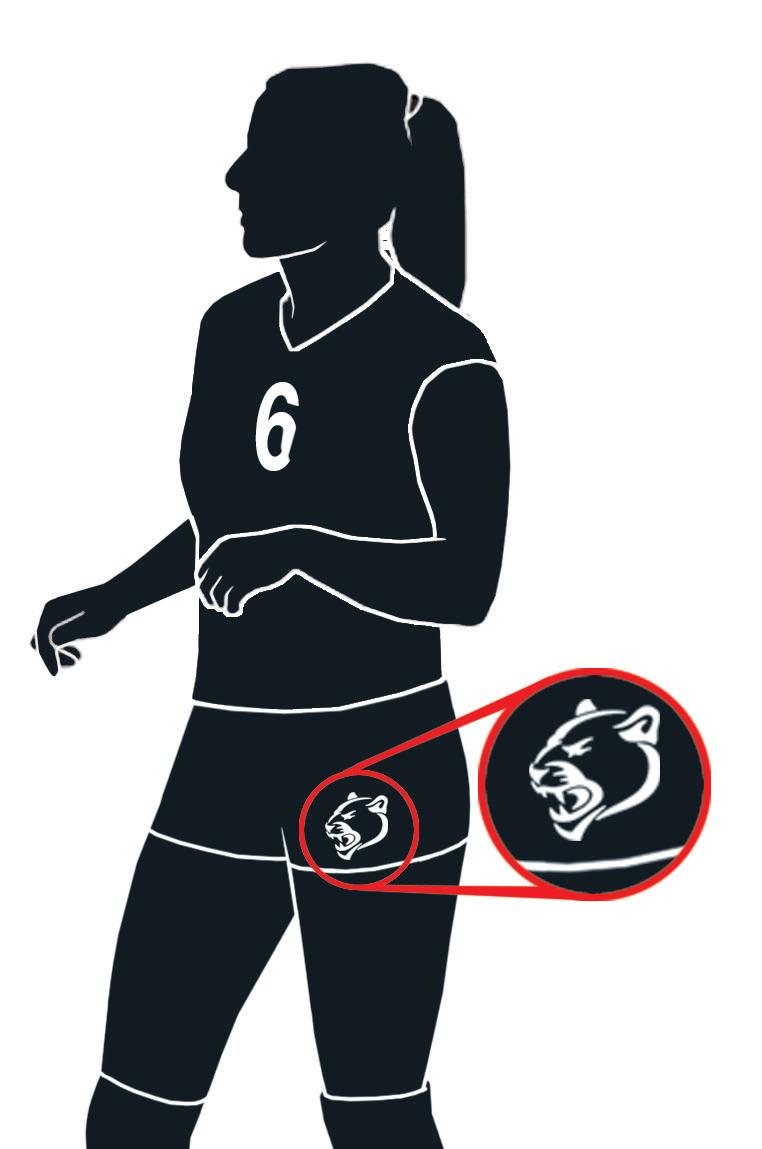
Protests 17.2.2.5
This rule change requires all
protests be resolved during the match. It eliminates rule 17.2.2.5 which stated the first referee forwards the protest information to the NCAA secretary-rules editor for a final decision on a protest after the match. The reasoning is the final results of the competition are best decided during the contest, not at a later date. The rule change eliminates the potential to replay a match, alleviating additional travel costs and administrative coordination.
Experimental Rule
One final experimental rule permits women’s teams during the non-traditional spring season to use the non-smooth covered ball featured in men’s/international play. Brad Tittrington is an associate editor for Referee. He referees college and high school volleyball, umpires D-I softball and officiates women’s college and high school basketball and high school football.


LEARN VOLLEYBALL RULES FAST & EASY







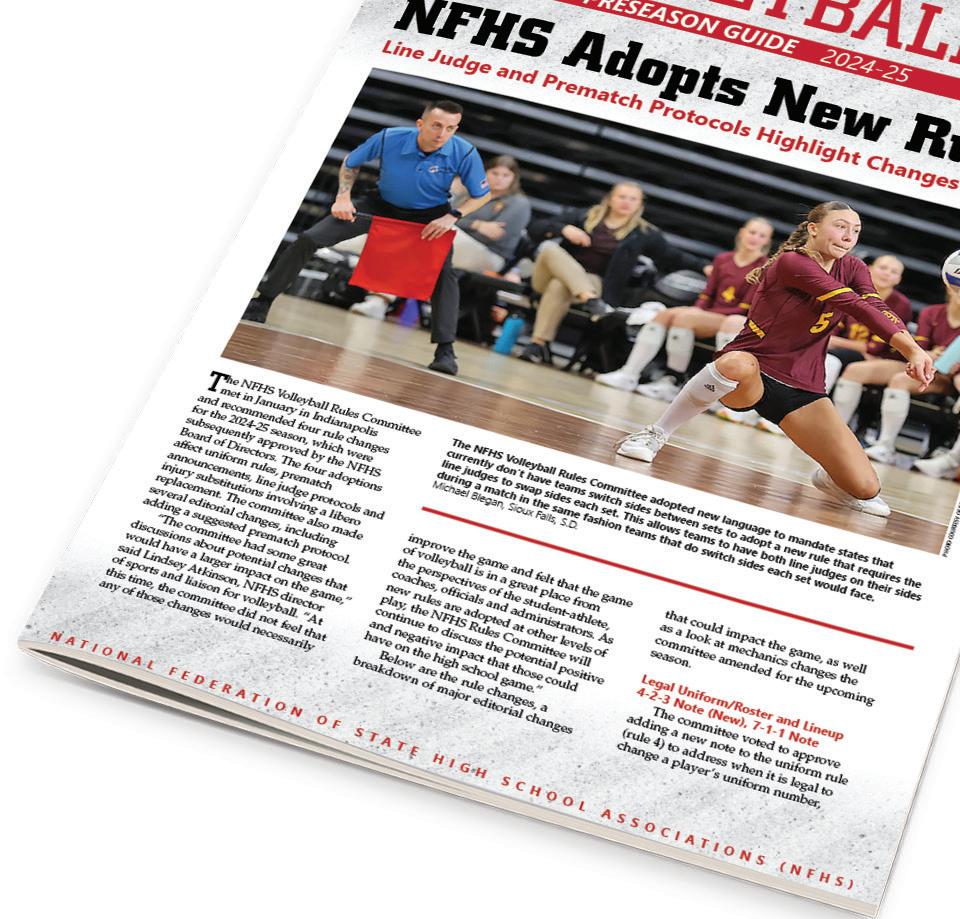


REFEREE June 2024 | 67
uniform bottoms that do not meet these requirements.
Volleyball’s most complicated rules are explained in everyday language and reinforced with 100s of illustrations. $1595 STORE. /VOLLEYBALL $495 192 Pages 5.5” x 8.5” 16 Pages 8” x 11” D
VOLLEYBALL
CASEPLAYS
Coach Conduct
Play: Team S’s head coach is standing and giving instructions to his team before the serve. After the ball is served, the coach continues to stand and give instructions, but moves inside the substitution zone. At the end of the rally, the second referee informs the coach to stay inside the libero replacement zone/coaching zone. During the next rally, the coach is giving instructions to his players while standing in the substitution zone. At the end of the rally, the first referee issues the coach a yellow card. Ruling: Correct procedure in all codes. Coaches may only stand to give instructions in the libero replacement zone/ coaching zone or while sitting on the team bench. Coaches and non-playing team members may not stand in the substitution zone during play (NFHS 12-2-5; NCAA 6.1.4.8; USAV 5.2.3.4).
Substitution Procedure
Play: Team S’s head coach requests a timeout. At the end of the timeout, but before the second referee has given the court back to the first referee, team R’s head coach requests a substitution and R1 is standing in the substitution zone. The second referee recognizes the request and allows the substitution. Ruling: Correct procedure in all codes. During a timeout, substitutes may enter the set at the end of the timeout, once they are authorized to do so by the second referee. It does not matter which team requested the timeout, both teams may substitute at the end of the timeout (NFHS 10-2-5; NCAA 11.3.3.2.6; USAV 15.10.3.1).
Legal Attack?
Play: A1 receives the serve and passes it to A2, team A’s setter. A2 tries to set the ball to A3 for an outside hit but pushes the ball a little too far. The ball just barely starts to cross the net when B4, a front-row outside hitter, attacks the ball down to team A’s side of the court. The first referee rules this an illegal attack since the ball had not completely crossed the plane of the net. Ruling: Incorrect in all codes. Once the ball partially crosses the net, the ball may be attacked and the hit by B4 was legal (NFHS 9-6-6; NCAA 14.5.3; USAV 13.2.1).
New Season, New POEs
The NFHS issued three points of emphasis (POE) for the 2024-25 season; one specifically dealing with gameplay and the other two dealing with game management. The three POEs involve ballhandling, scoring best practices and host management best practices. Here is a breakdown of each.
Ballhandling
With major rule changes occurring in both NCAA and USAV in regard to ballhandling, and not having had a ballhandling POE for several years, the NFHS has placed an emphasis on it for the upcoming season. The rules in NFHS in regard to ballhandling have not changed over the past several seasons; however, it continues to be a controversial topic.
The goal for officials is to maintain a consistent level of ballhandling from set to set and match to match. While spectators are influenced by coaches’ reactions, the spin of the ball and their personal opinions, officials must judge each contact on its own merit and remain neutral to maintain fairness for both teams.
A previous NFHS volleyball POE stated the goal was to increase the continuation of play when judging second ball contacts that are directed to a teammate. A player in good position must play the ball without discernible double contact (as shown in PlayPic E). Less severe judgment should be applied to contact by a player who makes a challenging or spectacular play while maintaining a legal play (as shown in PlayPic F). Any ball that is blatantly mishandled should still be ruled a fault, regardless of the challenging or spectacular nature of the play. Any multiple contacts on the third ball must be whistled by the officials.
However, with the increase in players’ athleticism, officials are being challenged to judge the legality of the first contact as well. The rule states the ball is not allowed to come to rest or involve prolonged contact. Just because contact is either made with an underhand action or with an open hand does not automatically mean the contact is illegal.



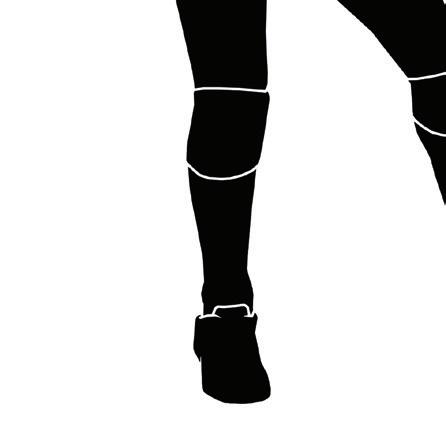




The same is true when a player attempts to make a play on a ball in an attempt to keep the ball alive after errant contact by a teammate. As long as there is not prolonged contact, players should be given the opportunity to legally play the ball.
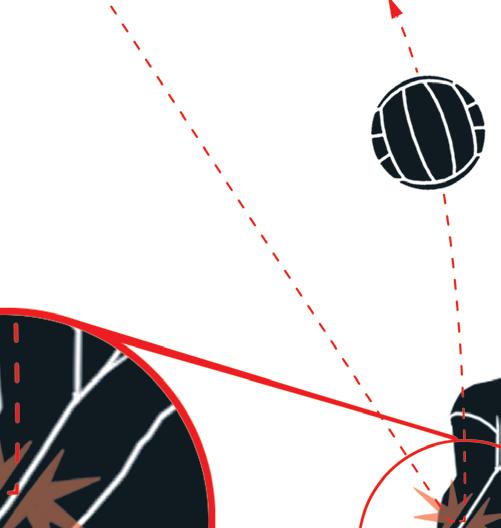


74 | REFEREE June 2024
E F
Any prolonged contact or obvious double contacts on those plays should still be whistled as faults.
All skills should be judged similarly, according to the rules. Players are utilizing the setter dump effectively and attackers are tipping the ball deeper into their opponent’s court and tipping with more power. Because the actions are becoming more and more prominent, it is important for officials to determine where the ball contact is initiated in relation to the body and judge how long the player continued the action while in contact with the ball.
Scoring Best Practices
Because of the integral role the score crew plays during a match, the NFHS developed a POE to address ways the score crew can facilitate a smooth match tempo. The scorer should do all of the following:
•Arrive at the site no less than 20 minutes before match time.
•Complete the match information in the scorebook/scoresheet or an electronic scoring device.
•Accept the team rosters and team lineups.
•Record each team’s lineup in a scorebook/scoresheet or an electronic scoring device.
•Secure each team’s lineup sheet by placing them face down on the score table.
•Collaborate with the R2 to ensure that each team’s lineup is correct on the R2’s lineup card and verify that the teams are in correct starting positions on the court prior to each set.
•The scorer should establish a routine with the assistant scorer who serves as a spotter and communicates the numbers of the incoming/outgoing substitutions and replacements.
•The assistant scorer tracks each libero replacement and each substitution.
•After the substitution information has been submitted, the scorer should indicate readiness to the R2.
•For written scoring, alternate each full rotation/round of service (all six positions from each team have served) in a contrasting color of ink.
•If there are any scoring issues, notify the R2.
•Communicate with the R2 during timeouts and between sets (as shown in PlayPic G).
Host Management Best Practices
Host management plays an important role in creating a positive, fun and safe environment for the players, coaches, officials and spectators. The designated administrator on site should introduce themselves to the officials upon arrival




at the facility and show them to their locker room(s). The same should be done for visiting teams as they arrive on site. Officials and coaches should be able to identify host management easily if a situation should arise. In addition to being present, host management should:
•Ensure the facility is set up properly one hour before the match.
•Ensure the net system is set up at the correct height and is padded.
•Ensure the referee’s stand is safely secure and padded.
•Assist in ensuring teams do not enter the court from both sides and do not encircle the entire court.
•Be available throughout the match(es).
•Post signage for home/visitor and/or student section. Allow fans to stand, but not on the playing surface.
•Ensure any unsporting conduct (comments intended or designed to embarrass, ridicule or demean others) by spectators is not tolerated. It needs to be immediately addressed.
•Collaborate with the officials to suspend play for fan issues, if necessary (as shown in PlayPic H).
REFEREE June 2024 | 75
G H
PROFILES
Ex-College Grid Star Now Officiates Prep Basketball
Jason Franchuk
As a two-sport high school athlete, Curtis Enis never played below varsity.
But the “underclassmen” games are his life these days. The former Penn State football great, who was the fifth overall pick in the 1998 NFL draft, is now a second-year Ohio high school basketball official who handles
City area to coach high school football. In 2010, he inherited a struggling Bradford program; in 2012, Enis led the team to its first postseason appearance since 1982.
After resigning in 2014, Enis stayed around youth sports. But he was always itching to wear stripes.
“I want to move up in the sense that I want to continue to be surrounded by the game and be around quality officials,” Enis said. “But really, I just enjoy giving back. Facilitating the game. Trying to help young people, or even help coaches, because I understand that world, too. My goal out there is to call the game in a way that allows the teams to compete to the best of their abilities.”

“I was a really good basketball player, too, and truth be told I always loved it more than football,” Enis said. “I really envisioned myself playing in the NBA someday.”
In addition to his accolades on the football field, Enis was a star shooting guard and remains the all-time leading scorer at Mississinawa Valley High School in Union City, Ohio. He earned Division I offers from basketball schools such as Ball State and Bradley but ultimately opted to play football at Penn State, where he finished fifth on a memorable Heisman Trophy ballot in 1997.
After a three-year NFL career with the Chicago Bears and Cleveland Browns, Enis returned to the Union
Enis, 47, saw his NFL career derailed by a degenerative condition in his left knee. Those aches and pains don’t affect him as much on hardwood, he said. He’s kept his body in good condition and has routines to ensure he’s ready to be an effective official.
Would the former Heisman candidate consider officiating football someday?
“Absolutely not. It’s raining today here, and I know I don’t want to be out there in that,” Enis said with a laugh. “Also, I just knew I wanted to continue being connected to basketball. I’ve taken the personal oath that I want to be a consistent official. The players deserve that because I know all that they put into getting better.”
Enis said he knew he’d enjoy being around the young players. He underestimated the camaraderie he’d feel with referees, including several who called his games back in the day.
“They’ve shared some stories I had forgotten about,” he said. “Told me about my games, or how high I used to jump. It’s been awesome and really humbling at the same time.”
Jason Franchuk, Carbondale, Ill., officiates high school and junior college women’s basketball.
Teachable Moments
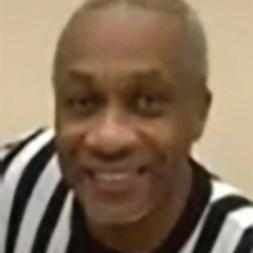
Dwyane Singletary
Baltimore
Dwyane Singletary has been officiating youth basketball games in Severna Park, Md., for a decade. When he’s on the court with second- and third-grade players, Singletary makes an effort to instruct and encourage the kids in addition to his duty as a referee.
“This is where you teach the game,” Singletary told WJZ News. “This is where you teach sportsmanship. This is where you teach skills. This is where you teach basketball, situational basketball.”
Singletary has officiated higher levels but has always had a special place for working youth ball. “The benefit is when I see kids years down the road, I see kids now that are in high school, and they talk about things I showed them five, six, seven, eight years ago, and it’s a blessing,” he said.
SOURCE: WJZ NEWS
Up and Coming
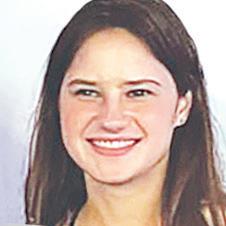
Jenna Prevet Nesconset, N.Y.
The Eastern New York Youth Soccer Association (ENYYSA) named Jenna Prevet its 2023 Young Female Referee of the Year in January. Prevet started officiating soccer when she was 14 and joined the Long Island Soccer Referees Association in 2018. She has two sisters who also referee soccer on Long Island.
“Jenna is an up-and-coming referee who proudly represents Eastern New York wherever and whenever she is on the field,” ENYYSA State Referee Administrator Joe Brosi said.
A U.S. Soccer referee, Prevet has worked the ENY State Cup and United States Youth Soccer President’s Cup Nationals.
SOURCE: ENYYSA
Do you know a person or group who should be profiled? Send info to us at profiles@referee.com
PROVIDED BY CURTIS ENIS
PERSONALITIES PLUS 76 | REFEREE June 2024
Former Penn State running back Curtis Enis, who was a Heisman Trophy candidate and played in the NFL, is now a high school basketball official in Ohio.
THE ON LY OFFICIAL COLLEGE MECHANICS MANUAL
The CCA Mechanics manual is the only official source for college football mechanics. When you pair your rules knowledge with advanced mechanics graphics from Referee, you will confidently be in the right place at the right time to make every call.



GET YOURS TODAY! // STORE.REFEREE.COM/FOOTBALL
$1995 ONLY ALL NEW FOR THE 2024 SEASON! Size: 5.5”x 8.5” Pages: 272

GUEST EDITORIAL
BY RALPH SWEARNGIN
ONNECTING REWS
SOfficials come from varying backgrounds but must come together to be a cohesive unit.
ports officials live in two worlds: the world of officiating and the world outside of it. That sounds like a saying from Captain Obvious, but it is significant. The complicated world of officiating involves actions that occur on the court or field, interactions that occur during training sessions and interactions that develop camaraderie with other officials.
The world outside of officiating is even more complicated. Activities in the nonofficiating world are influenced by cultural factors such as family history, political views, economic status, demographic status and rapid social change. In America today, those factors are creating division among people, and I call this “cultural disconnect.“
What might cause officials to experience cultural disconnect? Obvious answers would include differences in race, ethnicity and/or gender. It also could include having resided

in different nations or in different geographical areas of this country, or ruralurban-suburban differences. A growing source of cultural disconnect arises among people who grew up in different cultural eras and possess different attitudes about changes in cultural practices and values.
When we enter the officiating world, we bring aspects of the outside world with us. Regardless of the sport, officiating crews must be connected to carry out their duties. We must be committed to working together to officiate the game effectively. While the officiating world is not as diverse as it could be, it is likely more diverse than it has ever been. Finding ways to connect diverse individuals into a cohesively functioning crew is essential in today’s world of officiating. We need to recognize that much-needed
SHUTTERSTOCK REFEREE June 2024
78 |
recruitment of officials will bring people into officiating from a wide range of cultural experiences. The goal of adding new members to the world of officiating needs to be more important to us than avoiding any discomfort we experience with cross-cultural interactions.
Let’s look at a hypothetical crew of football officials. Let’s say there are three caucasian, two African-American, one Latino and one Asian-American official on that crew. Five of the officials are male and two are female. Two of those officials are business executives, two are construction workers, two work in sales and one is a student. Three of the officials are older than 50 years of age, two are around 40 years of age and the other two are younger than 30. That crew would certainly bring diverse cultural backgrounds with them to their games. However, when they take the field, they must be connected to enforce the rules and to use proper “people skills” to manage the game. Those officials cannot afford to allow cultural disconnect to interfere with their officiating preparation or performance.
A useful term to aid our understanding of developing crew connectivity in the midst of cultural disconnect is “pluralism.”According to the Merriam-Webster dictionary, pluralism is the “state of living in which members of diverse ethnic, racial, religious or social groups maintain and develop their traditional culture within a common society.” In a pluralistic paradigm, diverse officials can become connected without giving up their cultural preferences.
Crew connectivity does not demand the officials have to agree on every issue outside of the officiating world. And when we have different opinions about those things, we need to interact with each other respectfully. We do not have to give up our opinions, but we should not impose them on others or
allow the cultural differences to interfere with carrying out our officiating duties.
An overlooked arena for cultural differences involves attitudes about the speed of cultural change. A wide range of technological innovations used in training officials, in carrying out game duties and in conducting officiating assessments have been introduced over the past decade. Some of the more experienced officials may find these new technologies somewhat confusing or even threatening. Some officials who have lived most of their lives in a world full of innovative technology may become frustrated working with officials who are resistant to change. When officials in either group dig in their heels to demand processes that are comfortable to them, there can be cultural disconnect. Crew connection in a cross-cultural setting means officials may have to operate outside their comfort zones in order to achieve group goals.
Connecting officials with different cultural experiences takes time to develop. We begin by relating to other people as individuals and not as members of some cultural category. We need to understand culture is something we learn; it is not wired into us at birth. Therefore, we can learn to change our attitudes about people who bring different cultural backgrounds to our crews. When you feel threatened by cultural differences, focus on what you can control — i.e., your responsibilities to be a productive member of your officiating crew.
Dealing with cultural disconnection goes beyond
Ralph Swearngin, Thomaston, Ga., is a former executive director for the Georgia High School Association, author of the Inner Game of Officiating and the 2017 Gold Whistle Award recipient.
just achieving connection within an officiating crew. Officials may experience cultural disconnect in regard to school environments where they work and the players and coaches involved in the competition. A session at the 2023 NASO Summit in Riverside, Calif., dealt with conscious and unconscious biases on the part of officials. The leaders of that session did an excellent job describing the challenges to impartiality that occur when those biases exist. Cultural disconnect often feeds our biases — knowingly or unknowingly. Cultural bias has been defined as “interpreting situations or
Cultural disconnect often feeds our biases knowingly or unknowingly.
actions of people based on the standards of one’s own culture.” Connecting to people in a cross-cultural setting involves having respect for those people, and speaking to them properly. The players and coaches should be thought of as participants in the game — not as people from a specific cultural category. Teaching officials to use “soft skills” to deal with players and coaches effectively is very important. Those skills also need to be applied to our relationships with fellow officials. When we teach those game management skills in our training sessions, let’s be sure to apply those ideas to our interactions with each other.







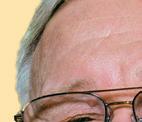
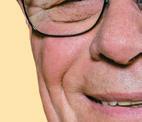

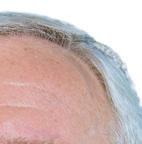


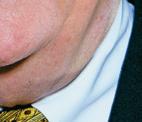



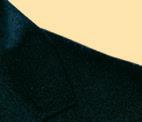
REFEREE June 2024 | 79
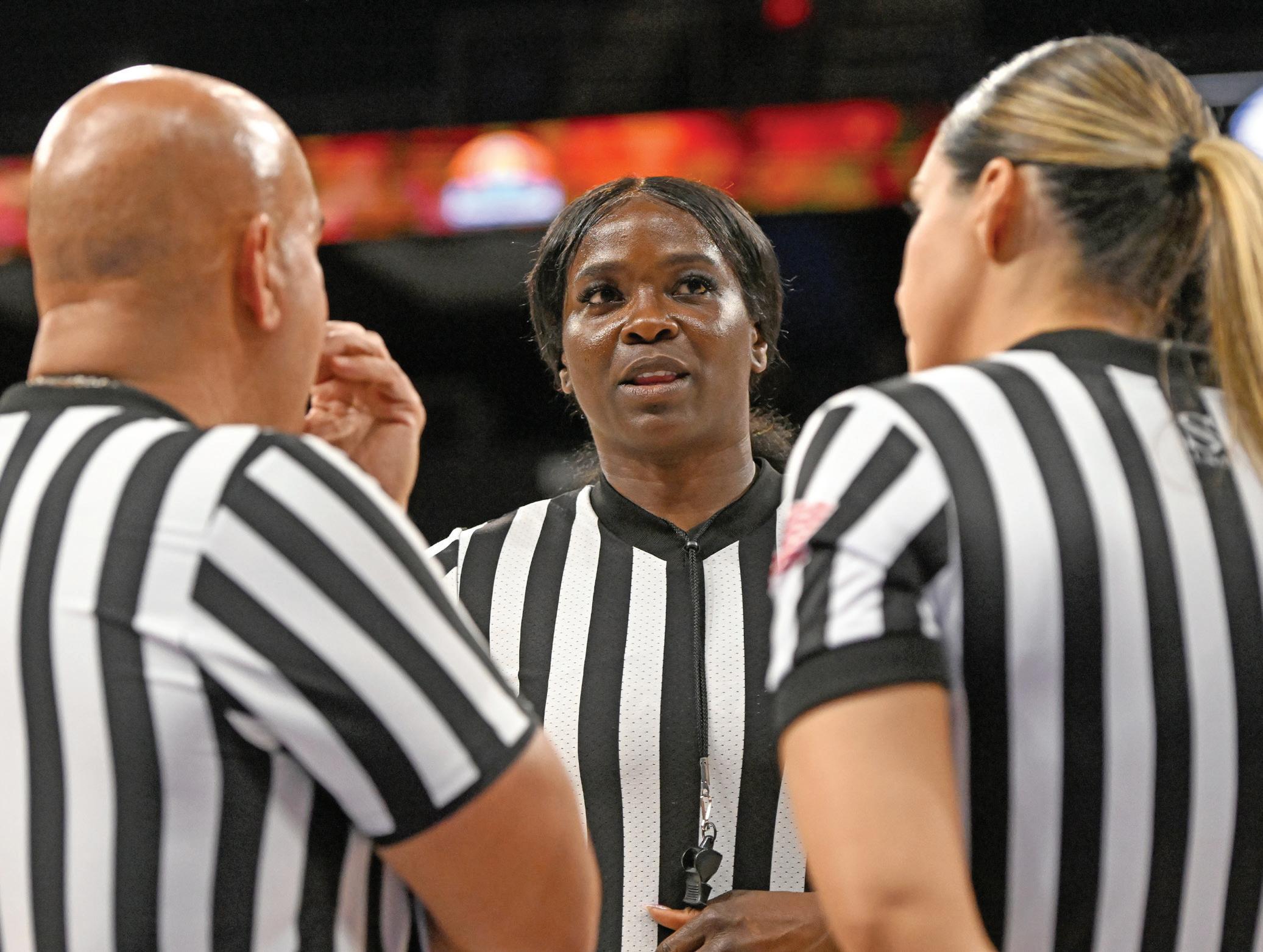
NO TAKE BACKS
Admit Mistakes, Prevent Recurrences
By the Referee editors
Nobody’s perfect. But because of the expectations for our industry, mistakes by officials get added attention, scrutiny and unending comments. Imagine how you would feel if you mistakenly signaled a threepoint field goal on a last-second shot when a shooter’s foot was actually on the line. It’s not easy to get past some
mistakes. Whether mistakes are big or small, it’s necessary to move forward … the right way.
Officiating is difficult. As the old saying goes, “You’re expected to be perfect and improve each game after that.” But once we truly understand and accept officiating is difficult, it becomes a challenge that requires honesty, humility and the desire to learn, grow and improve.
Mistakes will happen. They happen to every official, at every level and in every game. How we deal with mistakes and move beyond them is what determines our success. The fear of making mistakes and the fear of criticism and failure can be daunting. It’s why most people sit up in the stands and never put on the stripes in the first place.
FOR ALL SPORTS, ALL LEVELS 80 | REFEREE June 2024 EDITOR: JEFFREY STERN jstern@referee.com
ALL SPORTS
HESTON QUAN
If a mistake has been made and rules permit a correction, California officials (from left) Alex Carroll, Whittier; Sowo Varney, Long Beach; or Lisette Latapu, Walnut, can get together for a quick discussion and how to proceed. When a rule has been misapplied, it’s better to hold up the game for a short period and get it right than to guess and move on before it can be fixed.
Mistakes and thinking about them negatively can also create stress, which is too often underestimated as the root evil of much psychological and physical ailing. When the stress monkey is hanging around our neck, especially when we are working games, it is almost impossible to perform with good judgment, clarity and composure. Properly dealing with it, then letting it go and moving on, is the key to handling mistakes. When we discuss mistakes in sports officiating, it seems safe to categorize them into two distinct areas: errors in judgment and misapplication of rules. Not only are they different in terms of how and why officials make them, they are very different in terms of how observers and supervisors view and handle them. What is the dividing line between errors in judgment and misapplication of rules?
Be it errors in judgment or misapplication of rules, are there any mistakes that are unforgivable for officials? Absolutely.
There should be no leeway for issues involving integrity, such as cheating. No one who does not have full integrity should be an official. If you intentionally make a bad call or show favoritism to one team, you should look for a new avocation.
How to Move on
When you make a mistake in a game, two areas need to be examined in terms of dealing with the mistake. The first is on the spot, in the moment and for the remainder of the game. The second is the greater period of work: the days, weeks, months and even seasons afterward.
At the time you make the error, you must be able to re-focus. Once the play is over, move on. If it’s haunting you from that point on, you’re not going to be able to make it through the rest of the game. Officials who can’t let it go and dwell on it are more likely to make additional mistakes.
You have to be able to admit your mistake, first to yourself, then to officials with whom you’re working and maybe, depending on the circumstance, to the coach. You don’t have to explain how you arrived at
every call or admit you blew it. If it’s a close one and you feel you might have missed it, you can try to calm the screaming coach with, “I was where I was supposed to be. I had a good look at it, but to tell you the truth, I wouldn’t mind taking another look at it.”
Another argument-ender with which officials have had success is, “Coach, if it happened the way you said it did, maybe I did miss it.” You’re not directly admitting a mistake, but you’re addressing the coach.
Avoid being the official who comes in the locker room at halftime and says, “I don’t think we enforced that penalty correctly, but I didn’t want to say anything.” Raise the question on the field or court. If you’re wrong, there’s no harm done and you’ve delayed the game only for a few seconds. If you’re right, you’ve saved the crew an embarrassing miss.
Postgame Review
Once the game is over, the postgame meeting starts a reflection process. Start with reviewing the video if it’s available. If you see a mistake while watching, ask yourself, “If that wasn’t the right decision, what was the right decision?”
Ascertain what prevented you from making the correct decision and figure out how you can make sure you get it right the next time.
The key is a frank self-evaluation. You may have to beat yourself up some. That doesn’t mean completely destroying your self-confidence, but improvement only comes from an honest assessment. And that’s not just for rookies. As the saying goes, are you an official with 20 years of experience or have you just repeated your first year 20 times?
The perfect game has yet to be worked. Mistakes happen. It’s what you do afterward that makes all the difference.
No error, regardless of how or why it was made, will ever go away. But it is within your power to fix the case and ensure it doesn’t happen again. You cannot change the past, but it is possible to alter your future. Do you plan a regular break in your season schedule to
THEY SAID IT
“Refereeing is a thankless job, so, yeah, they shouldn’t be held accountable because so rarely are they recognized when they have a good night. An officiating crew can be flawless for 47 minutes and 45 seconds, but if they lose focus for one moment, coaches and players parade them through the postgame presser like they committed third-degree murder.”
— Sean Beckwith, columnist on Deadspin.com
DID YOU KNOW?
Norman Rockwell’s famous painting “Bottom of the Sixth” features three actual major league umpires. John “Beans” Reardon is front and center, Larry Goetz is on the left and Lou Jorda is on the right. Rockwell’s painting depicts umpires trying to decide whether or not to stop a game due to rain, while the rival managers from Pittsburgh and Brooklyn politic based on what is best for them. A blue-and-white polka-dotted tie — such as the one Reardon wears in the painting and wore on the field — is in the Baseball Hall of Fame, as is Rockwell’s original painting.

REFEREE June 2024 | 81
the
Yes 36.4% No 63.6% SOURCE: POLL OF 139 REFEREE READERS
SAYS ...
recharge
batteries?
SURVEY
Talk With Players Ain’t Always Cheap
It’s one of officiating’s great conundrums: How can you listen to the legitimate complaints of players without hearing too much?
Just about everybody — players, coaches, fans, media — has something to say about what we do and how we do it. But when it comes to players, what should we listen to, and how much is too much?
The key to communication with players is what they say and how they say it. In virtually every game, you can anticipate players complaining they are being held on every single play, their arm is being slapped whenever they shoot, etc.
If players bring something to your attention in a respectful manner, reassure them you’ll take a look as you are able. An example might be, “The right tackle is grabbing my jersey on sweeps, preventing me from getting outside to pull.” Another could be, “I am getting pushed from behind when I go up for rebounds. Could you please watch for that?”
If, on the other hand, the comment is disrespectful, personal or brings your judgment into question, it is time to act more forcefully. Complaints such as, “Are you going to call them both ways?” “How come we get penalized when we do that same thing,” or, “You’re giving the other team all the breaks” should be penalized as appropriate.
Captains are (or should be) chosen more for their leadership skills than their athletic prowess. While a
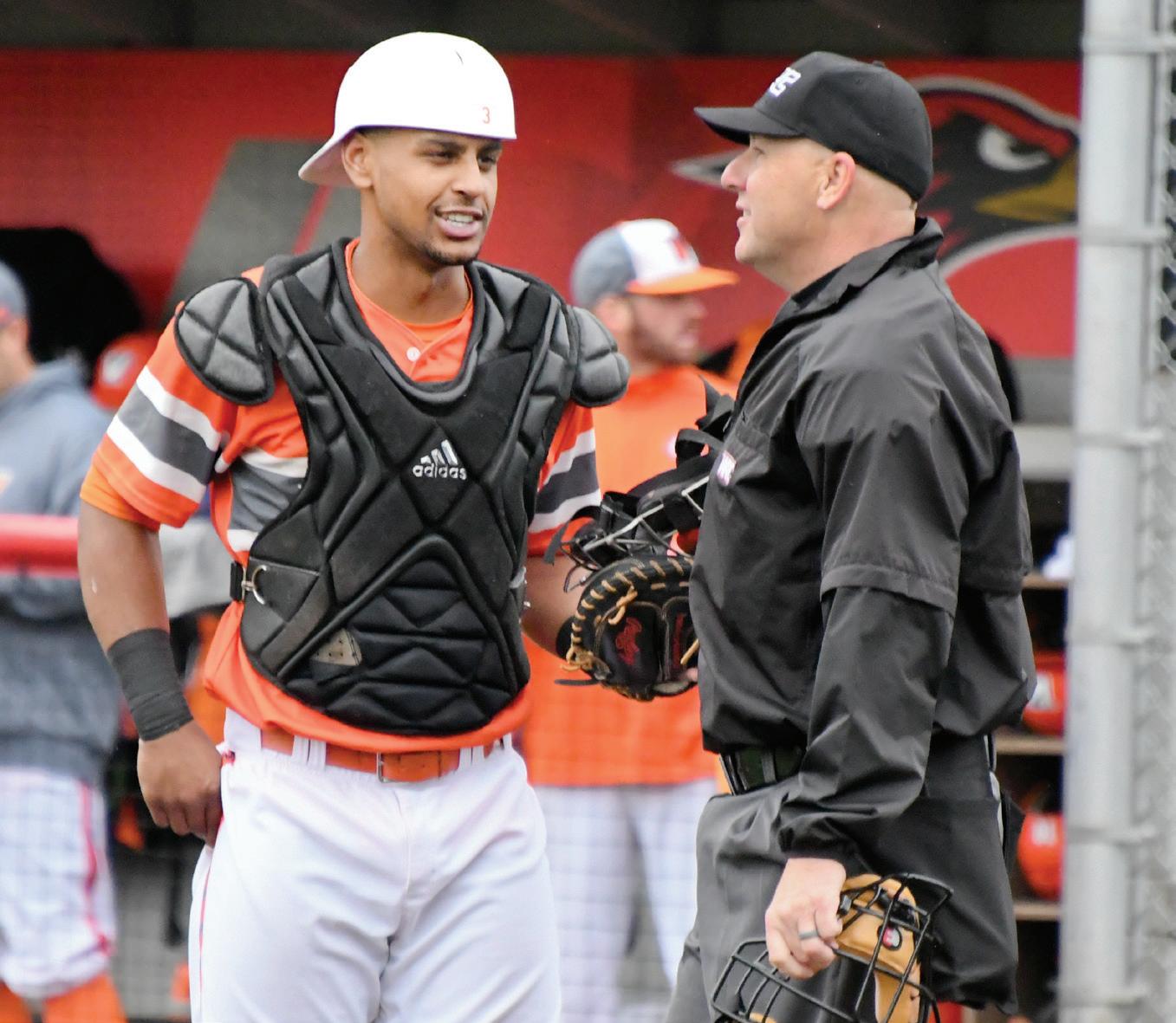
captain’s comments should receive more consideration than those of other players, the approach must still be non-combative and reasonably polite.
Communications experts will tell you there is a difference between hearing and listening. Hearing is
physiological; we can’t prevent sound waves from entering our ears during a game. Listening, on the other hand, is a conscious choice. It requires our intent and attention. That is something good officials choose to engage in at the right times.
Goal to Go: Move Up the Ranks
By the Referee editors
Several factors go into making assignments. Whether you want to admit it or not, age and physical condition can be elements in determining if it’s best to enjoy officiating at your current level or if you should make a move to a higher level.
Younger officials generally have more flexibility as far as possibility to advance and some have the potential, or “it” factor, many coordinators and assigners seek. But moving up too quickly also can be detrimental to a younger official who simply is not ready or hasn’t been in enough tough officiating situations to handle the pressures of the next level.
Age also can be a factor for men and women who begin officiating closer to middle age than teenage. There is often a greater sense of urgency for older individuals to move up the ladder quickly, mainly because the clock is ticking. That, however, may not always be the wisest decision to make. Everyone is different, mentally and physically.
ALL SPORTS 82 | REFEREE June 2024
DALE GARVEY
It may be Alex Ortiz, Los Angeles, is issuing a warning of some kind. Or it could be he and the catcher need to have a quiet conversation. If a player asks a question in a sportsmanlike manner, it should be answered. Good communication between officials and players aids in game control.
Your weight can have an impact on how you are perceived as well. Carrying many extra pounds can bring doubts into the minds of others. Your officiating prowess may not be affected by your size, but if you can’t cover the court on a fast break or get down the field to cover a play just once, your size could become an immediate issue. Why give critics ammunition with which to shoot you down?
If you are truly ready to move ahead a level or two based on honest feedback and assessments, great. If not, it’s better to take your time to focus more on development. Don’t give up on your goals, unless it becomes clear they need to be re-adjusted.
In order to realize individual goals, officials must continue to improve their officiating skills. It never hurts to enjoy a little good fortune along the way — if it materializes. However, from a
practical standpoint, the key to meeting personal goals associated with any challenging profession or activity is sticking to a flexible game plan in which hard work toward an achievable series of goals is the basis for improvement. Officiating is unquestionably no different.
Make no mistake, officiating has its share of challenges, both on and off the court or field. To maximize productivity, officials must tackle those challenges head on. A related and extremely important point is a realistic approach is necessary when assessing one’s abilities and setting goals. Regardless of the magnitude of the goal, an official should give 100% effort and welcome constructive criticism from any reliable source. Although the critiques might seem at times trivial, an official should not regard any constructive assessment as something that does not matter. After all, such assessments are fully
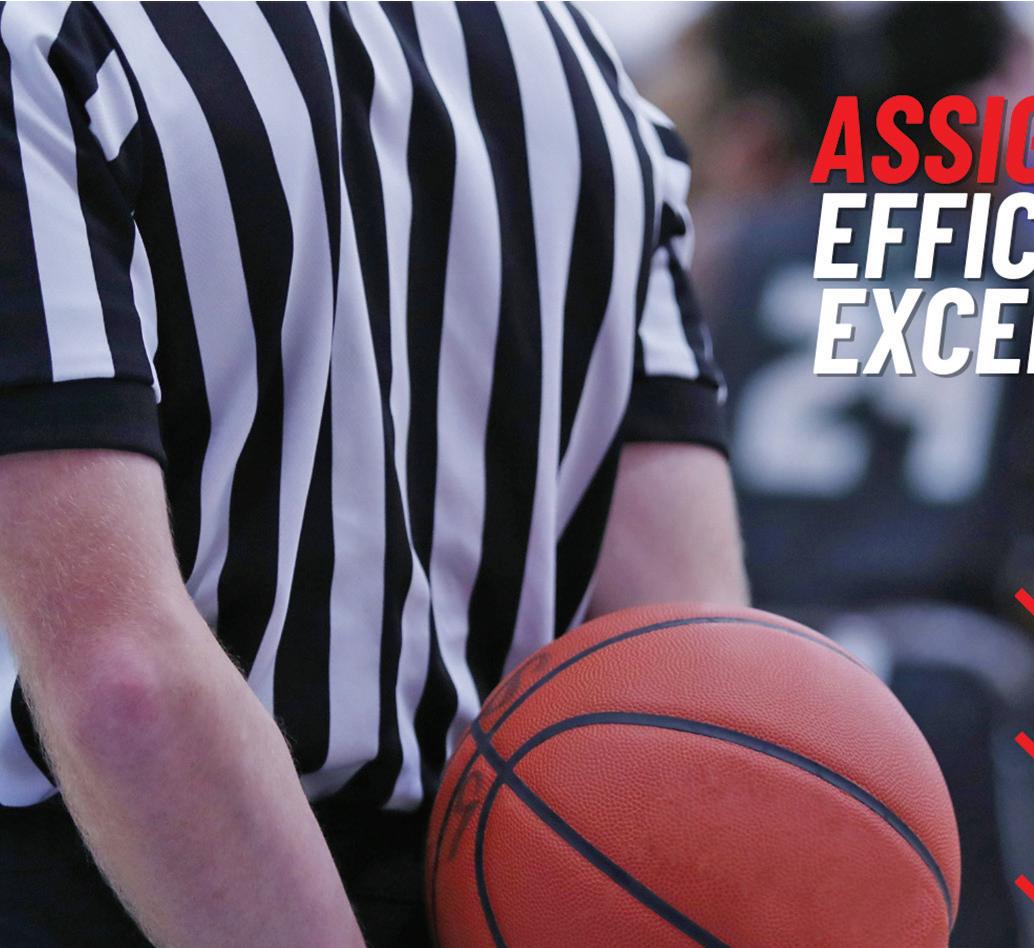
intended to assist an official in getting better.
Officiating basics emphasize improving skills is necessary to overcome the challenges of officiating. That should not be a revelation to anyone. What may come as a shock to some, however, is realizing goals does not entirely depend on improving one’s skills. Assigners value those officials who are not only proficient but also highly reliable. Those officials demonstrate a deep understanding of the game and respect for players and coaches, and display a professional appearance and demeanor, while conducting themselves with class.
Therefore, if an official is truly set on achieving goals, he or she must be prepared to address any aspect — big or small — that can positively affect his or her officiating ability and stature.


REFEREE June 2024 | 83
FOR THE RECORD
POSTSEASON ASSIGNMENTS
HIGH SCHOOL
•These officials were assigned by the Minnesota State High School League to work 2023 fall sports championships: Football — Paul Schiffler, Albany; Jeremy Anderson, Bruce Belseth, David Drexler, Alexandria; Marc Angell, Troy Halter, Andover; Brian Smith, Mark Smith, Apple Valley; Aaron Donais, Babbitt; Jordan Chuinard, Barnesville; Zack Johnson, Bloomington; Don Adderley, Brooklyn Park; Ryan Townzen, Burnsville; Seth Hoscheit, Jeremy Zacher, Byron; Corey Lorenzen, Josh Weise, Cannon Falls; Ryan Tharaldson, Carver; Fred Harris, Jim Larson, Joe Oliver, Chaska; Corey Dornack, Chatfield; Mark Ricker, Clear Lake; Jordan Balow, Darren Sheldon, Cloquet; Jesse Johnson, Cold Spring; Brian Robideau, Coon Rapids; Brian Dow, Cornell; Daniel Biehl, Cottage Grove; Steve Beckman, Crosby; Mark Sisson, Danbury; Blaine Turnbull, Delano; Jackie Gray, Brad Sylliaasen, Ryan Weiser, Dilworth; Tim Holmstrom, Dane Lew, Pat Milinovich, Paul Raj, Duluth; Erik Christensen, Dundas; Steve Heimer, Michael Kallas, Lucas Karnas, Nick Litfin, Eden Prairie; Adam Berg, Dennis Harris, Tom Wollan, Edina; Zach Gustafson, Elk River; Dan Rootes, Elko New Market; Paul McDonald, Mike Pope, Ely; Steven Knutson, Tom O’Neill, Gregg Perich, Esko; Lee Baarts, Cory Hainy, Justin Schmidt, Christopher Voss, Jordan Voss, Fairmont; Scott Frederickson, Todd Graf, Fargo; Jason Berg, Patrick
Carey, Peter Eide, Justin Jarocki, Gary Sonnenburg, Farmington; Taylor Fuhs, Ryan Johnson, Mike Riewer, Fergus Falls; Patrick Bergquist, Gilbert; Bill Mills, Linda Mills, Neil Nelson, Glenwood; Matt Dalle, Golden Valley; Anthony Holthusen, Grygla; Brady Stevens, Hayfield; Mike Hepola, Matt Reinbold, Henning; Zach Freeman, James Karnas, Hermantown; Eric Hanson, Holdingford; Adam Churchill, Hudson; Don Anderson, Steve Blake, Jeremy Fleck, Bernie Miner, Jeff Pasco, Hutchinson; Benjamin Schreiber, Independence; Michael Heifort, Tom Wollan, Inver Grove Heights; Lonnie Marcyes, Jordan; Ian Stauffer, Kasson; Marco Fioravanti, Lake Elmo; Mason Swegarden, Lake Park; Alex Hein, Eric Kruger, Lakefield; Dylan Bothun, Troy Grengs, Matthew Reinisch, Lakeville; Michael Munger, Long Lake; Troy Nelson, Lowry; Scott Haefner, Mankato; Travis Epema, Brett Reem, Joe Wollan, Maple Grove; Casey Pack, Maple Lake; Scott Monson, Marshall; Bronson Scheff, Mayer; Phil Ayeni, John Madsen, Aaron Nordling, John Ondrey, Chris Rossini, Jake Seifert, Chris Tengwall, Minneapolis; Jim Schrank, Minnetrista; Jason Frank, Mondovi; Scott Hill, Monticello; Andrew Dumas, Scott Nielsen, Moorhead; Bryce Jergenson, Robert Jergenson, Morris; Timothy Prahl, Morton; Philip Worm, New Market; Joshua Woldt, North Mankato; Jason Buchta, Brent Dack, Northfield; John Hardgrove, Oakdale; Matt Bloxham, Jeff Newton, Oronoco; Mike Lloyd, Osakis; Scott Schulz, Otsego; Jordan Stolp, Owatonna; Doug Bruggeman, Brian Guler, Eric Guler, John Gullingsgrud, Eric

Muckenhirn, Derrick Nelson, Pelican Rapids; Jeff Mosca, Kaleb Thalmann, Perham; Jim Fall, Benjamin Moen, Eric Okstad, MJ Wagenson, Pine Island; Tristan Severson, Plainview; Kurt Dingmann, Plymouth; Kelly Banyai, Mark Pexa, Pat Spielman, Prior Lake; Mitchell Lonnee, Ramsey; David Madson, Jeffrey Manthei, Redwood Falls; Mike Karnas, Josh Klem, Richfield; Timothy Benz, Zach Fuller, Justin Mathre, Matt Sogla, Joel Traver, Rochester; Kevin Britt, Dan Grider, Luke Teske, Rosemount; Nick Edwards, Roseville; Clint Hoberg, Thomas Hoye, Tremayne Jones, Ryan Luessenheide, Patrick Molan, Dan Pelletier, Tyler Vrieze, Saint Paul; Adam Heathcote, Mat Steinberg, Sartell; Craig Braun, Michael Bukowski, Dick Henkemeyer, Michael Sowada, Sauk Rapids; William Bean, Nick Worm, Savage; Blair Folkens, Terry Helget, Sleepy Eye; Nathan McNaughton, Somerset; James Ondrey, St. Anthony; Jared Butson, St. Charles; Pete Cheeley, Chad McGraw, Jacob Stang, Tom Swenson, St. Cloud; Mike Tanaka, St. Louis Park; Richard DeBlois, Brian Donahue, St. Peter; Jeffrey Hobbs, Stewartville; Jay Lemke, Christopher Rick, Joe Schmeltzer, Stillwater; Ray Kosey, Superior; Nathan Haase, Jason Rantanen, Carter Rogalla, John Syvertson, Thief River Falls; Rob Nudell, Twin Valley; Rick DeGardner, Vadnais Heights; Davis Lamppa, Kyle Lamppa, Virginia; Tim Litfin, Brody Scheff, Waconia; David Neilitz, Pat Ridpath, Waite Park; Clayton Dilly, Jess Gross, West Fargo; Mike Monita, West Saint Paul; Joe Ganske, White Bear Lake; Dave Darr, David Lundquist, Tim McGowan, Woodbury.
Soccer — Dan Lehtola, Alexandria; Emily Anderson, Altura; Lee Morgan, Annandale; Soner Dogan, Austin; Daniel Kramer, Bemidji; Andy Ball, Big Lake; Zakaria Aly, Jim Hirsch, Zack Johnson, Bloomington; Steve Korte, Scot Mattison, Burnsville; Angelo Tartaglia, William Taylor, Byron; Almin Ramic, Centerville; Brian Watkins, Kimberly Watkins, Charles City; Josh Gerber,
Chaska; Brianna Pensini, Circle Pines; Paul Risdall, Delano; Sean Bedard-Parker, Ouitdee Carson, Giacomo Fabbro, Hagi Ozdemir, Duluth; Josh Edelstein, Eagan; Juan Lara, Jack Winkelmann, Eden Prairie; Clifford Anderson, Douglas Rose, Edina; Connor Dunn, Fargo; Joey Schleis, Faribault; Tye Biasco, Forest Lake; Ryan Block, Grand Forks; James Bennett, Jeremy Uecker, Tyler Walters, Hermantown; Bradley Charchenko, Benjamin Zwart, Lakeville; Kip Jackson, Lilydale; Matthew Graeve, Little Falls; Fatih Bektas, Jorge Lozano, Forrest Sullens, Chris Yarger, Mankato; Matthew Edgar, Maple Grove; Dennis Rickert, Maplewood; Dennis Hoffbeck, Marine on St. Croix; Alan Harkrader, Mendota Heights; Chris Jessen, Mark Kelley, John Krill, Clinton LaBeau, Shauna Spencer, Minneapolis; Michael Johnson, Brian Koehler, Dzevdo Oruc, Minnetonka; Justin Weber, Moorhead; Victor de Meireles, Mounds View; Timothy Donohoo, New Hope; In-Jae Kim, North Mankato; Toua Vang, North Saint Paul; Yifu Chen, Jeff Greene, Shawn Nelson, Plymouth; William Foot, Red Wing; John Easterwood, Hugo Matus Tadeo, Richfield; Jordan Broers, Jacqueline Carlson, Sean Claton, Steve Decker, Joe Doppler, Robert Driesch, Mamoun Elnagar, Dan Freudenburg, Jan Hanson, Wayne Lemens, Ward Nelson, Timothy Rowe, Michael Rysavy, Andre Tost, Rochester; Kory Klouse, Rose Creek; Josh Hartwell, David Oleyar, Rosemount; Rachelle Timm, Roseville; Mark Borowiak, Saint Michael; Nick Barkley, Sharmaarke Jama, Conor Tobin, Daniel Townsend, Benjamin Yang, Saint Paul; Joseph Mareck, Joe Perske, Sartell; Ted Cahill, Mickey Greene, Subel Sunbeeb, Savage; Josh Forsythe, Mohamed Ziedan, Shakopee; Jason Geer, Arkadzi Talkachou, Iryna Talkachova, Shoreview; Todd Sauers, Somerset; Samantha Tinucci, South Saint Paul; Ronald Keller, Abdela Muhumed, Kevin Pfeil, Jonathan Rydberg, Adalberto Villalobos, St. Cloud; Kyle Brandt, Vadnais Heights; Jorge
84 | REFEREE June 2024
AWARDS, ROSTERS, NOTABLES
Designate NASO as a beneficiary of your retirement plan or life insurance policy. LEARN MORE AT NASO.ORG/LEGACY OR CALL 800-733-6100
Oconitrillo, Victoria; Rory Merlino, Waconia; Lamont Lommel, Waite Park; Tim Perrizo, Waseca; Matthew Von Pinnon, West Fargo; Ken Lamb, West Saint Paul; Kevin Fink, Willmar; Erin Gervais, Winona.
Adapted soccer — Dave Malley, Michelle Schneider, Tom Stephan, Brooklyn Park; Jacki Wincek, Crystal; Deb Hiestand, Maple Grove; Tony Ruiz, Mendota Heights; Jim Herder, Robbinsdale; Craig Pearson, Victoria; David Zappetillo, White Bear Lake.
•These officials were assigned by the Wisconsin Interscholastic Athletic Association to work 2023 fall sports championships: Football — Robert Nolden, Belleville; Gregory Blackdeer, Eric Drangstveit, Steven Peterson, Freddie Rios, Black River Falls; Brian Kraus, Brillion; Tony Huizenga, David Prochnow, Cambria; Bruce
ROSTERS
Schaefer, Chilton; Nathan Berg, DeForest; Michael Beck, Brian Timm, Fond du Lac; Michael Arendt, Franklin; Derrick Smit, Friesland; Corey Manlick, Todd Rusniak, Hartford; Jamie Hassemer, Kyle Jahnke, Cole McDonald, Cade Murray, La Crosse; Todd Jahns, Lake Mills; Scott Spencer, Lake Tomahawk; Kent Holmquist, Madison; Brian Schaefer, Menasha; Dennis Gerrits, Milwaukee; Preston Hemerley, New Lisbon; Justin Gilmore, Oregon; Matt Wade, Pardeeville; Michael Laggis, Steve Vandervest, Joe Waksmonski, Rhinelander; Jeffrey Erickson, Saukville; Jeff Welk, Three Lakes; David Steiger, Tucson; Jon Burmania, Waunakee; Matt Syens, Waupun; John Hemauer, Tim Kemnitz, West Bend; Anthony Schultz, West Salem.
Boys’ soccer — Ben Nommensen, Mark Williams, Appleton; Jim Richie, Larry Ruetz, Cumberland; Jeff Jende, De Pere; Parker
LeMire, Eau Claire; Eric Stuart, Elkhart Lake; Mike Menehan, Elkhorn; Tom Rosenow, Fox Lake; Justin Oshefsky, Freedom; Haley Venne, Germantown; Rod Ottens, Phillip Williams, Green Bay; Nick Raith, Jackson; Corey Beecher, Zachary Hallett, Janesville; Steve Van Deurzen, Kaukauna; Kevin Buch, Manitowoc; Seth Stankowski, Marshfield; Dave Grable, David Irwin, Oshkosh; Armand Bennage, Pleasant Prairie; John Cejka, Plymouth; Daniel Hasko, Anthony Wilkey, Racine; Luke Altman, Sheboygan; Tony Voulgaris, Van Dyne; Jason Bettin, Jonathan Schrantz, Waukesha; Gregg Zonnefeld, Waupun; Steve Laack, Patrick Murphy, Wausau; Aaron Penazek, West Allis; Tom Blau, Jordan Dietrich, Mark Herdeman, West Bend.
Volleyball — Jed Block, Jeff Sears, Appleton; Cindi Baumeister, Elkhorn; Christine Brown, Elroy; Adam Swanepoel, Glenwood City; Nic Been, Hammond;
Terri Zeh, Hartland; Michael Kirschbaum, Holmen; Mickey Reynolds, Madison; Paul Dean, Jeff Scott, Marshfield; Dave Vaara, Medford; Dianne Pacolt, Menasha; Jason Rieck, Mequon; Teague Prichard, Middleton; Patrick Mott, Kevin Voge, Milwaukee; Jody Witty, New Berlin; Rita Tracy, Reedsburg; Todd McEldowney, Rhinelander; Larry Schoenick, Waukesha; Randy Dahmen, Waunakee; Eileen Alt, Brian Marx, West Allis; Brian Babiash, West Salem; Harry Babcock, Wisconsin Rapids. Girls’ swimming and diving — Susan Wagner, Delafield; Patricia Baus, Fond du Lac; John Kitslaar, Madison; Thomas Miller, Menomonie; Judy Linsley, Whitefish Bay. Cross country — Tom Emmerich, Hartland; Joe Rapacz, Iron River; Dave Nickels, Manitowoc; Steve Berg, West Salem.
Do you have any rosters, assignments or awards that warrant mention? Send info to us at ForTheRecord@referee.com
REFEREE June 2024 | 85 MLB
first
50 Paul Emmel 49 Andy Fletcher 76 Mike Muchlinski 52 Jansen Visconti 2 Dan Bellino 10 Phil Cuzzi 11 Tony Randazzo 66 Alex Tosi 26 Bill Miller 88 Doug Eddings 62 Chad Whitson 44 Malachi Moore 64 Alan Porter 28 Jim Wolf 36 Ryan Blakney 29 Sean Barber 13 Todd Tichenor 89 Cory Blaser 79 Manny Gonzalez 33 Nestor Ceja 80 Adrian Johnson 81 Quinn Wolcott 18 Ramon De Jesus 25 Junior Valentine 72 Alfonso Márquez 16 Lance Barrett 90 Mark Ripperger 40 Roberto Ortiz 63 Laz Diaz 73 Tripp Gibson 83 Mike Estabrook 12 Erich Bacchus 51 Marvin Hudson 21 Hunter Wendelstedt 74 John Tumpane 48 Nick Mahrley 14 Mark Wegner 1 Bruce Dreckman 35 Jeremie Rehak 15 Clint Vondrak 46 Ron Kulpa 4 Chad Fairchild 37 Carlos Torres 20 Ryan Wills 24 Jerry Layne 19 Vic Carapazza 78 Adam Hamari 32 Edwin Moscoso 27 Larry Vanover 86 David Rackley 96 Chris Segal TBD 98 Chris Conroy 7 Brian O’Nora 31 Pat Hoberg 55 Brennan Miller 58 Dan Iassogna 54 CB Bucknor 97 Ben May 38 Adam Beck 6 Mark Carlson 71 Jordan Baker 85 Stuart Scheurwater TBD 23 Lance Barksdale 5 Angel Hernandez 93 Will Little 59 Nic Lentz 92 James Hoye 8 Rob Drake 17 D.J. Reyburn 84 John Libka 68 Chris Guccione 91 Brian Knight 47 Gabe Morales 67 Ryan Additon Unassigned 87 Scott Barry 43 Shane Livensparger
Crews The 2024 MLB umpiring crews. The
name listed on each crew is the crew chief.
LAW ISSUES AFFECTING OFFICIALS
Bling Ban Breakdown
By Alan Goldberger
In the days of yore, professional sports were populated by bejeweled athletes whose dress at game time often approached the bedazzling stage — often thought to reflect success and confidence to opponents and fans alike. By contrast, down on the dusty high school field, though, not so much. Jewelry was associated with an increased risk of injury.
Shortly after the dawn of the third millennium, most professional sports, noting the costs of high-priced athletes sidelined by debilitating injuries, have resorted to banning or limiting the wearing of jewelry during games.
On the amateur levels, fast forward a couple of decades to, say, 2021. That’s June 2, 2021 — when the
Have recent rules changes allowing players greater flexibility to outfit themselves created new issues?
NFHS announced it had been asked “more than ever before” to consider how rules regarding jewelry, headwear and other adornments affect a studentathlete’s cultural background or religious beliefs; and how personal items worn by players “might impact a young person’s identity.”
Religious items have long been on the short list of exceptions to personal adornments permitted to be worn by athletes. As to headwear and hairstyles, the latter is now covered by a number of state laws known as the Crown Act; as well as rules relaxing restrictions on hair-control devices and beads to permit fastening the items close to the head so as not to present a safety hazard. The former, headwear, is commonly associated with religious requirements to cover the head.
What’s left in the way of personal adornments? Jewelry. While characterized by the NFHS as “not necessary to play a given sport,” jewelry takes its place as yet another adornment the NFHS
rules committees have evaluated for “impact on a young person’s identity.” Jewelry is dealt with in some detail, sport to sport, as to what, if any, is permitted and under what circumstances (see siderail item). In many cases, rules are relaxed and restrictions eliminated — to a point.
For officials, jewelry worn by players as part of their personal game ensembles can present thorny questions.
Officials, by rule (so to speak), are under a contractual obligation. They are not free to choose which rules they enforce. In practice, many officials think otherwise, with the result that complaints from coaches and players frequently center on officiating consistency. Are officials across all sports so terrified of the fallout from enforcing certain rules they would rather look the other way? Have recent rules changes allowing players greater flexibility to outfit themselves created new issues? What about the states where new laws give players the right to alter their uniforms to comport with their cultural or other preferences?
Officials may find a legal obligation looming. Take for example NFHS basketball rule 3-7: “The referee shall not permit any team member to participate if in the referee’s judgment any item constitutes a safety concern.”
All in all, despite relaxed rules restrictions on personal items and preferences, there is little doubt as to who gets to decide if there is a safety concern.
Will complaints against officials who enforce rules regarding player safety abate with the influx of new rules? Do such rules lead officials to conclude they should not “sweat the small stuff” and never raise an issue about illegal equipment, or other minutia of the playing rules? Officials so inclined need to step back and think. The wise official will not short circuit rules impacting player safety. Ever.
Alan Goldberger is an official and attorney from Fairfield, N.J. This column is for informational purposes only and is not legal advice.
Jewelry Rules by Sport
Here’s a breakdown of NFHS jewelryrelated rules in certain sports:
•Basketball – Religious: Taped and worn under the uniform; Medical: Taped
•Field Hockey – Religious: Taped and worn under the uniform; Medical: Taped
•Football – Religious: Taped and worn under the uniform; Medical: Taped
•Gymnastics – Religious: Taped and worn under the uniform; Medical: Taped
•Boys Lacrosse – Religious: Taped and worn under the uniform; Medical: Taped
•Girls Lacrosse – Medical: Taped
•Soccer – Religious: Taped and worn under the uniform; Medical: Taped
The rules permit jewelry (provided it does not present a safety hazard) in:
•Baseball
•Cross Country
•Softball
•Swimming and Diving
•Track & Field Note: Check your current rulebook for further details.
SOURCE: ALAN GOLDBERGER
Horse of Another Color
In terms of high school rules addressing jewelry, adornments and grooming, the sport of water polo appears to be swimming in a different direction.
Let’s wade into NFHS rule 2-4-4:
“Before taking part in a game, the players shall remove any articles likely to cause injury, including, but not limited to, the following: jewelry, medical or religious medals, watches and swim goggles. Hair-control devices and other adornments in the hair that are securely fastened and do not present an increased risk to the player, teammates or opponents are permitted. Sharp fingernails and toenails shall be trimmed. The referee may direct the player to remove items deemed to likely cause injury, including the trimming of nails. NOTE: The list above is not all-inclusive as each article shall be reviewed and judged by the referee. Devices worn shall not compromise the fit of the water polo cap, including ear guards.”
SOURCE: ALAN GOLDBERGER
Go to www.naso.org and click on member benefits for more on MICP.
86 | REFEREE June 2024
PRESENTED BY
CLASSIFIEDS
CAMPS/CLINICS/ SCHOOLS
ATTENTION ASSOCIATION LEADERS! Are you holding a camp or a clinic? Do you know of a camp or a clinic coming up? Referee can help get the word out! Call our sales department at 262-6328855 for more information.
LEADERSHIP RESOURCES
Association Advantage Membership to Association Advantage provides officials, associations and their leaders the tools to conduct wellrun meetings, education resources for officiating training and access to years of association management articles. Member associations
also receive 12 issues of Referee magazine, monthly Advisor newsletters, Click e-newsletters, massive discounts on training materials and optional insurance coverage exclusive to membership. For additional membership information, contact Ken Koester at 262-632-5448 or visit the Association Advantage website at nasoadvantage.com.
EQUIPMENT/APPAREL
Purchase Officials
Supplies — Everything for Life Inside the Lines. Call 800-767-2233 or visit our website purchaseofficials. com for the best products and prices in the market.
Ump-Attire.com — The #1 website for officials’ sporting goods. Now serving
QUIZ ANSWERS
BASKETBALL
1 — All – d (NFHS 3-5-3; NCAAM 1-24.4; NCAAW 1-23.6)
2 — All – c (NFHS 10-4-6d; NCAAM 10-4.1.a; NCAAW 10-12.4.a.3)
3 — All – b (NFHS 9-1-3b Pen. 1; NCAAM/W 9-1.1.b Pen. a)
4 — NFHS – d (10-6-2, 10-6-3, 10-6-4); NCAAM – c (10-3.1.h, 10-3 Pen., A.R. 288); NCAAW – b (10-12.5.e)
5 — NFHS – b (3-3-4); NCAAM/W – c (NCAAM 3-6.1.j; NCAAW 3-6.1.j.1)
BASEBALL
1 — NFHS – c (3-1); NCAA, pro – b (NCAA 9-4f; pro 5.10i)
2 — NFHS – d (3-4-3); NCAA – e (9-4d); pro – b (5.10l)
3 — All – c (NFHS 8-3-2; NCAA 8-3e; pro 6.01h-1)
4 — NFHS – a (3-4-1, 3-4-2); NCAA, pro – b (NCAA 6-5f; pro 5.10m1)
5 — NFHS – b (3-4-1 Pen.);
NCAA, pro – c (NCAA 6-5f; pro 5.10L)
FOOTBALL
1 — Both – b (NFHS 3-2-2; NCAA 3-1-1e)
2 — NFHS – a (4-2-2a); NCAA –b, d (4-1-3o, 8-5-1a)
3 — Both – c (NFHS 6-5-6b, 7-510b; NCAA 6-4-1, 7-3-9f)
4 — Both – b, c (NFHS 6-2-4; NCAA 6-3-4a)
SOCCER
1 — NFHS, NCAA – c (NFHS 15-1-5; NCAA 15.2a); IFAB – a (15.1)
2 — All – b (NFHS 3-3-8; NCAA 3.1a; IFAB 3.1)
3 — All – b (NFHS 12-9-2d1; NCAA 12.7.4.7.2; IFAB 12.3)
4 — All – a (NFHS 15-1-1; NCAA 15.1; IFAB 15.1)
5 — All – c (NFHS 12-3-1; NCAA 12.1.8; IFAB 12.1)
free returns to go along with more brands, product reviews, same-day shipping and world-class service.
Smitty Outlet Store
Visit the NEW Smitty Outlet Store featuring discontinued, factory seconds and individual slightly defective items at great prices. Go to smittyoutletstore.com to shop now!
TRAINING RESOURCES
Referee Training Center
— The largest library of officiating training materials in the world. Rules study, mechanics updates and materials on important topics can all be found in one location 24 hours a day, seven days a week, with sample chapters and video samples. Discover it all at store.referee.com.

JUNE
FLASHBACK

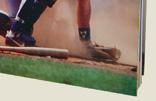
40 YEARS AGO … 1984
•Two American basketball referees, Darlene May and Hank Nichols, are selected to work the Los Angeles Olympics. May, well known as the women’s basketball coach at Cal Poly-Pomona in addition to her officiating career, was the first woman in history to call Olympic basketball. It was the second Olympics assignment for Nichols, who also worked the Summer Games in 1976 in Montreal. A decorated NCAA official, Nichols was elected to the Naismith Basketball Hall of Fame in 2012.

SOFTBALL
1 — All – a (NFHS 8-4-3g Pen.; NCAA 12.12.3.5; USA Softball 8-5I-3 Eff.; USSSA 8-14C-1)
2 — All – b, c, e (NFHS 2-19-1b, 8-8-4, 8-8-5; NCAA 12.3.7; USA Softball 1-Fair Ball, 8-8D, 8-8E; USSSA 3-Fair Ball, 8-7E)
3 — All – c (NFHS 8-5-6 Pen.; NCAA 9.6.1.3 Eff.; USA Softball 8-6F Eff. 2; USSSA 8-16G Eff.)
4 — All – c (NFHS 7-4-4; NCAA 11.20.2; USA Softball 7-6S; USSSA 7-12)
VOLLEYBALL
1 — All – d (NFHS 9-5-1-b; NCAA 14.5.1; USAV 13.1.3)
2 —All – e (NFHS 9-9-1; NCAA 6.3.2; USAV 16.1, 16.2)
3 — All – a (NFHS 5-5-3b-7; NCAA 19.3.7.1.6; USAV 24.3.2.4)
4 — All – b (NFHS 5-4-3c, 5-53b; NCAA 19.2.4, 19.3.7; USAV 23.3.2.3, 24.3.2)

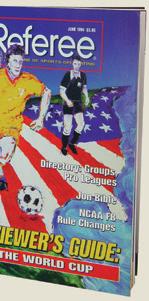
30 YEARS AGO … 1994
•Former MLB umpire Jim Honochick, 76, dies of a heart attack. An AL umpire from 1949-73, Honochick worked six World Series (1952, 1955, 1960, 1962, 1968 and 1972) and five All-Star Games (1951, 1954, 1960 games 1 and 2, and 1966).
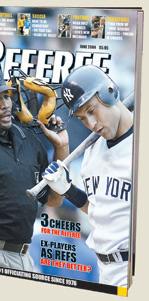
20 YEARS AGO … 2004
•ACC basketball referee Larry Rose is suspended for making a correct call. During the ACC Men's Basketball Tournament semifinal between Maryland and N.C. State, Rose called a technical foul on N.C. State because a team manager was on the floor wiping up moisture during the course of play. Fred Barakat, coordinator of ACC basketball officials, admitted the call was correct, but still said it was “horrible” due to “the stage we’re on, with ESPN and so on.”
MISSION
Referee is a magazine written from an officiating perspective, blending editorial credibility and business viability. It educates, challenges and inspires officials at the youth, recreational, high school, collegiate and professional levels in all sports, with an emphasis on baseball, basketball, football, soccer, softball and volleyball. Referee is the journal of record for officiating and takes informed positions on selected issues. The magazine provides a forum for its readers, facilitates the flow of information, raises public consciousness about officials’ roles and serves as a catalyst for improved officiating worldwide.


10 YEARS AGO …
2014
•NFL owners vote to pass a rule allowing referees to consult with leaders in the New York-based officiating department during replay reviews. The change aimed to improve the accuracy of officiating and speed up the review process.
REFEREE June 2024 | 87
LAST CALL
Parental Discretion Advised
“Three seconds! Three seconds!” the man 10 feet to my right screamed at the high school basketball officials, stomping his foot. “C’mon, how can you miss that?”
He hadn’t been so vehement in the opening moments of the game. He started by cheering enthusiastically for his daughter’s team, the visitors. Before long, though, he transitioned into a running commentary on the officiating. At first, his voice was matter-of-fact. “Travel,” he said calmly when a home team player caught a pass and drove to the bucket. “Foul,” he said as a visiting player missed a layup in traffic.

“That’s a foul! You’re horrible!” he said, when he thought his daughter got bumped on a jump shot.
However, as the competition heated up, so did his complaints.
“That’s a foul! You’re horrible!” he said when he thought his daughter got bumped on a jump shot. Later, after his daughter’s teammate was called for a rebounding foul, he yelled, “That was nothing! Let them play!”
On it went. Hardly a possession went by without this guy brashly offering his opinion on what should and should not be called. Sometimes
he added derisive laughter or sarcasm, often accompanied by theatrical body language — throwing his hands up, shaking his head, putting his face in his hands and so on.
He was making it hard for me to do my job. I report on high school basketball for a local website, and I was trying to take notes and keep track of stats. His increasingly rude abuse of the officials distracted me.
I’m also a high school baseball umpire. If the referees were not exactly my brothers, they were at least my cousins, and I hated to hear them criticized so relentlessly, especially since I thought they were doing an excellent job.
I resisted the urge to turn to the fan and say, “You really should get your official’s license. You’re so good at making calls up here. Imagine how great you’d be down there on the floor!”
My indignation was tempered by my genuine concern for him. His daughter was a freshman, and I couldn’t help but think how much anxiety he could avoid, and how much enjoyment he could gain, if he would learn to relax and just cheer for his daughter and her teammates for the next three-plus years. Having raised four athletic sons, I could tell him how fast those precious years would pass by.
His daughter had an excellent game and her team won, yet I suspected the father left the gym haunted by what he thought was the injustice of horrible officiating, his enjoyment of the game diminished by his inability to see events objectively.
As he walked away, I wanted to take him aside and tell him how much I enjoyed watching his daughter play — she’s a terrific player — and then add my bit of advice. But I had coaches to interview. Besides, you never know how a stranger will react to unsolicited advice.
I also wanted to tell him that no official gets every call right, that the crew we had just watched did a darn
good job and that over the course of a full season — and certainly over his daughter’s high school career — missed calls for and against her team would even out. Of course, it’s rare fans who recognize the missed calls that go in their team’s favor.
Chalk that up to human nature. It’s a well-documented psychological finding that our perceptions are significantly influenced — distorted, you might say — by our expectations and desires. Grandpa desperately wants his grandson to be safe on that whacker at first base, so in his mind he looks safe. He can’t believe it when the umpire calls him out.
As a sports reporter, I rarely have any emotional attachment to the teams I cover, so I feel I can be objective in my judgment of the officials’ work.
Also, my work as an official has changed the way I watch sports. I spend almost as much time watching the officials as I do the players. I notice their hustle, their mechanics, how they communicate their calls. I see how they interact with players and coaches. And you know what? I am constantly impressed by how impartial and professional the vast majority of officials are and how they use preventive measures to calm down agitated coaches. They listen to them when appropriate, give clear explanations of calls and sometimes even share a laugh with them. Unfortunately, it’s not possible to pacify fans that way.
I didn’t talk to that disrespectful fan, and it’s unlikely that he’ll see my advice to relax, leave the officiating to the officials and enjoy watching his daughter play. But maybe some other parents like him will read this and reconsider their attitudes and actions at their children’s athletic contests. Randy Hisner is an Indiana High School Athletic Association (and former CBUA) baseball umpire who also reports on high school sports for WZBD.com in Decatur, Ind. He is a high school cross country coach and retired English teacher.
Do you have a personal officiating story to tell?
Send your story or queries to lastcall@referee.com
A PERSONAL STORY BY XXX 88 | REFEREE June 2024 SHUTTERSTOCK A PERSONAL STORY BY RANDY HISNER














IT’S OFFICIAL






Ernie Yarbrough to Receive Mel Narol Medallion
Few individuals have had such a sustained impact on the officiating industry as Georgia High School Association (GHSA) Assistant Executive Director and Coordinator of Officiating Ernie Yarbrough.
Yarbrough is set to receive the Mel Narol Medallion July 30 during the Celebrate Officiating Gala, sponsored by Fox 40 International, which concludes the 2024 Sports Officiating Summit.
The Medallion award is named for longtime legal advocate and NASO leader Mel Narol, and recognizes someone who has made significant contributions to the betterment of NASO. Narol received the award posthumously in 2003 when the award was renamed in his honor, and Yarbrough is the 22nd recipient being honored for his organizational leadership, training and promotion of officiating.
“Ernie Yarbrough has impacted tens of thousands of officials for more than four decades,” NASO President Bill Topp said. “He is a consistent presence for new and veteran officials and has earned the respect of local, state and national leaders.”
For more than 50 years, Yarbrough has been involved



in fastpitch softball as a player, coach and administrator.
He also spent more than a decade working in player development for three different NFL franchises, served as the Director of Officiating from 1996-99 for the American Basketball League, and has served in officials’ observation for the Atlantic Coast Conference, the Southern
Conference and the Big South Conference.
Yarbrough is no stranger to prestigious awards recognizing his impact in sports officiating and administration. In 1995, he was named the Naismith High School Basketball Official of the Year in Georgia and in 2023 he received an NFHS Citation to honor his significant contributions to high school
NATIONAL ASSOCIATION OF SPORTS OFFICIALS
1
june 2024

IT’S OFFICIAL - june 2024





athletics and activities.


In 2011, Yarbrough led one of the most successful State Day events associated with the Sports Officiating Summit. This year, the Summit is returning to Atlanta and he is once again at the forefront of what is set to be a record-setting State Day effort.

“I am truly humbled to receive this prestigious award,” Yarbrough said. “The Lord blessed me with 30 years of running the court and another 20-plus trying to give back by creating options and growth for those who have come after me. To be part of this fraternity of former Mel Narol Medallion recipients who cared enough to contribute to officiating is an honor beyond what I could have ever imagined.”





Mel Narol Medallion Award Recipients

In chronological order, here are the previous Mel Narol Medallion recipients:
2001: Jerry Seeman
2003: Mel Narol (posthumously)
2004: Fox 40 International
2005: Dick Honig
2006: Marcy Weston
2007: Bill Kolbe
2008: Ed T. Rush
2009: Ronnie Carter
2010: David Dodge
2011: Alan Goldberger
2012: Marriott Corporation
2013: Gary Whelchel

2014: California Basketball Officials Association
2015: Patty Viverito
2016: Don Collins
2017: Drew Smith and American Specialty Insurance
2018: Bob Kanaby
2019: Mike Pereira
2020-21: Steve Shaw
2022: Jim Host
2023: NFLRA

Editor: Julie Sternberg
Sports Editor: Brent Killackey
Graphic Designer: Dustin Brown
Contributors: Don Collins, George Demetriou, Alan Goldberger, Joe Jarosz, Patrick Rosenow, Tim Sloan, Brad Star, Jeffrey Stern, Brad Tittrington, Scott Tittrington, Bill Topp
NASO BOARD OF DIRECTORS
Robert Smith, Waterloo, Iowa, Chair
Lisa Jones, Chandler, Ariz., Vice Chair
Bill Topp,Racine, Wis., President
Dana Pappas, Lebanon, Ind., Secretary
*Bill Carollo,Shorewood, Wis., Treasurer
*Ron Foxcroft, Hamilton, Ontario, Special Adviser
*Barry Mano, Racine, Wis., Special Adviser
Dean Blandino, Santa Monica, Calif.
Paul LaRosa, Hendersonville, N.C.
Pati Rolf, Pewaukee, Wis.
Sandra Serafini, Yachats, Ore.
Ron Torbert, Hanover, Md.
Mark Uyl, DeWitt, Mich.
Rob Wigod, Los Alamitos, Calif.
*Non-voting members
NASO MISSION STATEMENT
The mission of NASO is to:
• Serve members by providing benefits and services.
• Improve officiating performance through educational programs.
• Advocate opportunities for officials and engage in programs to recruit and retain officials.
• Create alliances with organizations that benefit from healthy officiating programs.
• Enhance the image of officials.
© 2024 NASO/Referee Enterprises, Inc. All rights reserved. It’s Official is published by the National Association of Sports Officials and Referee Enterprises, Inc.
Find NASO @ facebook.com/NASOofficiating
Hear From Industry Leaders at the Summit
Areprise of the 2011 Sports Officiating Summit location is set, and Georgia will certainly be on the minds of many, as the event heads back to Atlanta July 28-30. The 2024 program is set up to take the recruitment conversation one step further, to retention.
Recent Sports Officiating Summit themes have centered around filling up the proverbial pipeline in order to combat the crisis of shortages the industry is facing. This year’s theme — Sustain Officials, Retain Officials — will arm attendees with the weapons they need to fight the shortages by keeping the officials they already have.
The program features something for everyone. Whether you’re the
administrator of a governing, an association leader or an official at any level, it is an event you will not want to miss.
The sports officiating industry event of the year kicks off Sunday night, July 28, with the Grand Opening and social gathering. Attendees will hear from NASO Board Chair Robert Smith and NASO President Bill Topp as they set the tone for the event. Georgia High School Association Executive Director Robin Hines will also welcome attendees to Atlanta.
Monday morning will get off to a powerful start with a session titled “Love ’Em or Lose ’Em.” NFL referee Brad Allen will provide attendees with lessons he’s learned during his ascent to being a crew chief at the highest
2
NATIONAL ASSOCIATION



level. He will talk about how to effectively sustain the working official in order to retain our ranks.



All attendees will benefit from the opportunity to participate in July 29 workshops geared toward sustaining and retaining officials and the impact of different stakeholder groups on that goal.
State association leaders are invited to attend the “State High School Association Executive Forum,” which allows leaders the chance to share ideas and best practices related to topics such as registration, requirements for officials, state-tournament selections and budgeting with leaders from the NFHS.
On July 30, attendees will benefit from a never-beforeseen type of session all about onboarding. Adam James, a motivational keynote speaker, leadership trainer and men’s college basketball referee. will bring The Art of Mindful Engagement to life on stage to challenge attendees to contemplate why they started officiating and why they’ve stayed. He will inspire attendees to meaningfully engage new officials and help integrate them into our avocation.
“Officiating, like any industry, can stagnate if there aren’t new ideas circulating and a willingness from those immersed in it, to disrupt it,” James said. “I’m excited to be part of NASO’s Sports Officiating Summit because we will be surrounded by those on the front lines driving the change. Much like officiating is thought to be an art, driving change takes an art form too. Let’s explore the importance of slowing down in our daily lives so we can identify the gaps for opportunity and improvement. I can’t wait to meet you all in Atlanta as we continue



to drive the officiating industry forward.”


One of the highlights of every Summit is the session dealing with legal and liability issues. This session gives attendees details about the critical issues facing the industry from a legal standpoint and makes the concepts easy to understand.

This year’s session will bring to the stage real-life situations from NASO’s Member Information and Consultation Program. Legal and liability experts from American Specialty Insurance, NASO’s insurance partner, as well as sports officiating attorneys will break down the hot topics in this important sector of the industry.
New to this year’s Summit is a panel discussion titled “Women in Officiating,” which gives attendees the chance to hear from trailblazing individuals about the best strategies to recruit and retain women and how their needs differ from their male counterparts in the avocation. The discussion will be led by Dana Pappas, NFHS director of officiating services and NASO board member. Among the selected panelists will be NFL down judge and 2024 NASO Inspire Award recipient Sarah Thomas and 12-time NCAAW Final Four referee and NASO board member Lisa Jones.
“I am thrilled to moderate the Women in Officiating panel during the 2024 NASO Sports Officiating Summit,” Pappas said. “Being able to recognize and highlight women who have broken through the glass ceiling as officials and to hear the stories of their journeys — the good times and bad — is an important session for the Summit and for the officiating industry. To share the stage with the panelists and to have the opportunity to bask in their greatness is a true honor. This session is a must-see for





anyone who has a passion for officiating and the officiating family.”
The always popular “Referee Voices” returns to the Summit stage Tuesday afternoon. This session can tug at the heart strings as officials and leaders share their personal stories under the bright lights. These stories will give attendees an insight and allow them to share in a moment to reflect, think deeply and connect on what is important in officiating.
The Summit wraps up with the Celebrate Officiating Gala, sponsored by Fox 40 International. It’s a night to celebrate those who have given so much to the industry. We will recognize the Gold Whistle, Mel Narol Medallion and Inspire Award recipients and share their stories with attendees.
“I am humbled and honored to join the long list of outstanding individuals who have received this prestigious award,” said 2024 Gold Whistle Award recipient Ted Barrett. “I look forward to accepting the award and celebrating all of officiating at the upcoming NASO Sports Officiating Summit in Atlanta.”
Whether you have participated in Summits in the past or have never had the opportunity to attend, this year’s event will be a must-see experience. Sign up today and learn more about the sessions, the speakers and all there is to do in Atlanta at sportsofficiatingsummit.com.
3 OF SPORTS OFFICIALS









 By Bill Topp, NASO President
By Bill Topp, NASO President
This annual review of the health and wellbeing of our association is an informative and reflective exercise. It allows us to take a step back and review the happenings and circumstances that shape the association and industry. It is an important function and enables us to learn from the past and chart the future.
The National Association of Sports Officials (NASO) is a 501(c)(3) Wisconsin not-forprofit corporation. We are headquartered in Racine, Wis. NASO’s mission is to:
► Serve members by providing benefits and services,
► Improve sports officiating performance through educational programs and training materials,
► Advocate opportunities for sports officials and engage in programs to recruit and retain officials,
► Create alliances with organizations that benefit from healthy sports officiating programs, and
► Enhance the image of sports officials.
In short, we wake up every day to help sports officials. For us, it is a calling.
For those that have been with NASO for a while, you will note one obvious and notable change that occurred in 2023: For the first time, this column is not written by Barry Mano, NASO founder and longtime president. In July 2023, Barry stepped away from the




president’s role after more than four decades at the helm. The Board of Directors unanimously selected me to become NASO’s second president. Humbled and blessed is an understatement. Barry continues his work every day as the leader of Referee Enterprises Inc., NASO’s management and fulfillment company and the publishers of Referee magazine, plus dozens of other great resources you enjoy. Barry and I continue to work closely together, as we have for the entirety of my 33 years with both organizations. Barry continues to serve the board and the membership as founder and special advisor.
NASO can finally say that the pandemic and its impact are largely in the rear-view mirror. (And here is hoping I never have to type that word again.)
As you have read in these pages and felt in your own officiating experiences, NASO was hit hard when the nation shut down and sports were not played for large swathes of time. It has taken more than two years to dig out of it, but we are here to report the light at the end of the tunnel turned out to be sunshine and not a freight train. We cannot thank enough the members and partners that stuck with us.
We ended 2023 with 29,009 members, an increase of 911 members from 2022. One of the key drivers for growth over the last decade has been group memberships. In 2023, we ended up with 115 groups. The most heartening aspect of group membership is that it reflects NASO as a whole. The groups come from all sports and all levels, just like our


State of the Association 2023

individual members. We have groups as small as 20 and as large as 9,000 and everything in between. Groups get the benefit of ensuring that all their members are well educated and well protected, with the added bonus of reduced membership prices. NASO gets the benefit of a larger pool of people coming into the association, with less attrition and lower renewal costs. Win-Win-Win for the group, individual officials and NASO.

NASO continues to be at the forefront of combating the nationwide officiating shortage and supporting legislative efforts. We have participated in dozens of conferences, symposia, and meetings. We have also provided support for and contributed to more than 100 media requests in 2023 alone. There has been a substantial increase in legislative activity, with nearly a dozen efforts in various stages of progress at the local and state levels. NASO engages in all of them.
We are proud of the 2023 National Survey and you should be too. Nearly 36,000 officials from all sports and all levels participated, more than double the 2017 National Survey response. That is an incredible participation level, especially given the robustness of that survey at more than 150 questions. It tells us a few things. Officials want to be heard. Officials need to be heard. We care deeply about officiating, each other, and the sports we work. And we believe the results will help shape future decisions, policies and positively impact the next generation of officials. Your
4 IT’S OFFICIAL - june 2024 NATIONAL ASSOCIATION





participation in it and that of the dozens of organizations that encouraged participation is inspiring. It would not have been possible without significant financial support from anonymous donors, which led to the survey being powered by Referee.com.

The 2023 Summit in Riverside, Calif., was a success. Not only did more than 400 officiating leaders from across



utilizing every one of its full-time employees, plus many freelance writers and photographers.



Last year REI’s management fees hovered close to 25 percent of revenues. Industry averages run from a low of 30 percent to a high of 40 percent of revenues, with fees for additional specific projects like a virtual or in-person Summit added on top of that.
NASO continues to be at the forefront of combating the nationwide officiating shortage and supporting legislative efforts.
the country and around the globe attend, but the event had 100 Summit Support Organizations that helped make it possible, an all-time high. Their generous financial support not only makes the event possible, but it also paves the way for the related outcomes post-Summit, including all of the continuing education and public relations efforts that go beyond those three important days. We thank all that attended and all that supported. It has truly become the industry event of the year. And as of this writing, we are well on our way planning and executing the 2024 Summit in Atlanta. We cannot wait to get there!
NASO is managed by Referee Enterprises Inc. (REI) under the direction of the NASO Board. NASO has no employees, equipment, or offices. The work of running the organization is done by REI at its headquarters,
In summary, it is easy to see that our management team and support staff provide NASO with unique, effective and efficient service at a cost well below industry standards. The relationship between NASO and REI continues to be a true partnership.
Our balance sheet strength at the end of 2023 made strides after some challenging years. We have no lenders’ debt. Our current assets are 115% greater than current liabilities. Our cash position has remained solid.
Our preliminary-audited P&L statement for 2023 showed a gain of $10,705 against revenues of $3,078.576. That was a more than $124,000 increase from 2022, which was still feeling the negative effects of the pandemic. (Darn it! There is that word again!) We had an excess of dues revenue over direct membership costs of $97,567, while indirect




membership expenses totaled $544,740. In summary then, membership dues covered all direct membership costs and a portion of indirect costs. The remaining indirect costs were covered by other revenue sources including proceeds from the Summit and the association’s reserves. Note: NASO board members and special advisors serve without compensation. That has been a policy approved by our board at the very founding of the association in 1980.

We are a non-profit association. While the goal is not necessarily to put a lot of money in the bank, the goal is to increase revenue and opportunities so that we can put more into our membership via benefits and services. It takes a healthy bottom line to do that. We are charged with finding additional revenue sources to help us accomplish those goals. Our mission reinforces those efforts.
We are off to a solid start in 2024, but challenges remain. The cost of doing business has rapidly increased over the last two-plus years with not much end in sight at this point. I am sure you are seeing that in your own households and businesses. NASO expenses are no different. In trying to keep membership dues manageable while maintaining and growing our industry-leading benefits and services, we must find additional resources to make it all work for you and for us.
We see wonderful things ahead for our association. The work we live for is for you and the industry. We thank you for your continued support. And, as always, if you need anything from our dedicated staff, board members or me, please reach out. We are here to serve
5 OF SPORTS OFFICIALS













FNASO Survey Data Available for Educational Researchers
ollowing its revolutionary officiating survey in 2017, NASO released its second National Officiating Survey in 2023. Powered by Referee.com, the 2023 National Officiating Survey is the most comprehensive survey completed in the history of the officiating industry.
More than 35,000 sports officials from all levels and all sports took the survey, which included 162 questions and resulted in approximately 12 million data points. This expanse of data — which includes officials’ experiences and opinions on topics such as sportsmanship, recruiting, fair pay and the officiating shortage — is unprecedented in the officiating industry.
The raw survey data is accessible for educational purposes through a research

application process, thanks to a partnership between NASO and Columbia University.



The survey data is housed at Columbia under the oversight of David Madigan, who was previously professor of statistics at Columbia.
While the server containing the data remains at Columbia, Madigan recently became provost and senior vicepresident for academic affairs at Northeastern University. He is in the process of moving the server to Northeastern to administer the data from there, according to Sandra Serafini — the NASO board’s data and research committee chair — who leads the partnership.
“Major national surveys can provide important insights to guide policy and decision making,” Madigan said. “Alas, the underlying data from such
National Survey Says … Parents Cause the Most Sportsmanship Problems
Forty-two percent of respondents to NASO’s 2023 National Officiating Survey powered by Referee. com think parents cause most problems with sportsmanship. Only 32% thought game participants (such as coaches and players) cause the most issues, while spectators such as parents and fans totaled 65%. It makes sense that leagues have limited or eliminated spectators when sportsmanship issues occur.
Conducted during the spring and summer of 2023, the National Officiating Survey was completed by more than 35,000 sports officials from all levels and all sports. The data is available for research, study and analysis to anyone interested in the sports officiating industry at naso.org/survey.
surveys often remain off-limits, even to bone fide researchers. NASO is to be greatly commended for making their survey data easily available. Qualified researchers can and do conduct novel analyses such as those that focus on subgroups as well as analyses focusing on changes over time.”
As of the beginning of 2024, nearly two dozen bona fide academic researchers have inquired or begun the process to access the data. Through these partnerships and research projects that will drill down into the data findings, the officiating landscape will be positively affected for years to come.
“We’re pleased to be working with Columbia and David Madigan to better serve those who are continuing to research the officiating avocation,” NASO President Bill Topp said.

6 IT’S OFFICIAL - june 2024 NATIONAL ASSOCIATION
NATIONAL OFFICIATING








How to Answer Media Inquiries

We all have “real” jobs to do (unless you are retired). So, while we are busy engaging in the officiating avocation, we need to be mindful that many others will come into our orbit. One of those “real” jobs with which we cross paths is the media. The job of TV, newspaper and social media writers and reporters is to share stories and keep people informed of happenings. Sometimes, that is to an official’s or an officials association’s benefit. Many times, it is not. Either way, it is important to have a plan for how to handle media inquiries as an officials association.
Follow Your Policy
Association bylaws often cover elections, assigning, discipline and steps for advancement. They should also include a policy for handling the media and their inquiries. Does it fall under the president’s purview or does your group have another designated spokesperson for public relations matters? Is there another officer who handles media requests? Whatever the policy, adhere to it when the media comes calling. If you don’t already have a policy, it will benefit your group to take time to develop one.
Be P rofessional
Whether you like the media or believe them to be



the enemy, remember, they are just trying to do their job. Treat them professionally. Return media inquiries in a timely manner, whether it is a topic you can comment on or not. Use appropriate language when addressing reporters. You have no control over the story they want to tell. However, you have complete control over the impression they receive about the association.
Support Your M embers
While not all publicity is good publicity, there are occasions when members will catch the media’s attention for the right reasons, such as a state tournament appearance, longevity in officiating or volunteer service. When this happens, celebrate those moments. Speak with the media — again, following your policies — and show support for the officials in
ASSOCIATION ADVANTAGE
Running a local officials association is demanding. You volunteer your time and effort to make it the best you can. But there’s no reason you have to do it alone. NASO Association Advantage exists to help you face any challenge and elevate your association in the process. Whatever challenges you have — training, insurance, legal issues, meeting help, bylaws and organization, membership issues and more — WE HAVE A SOLUTION TO MEET YOUR NEEDS.
PLATINUM & PLATINUM SHIELD
Association Advantage Platinum is the premier resource for maximizing the performance of your group, providing leadership and administrative resources to help you elevate your organization with a focus on training,





your association. Good stories and publicity from the media can lead to recruitment opportunities.
Less I s M ore
While freedoms of speech and of the press are fundamental rights, so is your freedom as an officiating leader to not say anything if you feel like you, the association or one of your members is in a precarious position. While you may need to offer a generic official statement, there are times when you should not say anything more than you need to. Remember that loose lips sink ships, whether it’s spreading gossip about an official, or mistakenly going on the record with a member of the media about something you shouldn’t.
assigning, legal issues and best practices specific to local officials association management.
TITANIUM & TITANIUM SHIELD
The Titanium solution is ideal for officials associations that want to maximize their organization’s performance while fully protecting both their organization and individual members.
DIAMOND
The most comprehensive solution for officials associations that want to fully protect both their organization and individual members, as well as provide full training and testing solutions with an emphasis on video. Association Advantage Diamond is the ultimate answer to every challenge your association faces.
To learn more, go to NASO.org/Advantage or call us at 262-632-5448
7 OF SPORTS OFFICIALS
FROM OUR DATABASE







From the Chair Official Expectations

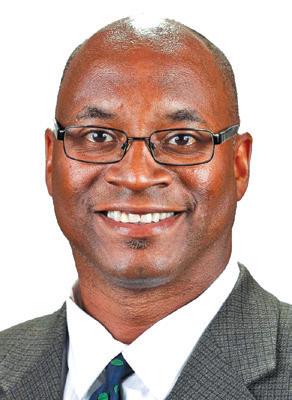 By Robert Smith, Jr.
By Robert Smith, Jr.

You
haven’t lived until you’ve been booed by a crowd of people. But you’ve also never been so humbled until you’ve been cheered by those same voices. As you know, those are just two of the many and varied experiences of a sports official. It’s a position I’ve been holding — at some level — for more than three decades. And let me tell you, those have been exceptional decades. I’ve had the chance to travel across the United States, interact with young elite athletes, meet famous coaches, and remain physically active at an age when many of my friends are undergoing hip, knee and other joint replacements. Officiating has, quite literally, changed my life for the better. But even as I enjoy the perks of officiating, I’m always aware that I must adhere to a list of very high expectations.
Not too long ago, NASO surveyed thousands of officials at multiple levels, asking about their concerns. We learned that the number one concern was sportsmanship — that ability and willingness to display good and fair behavior even when things aren’t going your way. Too often, this isn’t happening and the frustration is aimed at the officials. I’d like to have fans recognize and understand that officials, while human, are extremely well-trained and must live up



to exceptional expectations even before we blow our whistle. This is something our leadership in NASO and officiating organizations (local, state and regional) can help us accomplish by talking about what we do — and what it took to get here. Because the fact is that officials go through very stringent checks, reviews and requirements before stepping onto the floor/field.
Remember back in March, when everyone had their NCAA brackets filled out, engaging in a little office competition around March Madness? Guess what? College and professional officials cannot join in the game. In fact, they are not allowed to gamble on sports of any kind in any way, and also must undergo a regular background check to be sure they have not engaged in criminal or unsavory behavior.
Another requirement: Good credit. I’m willing to bet that, unless they are best friends with a college or professional official, many individuals have no idea we must agree to an annual credit check.
One of the most important requirements of officials is that of excellent physical condition. Prior to the start of the season, officials must be determined to be physically prepared. This is, of course, to be sure that we can keep up with athletes on the court/field. This requirement also has helped me and others remain in great shape both physically and emotionally. I have been relatively healthy since high school. Both my physician and I attribute this to the fact that for most of the





year, I’m running up and down a football field or a basketball court, and I seek to maintain my physical condition during the offseason.
Finally, we learn quickly that this profession requires us to behave in a respectful and courteous manner with players, coaches and administrators. Every official has been booed, challenged and cursed at by … well, just about everyone involved with the game. But by seeking to be careful, fair and knowledgeable in all calls, the negative behavior and language simply doesn’t deter us from maintaining the high level of integrity necessary to officiate fairly.
Doing what is correct on the field/court carries over into an individual’s personal life as a whole. When you do the right thing, you can stand proudly by your decisions and that brings an amazing peace of mind.
The people behind the stripes have high integrity, and we care about getting it right. What’s behind officiating is a host of men and women who value not only themselves but the people who play on the field/court/mat/stadium.
Ultimately, we learn to live our best lives so that we can challenge ourselves to be the best officials. And, at the end of the day, we must challenge the media, the fans and everyone else, to understand just how hard we work to gain their respect. We work hard to get it right and to be the best. We work that hard because we want the respect of those playing and watching the game. And we deserve it.
8 IT’S OFFICIAL - june 2024 NATIONAL ASSOCIATION
















sports section food for thought
Bythe Referee editors
We all know a good diet is needed to stay in shape and perform at our peak. Some of the skills we apply to managing a game or match can be used to help us manage our diet.
Here are five C’s of game management — consistency, courage, cooperation, communication and confidence — that can be applied to your diet with favorable results.
1. Consistency. When officials are consistent, the game goes smoother. The teams are more relaxed and they know what to expect because the pattern of the official is the same every time he or she steps onto the court or field. As far as nutrition, a healthy diet is training ourselves daily to be consistent with our food intake. To stay on track, it’s important to stick with a plan or routine we can tolerate and enjoy. Consistency in a game or diet is not temporary. It is a permanent practice and lifestyle change. Being open-minded to accepting all types of food, not skipping meals, eating portion amounts based on your level of fitness and drinking plenty of water are all helpful tips to stay consistent in managing your diet.
2. Courage. It comes into play on the field or the court when an official has to make

tough calls. Character, integrity and ethics are displayed in those situations. Officials who have courage are honest, content with themselves and not afraid to take chances. Having the courage to change or improve your diet is not easy. It takes hard work, desire, determination and a willingness to go out of your comfort zone into trying something new, and overcoming any obstacles by not giving up.
3. Cooperation. Part of game
with excellent communication skills. They know how to keep the game under control by using communication to prevent problems from occurring and resolving issues if they arise. When it comes to a consistent diet, it takes time to plan meals, shop, prep, cook and clean. Knowing how to communicate, being flexible and acting as a team with family and friends can better serve us.
5. Confidence. Officials that manage the game well
As far as nutrition, a healthy diet is training ourselves daily to be consistent with our food intake.
management is being patient. In most situations, officials observe the entire play from start to finish before making a judgment decision. When it comes to losing weight, most people want fast results. But it takes cooperation, patience and time to burn off excess pounds. If weight is lost quickly it is unsafe and will come back on fast. Also, the weight loss will be water or muscle as opposed to fat. Losing muscle decreases the metabolism. Fat loss is best achieved when weight is lost slowly. Strive for a weight loss of no more than one to two pounds per week.
4. Communication. Great game managers are officials
are confident and have a take-charge attitude. Their leadership is looked upon for knowledge and assistance. They are credible, valued and respected.
Officials who are superior in managing the game are consistent, have courage, cooperate with patience and know how to effectively communicate. It is a very similar connection with a diet. Developing a consistent routine on food intake, having the courage to change, cooperating by not getting discouraged with the results and communicating to plan accordingly combine to help you take charge and referee your diet.
OF SPORTS OFFICIALS NATIONAL ASSOCIATION OF SPORTS OFFICIALS
9

IT’S OFFICIAL - june 2024


BASEBALL
FOLLOW THE LEADER



Editor’s note: The following is an excerpt of Plays You Gotta Get Right. It is available at store. referee.com. The price for NASO members is $10 36
It seems so simple: The players know their place in the batting order. The player who follows the teammate who batted last the previous inning is likely to lead off the next inning. But substitutions, ejections, injuries and plain old “brain cramps” sometimes cause confusion and lead to players batting out of order. It’s as old as the game itself.
Despite its seeming age, the rule (covered under NFHS 7-1-1 and 7-1-2) scares umpires like a young upstart who has come to take their spot on the field.
In NFHS, the lineup card, presented by either the head coach or captain at the pregame meeting, shall include the name, shirt number, position and batting order of each starting player. The name and shirt number of each eligible substitute shall also be listed.
Under NFHS rules (1-12), there is no penalty if a substitute is not listed, even though it is required. It is meant to speed up substitutions, not be a punitive rule.
Each player of the team at bat shall become the batter and shall take his position within a batter’s box, on either side of home plate, in the order in which the name appears on the lineup card as delivered to the umpire prior to the game. The order shall be followed during the entire game except that an entering substitute takes the replaced player’s place in the batting order.





In NFHS, a designated hitter and the player for whom he is batting are locked into the batting order. No multiple substitutions may be made that will alter the batting rotations.

A batter is in proper order if he follows the player whose name precedes his in the lineup, even though the preceding batter may have batted out of order. An improper batter is considered to be at bat as soon as he is in the batter’s box and the ball is live.
After the first inning, the first batter in each inning shall be the player whose name follows that of the last batter who completed his time at bat in the preceding inning.
If a batting-out-of-order situation involves an illegal substitute, the penalty for an illegal substitute supersedes the penalty for batting out of order (3-1-1).
Of course, a full understanding of the rule also requires knowledge of how the timing of a batting-out-oforder infraction determines the manner in which the umpires proceed.
If the infraction is brought to the umpires’ attention, by either team, while the improper batter is still at bat, the proper batter is brought to the plate and assumes any count.
If the improper batter has become a runner or has been put out, this is the narrow window to appeal for an out. Only the defensive team may initiate an appeal at this point. The batter who was supposed to have batted — the improper batter — is called out. The improper batter, if on base, is removed. If the improper batter was out due to playing action, the out on the proper batter supersedes the out on the improper batter. Any other



runners out during playing action remain out; otherwise runners are returned to previous bases, unless they legally advanced on a steal, balk, wild pitch or passed ball on a preceding play.

After a pitch has been thrown to the next batter or after the offense initiates a play, after an intentional walk or after all the infielders have left the diamond if the half-inning is ending, the improper batter’s at-bat is legitimized. The next batter is whoever follows them in the order, which could result in skipping one or more batters.

SOFTBALL
Job Description?
By Brad Tittrington
In a recent collegiate game, I had a coach innocently between innings ask me whose responsibility it was to move a bat near home plate when a play was being made at the plate. I don’t think I have ever had a coach ask that question in the 30+ years that I have been an umpire, either in a baseball or softball game at any level. But it made for a good conversation piece after the game with my crew.
I told the coach her on-deck batter could move the bat, provided there was enough time to do so and the on-deck batter didn’t interfere with the play. The catcher could also move the bat, but generally it is beneficial for the catcher to leave the bat there as an obstacle for the runner. It is a fine line between sportsmanship and gamesmanship.
The one person whose job
10 NATIONAL ASSOCIATION





it isn’t to move the bat is the umpire. There has been a lot of debate over the years about this topic. Some umpires believe they should move the bat out of the way, by either picking it up and tossing it to the side or by kicking it out of the way.

However, there are several things that can go wrong by doing so and it is advisable, at all levels, to not move the bat. For one, if an umpire bends down to pick up the bat, you momentarily have to take your eyes off the ball and the players. Nothing good can come of this. For another, if you kick the bat or toss the bat, you are potentially putting yourself or other players at risk. On-deck batters, catchers, the pitcher backing up the play, runners, etc., could all accidentally end up getting hit by said bat or eventually trip over it either in the act of moving it or during ensuing play. While it may seem like you are trying to help, you could end up causing more harm than good. Especially in today’s litigious society, if your actions end up causing an injury, you are now potentially going to end up being in a courtroom defending yourself since you “caused” a player to get hurt. And while insurance is there to cover you in such cases, it is best to not have to use it in situations that could easily be avoided.
Another possibility is you end up in the middle of the play as you move to get the bat. Fielders don’t always go where you think they are going to go and neither do runners. The moment you move toward the plate to grab the bat or kick it out of the way, you potentially put yourself in harm’s way. Good luck explaining to a coach why his or her catcher is laying on the ground as you




accidentally knocked her down trying to get the bat out of the way. Or worse yet, good luck explaining to a coach why you were hit by a thrown ball or a sliding runner. There are videos you can find on the internet of such plays where umpires simply had a mental lapse and ended up in the way of a thrown ball or collided with a runner trying to get to the plate. There are also videos showing umpires colliding with catchers. And remember, none of those fall under umpire interference, so you can’t rectify the situation other than to say, “I’m sorry.”




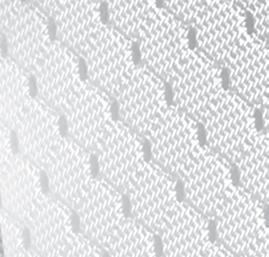
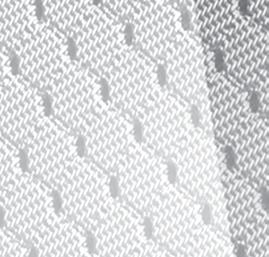


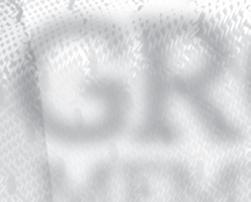


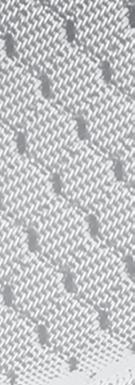






Remember, things happen very quickly on a softball diamond. With 60-foot bases, plays can explode on you in a hurry. While it may be acceptable in baseball to grab the bat, as it is played on 75-foot or 90-foot diamonds — providing a little more time to move equipment — in softball, let the players handle the bats and instead focus on your umpiring duties. As players get bigger, faster and stronger, nothing good can come of you going out of the way to move a bat. You won’t find equipment manager listed anywhere in the rules or in any mechanics manual.
At the end of the day, it is better to be safe than sorry. Let the players handle the equipment near the plate. Keep your eyes and your focus on the players and the ball and avoid potentially becoming an internet star for all the wrong reasons.
Brad Tittrington is an associate editor for Referee. He umpires D-I softball and officiates women’s college and high school basketball, college and high school volleyball and high school football.

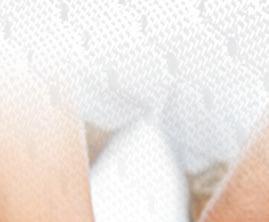



individual membership when your association joins together For more information: Call (800) 733-6100 or go to naso.org/promo/MyGroup
11 OF SPORTS OFFICIALS
GROUP MEMBERSHIP AVAILABLE SAVE UP
On
TO $35



SOCCER


A LOOKBACK AT 2023 NCAA PROTESTS
By Rich Grady
In NCAA soccer, there were 53 formal protests filed during the 2023 season. Two were rejected as invalid by rule as the situation was non-protestable. One was moot because the referee failed to report the incident as violent behavior II. The protests are listed below, along with the final decision in each situation. For each protest, a copy of the video clip and a detailed explanation of the final ruling was posted on RefQuest, where it was available to coaches, administrators and officials.
2023






about how each member of the team will observe situations that warrant an ejection. If an assistant referee or alternate official observes that the referee has identified the wrong person, they should alert the referee immediately so the correction can be made before play resumes. The assistant referees and alternate must focus on the incident and aid the referee in identifying the proper player(s).





video tape, etc. The referee team should work together to ensure the proper person(s) are ejected. One of the duties, and something that must be done, is for the referee to record and report any ejections. The referee must make sure the reason for the ejection is accurate as per the rulebook and the proper person(s) are ejected.

• 21 Fighting Protests — 7 denied, 14 granted
• 15 Violent Behavior II Protests — 2 denied, 13 granted
• 14 Mistaken Identity Protests 4 denied, 10 granted
2022
• Fighting Protests 15 filed, 15 granted
• Violent Behavior II Protests — 8 filed, 3 granted
• Mistaken Identity Protests — 14 filed, 12 granted
For the fighting and violent behavior protests, a successful protest reduced the penalty for the red card from two games to one game. For mistaken identity protests, a successful protest transferred the caution or ejection to the proper individual.
Things to think about as a referee team.
1. Mistaken identity – The officiating team should have a discussion during the pregame
2. Fighting - Officials have improved in the proper identification of fighting. Rule 12.7.4.8.1: “A fight is defined as a deliberate strike or punch or an attempt to strike or punch another player, official, coach or bench personnel in a malicious manner.” Straight red cards for things that do not fit this definition must be a form of violent behavior. In games where video review is used, referees can employ this tool to make sure that the correct decision is reached.
3. Violent b ehaviorReferees must know the difference between violent behavior I and violent behavior II. Violent behavior I is an unwarranted excessive act or use of force when not challenging the ball. It may be on or off the field of play when the ball is in or out of play. For example, a player deliberately moves toward an opponent and slide tackles with the cleats up, which can injure the opponent. Violent behavior II ejections should focus on the words extreme and severe. This penalty should be reserved for actions that clearly have no place on the soccer field and place an individual in danger of injury. The referee must notify the coaches and scorekeeper at the time of the incident. The decision cannot be changed after the game when reviewing
Rich Grady, Deerfield, Ill., is the NCAA soccer secretary-rules editor.
VOLLEYBALL
What don’t you understand?
By the Referee editors
We just want to be understood. It’s human nature, especially when it comes to officiating — we want people to know, understand and accept why we made a call. And usually, we need to rely on our second referees to do the explaining for us. But what if they don’t say the right thing? What if they didn’t see what we saw? What if they don’t know why we made the call? Well, there’s only one chance for us to state our case, and that’s when we get off the stand after the match, right? Wrong.
It’s a no-win situation for referees who attempt to justify, clarify or explain a call to the coach who just lost (or won). Ultimately, they probably know why we made the call, but they still have to fight for their team, even after the fact. That’s their job, right?
In USAV matches, first referees have some postmatch responsibilities with the scoresheet. That can be a dangerous endeavor because you have to finalize the scoresheet and because of the
12 NATIONAL ASSOCIATION
IT’S OFFICIAL - june 2024





temptation it offers to have a conversation. As you walk across the court toward the table, your eyes search for the coach who was questioning you during the match, as if you’re seeking that open door. But opening that door can surely put you in the line of fire. Occasionally a coach may seek you after a match to get an explanation. And that’s a situation to avoid, too.







In high school, the second referee is responsible for signing off at the end. Often in those matches, there is no locker room and first referees will walk across the court to get their gear and change shoes. This can be an awkward situation with coaches still lingering. Be quick, grab your stuff and move to a location away from coaches. Or if it is especially hostile, have your second referee grab your stuff and meet you somewhere else. This can be determined prematch or over headsets if using them.
In the collegiate game, we “toot-n-scoot” at the end of the match. That prevents us from approaching a coach after a controversial call or situation, and likewise doesn’t give them the opportunity to approach us. But that doesn’t mean an inquiring spectator can’t catch you before you get to the locker room. Have you ever had that spectator sitting right behind you during the match, constantly yelling in your ear? And, of course, he or she doesn’t even know the rules. If you could just explain a couple of things so that they’re “educated” spectators, things would be much better, right? Nope, not true. Spectators are the most biased people in the gym — referees can’t win. So how do we override our human nature, our desire to be understood?
First, we have to rely on proper signals, mechanics and officiating procedures to speak for us. When we whistle a fault, what we’ve seen should be clear to everyone. Our signals tell the story. When we don’t make a call that a coach thinks we should have, how many reasons can there be for the no-call? Either we saw the play and ruled it legal, or we were screened from clearly seeing the play, so we couldn’t make a call. That should cover about 99% of the questions. There’s no need to justify anything, and despite coaches questioning a call (and you wanting to answer it), they really do understand that basic reality — you called what you saw. Remember, they still have to fight for their team.




why you had the conversation that led to a more heated debate, a more severe criticism of your work, or an unnecessary conversation with a spectator. Your post-match debrief with your officiating crew is your sounding board. They’re the ones who will understand you.

ASK US
BASKETBALL
Secondly, at the end of the match, emotions can be high. It’s hard to have a reasonable conversation under those circumstances, but our human nature makes us think that if we could just explain the call, everyone will feel better. It just doesn’t happen that way. It’s important that you know that fact so that you aren’t tempted to try to make things “better” with an explanation that may throw gasoline on the fire, despite your best efforts. It’s imperative that you do not seek a coach after the match. It will only hurt you in the long run. And if a coach seeks you, a courteous, “Coach, I appreciate your comments,” is all you need to say. Anything more than that and you are asking for trouble. But what about that coach or spectator who seems to have a friendly, reasonable question? Don’t take the bait. Too often, your words or explanation will be used against you. It’s easier to justify to an assigner why you didn’t answer a question after the match than it is to explain
Foul During Throw-in Play: A1 is called for a traveling violation in team A’s frontcourt. Prior to team B’s throw-in, team B calls a timeout. Following the timeout, both teams have left their bench areas, and each team has five players on the floor, but team B players are huddling and talking to each other when the officials are ready to administer the throw-in. The administering official blows the whistle and verbalizes, “blue ball,” as team B is wearing blue uniforms. No team B players move toward the throw-in spot, so the administering official places the ball on the floor at the spot of the throw-in and begins the throw-in count (NCAAW: a resumption-of-play warning has already been issued). Team B players begin moving toward the throw-in spot, and while moving into position, B1 runs over A2, and the nearest official blows the whistle for a foul against B1. Team A is in the bonus. What kind of foul has occurred, and what is the resumption of play? Ruling: When the official administering the throw-in places the ball on the floor at the spot, the throwin has begun, the ball is live and the ball is at the disposal of team
13 OF SPORTS OFFICIALS

IT’S OFFICIAL - june 2024







B. When B1 fouled A2, it is a personal foul for illegal contact during live ball. Since team B had the ball at its disposal, team B also has team control, and thus the foul is a team-control foul (NFHS, NCAAM) or offensive foul (NCAAW). Team A shall receive a throw-in nearest the spot of the foul as there are no free throws awarded for a teamcontrol foul (NFHS, NCAAM) or offensive foul (NCAAW) (NFHS 4-12-2d, 4-19-7, 6-1-2b, 7-6-2, 10-7; NCAAM 4-11.1.c, 4-15.2.a.2, 6-1.2.b, 7-6.3, 10-1; NCAAW 4-10.1.c, 6-1.2.b, 7-6.3, 10-10.1.a.2).


they enter the confines of the field (NFHS) or when the home team’s lineup is handed to the umpire (NCAA and pro) (NFHS 10-1-2; NCAA 4-4a; pro 4.03e).
Too Late



Play: While on his way back to the dugout after the pregame conference, the home coach realizes he forgot to include his DH. Ruling: It is too late to make a change. Lineups become official after the lineup cards have been exchanged, verified and then accepted by the umpire during the pregame conference (NFHS 1-1-2; NCAA 4-4a; pro 4.03d).
BASEBALL
Windy Day
Play: B1 hits a high fly ball in foul territory near a line delineating dead-ball territory. High winds blow the ball around and F5 enters dead-ball territory with both feet before he leaps, secures the ball in his glove and then lands completely in live-ball territory. Ruling: It is a foul ball and not a valid catch. While the fielder is not required to have a foot touching in live-ball territory at the time of a catch, the fielder must originate from live-ball territory and secure possession before entering dead-ball territory in order to be credited with a legal catch. A fielder may enter the dead-ball area so long as they re-enter live ball territory at the time of the catch (NFHS 2-9-1; NCAA 6-1d1; pro 5.09a1 Cmt.).
Too Soon
Play: As the umpires drive into the parking lot before the game, a scuffle breaks out on the field. Ruling: The umpires should notify the governing authority after the game, but cannot intervene because their jurisdiction does not begin until
FOOTBALL
DefensiveHolding
Play: Third and 20 on team A’s 24 yardline. A1’s forward pass falls to the ground untouched and incomplete at his 48 yardline. Before the pass was released, B2 was flagged for holding eligible A3 at team A’s 32 yardline. The penalty is accepted. Ruling: Under NFHS rules, enforcement is 10 yards from the previous spot and the down is repeated, resulting in third and 10 for team A from its own 34 yardline (9-2-3d Pen.). In NCAA, the enforcement spot is the same, but the penalty includes an automatic first down. It will be team A’s ball, first and 10 from its own 34 yardline (9-3-4 Pen., AR 9-3-4 I).
Forced Touching
Play: K1’s punt is rolling inside team R’s five yardline when R2 is blocked above the waist and from the front by K3 so that R4 touches the ball. Ruling: For scrimmage kicks that have crossed the neutral zone, touching is ignored if it is caused by a player who


pushes or blocks an opponent into the ball. Thus the touching by R4 is ignored. If team K subsequently touches the ball, it is first touching (NFHS) or illegal touching (NCAA) (NFHS 6-2-4, 6-2-5; NCAA 6-3-4, AR 6-3-4 I-V).

Correction

The NFHS ruling for a play in the 3/24 issue was erroneous. In the play, A1 dropped back to pass from his own 20 yardline. B2 was flagged for a horse collar tackle while tackling A1 at team A’s 15 yardline. The 15-yard penalty is enforced from the previous spot and yields first and 10 for team A from its own 35 yardline.
SOFTBALL
Pitcher’s Plate Deflection
Play: R1 is on first base with one out when B3 lines a pitch up the middle. The ball hits the pitcher’s plate, ricochets and hits R1 between first and second. Both F3 and F4 are behind R1 at the time the ball contacts her and had a potential play on the ball. Ruling: In all codes, the ball is dead, R1 is out for interference and B3 is placed on first. Since the ball did not pass an infielder — other than the pitcher — and was untouched before contacting R1, she is guilty of interference (NFHS 8-6-11 Pen.; NCAA 12.17.2.1.1 Eff.; USA Softball 8-7K Eff.; USSSA 8-18N Eff.).
Runner Interference?
Play: R1 is on first with two outs when B4 lines a pitch up the middle. The ball ricochets off F1’s leg and then accidentally hits R1 in the knee as she is running between first and second. R1 could not have avoided being hit by the ball and F4 is directly in line to make a play. Ruling: In all codes, this is
14 NATIONAL ASSOCIATION








not interference — unless judged by the umpire to be intentional — because the ball touched the pitcher. The positioning of F4 is irrelevant in this play. The ball remains live and all runners, including the batter-runner, may advance with liability to be put out (NFHS 8-8-6; NCAA 12.17.2.6.3 Eff.; USA Softball 8-8F; USSSA 8-18N Note 2).
Option Play






Play: R1 is on first with two outs and B4 is at the plate. F1 delivers an illegal pitch, but B4 swings and hits the ball over the fence. B4 had a foot on the plate while contacting the ball.
Ruling: In all codes, the ball is delayed dead for the illegal pitch. In NFHS, USA Softball and USSSA, it is immediately dead when B4 contacts the pitch with a foot contacting the plate. Due to the illegal pitch, the offensive coach has the option of taking the result of the play (an out for contacting a pitch while in contact with the plate) or enforcing the illegal pitch penalty, which is a ball on the batter (NFHS 6-1 Pen. and Exc., 7-4-8; USA Softball 7-6G, 6A-11; USSSA 6-3A and C, 7-14H). In NCAA, it is still a delayed dead ball for an illegally batted ball. The defense then has the option of taking the result of the play or enforcing the illegally batted ball rule, which is no pitch, runners returned to the bases at the time of the pitch and a strike added to the batter’s count. The offense then has the option of taking that result or enforcing the illegal pitch, which is a ball awarded to the batter’s count (10.8 Eff. 1, 11.15.1 Eff.).
SOCCER
Disappearing Defender
Play: A1 is in the attacking
half of the field with the ball. A2 is one step behind B3 near the touchline. B3 steps off the field and A1 plays the ball to A2. The assistant referee raises the flag since A2 does not have two or more opponents nearer the goalline than the ball at the time the ball was played. Ruling: This is an incorrect decision. For the purpose of judging offside, B3 is considered on the field at the point where they left (NFHS Situation 11-1-2; NCAA 11.2g; IFAB 11.4).
Proper Advantage







Play: B1 competes with A2 for the ball and commits a careless tackle outside the penalty area which denies the opponent an obvious goal-scoring opportunity (DOGSO). The referee allows play to continue with A3 gaining possession of the ball, taking a shot and scoring a goal. Ruling: This is a proper use of advantage. Since the goal was scored, B1 is not ejected for DOGSO but is cautioned for the careless tackle (NFHS 12-9-1f14; NCAA 12.4.3.5; IFAB 12.3).
Can’t Undo Offside
Play: A1, just beyond the halfway line, makes a long pass to A2 who is aware of their offside position and initially does not move toward the ball. B3 shields the long pass without touching it to let it go for a goal kick. However, the ball slows down and does not leave the field of play. A2 notices this, catches up with the defender and challenges for the ball. Ruling: The referee is to stop play and award an indirect free kick from the point of the offside position. Although initially A2 was in an offside position, the offside infraction occurred when A2 attempted to interfere with play (NFHS 11-1-4a; NCAA 11.2.1.2; IFAB 11.1).
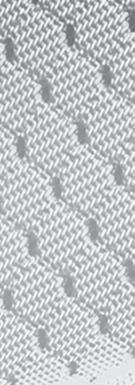









15 OF SPORTS OFFICIALS
Sign up for the Referee.com Review and get more articles, sport information and special offers emailed to you weekly.” WEEKLY - DIRECT TO YOUR INBOX MORE GREAT OFFICIATING CONTENT

IT’S OFFICIAL - june 2024





VOLLEYBALL


Playing at the Net
Play: A1 passes a served ball and the ball travels into the plane of the net near the back-row setter, A2, who does not contact the ball, but whose hands are higher than the top of the net. The ball is next contacted by B3 who is a frontrow blocker. The ball lands out of bounds on team A’s side. The first referee blows the whistle and awards a point/loss of rally to team B and signals a backrow block on team A. Ruling: Incorrect ruling in all codes. The ball was never contacted by the back-row setter of team A, which is required on this play in order to have a fault. Team A’s setter can jump and have his or her hands above the height of net. For a back-row block or attack to have taken




place, the ball would have had to contact a body part of A2 while the ball was completely above the height of the net (NFHS 9-5-5; NCAA 14.6.1 Note, 14.6.1.1; USAV 14.6.2).

Protests and Challenges
Play: Team A completes a legal attack of a ball on an overpass by team B’s setter. The libero for team B attempts to avoid the ball as it whizzes by. The ball lands out of bounds. The line judge indicates the ball lands inbounds. The first referee agrees and awards a point/loss of rally to team A. The head coach of team B disagrees and would like to have the call reviewed using video replay. The second referee obliges the coach’s request. Ruling: Incorrect in NFHS (11-3-2) and USAV (23.2.1), as these rules do not provide



for video review. The only way the line judge’s call can be overturned is if the first referee overrules the line judge. Correct in NCAA. The head coach may challenge if a ball landed in or out, provided he or she has not used all allowable challenges (18.1.4.1, 18.1.5.1).

Equipment and Accessories
Play: The libero for team A is wearing a knee brace, which is unaltered from the manufacturer’s original design/production and does not present a hazard. The first referee allows the libero to play without any additional padding required. Ruling: Correct. Unaltered knee braces are not required to be padded if they do not pose a safety threat (NFHS 4-1-3; NCAA 7.2.4.1; USAV 4.5.1).
The National Association of Sports Officials (NASO) is a nonprofit, educational association providing services and benefits for sports officials. It is run by officials, for officials. If you know a good candidate for membership, please send us his or her name and address. We will forward an invitation to join. For more information contact 262-632-5448 or naso.org/membership.
Your Company Can Help Improve the Quality of Officiating
NASO EDUCATION PARTNER PROGRAM MEMBERS:
Alabama High School Athletic Association
American Specialty Insurance & Risk Services Inc.
ArbiterSports
Arizona Interscholastic Association
Atlantic Coast Conference
Big 12 Conference
Big East Conference
Big Sky Conference
Big Ten Conference
Big West Conference
California Basketball Officials Association
California Interscholastic Federation
CIF-Southern Section
Canadian Football League
Capelli Sport
Chief Zebra Enterprises
Cliff Keen Athletic
College Football Officiating LLC
Collegiate Officiating Consortium
Colorado High School Activities Association
Court Club Elite
D-II - Collegiate Commissioners Association
DVSport Software Inc.
Eagle Tax Res
Fox 40 International
Fox40Shop.com
Gamekeepers
Georgia Athletic Officials Association
Georgia High School Association
Gulf Coast Conference
Honig’s
Hudl
IAABO Inc.
Illinois High School Association
Indiana High School Athletic Association
Iowa High School Athletic Association
Kansas State High School Activities Association
Kentucky High School Athletic Association
Louisiana High School Athletic Association
Louisiana High School Officials Association
Major League Baseball
MIBT Media
Michigan High School Athletic Association
Mid-American Conference
Minnesota State High School League
Missouri State High School Activities Association
Missouri Valley Football Conference
National Association of Intercollegiate Athletics
NBA
NCAA
Nevada Interscholastic Activities Association
New Mexico Officials Association
N.Y. State Public High School Athletic Association
NFHS
NFL Foundation
NFL Officiating Department
NFL Referees Association
NHL
NHL Officials Association
Officiating Collective
Ohio High School Athletic Association
Oklahoma Secondary School Activities Association
Oregon Athletic Officials Association
Oregon School Activities Association
Pac-12 Conference
Pac-12 Football Officials Association
Professional Association of Volleyball Officials
Professional Referee Organization
Purchase Officials Supplies
QwikRef Inc.
Referee Enterprises Inc.
RefReps
Reveal Media
South Dakota High School Activities Association
Southern California Intercollegiate Athletic Conference
Southeastern Conference
Sports Officials Care
Sun Belt Conference
Texas Association of Sports Officials
Texas High School Basketball Officials Association
U.S. Center for Safe Sport
Ultimate Fighting Championship
Ump-attire.com
UMPS CARE Charities
United States Polo Association
United States Tennis Association
University Interscholastic League - Texas
USA Cheer/STUNT the Sport
USA Hockey
USA Softball
USA Volleyball
US Youth Soccer
Vokkero by Adeunis
Washington Interscholastic Activities Association
Washington Officials Association
West Coast Conference
W.Va. Secondary Schools Activities Commission
Wisconsin Interscholastic Athletic Association
16
Become an NASO
Today!
Education Partner









































































































































 BY DAN RONAN
BY DAN RONAN

















 By Jon Bible
By Jon Bible















































 By Suzanne Dodd
By Suzanne Dodd





































































































































































 By Brad Tittrington
By Brad Tittrington















































 By John Van de Vaarst
By John Van de Vaarst































































































































































 By Robert Smith, Jr.
By Robert Smith, Jr.



































